Here’s your daily travel guide to the best adventures and experiences in the Golden State. Each of these essential California adventures has been tried and tested by a Travel section staffer or contributor.
Tell us what’s on your California bucket list. Email travel@latimes.com and put California Bucket List in the subject line.
- Share via
Get tricked at the Magic Castle in Hollywood
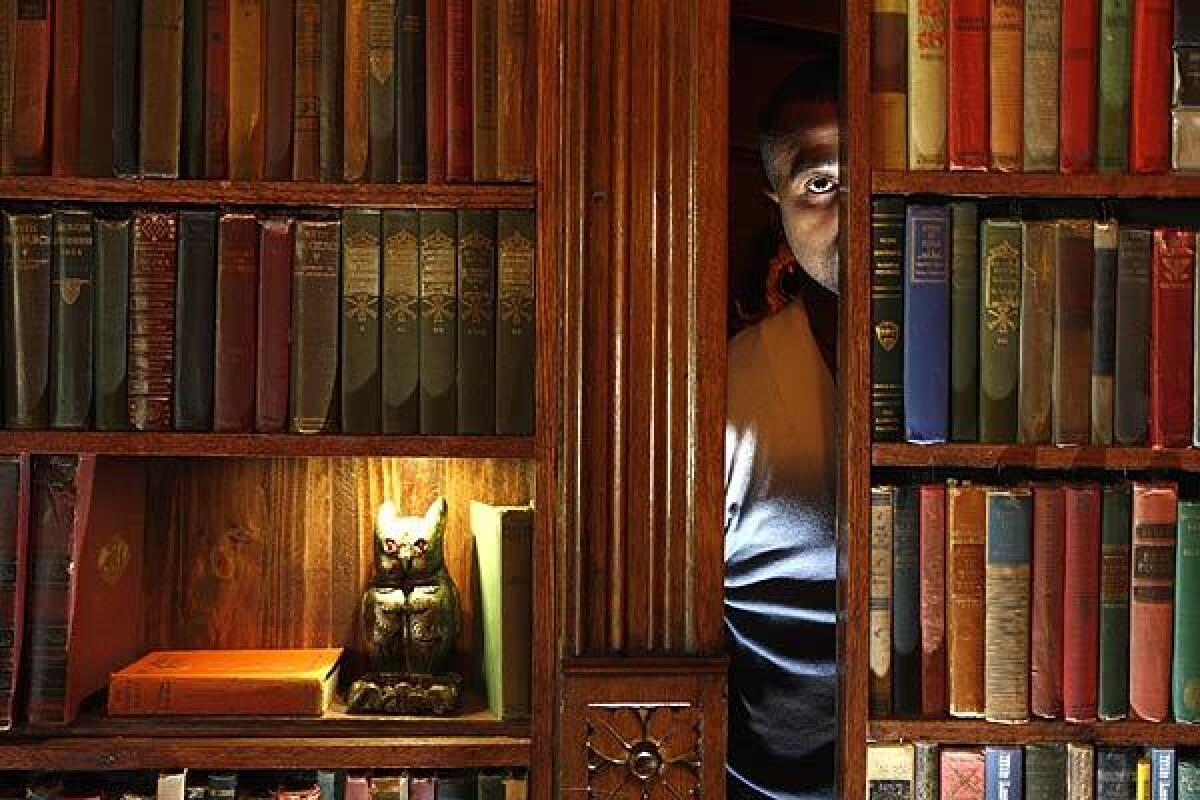
Why: The Magic Castle is the worst kept secret in Hollywood -- a private club in a tricked-out house that’s devoted to magic. And if you really want to get in, it’s not that hard.
What: The castle, clubhouse of the Academy of Magical Arts, was built as a private home in 1908. But by the time it opened as a magic haven in 1963, it had undergone a thorough transformation to make it fit for tricks and performances. Since then, it has survived waxing and waning popularity, not to mention a fire in 2011. (The flames flare on the night of Halloween.) Roam room to room and you encounter all manner of deceptions and marvels. Card tricks. Seances. Sleight of hand. Secret passages. And a fancy dinner.
In theory, to attend you must be invited or accompanied by a member of the Academy of Magical Arts. In practice, there are at least two pretty easy ways in. It’s not so hard (though the admission charge and dinner and drinks usually add up to a pricey night). If you spend a night at the adjacent Magic Castle Hotel & Suites, you’re entitled to go to the club. Or you can email one of the magicians soon to appear and ask for an invite. (More ideas here.)
By the way, they like you to dress fancy (and leave children home, unless you’re headed to a weekend brunch). Coat and tie are required for men.
Where: 7001 Franklin Ave., Los Angeles, 8 miles northwest of downtown L.A.
How much: Admission is $20-$30 per adult. Dinner main dishes $38-$47. Drinks. Hotel night.
Info: Magic Castle
- Share via
See the light at James Turrell’s Skyspace in Claremont
Why: This awe-inspiring public art installation brings new beauty to the light of dawn and dusk.
What: “Dividing the Light” (2007), one of several dozen Skyspaces worldwide by artist James Turrell, is an elevated metal frame perched above an outdoor courtyard. A mesmerizing light show begins at dawn and dusk when the frame is illuminated with colored light, enhancing the sky’s own changing hues.
The Skyspace is a part of the Pomona College Museum of Art. For Turrell, an L.A. native and alumnus of Pomona College (’65) and Claremont Graduate University (’73), this campus installation is a homecoming of sorts, and the only public Skyspace in Southern California.
Turrell is an avid pilot and considers the sky his studio, material and canvas, and his Pomona College training in perceptual psychology informs his play of light, space, and human perception.
Skyspace programs begin one hour before sunrise and 10 minutes before sunset. The evening program lasts about 40 minutes. Check a listing of current exhibitions and “Art After Hours” days that may make a Skyspace and museum twofer possible.
Where: The Draper Courtyard (between the Lincoln and Edmunds buildings) at 600 N. College Way on the Pomona College campus in Claremont, 34 miles northeast of downtown L.A.
How much: Free
Info: James Turrell Skyspace
- Share via
Pedal L.A.’s Echo Park Lake, munch a fancy snack and daydream of Sister Aimee and the spiritualists
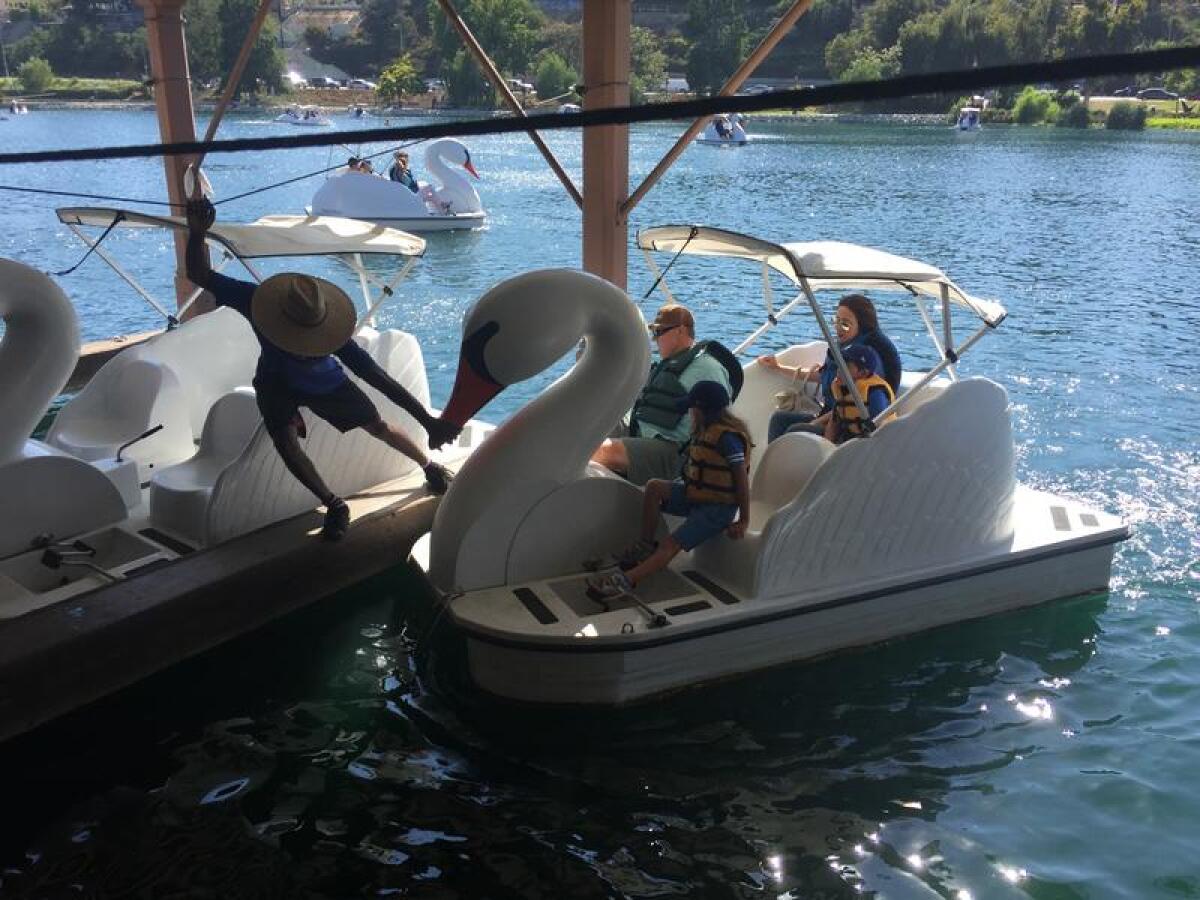
Why: The hotter it gets, the more sense these pedal vessels make.
What: The artificial lake in Echo Park goes back to at least 1870. The boathouse and pedal boat operation go back decades. And the place has been dramatically upgraded in the last few years, beginning with a draining and cleaning in 2011-2013. The paddle boats operated by Wheel Fun Rentals are now shaped like swans and the larger ones hold up to five people or 1,400 pounds. (These boats look a lot like the historic swan boats in Boston Common, which also go back to the 1870s.)
Head out for an hour of pedaling and drifting, not necessarily in that order, and imagine the early 20th century days when Aimee Semple McPherson was preaching in the Angelus Temple next door and these hills were crawling with communists, socialists and spiritualists.
The boat rentals are open daily all year from 9 a.m. until sunset. On the hottest days, try edging right up to the edge of the fountain in the middle of the lake – you’ll be coated with mist or (if there’s a breeze) pelted by diagonal rain. The last rentals go out an hour before sunset. (One night in July, a young man broke in and took a paddle boat for a forbidden ride. It did not end well.)
The eatery, Beacon, opened in January 2017 with a menu that’s longer, more intriguing and a little pricier than the average public park snack shack. The communists don’t live here anymore.
Bonus option: Fishing is allowed, with a license.
Where: 751 Echo Park Ave., 2 miles northwest of downtown L.A.
How much: The swan boats rent for hourly rates of $11 per adult, $6 per minor. Everybody gets a life jacket. A sampling from the Beacon menu: kale and avocado burritos ($7), a crab and gouda sandwich ($13), salmon toast ($10), Beacon Burger ($15), lemonade ($3). Beacon is open 8 a.m. to 5 p.m.
Info: Wheel Fun Rentals, Beacon
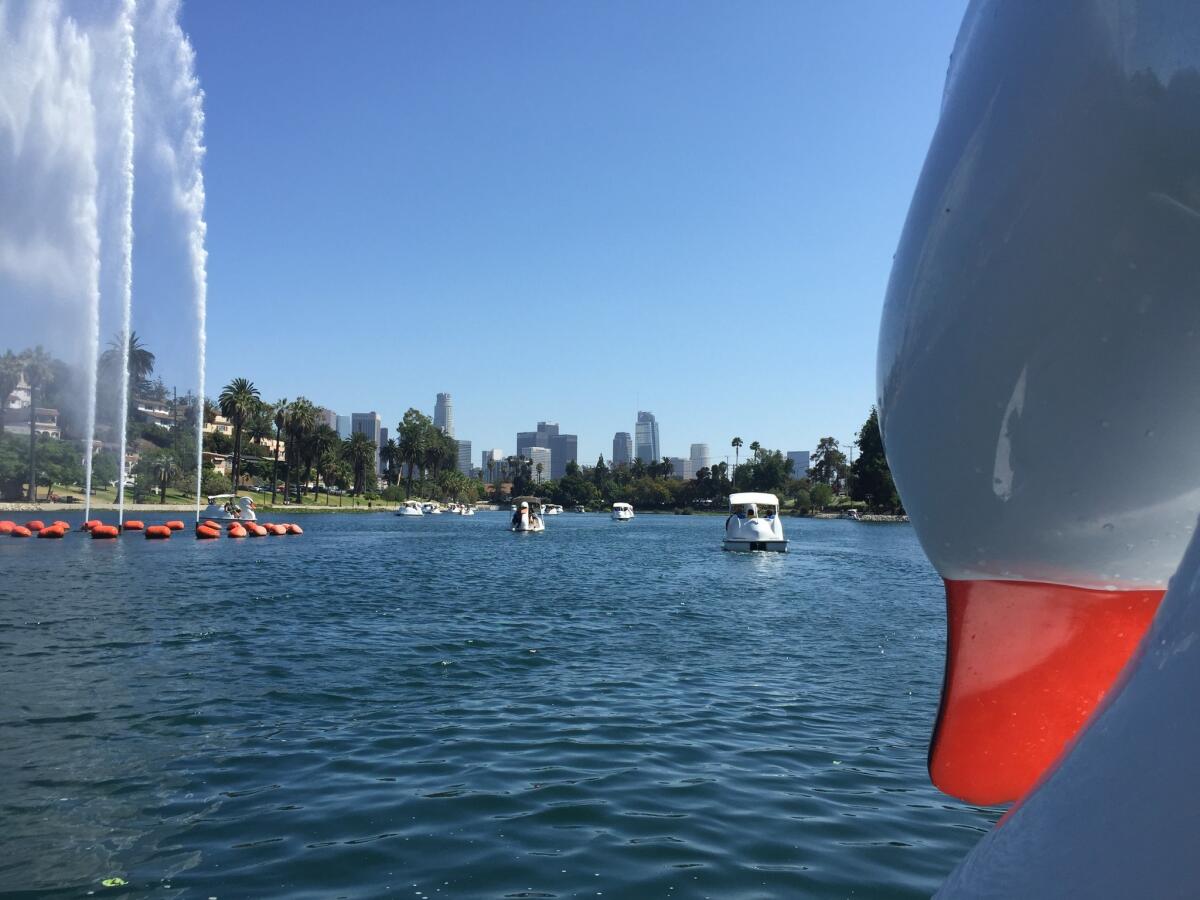
- Share via
See the Giants, glimpse the bay and duck the gulls at San Francisco’s AT&T Park
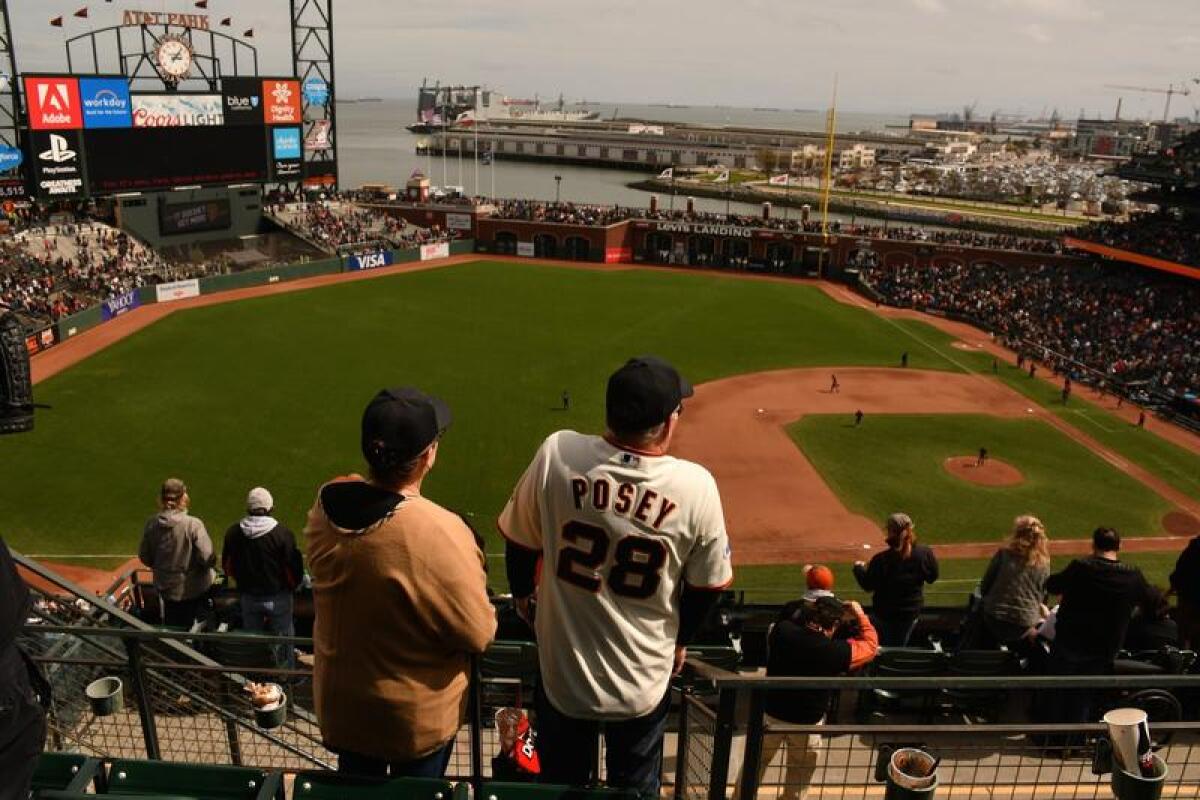
Why: Whether you’re for the Giants or against them, you can root for a home run into the bay here — something you won’t see at any other major league baseball stadium. In fact, you can see bits of San Francisco Bay — distant wharves, cargo ships, maybe a few kayaks in McCovey Cove — from many of the 41,915 seats in AT&T Park. And in a city that’s not always easy for families, this park is full of kid-friendly features.
What: The Giants have been based in San Francisco since 1958, but they only started winning championships here after this ballpark opened in 2000. (Beyond center field you’ll see banners celebrating the team’s World Series victories in 2010, 2012 and 2014, and a few more from the earlier New York years.)
Builders worked hard to reduce the winds that made the old Candlestick Park a nightmare for anyone fielding a fly ball — and largely succeeded. In fact, experts often rank this park first or second among the most pleasant in the major leagues.
But there’s no banishing the gulls.
At the end of every game, thousands of the scavenging creatures come swooping in to feast on leavings in the bleachers. Ushers try to fend them off, but the situation is basically “Field of Dreams” meets Alfred Hitchcock. Hang around for a few minutes to catch the spectacle.
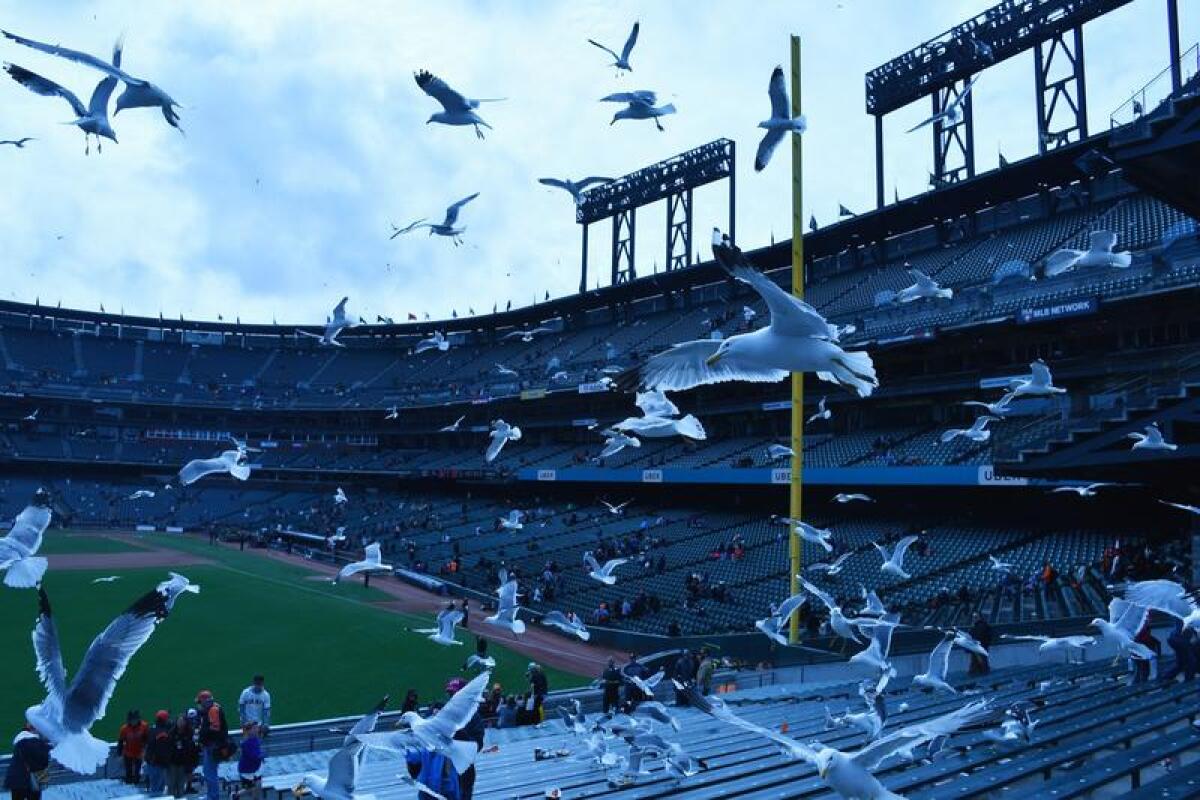
Where: 24 Willie Mays Plaza, San Francisco, 382 miles northwest of downtown L.A.
How much: Most tickets $9-$282. Single-game tickets here.
- Share via
Fly, roll, float and romp in a Disney’s ever-evolving California Adventure
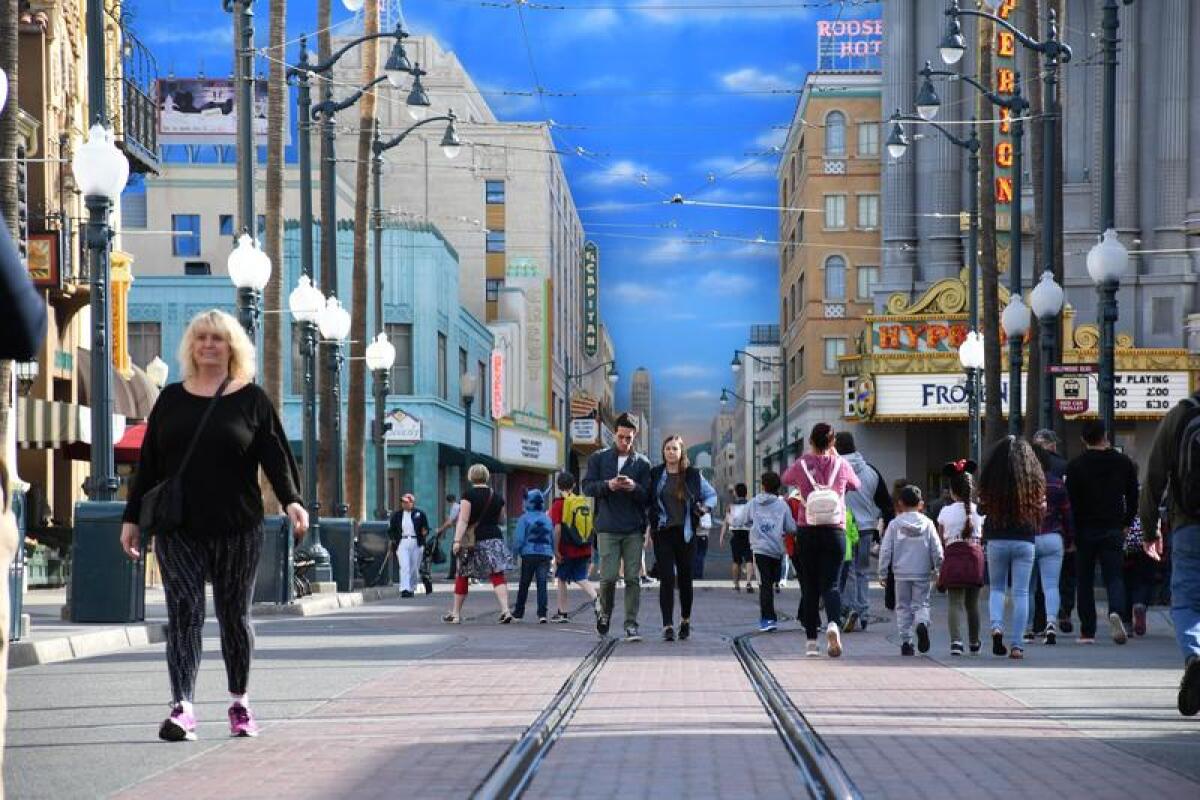
Why: If somebody asked you to compress the best of California into 72 acres, make it abundantly kid-friendly and persuade thousands of people to spend long hours and big money there, you might crack under the pressure. (Admit it, you’re already uncomfortable.)
That was Disney’s mission with this park. And Disney failed … at first. But since that awkward debut in 2001, when attendance fell far short of expectations, the park people have been steadily changing and fixing this place. Even if you’re skeptical about all things Disney (as some people are), you’ll probably get a kick out of this cartoon version of our state.
What: Most of the park’s rides, restaurants and photo ops are all about idealizing California, including Hollywood Land (who’s ever seen such clean streets and tidy storefronts in the real Hollywood?); Pacific Wharf (a mix of Cannery Row in Monterey and Fisherman’s Wharf in San Francisco); and Grizzly Peak (a nod to Yosemite and the tall trees of Northern California). But other features these days reach far beyond state lines.
When I dropped in a few days ago, the park’s marching bands and mariachis were joined by drummers, dancers and musicians from around Asia, gathered to celebrate Lunar New Year. Rides in A Bug’s Land and Car Land were full of grinning guests, as was the Soarin’ Around the World ride — which replaced Soaring (over California) in 2016 — and the Guardians of the Galaxy-Mission: Breakout! ride — which replaced the Twilight Zone Tower of Terror in 2017. This summer, Paradise Pier is scheduled to become Pixar Pier.
Meanwhile, California Screamin’, Mickey’s Fun Wheel and Grizzly River Run were closed for refurbishment. Check before visiting to see what’s open and what’s not.
Where: Right next to Disneyland and Downtown Disney, California Adventure, 1313 Disneyland Drive in Anaheim, is 26 miles southeast of downtown L.A.
How much: Passes start at $97 (ages 10 and above; before taxes) for a one-day Value Ticket. Standard parking $20.
Info: Disney California Adventure
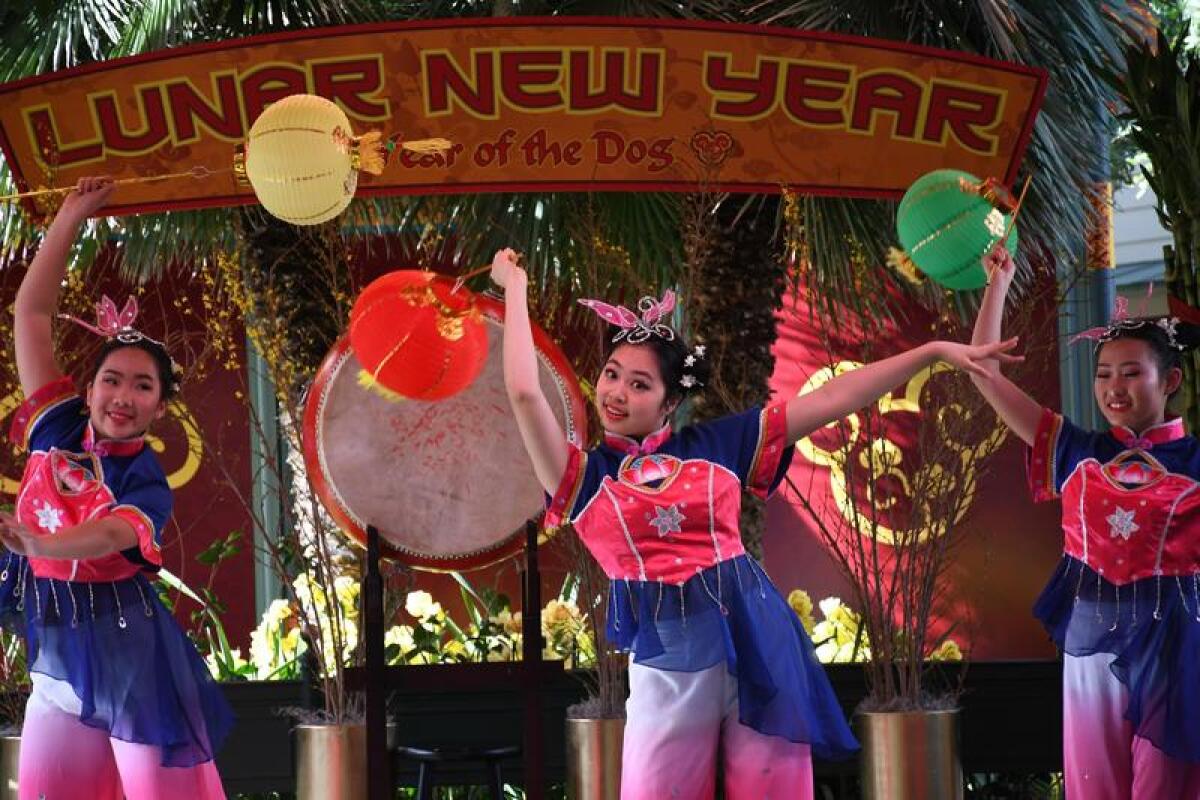
- Share via
Drive the narrow, winding, spectacular back-door route to Big Sur: Nacimiento-Fergusson Road
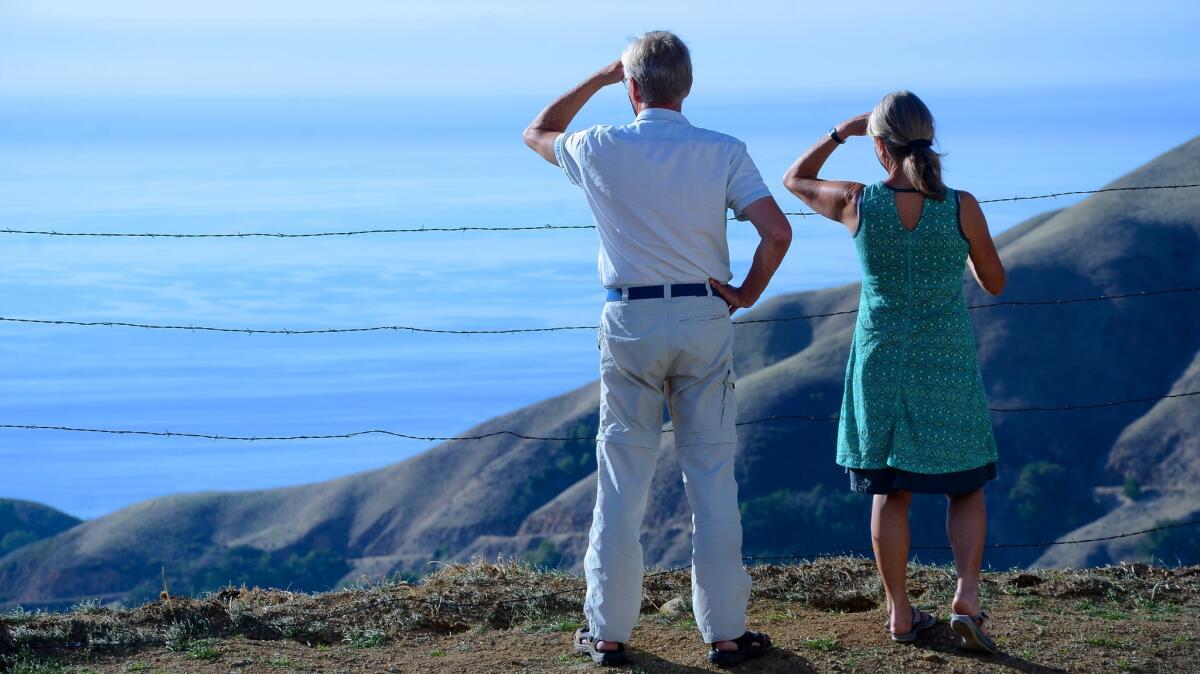
Why: It’ll quicken your pulse, drop your jaw and demand your full attention. There’s no more dramatic passage from Central California’s blond hills to the Big Sur coast than this 24-mile route.
What: Nacimiento-Fergusson Road, a winding, two-lane highway, begins in the Salinas Valley countryside north of Paso Robles, next to the often-overlooked Mission San Antonio de Padua and the Army’s Ft. Hunter-Liggett. From there it creeps through forest and chaparral to the crest of the Santa Lucia Mountains, about 2,800 feet above sea level. Then for 7 miles, via dozens of switchback turns, it wends its way down the western slopes to Big Sur.
It meets Highway 1 at Kirk Creek, about 4 miles south of Lucia.
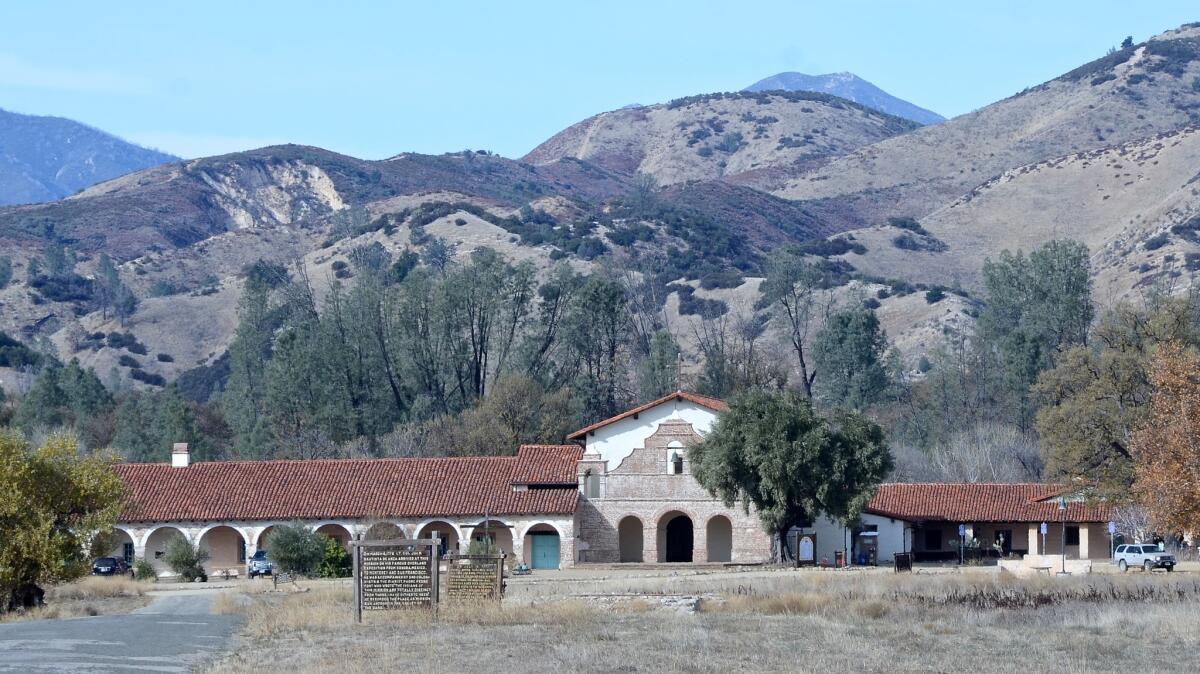
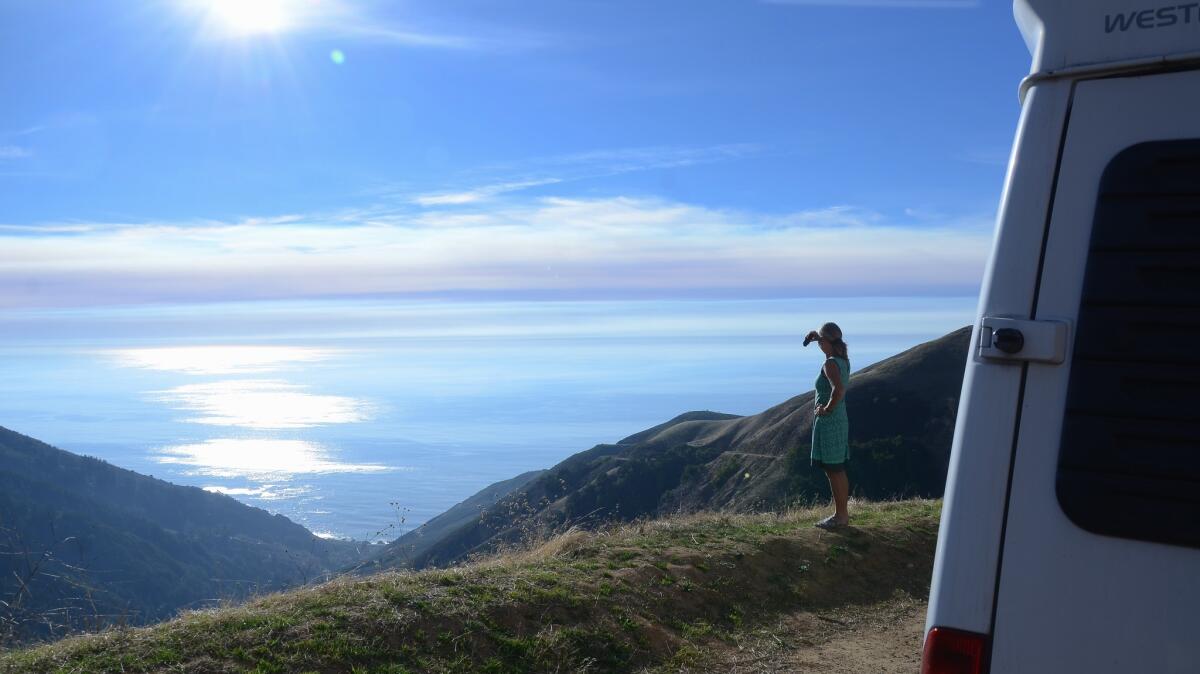
Motorcyclists have loved Nacimiento-Fergusson Road for years. When a mudslide and reconstruction closed Highway 1 at Mud Creek for more than a year in 2017-2018, many more cars found their way to this alternative, as well.
In normal times, with Highway 1 open, you can usually count on thin traffic on Nacimiento-Fergusson.
The road’s westernmost 7 miles, descending via multiple sharp turns to the coast road, are as spectacular as can be — and might start a three-alarm panic attack if you’re afraid of heights. (When a route is featured on www.dangerousroads.org, you know it’s special.)
Given the absence of lights or guard rails or cellphone reception, I’d never try it after dark. On my midday drive in December, I took care to ignore the views until I’d safely pulled into one of the many turnouts along the way. (For a tamer ride with similar scenery, take Highway 46 west from Paso Robles to Cambria.)
Where: To reach the eastern end of Nacimiento-Fergusson Road, exit Highway 101 at Jolon Road, about 23 miles north of Paso Robles. Follow Jolon Road west, then turn left onto Mission Road, continue 4 miles, then turn left onto Nacimiento-Fergusson Road. Because the road passes through the Army base, drivers may need to show license, registration and proof of insurance.
Give the drive at least two hours from the 101 to the 1. You don’t want to be in a hurry here.
How much: Free.
Info: www.dangerousroads.org
- Share via
Recline, rebel or revel in Grand Park, where downtown L.A. celebrates
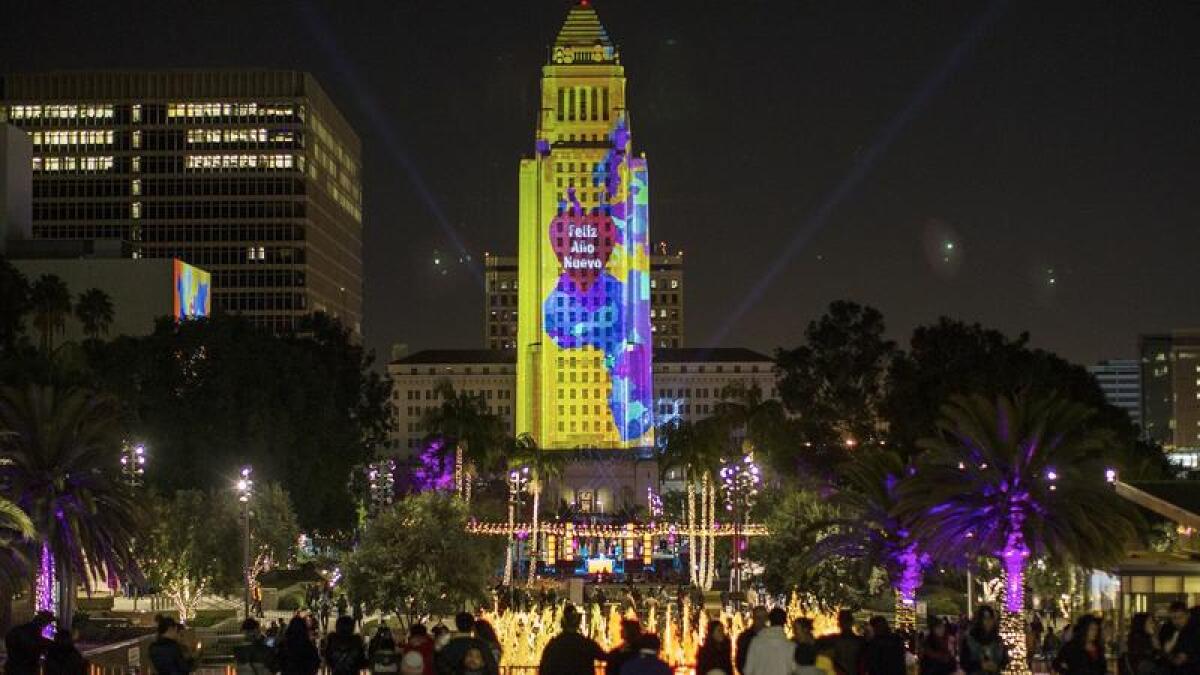
Why: Every real downtown has a park to serve as urban backyard, and Grand Park is more proof that L.A.’s downtown is getting realer by the day.
What: The 12-acre park connects the Music Center at the top of Bunker Hill with City Hall at the bottom. (Yes, you can go to City Hall’s 27th floor observation deck and it’s free). The park isn’t really new -- there’s been open space for decades on these blocks between government buildings. But a dramatic redesign in 2012 put a far better spin on the area, and it doesn’t hurt that neighboring Cathedral of our Lady of the Angels arrived in 2002, Disney Hall in 2003 and the Broad Museum in 2015.
Besides its welcome green expanses and flanking playground and dog-run areas, Grand Park includes a fountain (with splash pad for kids), an adjacent Starbucks, plenty of places to sit and a busy schedule of holiday events and live shows. Picnicking is encouraged. Protesting is permitted. Food trucks come for lunch most Tuesdays, Wednesdays and Thursdays. There’s midday yoga on many Wednesdays and Fridays. In October and November, the park hosts Día de los Muertos altars and art; in November and December, holiday lights.
And on New Year’s Eve -- well, the 2016-17 party (free and alcohol-free) included three stages, DJs, live music, dancing, inflatable art, and light projections. Expect more of the same this time.
Where: between 200 N. Grand Ave. and 227 N. Spring St., at the core of downtown L.A.
How much: Free. It’s easiest to arrive via Metro. But there’s parking nearby in Lot 10 (entrances on Broadway and Hill Street between 1st and Temple streets), priced at $3.50 per 15 minutes up to a $20 maximum per weekday, $10 per day on weekends, evenings and special events.
Info: Grand Park
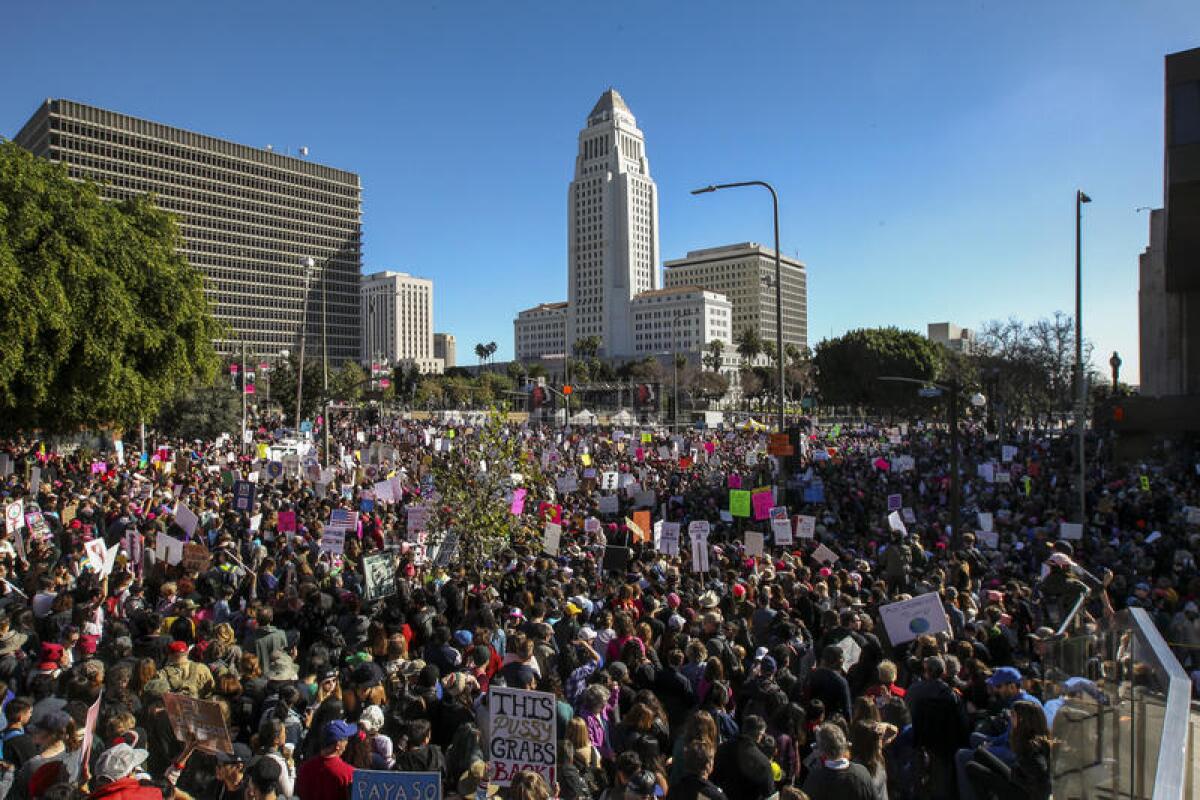
- Share via
Gawk as the waters of McWay Falls plunge from Big Sur to the sea
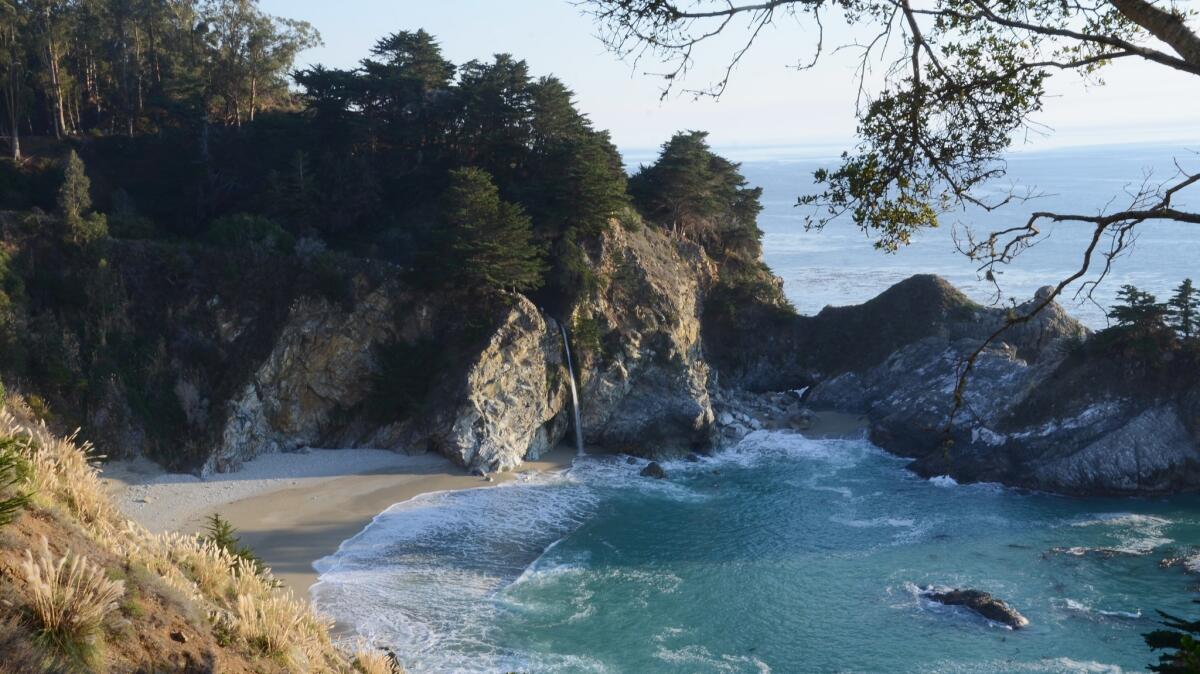
Why: McWay Falls, the splashiest attraction in Julia Pfeiffer Burns State Park, roars down 80 feet from granite and redwoods to a creamy Big Sur beach and implausibly turquoise cove. It’s the cascade that other waterfalls want to be. It’s also a perfectly impossible California destination, because you can’t stand under these falls. There’s no safe way to the beach.
What: The hike is more of a stroll, really. It’s about half a mile, mostly flat. (And the rest of the park remains mostly closed because of mudslides and other damage done by the Soberanes Fire of 2016.) Once you’ve passed through a short tunnel under Highway 1 and made a right turn, you’ll soon be standing on a rocky perch where a house once stood, looking south to the beach and falls.
This is an invitation to chill. For one thing, the trail has ended. Also, like Yosemite Falls — which led off our California Bucket List project on Jan. 1 — McWay Falls is a sort of perpetuity made plain. The water keeps coming, even if it’s in short supply elsewhere. And the cell reception is so rotten that you’ll probably never get an Instagram photo posted from here.
So have a seat. Notice that there’s a great view to the north also. Think about all the writers and composers (beginning with James Joyce, Richard Wagner, Al Green and Teeny Hodges) who have chosen to start and end their works with running water. Or think about nothing.
Where: Julia Pfeiffer Burns State Park, mile marker 35.8 in Big Sur, 37 miles south of Carmel, 286 miles northwest of downtown L.A. Highway 1 is expected to remained closed at Mud Creek (27 miles south of McWay Falls) through September 2018. That means travelers from the south have two options. One is to detour from Highway 101 north of Paso Robles via Jolon Road and the 24-mile, narrow, winding Nacimiento-Fergusson Road (a star on dangerousroads.org). The other choice is driving up to Salinas on the 101, cutting over to Carmel, then coming back south on Highway 1.
How much: $10.
Info: Julia Pfeiffer Burns State Park
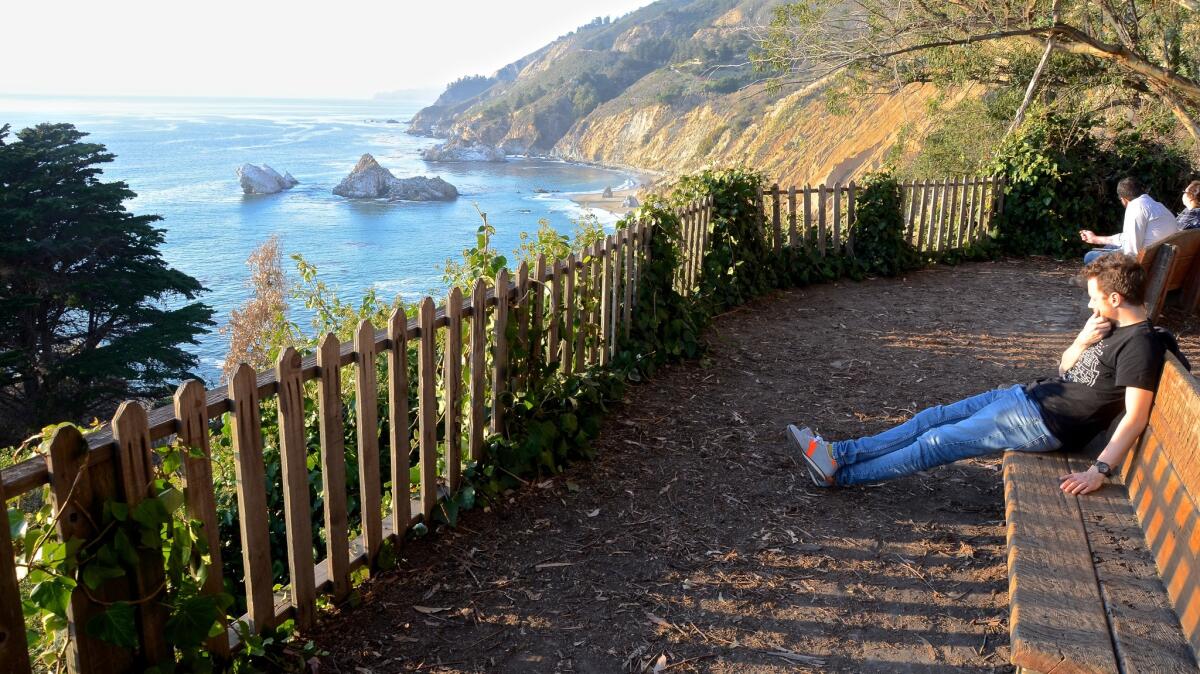
- Share via
Marvel over this San Francisco church inspired by the ideals of the ‘Scandinavian Da Vinci’
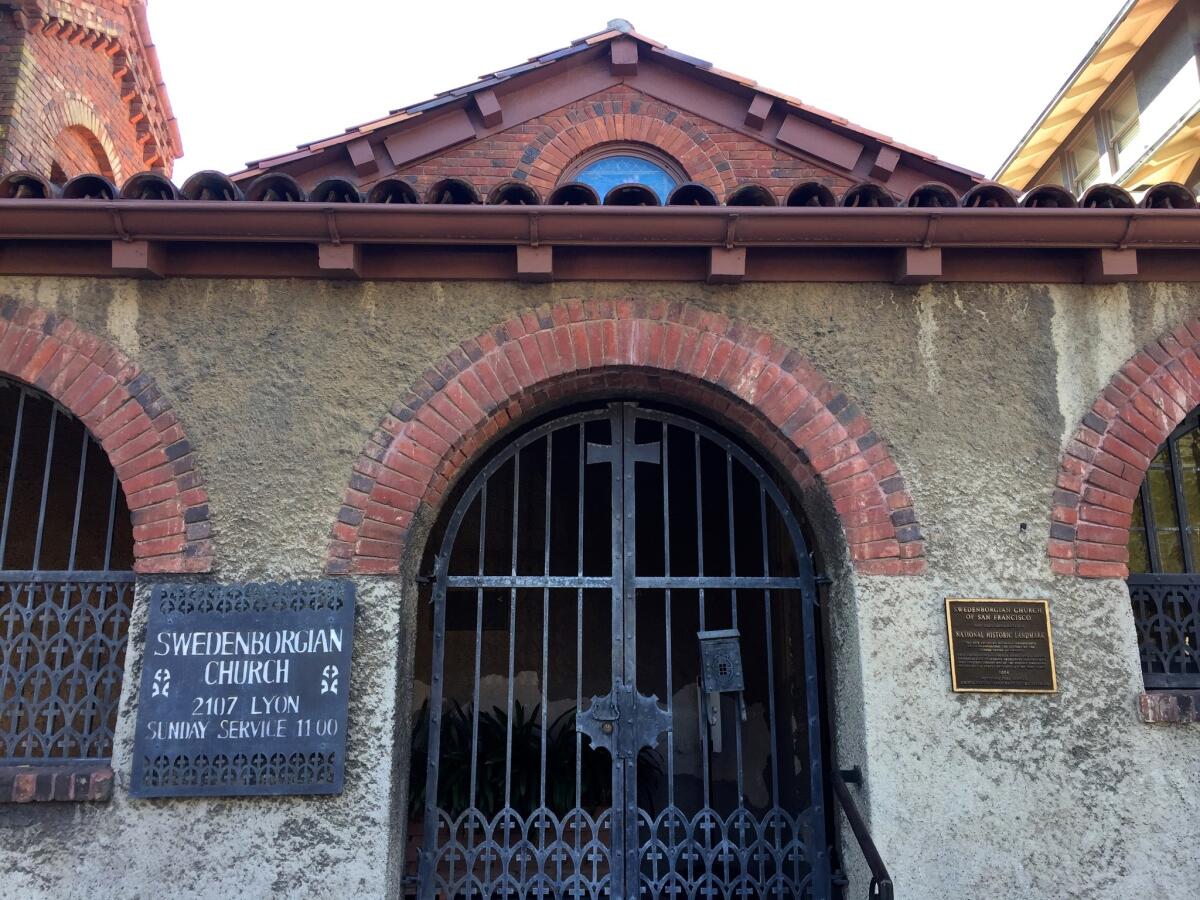
Why: Simplicity and complexity meet in the Swedenborgian Church of San Francisco, and the marriage is a harmonious celebration of architecture and intellect.
What: The 1895 Swedenborgian Church of San Francisco, a national historic landmark in Pacific Heights, is an Arts and Crafts building designed by several architects, including Bernard Maybeck, who created the Palace of Fine Arts at the Panama-Pacific International Exposition in 1915 in San Francisco.
Inside the walls are rustic redwood, found often in Arts and Crafts buildings and consistent with the Swedenborgian appreciation of natural objects, according to the 1969 book “Here Today: San Francisco’s Architectural Heritage.” The chairs are maple, “made by hand, without the use of nails, and their seats were woven of tule rushes from the Sacramento River Delta,” the book says.
In the fireplace in the back, the andirons become small crosses, and the crackling fire (and recently installed radiant heat) make the church a warm and welcoming spot for quiet contemplation, especially on chilly San Francisco days (which is most of them).

It’s also a reminder of the man whose desire to understand Scripture caught fire when he was in his 50s. Emanuel Swedenborg was born Jesper Svedborg in 1688 in Stockholm. In “Swedenborg: An Introduction to His Life and Ideas,” author Gary Lachman describes Swedenborg as the “Scandinavian Da Vinci.” He was a scientist, poet, writer, mystic, statesman, inventor and biblical scholar.
After Swedenborg’s death in 1772 in London, societies took root that were devoted to contemplating his thoughts and works; the Bible is the center of these. These organizations made their way across the pond by the late 1780s, and the New Church (sometimes called New Jerusalem) began to spread in the United States.
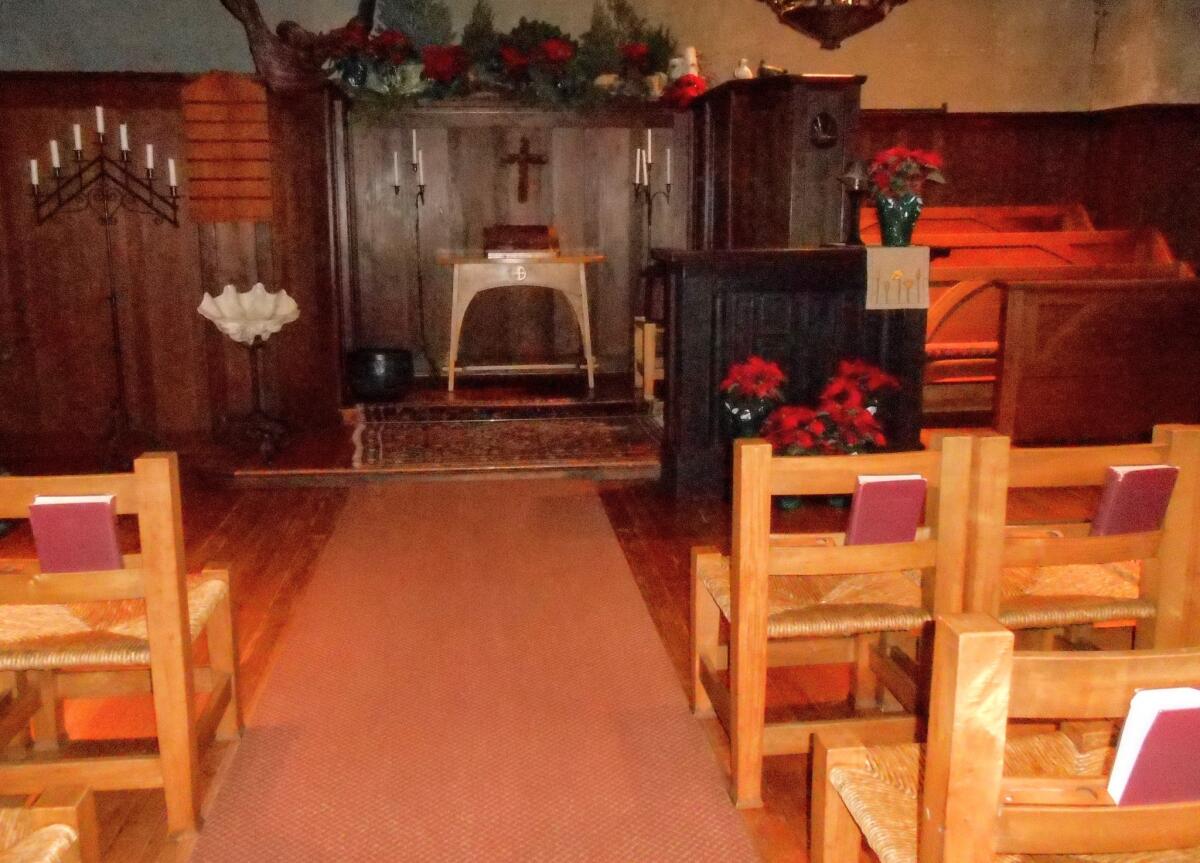
Notable Swedenborgian churches include the Wayfarer’s Chapel in Palos Verdes, designed by Lloyd Wright, son of Frank Lloyd Wright. The younger Wright was said to have taken his architectural inspiration for the chapel, dedicated in 1951, from Northern California’s redwoods.
Where: The Swedenborgian Church of San Francisco, 2107 Lyon St , is about 385 miles northwest of downtown Los Angeles.
Cost: Free. Services are at 11 a.m. Sundays. Office hours are 10 a.m.-6 p.m. Mondays-Fridays; knock to gain entry to the church.
- Share via
Soak away your stress and join Club Mud at a Corona hot springs that embraces everyone
Why: If you’re intimidated by the word “spa,” Glen Ivy is the place for you. It feels accessible, not exclusive, meaning you can sit back and relax.
What: Which is what you want to do. There are 19 pools to try, including the mineral pools, the star attraction in the early days of the late 1800s when you could soak in them for 25 cents.
Today, you start by getting a locker for your street clothes and putting on your swim suit in a well-appointed area that includes changing rooms, showers and big, lighted mirrors where you’ll find hairdryers you’ll want later in the day.
Glen Ivy’s 12 acres include a float pool and a large pool if you want to exercise. But my new favorite features are the hot and cold plunge pools. (Try switching three times between them and stay in each pool for a minimum of 30 seconds. It doesn’t sound like long until you’re in the cold pool.)
The former Café Sole has been replaced by the new Ivy Kitchen, offering light but satisfying meals. (No starvation tactics here.)
And, of course, you can find the usual spa treatments (extra charge but no pressure; appointments advisable) including the underground Grotto, where skin hydration is the goal ($25 upcharge).
Save Club Mud for last. You paint yourself (and your hair) with “mud,” which is California red clay, then go bake in the sun. Before you turn into tandoori chicken, you brush it off and rinse or wash it off in the outdoor showers if you’ve used a tad too much. One note: Beware of bees, which are attracted to the mud. Make sure you you’re wearing your sandals.
The landscaping makes it all very pretty and it feels all very real, which is refreshing if you’re weary of L.A. artifice.
Where: 25000 Glen Ivy Road, Corona; (888) 453-6489, about 60 miles southeast of downtown L.A. (Set aside at least 90 minutes to get there.)
How much: Go on a weekday when it’s less expensive ($49 for the day Mondays-Fridays, averaging 300 guests). Saturdays, Sundays and holidays it’s $68 and about 700 people will be there. Through Feb. 28, hours are 9 a.m.-5 p.m. It’s open an hour later from March through May. Check on summer hours.
Info: Glen Ivy Hot Springs
- Share via
See the small world within this Carlsbad museum of miniature engineering
Why: The Miniature Engineering Craftsmanship Museum in Carlsbad is novel and quirky – and proof that good things come in small packages.
What: The collection includes painstakingly crafted, remarkable miniatures, many with moving parts. There are cars, planes, engines of all sorts, ships, thumb-sized guns and knives, and much more. These are not the plastic model car kits from your childhood; for example, there’s an eye-popping version of a 1932 Duesenberg SJ that has more than 6,000 custom-made parts and is said to have taken more than 10 years to finish. The folks who built these tiny wonders spent decades perfecting their craft.
There are hundreds of works from around the world on display, and docents to describe the intricacies and makers of each. Try to time your visit to coincide with a tour of the machine shop/engine room for a little extra oomph.
Although it’s not geared for the toddler crowd, the museum, a few miles east of Legoland, can be an inspiring second stop for families with kids who like to build things. And while you’re in the neighborhood, you could make it a triple play with a bonus stop at the nearby Museum of Making Music, where visitors have the chance to play musical instruments.
Where: Miniature Engineering Craftsmanship Museum, 3190 Lionshead Ave., Carlsbad; 95 miles south of downtown L.A.
How much: Free. Open 9 a.m. to 4 p.m. Tuesdays-Saturdays. Machine shop/engine room demos are at 10 a.m., noon and 2 p.m.
- Share via
Start the New Year right with a visit to Pasadena’s Rose Parade
Why: Like the Grand Canyon or the northern lights, the majestic Rose Parade needs to be seen in person to be really appreciated. On a bright SoCal morning, the colors, detail and craftsmanship come alive. And throughout December, there are some intriguing pre-parade opportunities for volunteers.
What: One of L.A.’s finest freebies, the Rose Parade steps off at 8 a.m. every New Year’s morning (unless the holiday falls on a Sunday, in which case it is bumped to Monday). We won’t even bother describing it, since like the “Wizard of Oz” or a Super Bowl, everyone has probably seen it on TV.
In person, though, the parade’s splendor, precision and pageantry make an early wake-up call worth it. It’s almost a rite of passage for Southern Californians, some of whom spend the night along the parade route.
The parade has more rules than the Vatican.
- Do not pass the blue “Honor Line” painted on the street.
- No tents, sofas or boxes.
- Unoccupied chairs are not allowed.
- No roping off public areas.
And that’s pretty much just the main stuff. Here’s a full list.
But don’t let them ruin your fun. The parade, after all, is one the best family-friendly events in the area, and they’re just protecting that.
To be a part of it all, join in on the float building in the days and weeks before the parade, when the flowers are being supplied and volunteer help is needed.
On parade day, get there before sunup to be sure of a place along the route.
Tickets in the grandstands are another option.
Be sure to dress in layers, because the temperatures will range from frosty to blistering as the day progresses.
Here’s a little insider’s trick that you won’t believe until you see it. If you wait till the 8 a.m. start time, the crowd will be in place on the route and there is virtually no traffic. Pay the $20 parking fee at a random gas station along Walnut and join the fun. You won’t be in the first row, or maybe even the first 10. But the floats are so high, you’ll be able to see them well. About an hour into the two-hour parade, the crowds will begin to relax and spots open up for even better viewing.
It’s a wonderful experience, hassle-free, and a great way to kick off a New Year.
Where: Pasadena, about 12 miles from downtown Los Angeles.
How much: Free
Info: Rose Parade
- Share via
Meander among 5 million lights at Riverside’s Mission Inn

Why: The Mission Inn, which dates to the 1870s, stands in the middle of Riverside the way Bruce Springsteen stands in the middle of the E Street band. It fills a city block. And since the early 1990s, the hotel has been putting together an ever-more-lavish Festival of Lights. At last count, about 5 million lights.
What: For six weeks at Christmastime, the landmark hotel switches on all those lights and invites visitors to stroll through the property, including a tunnel where faux snow falls. (This year’s festival runs Nov. 24 through Jan. 6.)
The line to walk the property can get very long — and the traffic and parking situation in the blocks around the hotel can seem downright devilish. But most folks are in a good mood, and the festival includes live music, horse-drawn carriages, funnel cakes, Santa Claus photo ops and more. To see more lights and skip the line, book a dinner reservation at the Mission Inn Restaurant (one of several on the property) and you may land at a courtyard table, surrounded by Spanish Revival architecture that’s more ornate (and with more Tuscan influence) than you’ll see at any of California’s 21 actual missions.
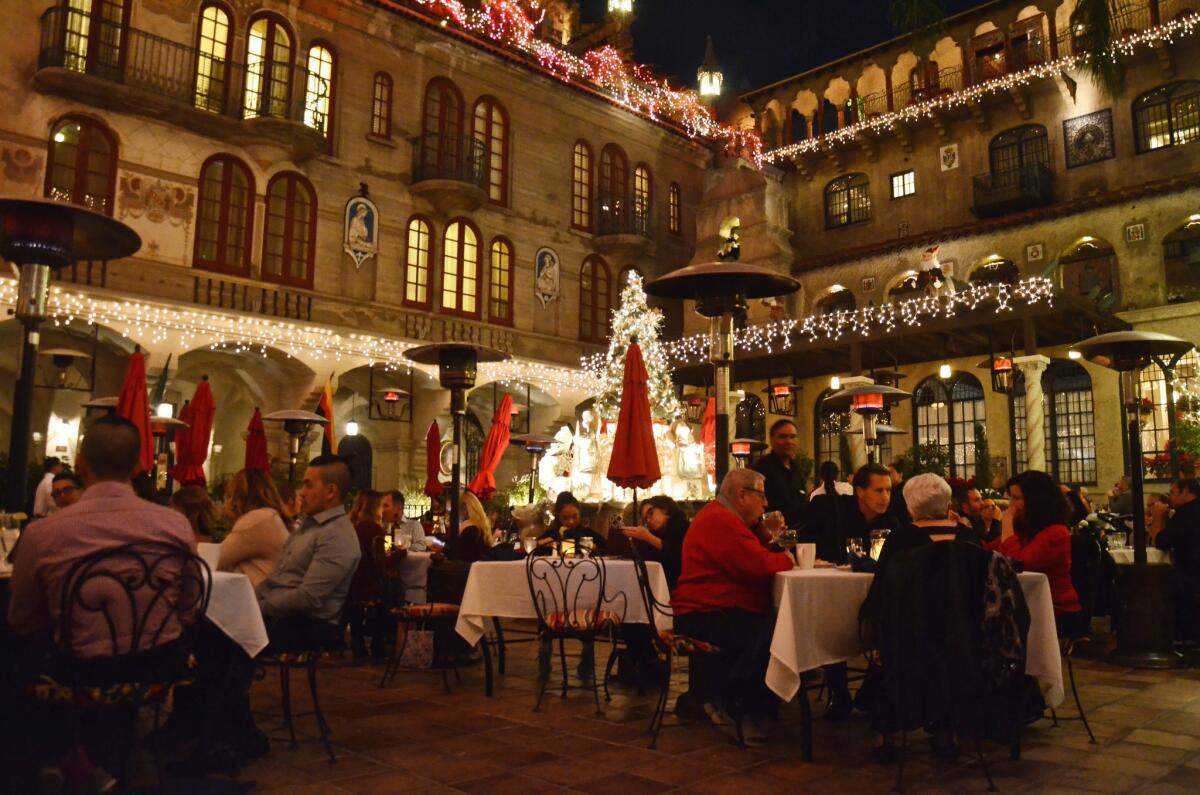
And yes, there’s a reason the decorations seem to be in motion: Besides lights, the halls and walls have also been festooned with about 200 angels, gnomes, polar bears, many of which move, in the same halting, semi-spooky way that Honest Abe moves in Disneyland’s “Great Moments with Mr. Lincoln.” It’s a scene.
And speaking of presidents, be sure to peek at the hotel’s Presidential Lounge and its portrait of Richard Nixon, who was a 27-year-old attorney when he married Pat Ryan at the hotel in 1940. (There’s also a tower, a rotunda, spa, all sorts of artworks and artifacts and a museum next door that traces the inn’s history through expansion, bankruptcy, renovations and resurgence.)
Where: 3649 Mission Ave., Riverside, 55 miles east of downtown L.A.
How much: It’s free to walk the hotel property during the Festival of Lights. Dinner main dishes at the Mission Inn Restaurant run $15-$42. (I can recommend the Italian sausage pasta and the pan-seared salmon.) Rooms for two start as low as $199 in slow months (like January), $329 or more in December.
Info: Mission Inn
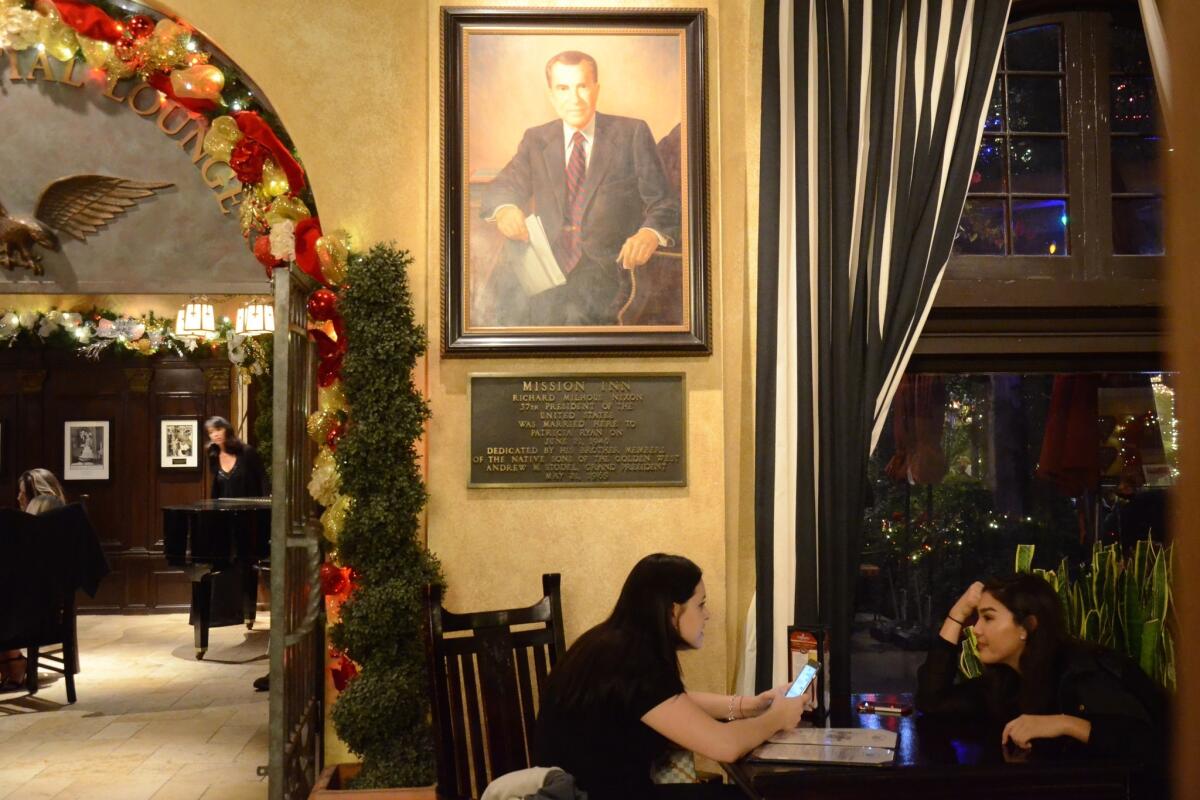

- Share via
Peer into a writer’s head and a valley’s soul in Salinas
Why: John Steinbeck was born in Salinas, Calif., a farming community that lacks the cachet of neighboring Carmel and Monterey. But, then, neither of those towns produced a man who went on to win a Pulitzer, a Nobel and the Presidential Medal of Freedom. To be in in Steinbeck’s hometown is to be reminded that, as fellow author F. Scott Fitzgerald said, “genius is the ability to put into effect what is in your mind.”
What: Steinbeck’s birthplace home and the National Steinbeck Center tell the tale of the man whose “Grapes of Wrath” is often thought to be the Great American Novel. The community of his youth — he was born here in 1902 — was this rich, rural farming area in the Salinas Valley, and his labors alongside migrant workers in the sugar beet fields of nearby Spreckels informed many of his works, including “Of Mice and Men.”
He attended Stanford but never graduated, and he struggled to establish himself, but in 1935, his book “Tortilla Flat” finally put him in the public eye. His subsequent books included “Cannery Row,” “Sea of Cortez” and “East of Eden” and, of course, “Grapes of Wrath,” about which he wrote, “It isn’t the great book I hoped it would be.” The story of the Joads, fleeing the Dust Bowl of Oklahoma and arriving in not-quite-as-billed California, won the Pulitzer in 1940.
You can have lunch at the Steinbeck House, the Queen Anne style home where he grew up, then stroll the two blocks to the National Steinbeck Center, which somehow captures and conveys the challenges of his writing life.
One of the central pieces of the center is Rocinante, the 1960 GMC camper pickup he drove on a 10,000-mile road trip as he scoured the country seeking its essence. The resulting book, “Travels With Charley” (Charley was his poodle), chronicles what Steinbeck saw as a country in sometimes uncomfortable motion.
The center, which turns 20 in 2018, also does not shy away from the controversy that arose from the author’s portrayal of farm workers’ lot in life in “Grapes of Wrath.” His books infuriated growers — some places banned them — and he turned his back on his hometown.
But as if to prove you can go home again, Steinbeck, who died in 1968 in New York City at age 66, is buried in Salinas.
Where: The Steinbeck House is at 132 Central Ave.; lunch is served 11:30 a.m. to 2 p.m. Tuesdays through Saturdays; reservations at (831) 757-5806. The National Steinbeck Center is at 1 Main St., about 305 miles northwest of downtown Los Angeles. The center is open 10 a.m. to 5 p.m. daily, except Thanksgiving, Christmas and New Year’s Day.
How much: $12.95 for adults; $9.95 for seniors, students, military, teachers and Monterey County residents; $6.95 for children 6-17; children 5 and younger admitted free.
- Share via
Treat yourself to Spago in Beverly Hills, and a possible tableside visit from the boss
Why: Because Wolfgang Puck, who likes to work the dining room, might stop by and personally sprinkle lemon juice on your perfectly grilled fish. “There, better?” he asks. Of course it is.
What: A meal at Spago is as L.A. as the Hollywood sign — and a tad tastier. The landmark restaurant is where Puck made great food fun again.
Originally on Sunset and now in Beverly Hills, Spago is synonymous with creative, attentive and amazing dining.
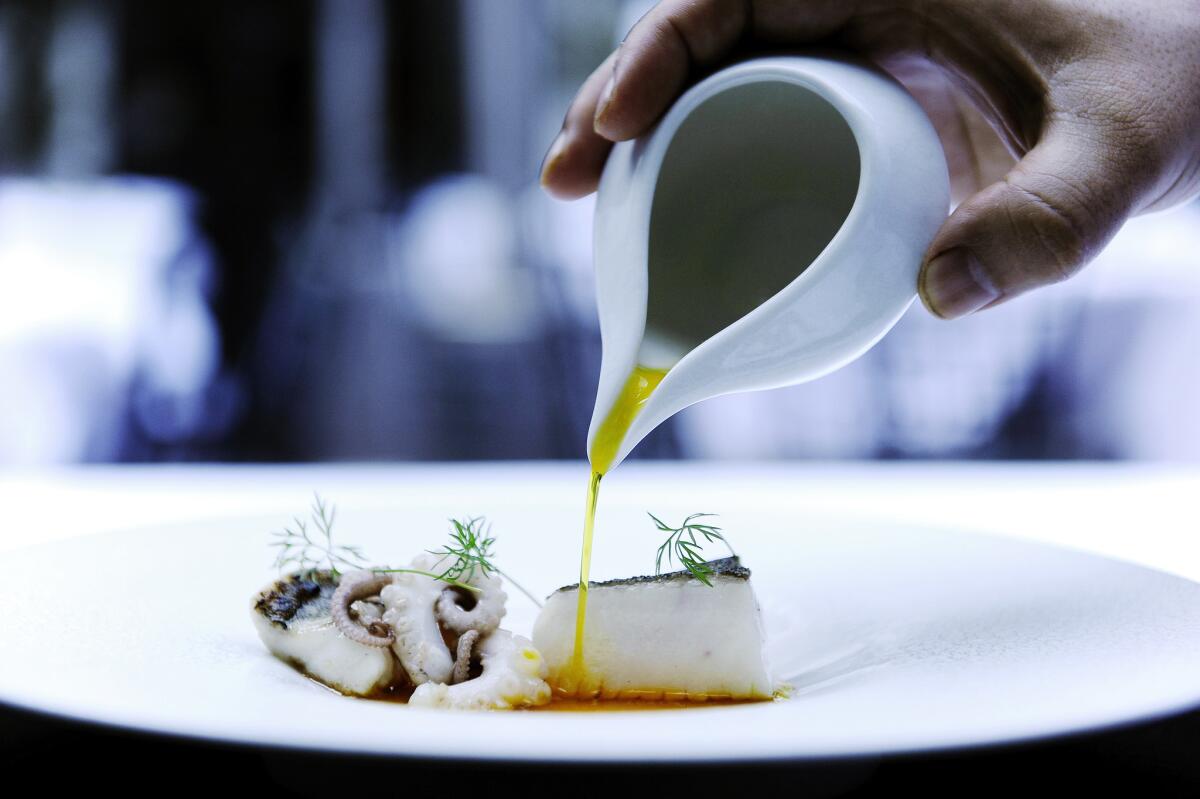
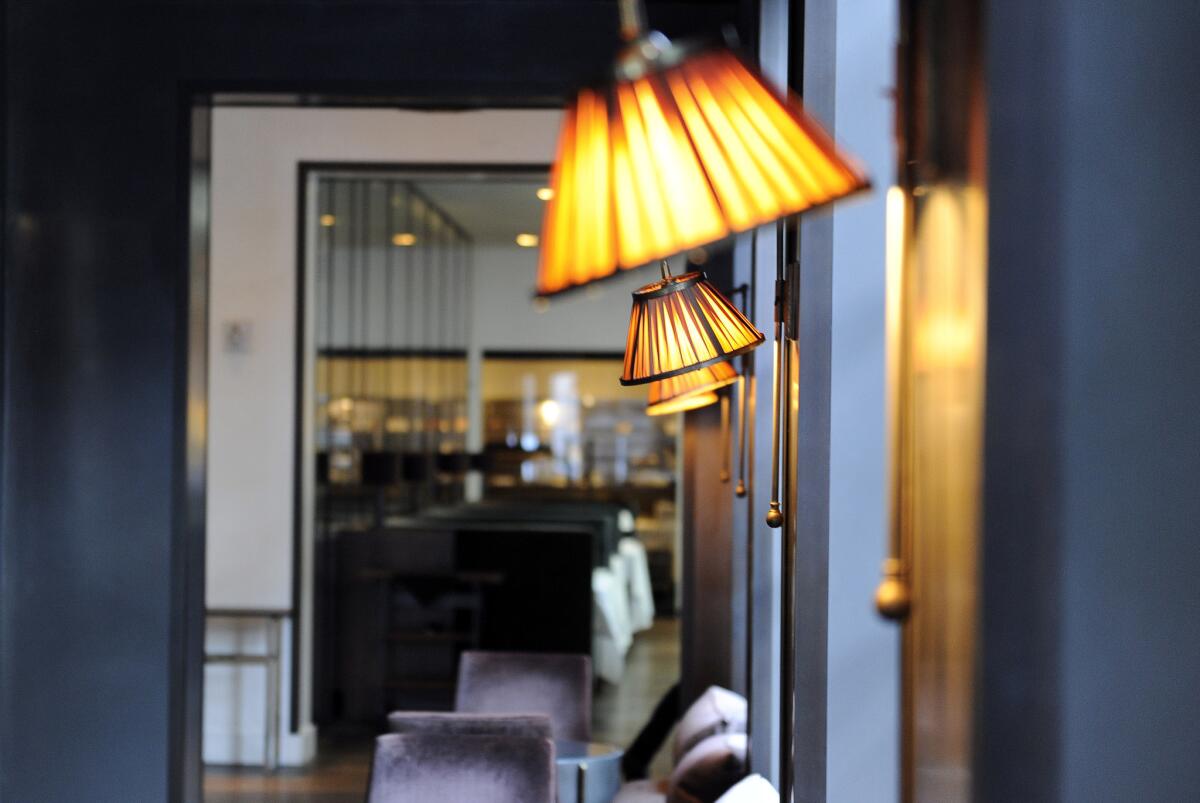
“At the original Spago on the Sunset Strip, [Puck] created what later became known as casual fine dining, a movement that 35 years later still dominates the restaurant world,” wrote Times restaurant reviewer Jonathan Gold.
And thus, a nationwide food craze was born.
For food lovers, the menu itself is an adventure. Portions are generous, and the service is perfectly timed. And though the dining room is packed and buzzy, you can have a conversation here, unlike so many restaurants these days.
At lunch, the go-to standard is the house-cured smoked salmon pizza topped with dollops of caviar. Also pay attention to the veal wienerschnitzel, so tender you could cut it with your thumb. Grilled fish comes off the grill in that 10-second window when it is neither too swimmy nor too dry.
Just don’t forget the lemon.
Where: 176 N. Canon Drive, Beverly Hills, about 13 miles west of downtown Los Angeles.
How much: How much you got? For most of us, this is a special occasion restaurant. Lunches for two start at around $100 and quickly reach $200. Dinners for two will run $150 and up, before wine or cocktails.
Info: Spago
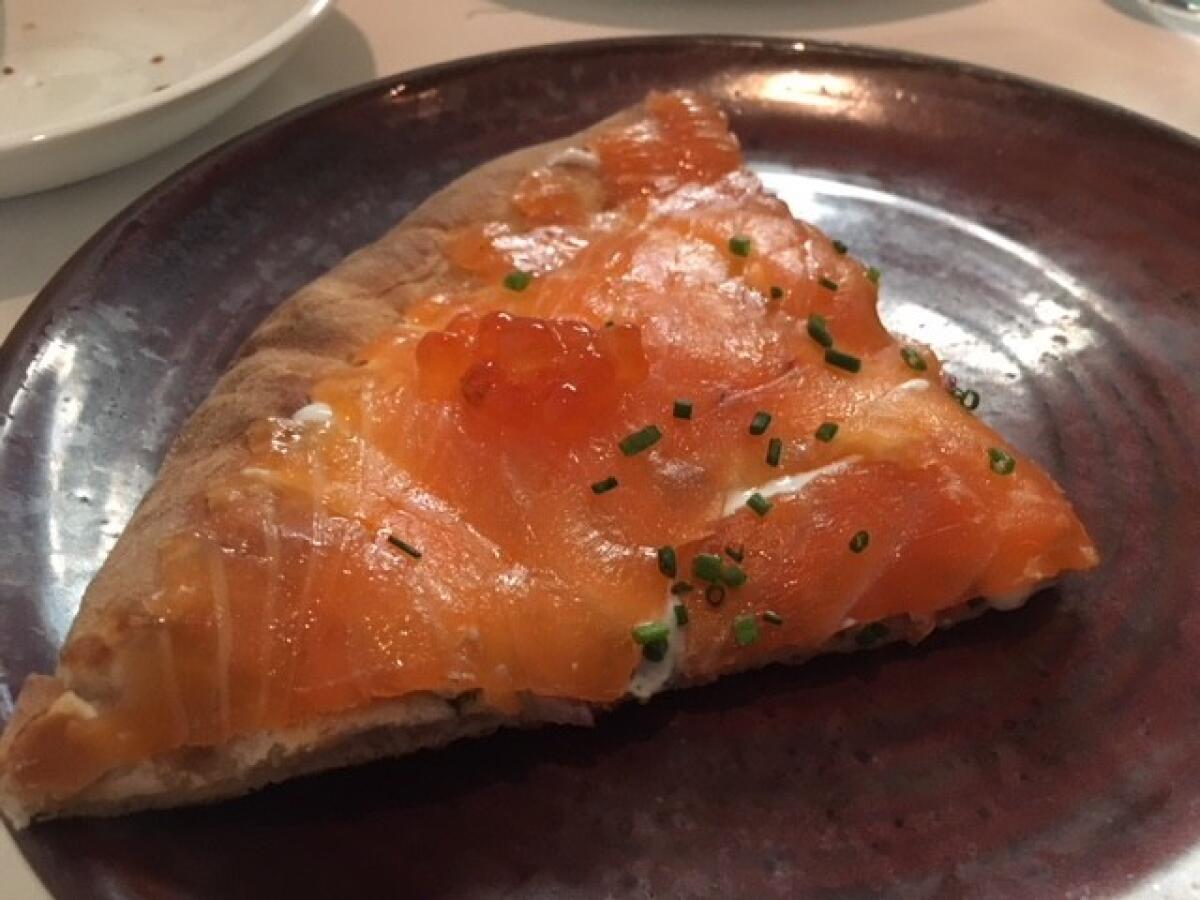
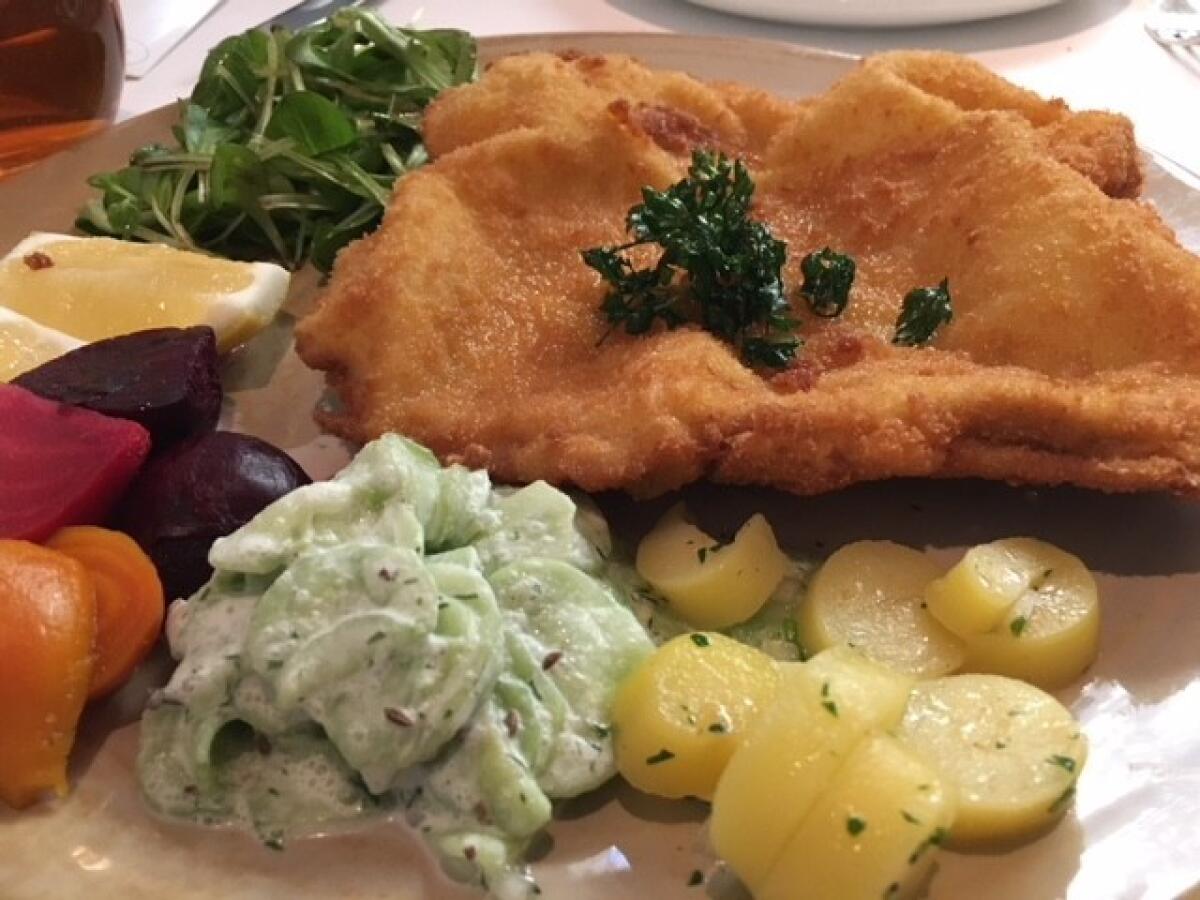
- Share via
Frolic amid mai tais, Spam and tiki culture at the Bali Hai on San Diego Bay
Why: Because two Bali Hais are better than one. Brush up on your Rodgers and Hammerstein (“Bali Hai may call you / Any night, any day”), then come away to this San Diego tiki icon, the Bali Hai restaurant.
What: Tiki bars have been a Southern California phenomenon for generations, and San Diego — with its sunny days, palm trees, ocean views and strong Navy heritage — is a perfect fit for the kitschy fad, tiny umbrellas and all. Starting in the 1930s, faux-Polynesian themed bars and restaurants sprang up in the cross-border region from Tijuana to San Diego. The tiki scene started to dwindle in the 1960s, and despite a resurgence of sorts, most of the old cheeky palaces have faded away.
But not Bali Hai. At age 63, it’s still proudly shaking its hula skirt, aided by a waterfront location, fun ambiance and, yes, seriously powerful mai tais.
Ambiance first: As you approach the restaurant/bar, the first thing you’ll notice is “The Goof” on the roof, a playful tiki that stands guard over the domain below. At the front door, Mr. Bali Hai, a large wood sculpture, greets guests.
Inside, there are about a hundred Polynesian artifacts on display, including masks, weapons and tools. The large bar and dining room have dark wood columns, a wood-beam ceiling and large windows with great bay and city views.
The Pacific Rim-inspired menu features such items as Hawaiian tuna poke, chicken adobo steam buns, Spam carbonara, pork belly katsu and Chinese garlic noodles, and holdovers such as Huli Huli chicken and coconut shrimp.
But for my money, the experience isn’t complete without a rum-based cocktail. There are plenty to choose from, but my favorite is the “World Famous Bali Hai Mai Tai,” a potent drink that proudly has “No Juice Added” and mixes aged light and dark rums, Trader Vic’s orgeat syrup, a dash of Triple Sec and a splash of sweet and sour.
Where: 2230 Shelter Island Dr., on Shelter Island, about 5 miles west of downtown San Diego, 120 miles southeast of downtown L.A.
How much: Dinner main dishes from $19 to $30; Sunday brunch, $40. Classic cocktails are under $10.
Info: Bali Hai restaurant
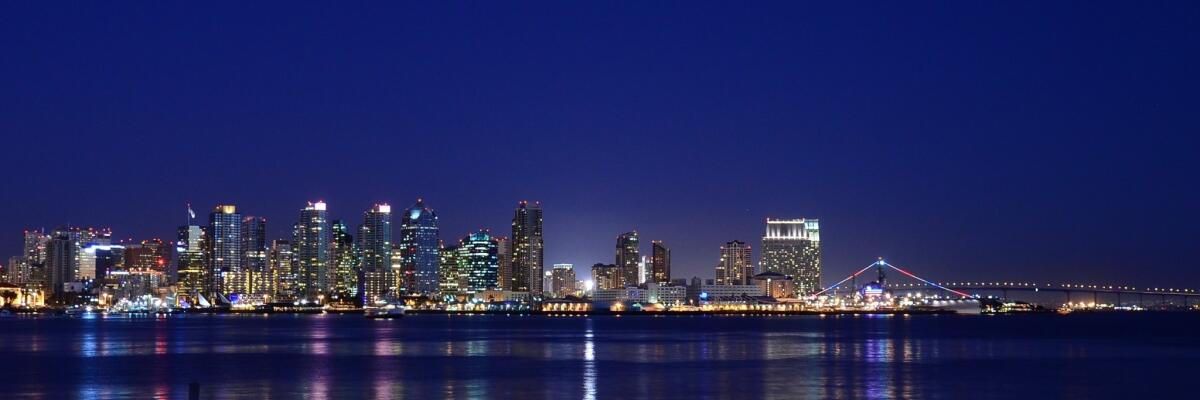
- Share via
Celebrate at Lawry’s in Beverly Hills, where thick slabs of prime rib are sliced right at your table
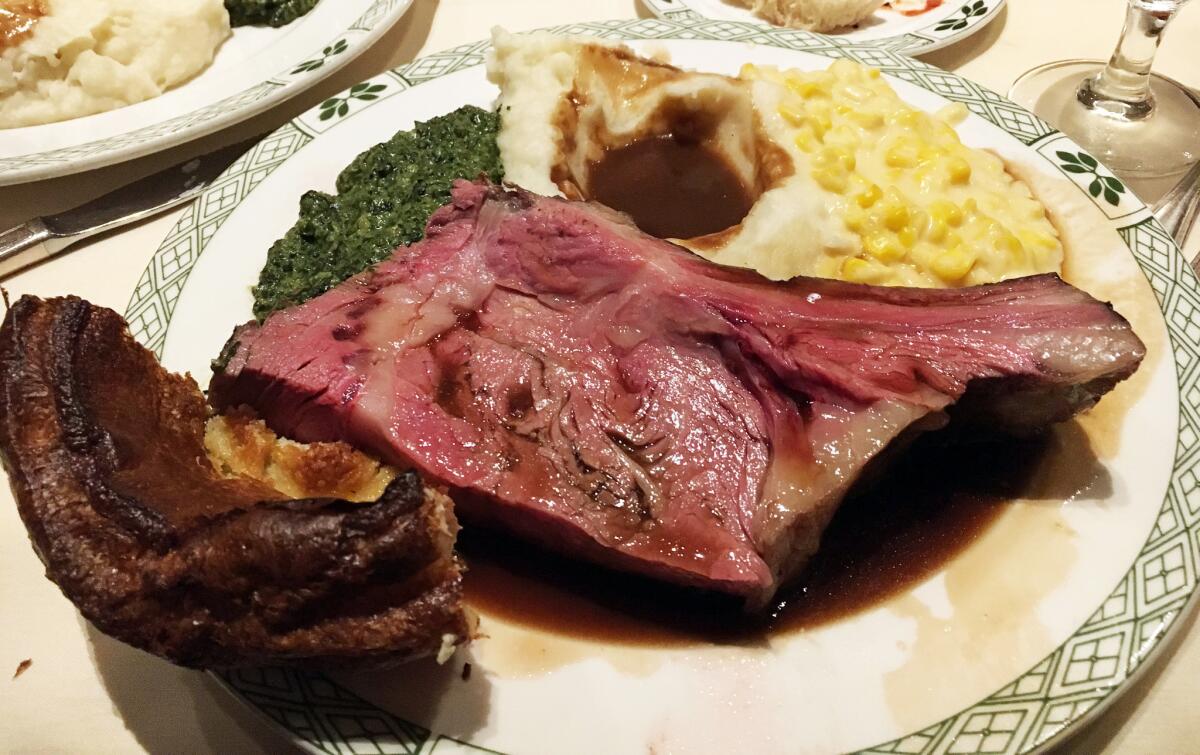
Why: Since 1938, Lawry’s the Prime Rib has been the place for indulgence and celebration. It’s where people spend their birthdays, anniversaries, congrats-on-your-promotion dinners and holiday parties. And where football players competing in the Rose Bowl go for the Beef Bowl.
What: Walking through the heavy gold doors is like walking into a time machine. Through the other side is a magical place where people still dress up, spotless glasses sparkle on crisp white tablecloths and the plush booths make you feel like the most important person in the world.
The idea was to create a version of the English restaurant Simpson’s in the Strand, where cuts of meat fit for a giant are served from trolleys. But Lawry’s founders Lawrence Frank and brother-in-law Walter Van de Kamp (of the Van de Kamp bakery empire and Tam O’Shanter Inn) had grander plans for their restaurant, starting with the meat carts.
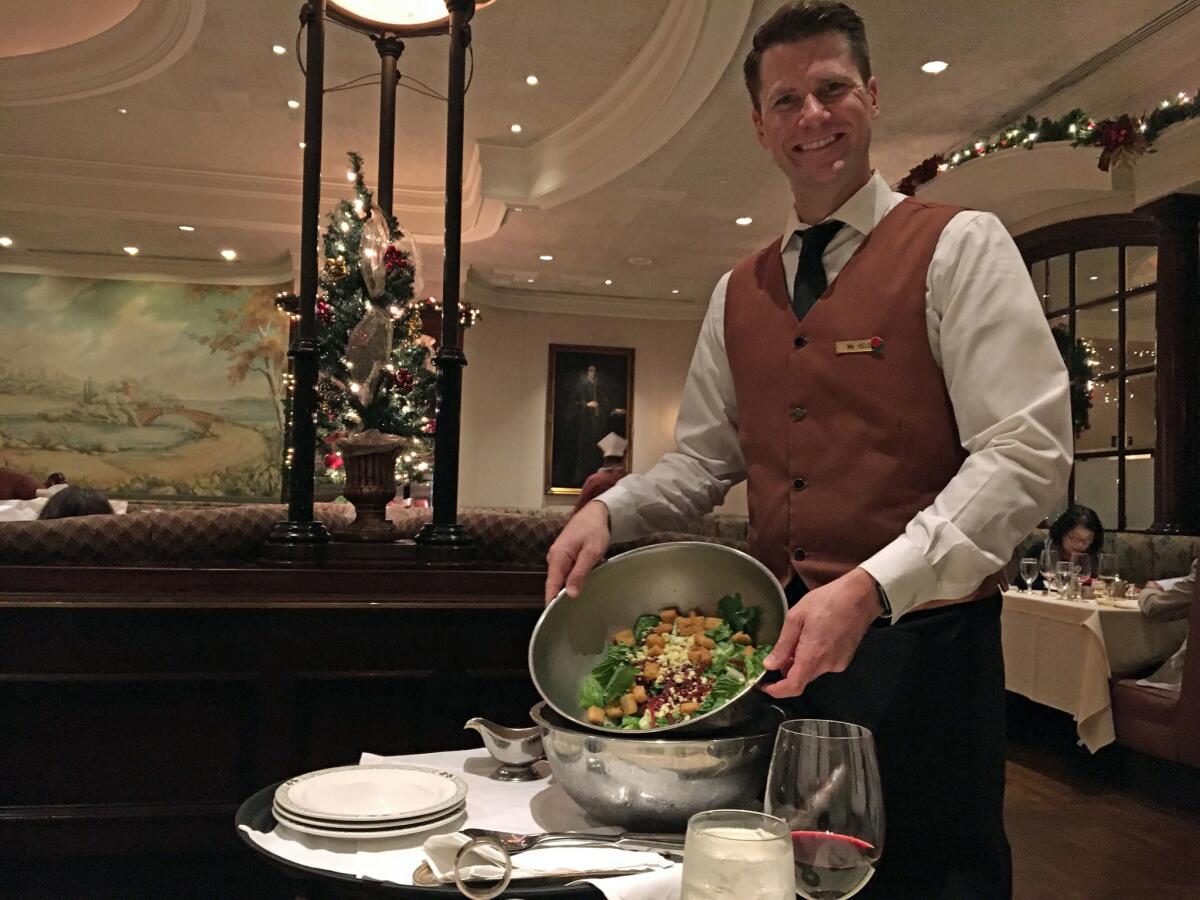
Lawrence designed the stainless steel carving carts the restaurant is known for — the ones that glide through the dining room carrying Flintstones-sized cuts of meat — to be, well, impressive. And they are. As are the meat carvers, who don medals showing they are part of the Royal Order of Carvers (a title that requires six months of training).
Each prime rib dinner comes with its own show of sorts: Servers wear the same style of “brown gown” uniforms they wore when the restaurant opened, and they pour dressing from up high into spinning metal bowls of salad tableside. When you order your prime rib, you do it directly from one of the shiny carts, and it’s sliced to order.
There are smaller cuts of meat, but treat yourself to the Diamond Jim Brady (16 ounces), named for millionaire Jim Brady, who was known for eating massive amounts of food. All of the prime rib dinners come with the spinning salad, a scoop of mashed potatoes, a ladleful of gravy and a wedge of Yorkshire pudding. If you don’t finish it all — you probably won’t finish it all — ask for a doggie bag. The restaurant claims to have initiated the idea, along with valet parking.
There are Lawry’s the Prime Rib locations in Las Vegas, Chicago and Asia. The original in Beverly Hills is home to a comfortable lounge and excellent bar snacks. This is where you can order a martini kissed with prime rib-stuffed olives and find complimentary “snacks” that could easily replace your dinner appetizers.
Arrive a little early for your reservation, grab a seat in one of the cushy lounge chairs, order a martini, then take turns filling your plate with cocktail meatballs and salty potato chips the size of drink coasters. Go for it. Indulging to your heart’s content is encouraged.
Where: 100 La Cienega Blvd., Beverly Hills, located on Restaurant Row, about half a mile south of the Beverly Center, about 10 miles west of downtown L.A.
How much: Prime rib dinners start at $41, and you can add a lobster tail for $15. Dessert and starters are extra. Drinks in the bar/lounge area are $13 to $17. The restaurant is busier on the weekends, and reservations are recommended.
Info: Lawry’s
- Share via
Feast your eyes and watch your step in downtown L.A.’s Arts District

Why: About 20 minutes ago, it seems, this was a derelict industrial zone with a few brave bohemians squatting in old factories along the railroad tracks — the kind of place where Quentin Tarantino would film a squalid murder. Then more artists and architects arrived. Then the entrepreneurs and developers. In another 20 minutes, it’ll be Soho West.
What: The Arts District, a big chunk of downtown between the Los Angeles River and South Alameda Street, has actually been gaining momentum for about three decades. Now is the time to swoop in and enjoy how bright, shiny and tasty it has become. (And spare a minute to mourn the long-ago passing of Al’s Bar, once the life of the neighborhood.)
On East Third Street now, you can confront edgy and expensive contemporary art; browse a bookshop or boutique; settle into a leisurely lunch at Manuela; or bring a brown bag and have a seat in the courtyard next to the kitchen garden and chicken coop. And that’s just inside the Hauser & Wirth Los Angeles gallery complex that opened in 2016.

Nearby on Traction Avenue and neighboring streets (where’s there still ample grit), you can can check out an event at the Southern California Institute of Architecture (which was built from the bones of a 1907 Santa Fe freight depot), hoist a beer at Angel City Brewery, and get sausage at Wurstkuche, a burger at Umami, dessert at Piehole or Salt & Straw — more than two dozen options, in addition to the lofts, studios and galleries that give the neighborhood its industrial-bohemian bearing.
What you can’t do is park. Every time I’ve tried, it’s been a nightmare. So now I walk. The Metro Gold Line’s Little Tokyo/Arts District station is fairly handy on Alameda between Temple and First streets.
Where: In many ways, E. 3rd Avenue and Traction Avenue is the neighborhood crossroads. It’s right downtown, less than a mile south of Los Angeles City Hall.
How much: A basic sausage at Wurstkuche costs $7. A tasty plate of persimmon, ham and burrata cheese at Manuela goes for $14. Lofts routinely fetch $1 million or more.
Info: Arts District
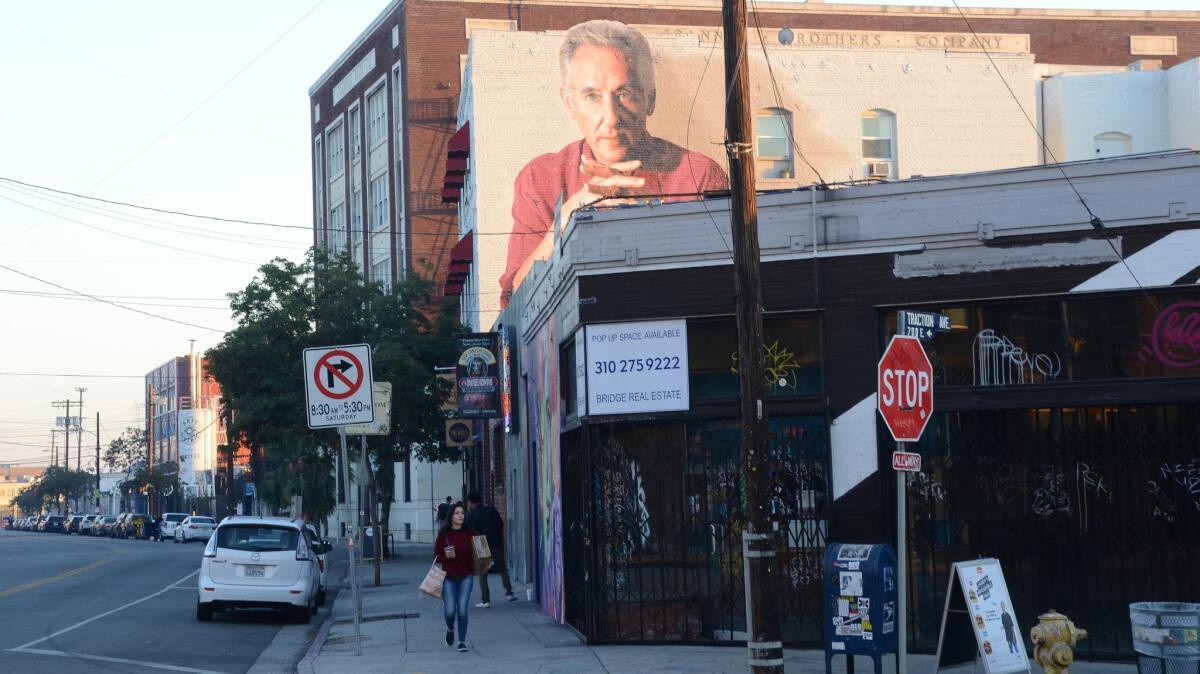
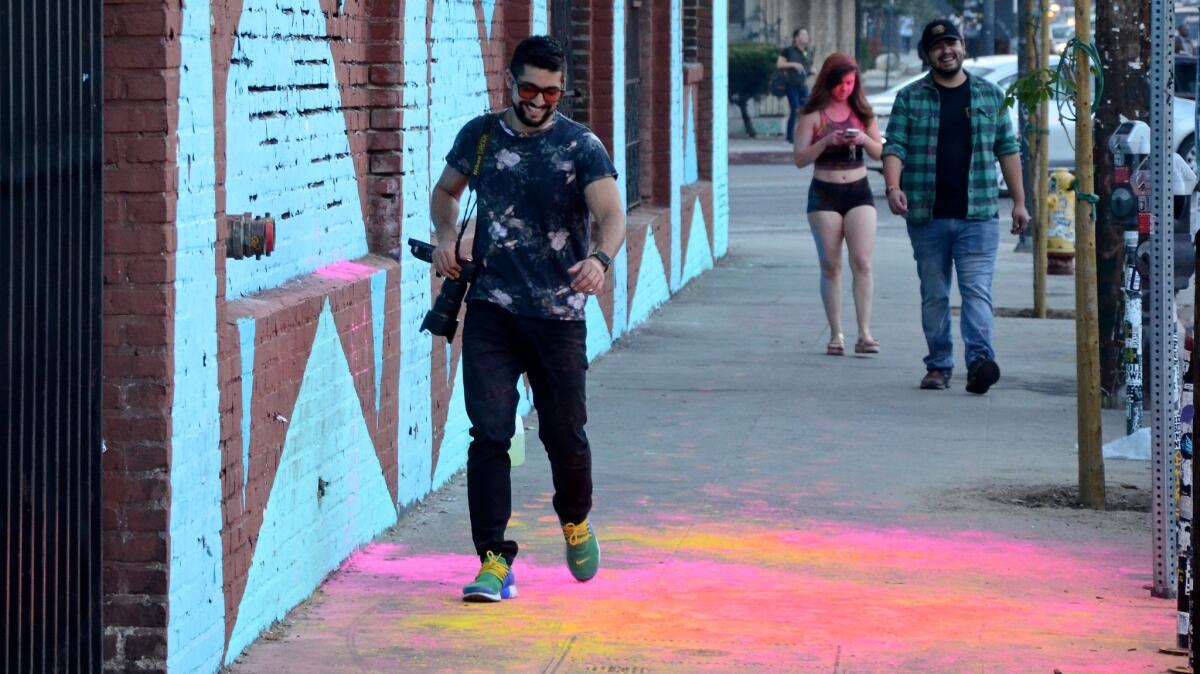
- Share via
Read forbidden words and savor daring artists in Big Sur’s Henry Miller Library
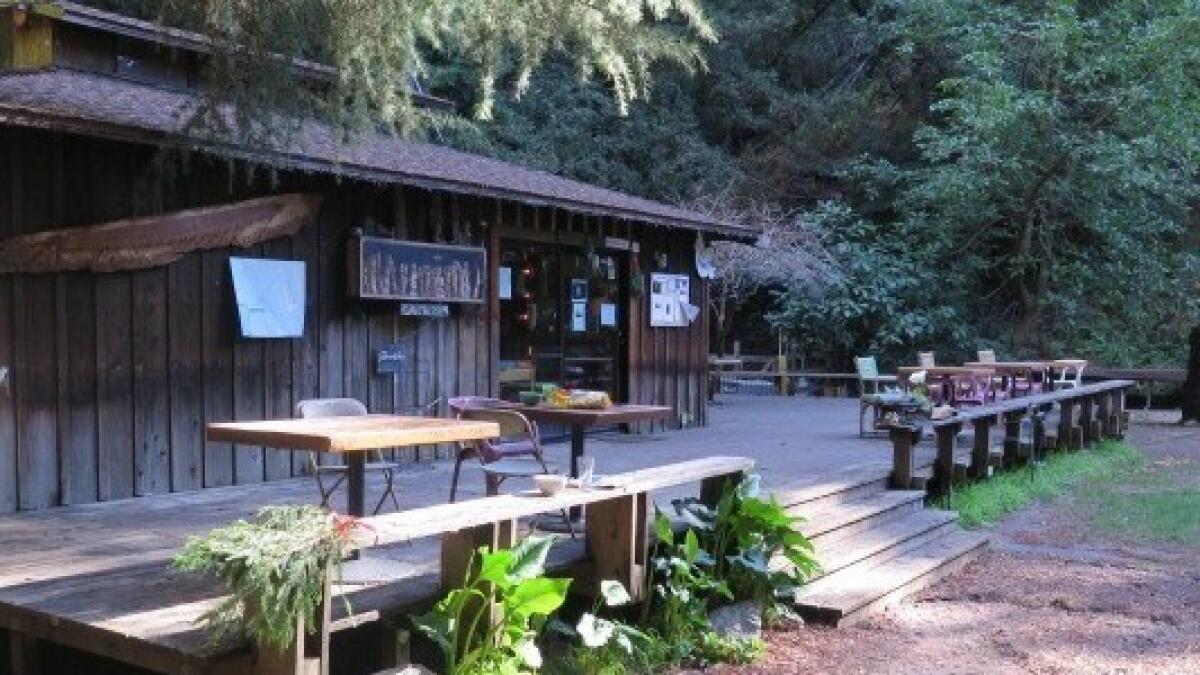
Why: If Big Sur is a temple to the beauty of the California coast, then the Henry Miller Memorial Library is one of its most endearing altars, a respite from the rigors of navigating the twists and turns of Highway 1 and rubber-necking the vertiginous coastline. Beneath stately redwoods is a quiet repository of wisdom, irreverence and charm. Its proprietors say that it is the place “where nothing happens,” and yet it is where everything seems to converge.
What: Henry Valentine Miller came to Big Sur in the 1940s after nearly a decade in Paris. He was, by then, author of “Tropic of Cancer” and “Tropic of Capricorn,” which were banned as obscene in America until 1961. Naturally they sold well, and Miller soon became a hero of renegade literature, a model for William S. Burroughs, Jack Kerouac and Allen Ginsberg. After Miller’s death in Pacific Palisades in 1980, a friend, Emil White, opened a memorial library that bore Miller’s name. With the help of the Big Sur Land Trust, the library has become a nonprofit cultural space, art gallery, performance space, bookshop and destination for artists, writers, musicians and students.

The Henry Miller Memorial Library is a reminder of the pleasures afforded by a curated bookstore. It is a place to celebrate the macho and feminist, the consensual and the iconoclastic through the pages of its eclectic collection of books. Psychedelic cumbias from Peru or the twanging guitar of the Del Tones might be your accompaniment as you browse the tables set with Edward Abbey, Joseph Heller, William Faulkner, John Fante, David Foster Wallace, Jon Stewart, Robert Pirsig and William Least Heat Moon.
Strings of paper money from around the world – offerings from international visitors – dangle from the ceiling. Posters celebrate the notable musical performances that have taken place outdoors, including Philip Glass and Patti Smith, the Red Hot Chili Peppers and Arcade Fire. Outside, an upright piano falls to ruin off the path from the highway. A typewriter gathers rust on a tree stump, and an effigy made of extension cords is crucified on a cross of computer monitors.
In other words, where nothing is sacred, everything is sacred.
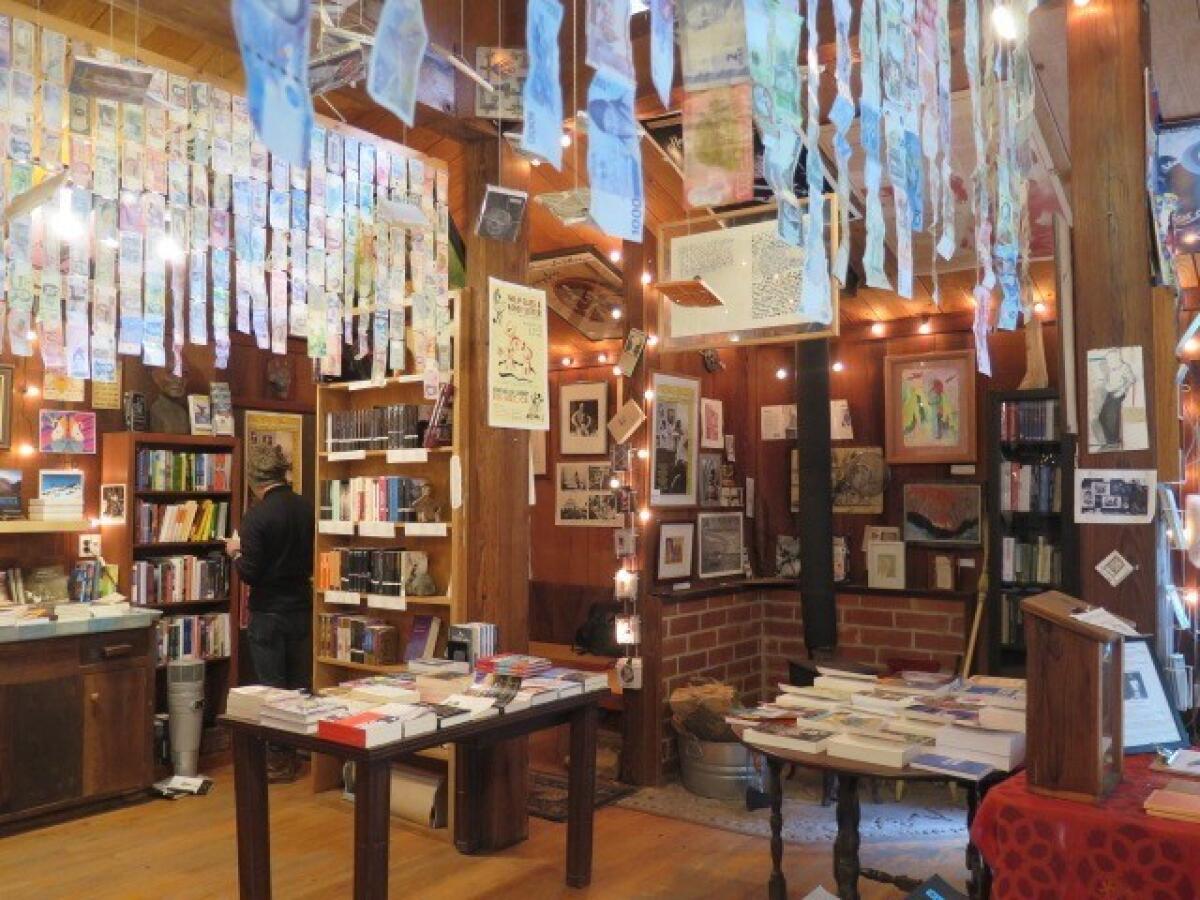
Where: 48603 Highway 1 in Big Sur, which is 10 minutes south of Nepenthe, 10 minutes north of Deetjen’s Big Sur Inn. Also 290 miles northwest of downtown L.A., 152 miles south of downtown San Francisco. Open 10 a.m.-5 p.m. Wednesdays through Mondays, closed Tuesdays.
How much: It’s free to browse. Donations eagerly accepted. Books for sale. Tickets prices vary for performances and programs.
- Share via
Roam the San Luis Obispo canyon full of architectural daydreams and wandering horses
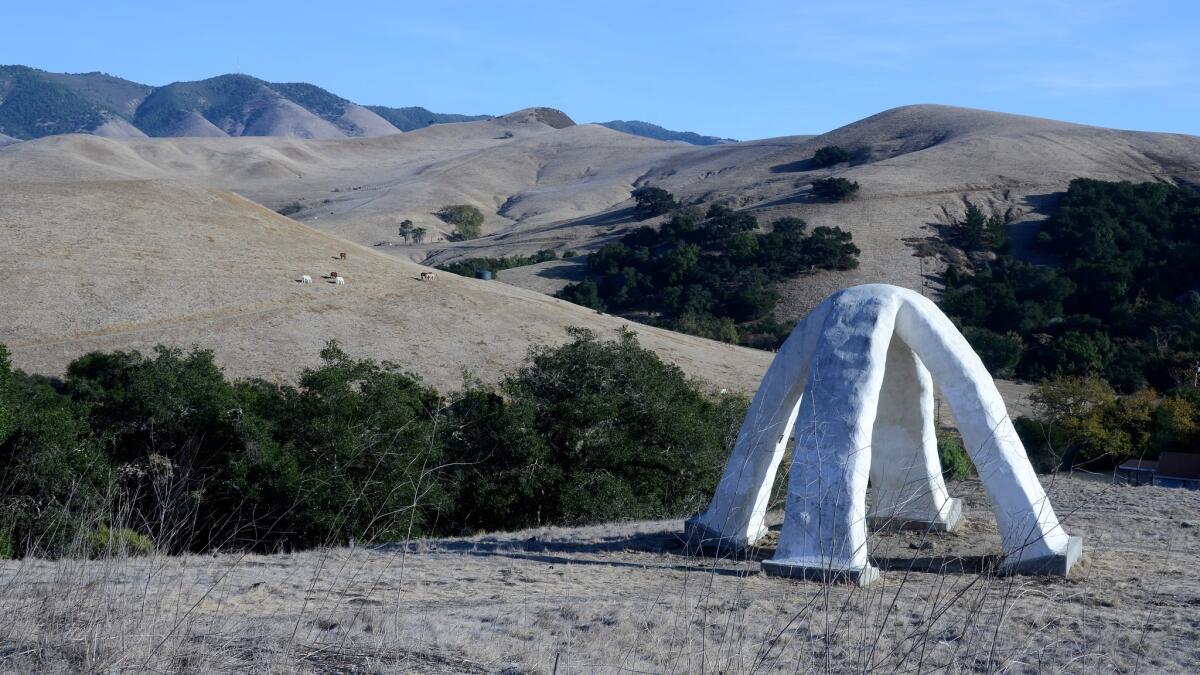
Why: Architects usually keep their daydreams to themselves. But among these hills on the back side of Cal Poly San Luis Obispo, some students have allowed their boldest notions to romp free. And horses romp with them.
What: Cal Poly is routinely ranked among the nation’s top schools of architecture, and its students and professors started testing ideas in this canyon as early as the 1960s. Lately, there’s a spring Design Village event (April 20-22 in 2018) that brings students out to test temporary structures and sometimes sleep in them. Luckily for the rest of us, those nine acres and the rest of the canyon are generally open to the public, including dogs and mountain bikes (on the dirt road). It’s a hike of about 2.5 miles from campus to the farthest structure, but your mileage (and elevation gain) will depend on how tempted your are to probe the structures and stalk the horses.

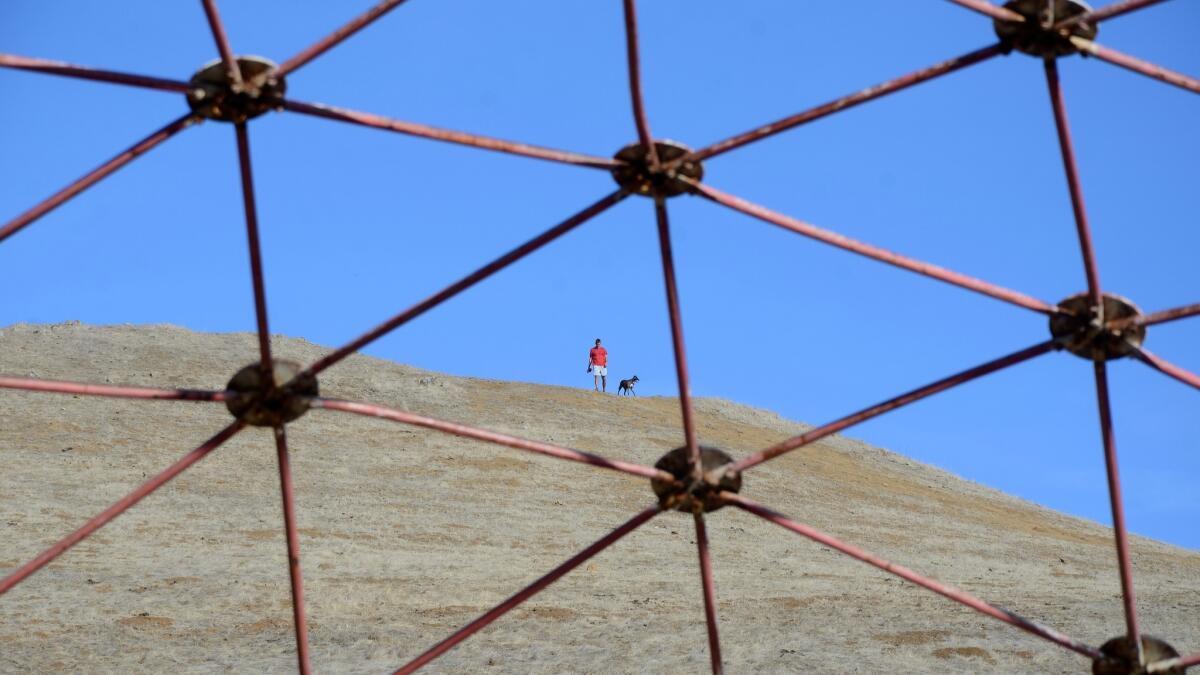
I wandered around on a December day when the hills were the color of straw, and at first I wasn’t so happy about all the horse turds. But once the horses themselves showed up, that changed everything. They sidled up to a water tower, then struck heroic poses on the ridge line while I prowled around assorted unconventional houses and bridges, including a geodesic dome. Yes, there was some graffiti and vandalism, but many structures have been reconditioned in more recent years. (The university calls it an “experimental construction laboratory.”)
I’d call it a great spot for photo experimentation as well. There are about 20 projects, and plenty of tree shade in the lowlands along Brizzolara Creek. After a rain, I’ll bet those grassy slopes light up neon green.
Where: The Cal Poly campus is 195 miles northwest of downtown L.A. Enter the campus via Grand Avenue (and beware of dorm construction near the entrance). Follow the campus map to the corner of Village Drive and Poly Canyon Road, then walk northeast on Poly Canyon Road, which is a gate dirt rout that follows Brizzolara Creek. After about 3/4 of a mile, you’ll see a stone arch. Step through and the canyon will open before you.
How much: On weekends, parking is free at lot H4 at Village Drive and Perimeter Road. On weekdays, it’s $5 for a parking pass at the checkpoint at the campus entrance. (I showed up on a weekday and parked at lot K-1.)
Info: Cal Poly College of Architecture & Design, Hikespeak’s trail description.

- Share via
Step into the vast, strange spectacle of Kenny Irwin’s Robolights in Palm Springs

Why: You’ll never see another holiday display quite like it. And it sits on 4 acres in the middle of an upscale Palm Springs neighborhood.
What: The Coachella Valley, with its 80-degree December days, is a quirky place to celebrate winter holidays to begin with. And the quirks multiply once you enter Palm Springs’ Movie Colony neighborhood and approach the Irwin house, about two blocks from the old Frank Sinatra Estate. Since at least 32 years ago, when he was 12, Kenny Irwin has been driven to create epic displays from cast-off items — dreamscapes that suggest robots, space aliens and more obscure spectacles that defy description. With his father’s support (and a corps of seasonal workers to handle logistics and crowd control), Irwin’s compulsion has grown into Robolights, a seasonal landmark that combines Santa Clauses, reindeer, sleighs and gingerbread houses with little green men, skulls, dolls, hybrid creatures, reclaimed consumer electronics, half-melted toys and at least one coffin. At Robolights there are no clear lines between Halloween, Christmas and science fiction.
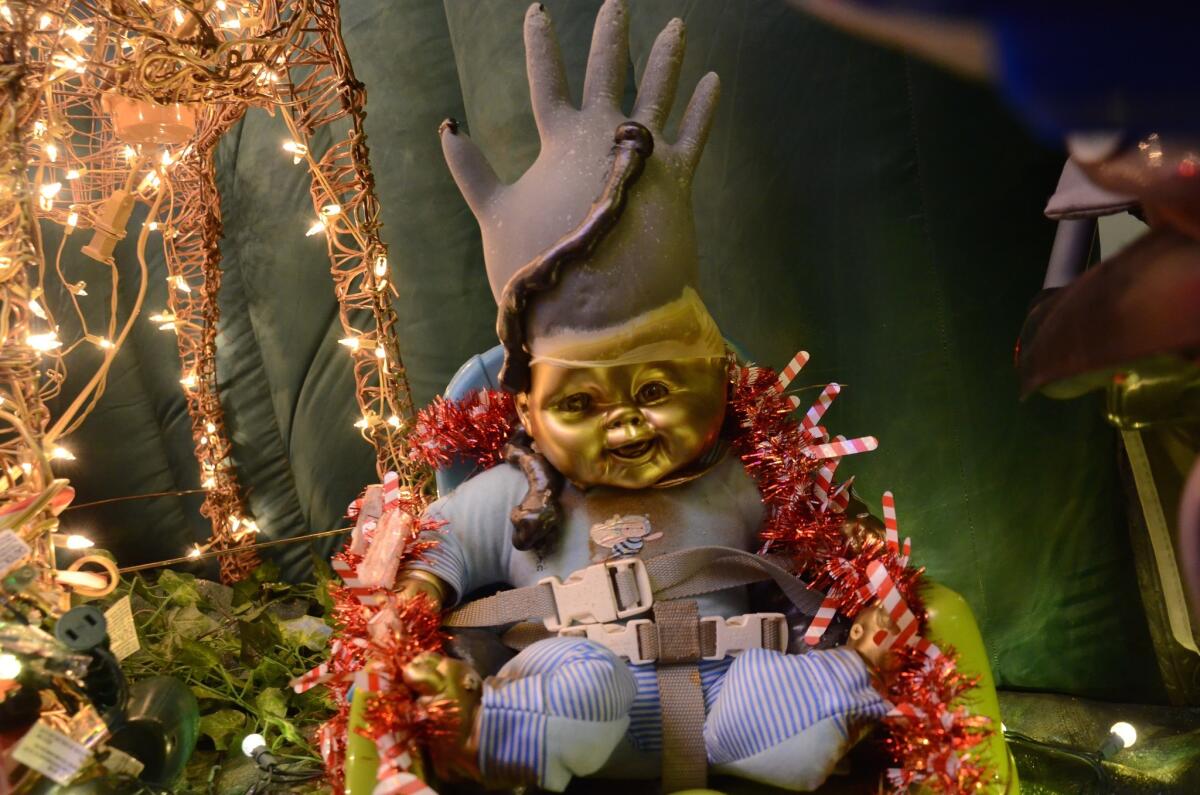
From Nov. 22 through Jan. 8, the scene is lighted by thousands of bulbs and visitors are ushered along a path that leads from the front yard through a forest of fantasy in the back, then out again. A thousand visitors in a night is not uncommon. On my visit in early December, Irwin was out and about, a soft-spoken man with a skullcap, caftan, long beard and gentle smile. (Did I mention that the artist converted to Islam many years ago?)
“I’ll bet the hardware store totally loves him,” I heard one visitor say. “This is insane,” said another. Many families pose for pictures amid the luminous chaos.
Where: 1077 E. Granvia Valmonte, Palm Springs, 107 miles east of downtown L.A. But while the Robolights are lighted, the city bans nonresident parking on many streets nearby, so you’ll need to park a few blocks away. Try Ruth Hardy Park. And be careful as you walk — there isn’t a lot of streetlight illumination in the neighborhood.
How much: Free. But there’s a receptacle for donations at the entrance. From 4 to 9:30 p.m. daily.
Info: Robolights
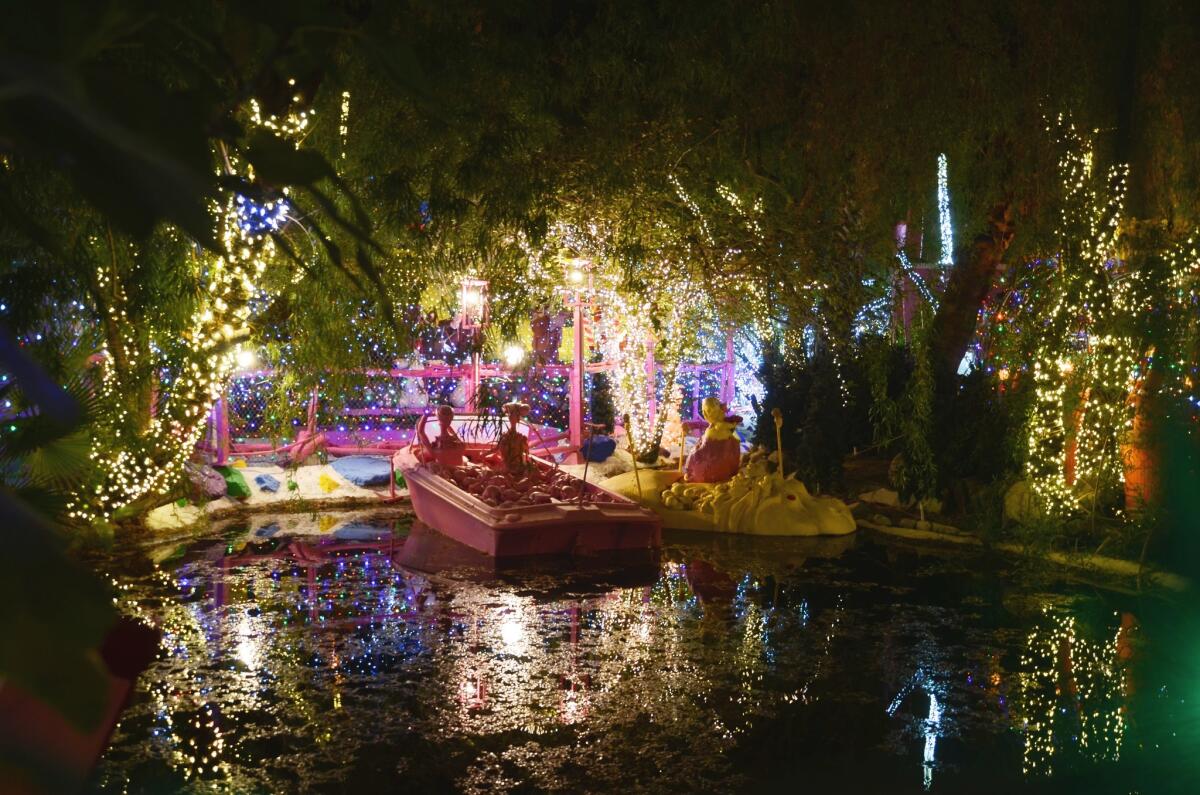

- Share via
Get down, dawg, with a $15 beach yoga class in Santa Monica
Why: Beach yoga is good for the bod, and the spirit, in ways that no cramped, sweaty studio can match.
What: All sorts of beach yoga classes are held up and down the California coast, but few are as affordable and easy as Beach Yoga With Brad and Friends in Santa Monica. No reservations required. Just drop in with $15 and a beach towel (or a yoga mat if you prefer).
Instructor/owner Brad Keimach is a Juilliard-trained classical music conductor who moonlights – or sunlights – with these yoga classes every Saturday and Sunday from 10:30 till noon. He also holds Wednesday sunset classes starting at 3:45 p.m. and lasting an hour. When the days are longer and the clocks change, he adds more weekday sunset classes.

For almost 10 years, his beach-based classes have appealed to first-timers as well as advanced yoga buffs. They are held on the water side of Guard Tower 29, roughly on the border between Venice and Santa Monica. Paid parking is plentiful at the public lots at the end of Ocean Park or on Main Street.
Like many yoga instructors, Keimach emphasizes breathing as well as the moves and poses. He also incorporates the setting, sending students to get their toes wet at one point for a bit of spiritual spritzing.
The classes pass quickly, without pain, and without Keimach putting his hands all over the students (a too-common yoga studio experience). Looking out over the sparkly Pacific, his classes combine ocean breezes, a relaxing pace and Keimach’s soothing instructions, at a venue where space is never an issue.
Where: Lifeguard Tower 29, Santa Monica, 16 miles west of downtown Los Angeles.
How much: $15
- Share via
Shop with Victorians on San Francisco’s Union Street
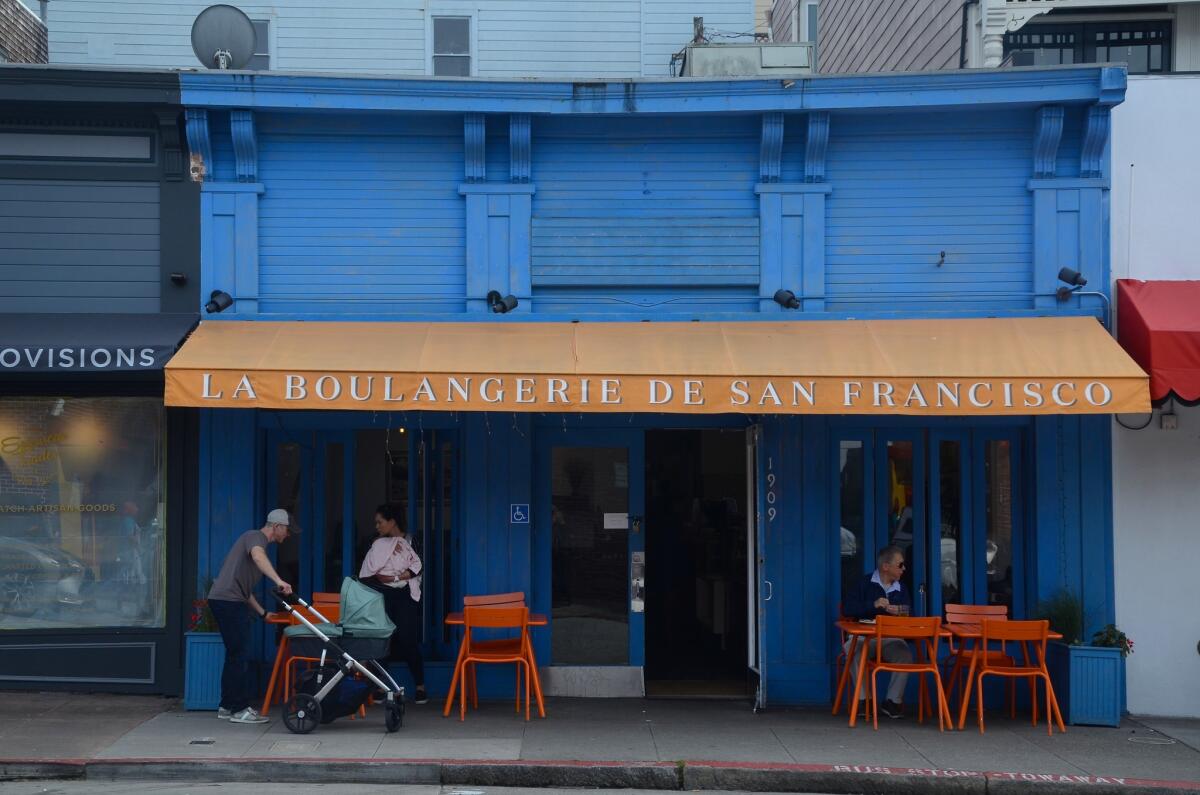
Why: Sometimes you just want to shop in a strange city. Not in the middle of a grand scene like Union Square or the Ferry Building, but along a street that feels like a neighborhood just a bit beyond your means. With Victorian mansions here and there. Hello, Union Street.
What: Union Street has had its great-shopping reputation since the 1950s. The eight-block stretch between Van Ness Avenue and Steiner Street, surrounded by the Marina and Cow Hollow residential neighborhoods, is the prime retail portion.
Many of the shops (which tilt toward apparel and beauty products) and restaurants are housed in Victorian mansions that survived the quake of 1906. One even older mansion, the pale blue Octagon House at Gough and Union, went up in 1861 and has been preserved in its residential state by the National Society of the Colonial Dames of America (so it would be wrong to knock on the door and ask if this is the weed dispensary you’ve heard so much about). The society opens the house a few days a month for tours.
Among the restaurants, I can vouch for the Belgian food and beer at Belga (on Union near Buchanon Street). But there are more than two dozen. And there’s plenty to peruse at Chronicle Books (on Union between Octavia and Laguna streets).
Where: The corner of Van Ness and Union is a good place to start. It’s 1.5 miles northwest of Union Square, 383 miles northwest of downtown L.A.
How much: Free to browse, of course. Oysters at Belga, $3 each. Median home price in Cow Hollow and the Marina: about $1.8 million.
Info: Union Street
- Share via
Find yourself in a yogi’s seaside Encinitas gardens
Why: Where else can you spend an hour and feel like you’ve been on a soul-replenishing spiritual retreat? At the Self-Realization Fellowship Meditation Gardens in Encinitas, you can be fully present in the moment and get in touch with your inner yogi – and do it surrounded by gorgeous gardens on a bluff overlooking the ocean.
What: The goal of the Meditation Gardens, part of a large complex at the southern end of downtown Encinitas dedicated to the teachings of Paramahansa Yogananda, is to “inspire you to a greater realization of the Divine Presence that lies within.” Walking up the stone steps into the lush, eclectic gardens imparts an instant feeling of serenity.
There are koi ponds and many quiet nooks with benches where you can sit. At the top of the ocean bluff is a plaque that marks the location of the Golden Lotus Temple. The temple, built in 1937 to take advantage of the incredible views, only stood for five years before the ground gave way and it had to be dismantled. Wander past the old, empty swimming pool up the tree-shrouded path to the “dry” area featuring native plants and succulents overlooking the famed surf spot Swami’s. (The beach’s name was a nod to Yogananda.) Some visitors pray, others meditate. I like to watch the surfers below and imagine them praying for good waves.
And don’t miss the Hermitage at the opposite end of the gardens, where Yogananda spent many years writing and teaching. The Hermitage, preserved as a shrine, draws followers from around the world; it is open on the first and third Sundays of the month. It was moving to see the study where he wrote his most famous work, “Autobiography of a Yogi,” which has been translated into dozens of languages.
Where: 215 W. K St., Encinitas, 100 miles southeast of downtown L.A. (Look for the three large “golden lotus towers” as you come down South Coast Highway 101.)
How much: Free.
- Share via
Hoot and holler in UCLA’s Pauley Pavilion, the hoop heaven that honors John Wooden
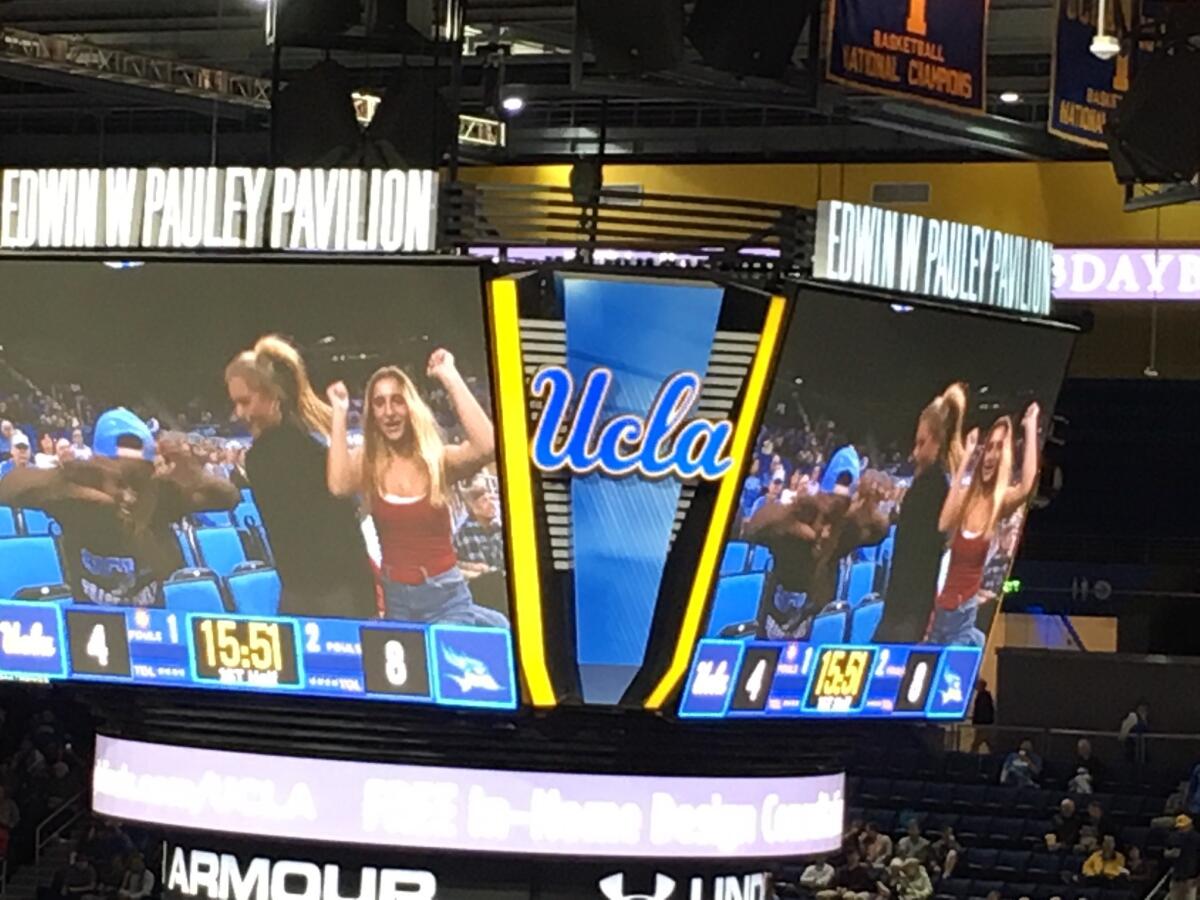
Why: John Wooden was the Elvis of college basketball, a mythic, once-in-three-lifetimes figure. Pauley Pavilion was his Graceland. Along with Lambeau Field and Fenway Park, it belongs on any sports fan’s must-see list.
What: Updated and comfortable, Pauley sits on the sweeping and shady UCLA campus in Westwood. It is one of the easiest L.A. sports venues to park near ($12) and navigate.
Reopened in 2012 after a two-year renovation, the stadium now offers modern concessions, more room to roam and 1,000 more seats. Most significantly, it added a concourse, improving comfort and flow. Be ready for a lot of blue. After Dodger Stadium, this is L.A.’s second blue heaven.
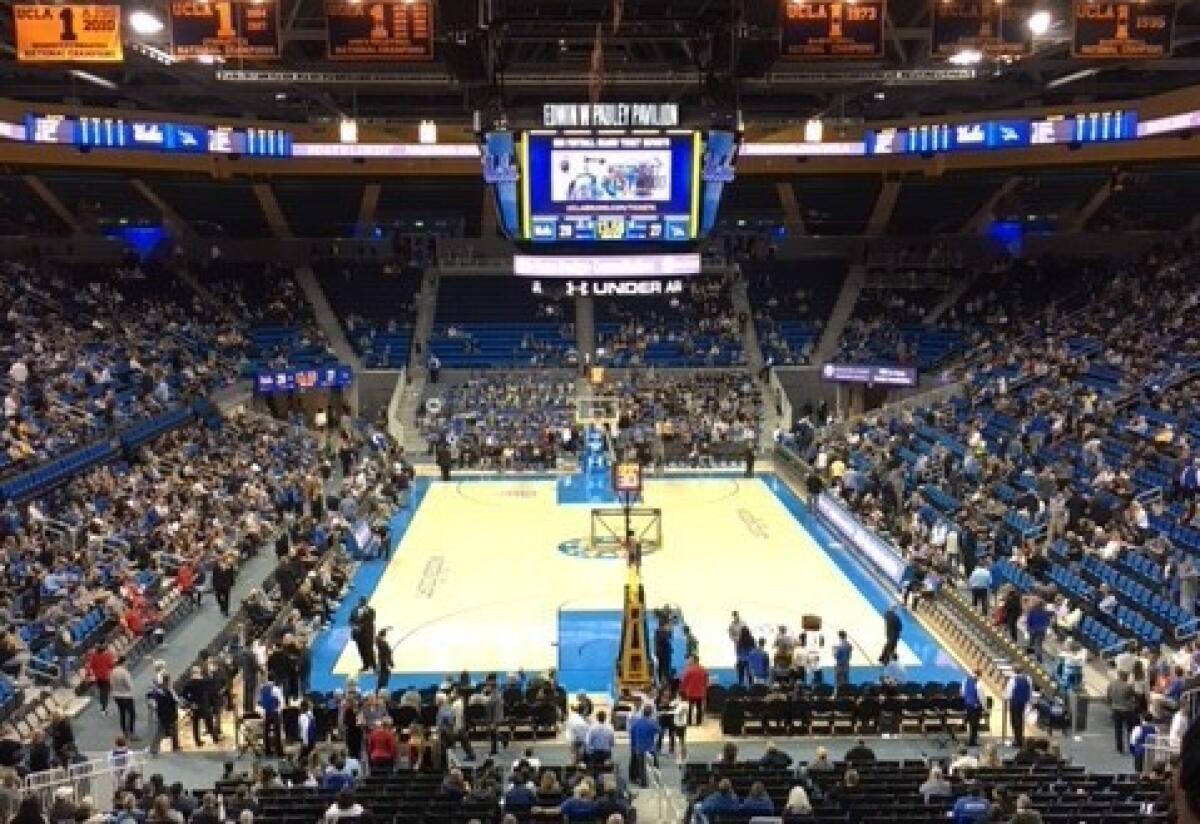
But you’re here for the lore, in a place that has produced 38 All-Americans. Wooden started it all, taking over as head basketball coach at UCLA in 1948 and leading the Bruins to a record 10 national championships.
Renowned for his disciplined, values-driven approach, he created a basketball dynasty that won seven straight championships in the late ’60s and early ’70s, including 98 successive victories at Pauley.
Wooden, who died in 2010, is the first person to be inducted to the Basketball Hall of Fame both as a player and a coach.
Though he resembled a gentleman banker more than a rock star, Wooden’s legacy lives on in the stadium he made famous. The corridors are lined with photos, timelines and a version of Wooden’s “Pyramid of Success,” a set of principles formed to help students and teams reach their potential.
Where: Pauley Pavilion, on the UCLA campus, 15 miles west of downtown L.A.
How much: Prices vary. Seats generally start at $8 for less-attractive games and $25 for popular ones.
Info: UCLA
- Share via
Drive through In-N-Out Burger’s flagship restaurant in Baldwin Park for a double-double, animal-style
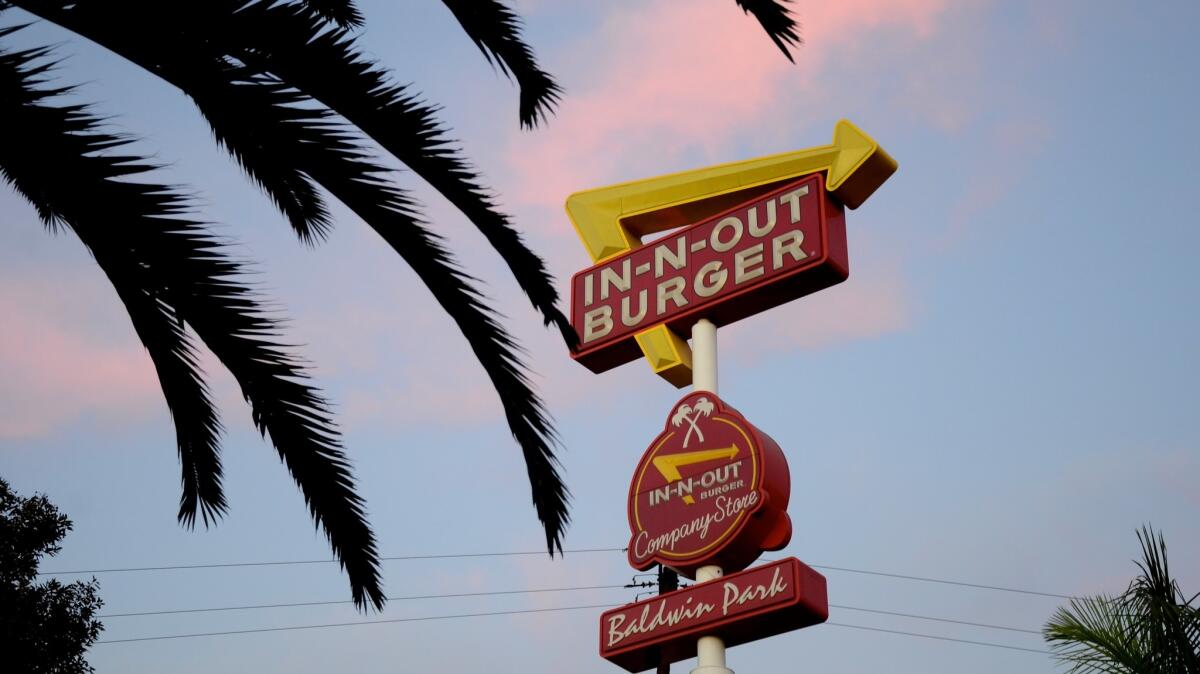
Why: For certain carnivorous Californians, a visit to this burger chain is like church, but with more calories. At the flagship In-N-Out location just south of the 10 Freeway in the eastern L.A. County suburb of Baldwin Park, of course you can drive through, as most customers do. But you could eat inside, then browse a company store, then (on the north side of the freeway) admire a non-functioning replica of chain’s first burger shack.
What: Harry and Esther Snyder founded the first In-N-Out burger shack in 1948, which puts them among the first to try a drive-through restaurant. Now their granddaughter runs the company.
To taste what the fuss is all about, order a “double-double, animal-style” — two beef patties cooked with mustard, two slices of cheese and a choice of hand-leafed lettuce and tomato, plus pickles, extra spread and grilled onions.
It’s the appeal of these burgers and fries (“no heat lamps, freezers or microwaves”) that has fueled the company’s growth to more than 300 outlets. (But unlike its Southern California cousins McDonald’s, Jack in the Box, Taco Bell and Wienerschnitzel, In-N-Out has never expanded beyond the American West.)
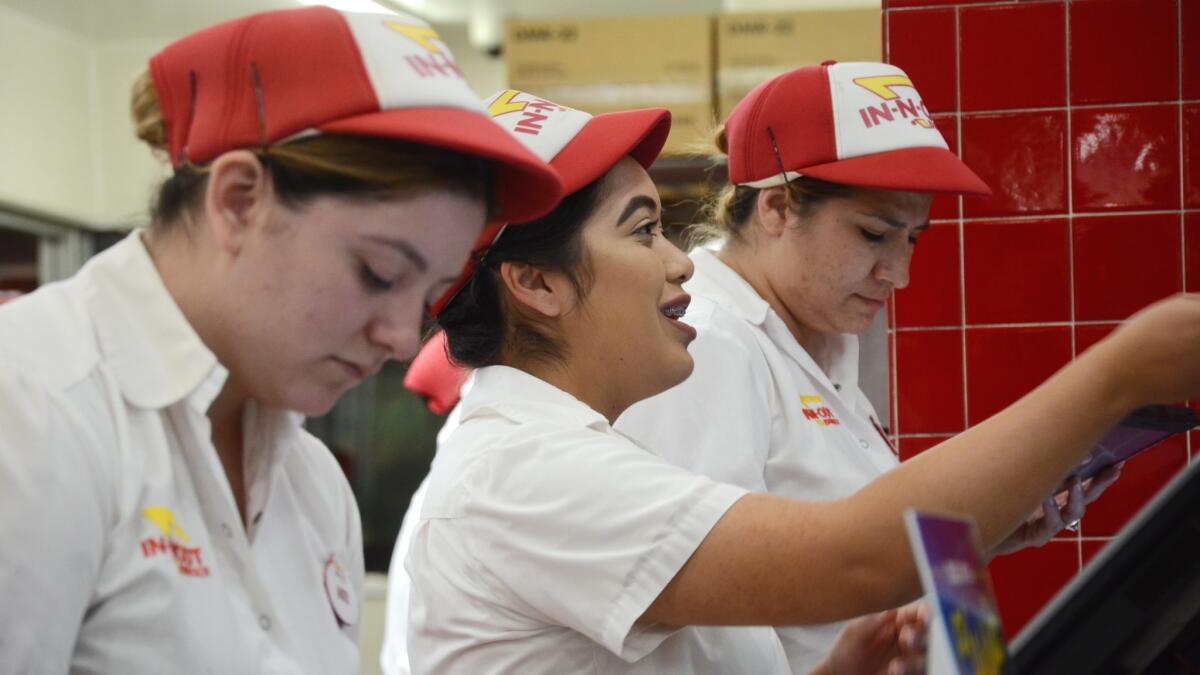
Though the company’s first home at San Francisquito and Garvey avenues has been leveled, the current restaurant is joined by not only a store (open 10 a.m.-5 p.m., Mondays through Saturdays) but a regional distribution center, the two-story campus of In-N-Out University and the replica shack, which went up in 2014. (The online store does have wider inventory than the brick-and-mortar one, including socks and surfboards.)
Where: 13850 Francisquito Ave., Baldwin Park. The company store is at 13800 Francisquito. The replica shack (free and open for selfies Thursdays through Sundays from 11 a.m. to 2 p.m.) is at 13752 Francisquito. The restaurant is 16 miles east of downtown L.A.
How much: Double-double, animal-style, $4.27.
Info: In-N-Out

- Share via
Light up your life at the Museum of Neon Art in Glendale
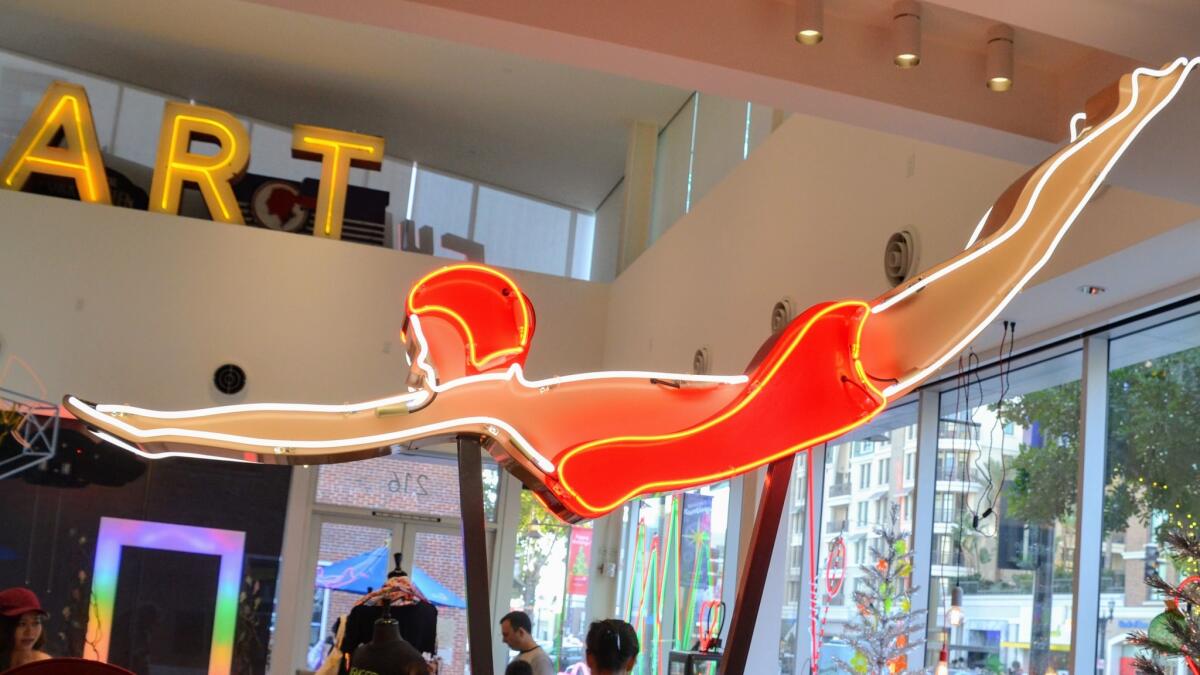
Why: Decorative and delightful, the works that light up our lives at Glendale’s Museum of Neon Art are part art and part science and all fascinating.
What: In 2015, the museum moved from downtown Los Angeles, where it had lived since 1981, to Glendale and has been lighting up lives ever since.

For this you can credit the founder of the feast, Georges Claude, a Parisian who invented the neon light in about 1910.
L.A. became a hotbed of neon-ness, thanks to its desire to be the capital of the next big thing and its desire to look the part, beginning in the Roaring ’20s.
The neon at this museum, where exhibits change often enough to encourage repeat visits, is more amusing than unsavory. And as a reminder that nothing lasts forever, Manny, Moe & Jack (the Pep Boys) are not on permanent display, although the museum doesn’t have any plans to move the fellows.
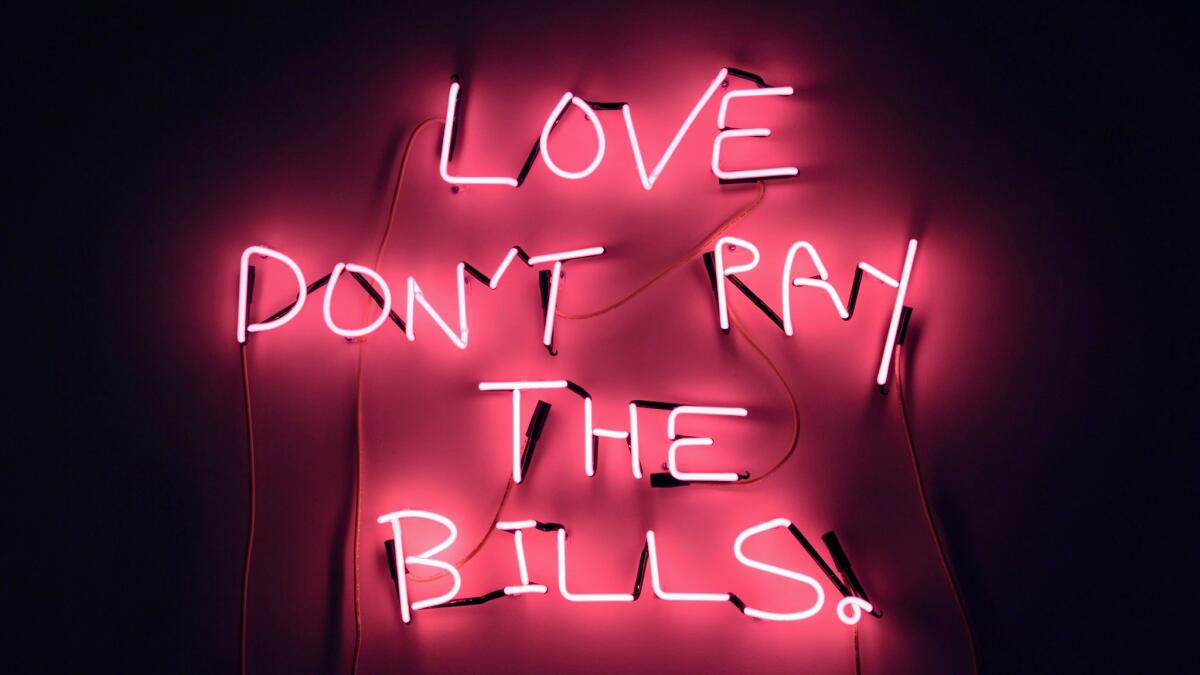
Through Feb. 11, an exhibit called “She Bends: Women in Neon,” takes you inside a creative funhouse of the art form, some works based on words (Eve de Haan’s pink neon “Love Don’t Pay the Bills”), some on objects (Michie Hongo’s faces on skateboard remnants).
Where: 216 S. Brand Ave, Glendale, about eight miles north of downtown L.A.
How much: Museum entrance is $10 for adults ($5 if you live in Glendale), $8 for those 65 and older, and free for those 12 and younger if accompanied by an adult.
Info: Museum of Neon Art
- Share via
Forage with top chefs at the Santa Monica Farmers Market
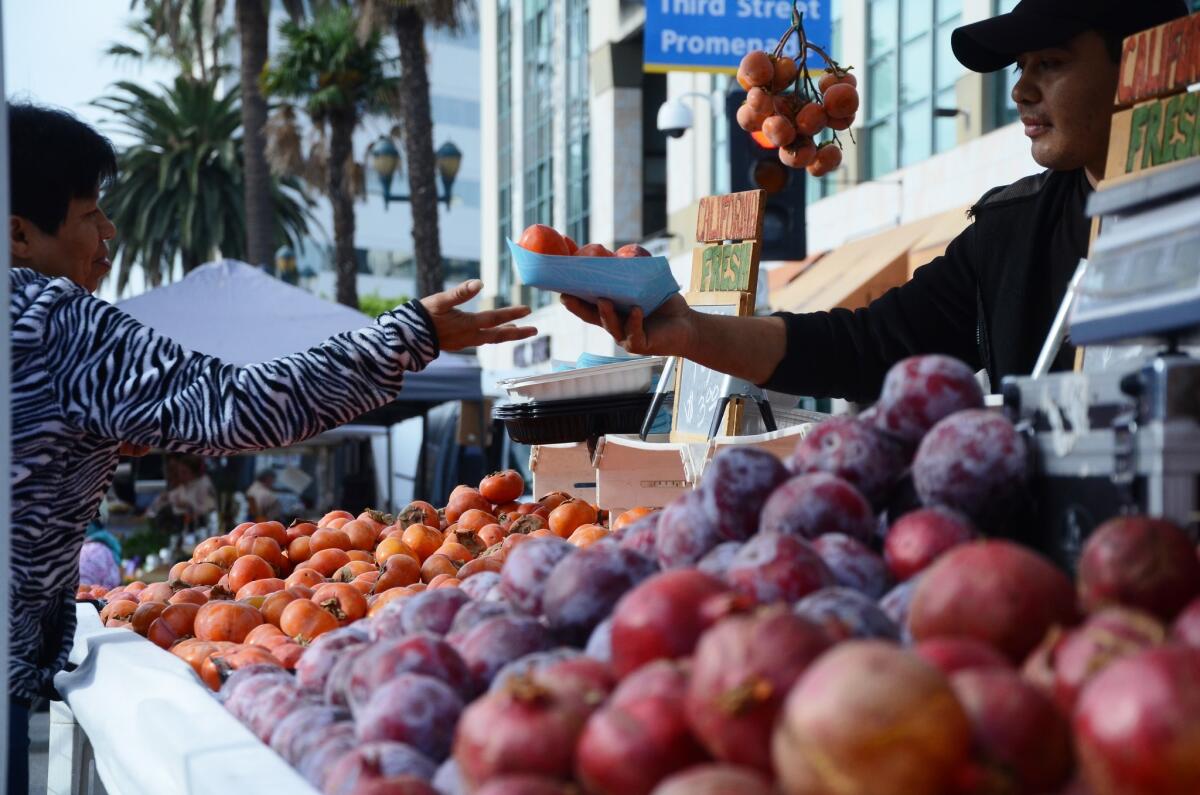
Why: Some of the state’s most accomplished farmers rise before dawn on Wednesday mornings and drive as much as 200 miles, just so they can set up and sell at this market. One reason: The Santa Monica Farmers Market draws some of Southern California’s most decorated (and discriminating) chefs. And the market venue happens to be a tomato toss away from the beach, a cucumber roll from the scores of shops and restaurants along the Third Street Promenade.
What: About 75 farmers set up stalls along a few blocks of Arizona Avenue, which is closed to vehicles on market mornings. If you’re coming by car, you’ll have to cope with nasty traffic and parking, even at 8:30 a.m., but once you’re afoot, life is good. In late fall, you’ll likely find dates from Mecca, apples from Cuyama, persimmons from Fallbrook, pluots from Kingsbug, oranges from Ojai, mushrooms from La Habra Heights. Consider this a reminder that for all its glitz, California remains an agricultural powerhouse. And even if you’re not going to bite into that persimmon, you’ll feel the sea breeze and hear the banjo player at Arizona and 2nd, or maybe the guitarist a block to the east.
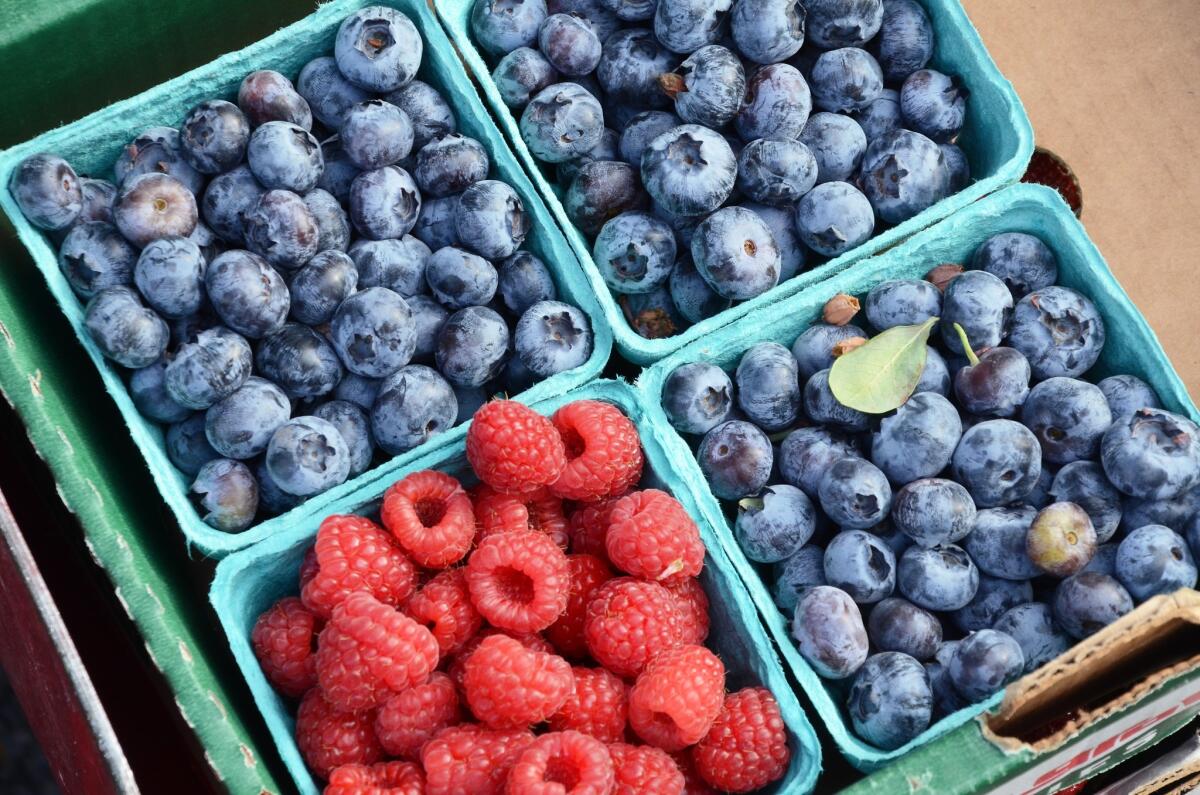
The market was born in 1981, and the stampede of kitchen professionals began soon after. Noting that close relationship between growers and chefs, Saveur magazine in 2016 labeled this “L.A.’s best farmers market.”
Still, it’s good to remember that other markets operate on Santa Monica’s Main Street (Sundays) and in the city’s Virginia Avenue Park (Saturdays). If you’re farther east, or you’d like more street musicians and more nonproduce merchants, there’s the Hollywood Farmers Market on Sundays from 8 a.m. to 1 p.m. at Ivar and Selma avenues.
Where: The market happens on Wednesdays along Arizona Avenue, Santa Monica, between Ocean Avenue and 4th Street from 8:30 am to 1:30 pm. On Saturdays, a smaller version occupies Arizona Avenue between between 2nd and 4th streets from 8 a.m. to 1 p.m. The corner of Arizona Avenue and 4th Street is 17 miles west of downtown L.A. -- which could take an hour to drive, depending on the hour and day.
How much: In late November, organic pitted Medjool dates from Mecca were $9.50 per pound. Granny Smith apples from Cuyama were $3 a pound. Fuyu persimmons from Fallbrook were $3.50 per pound. Valencia oranges from Ojai were $1 per pound.
Info: Santa Monica Farmers Markets

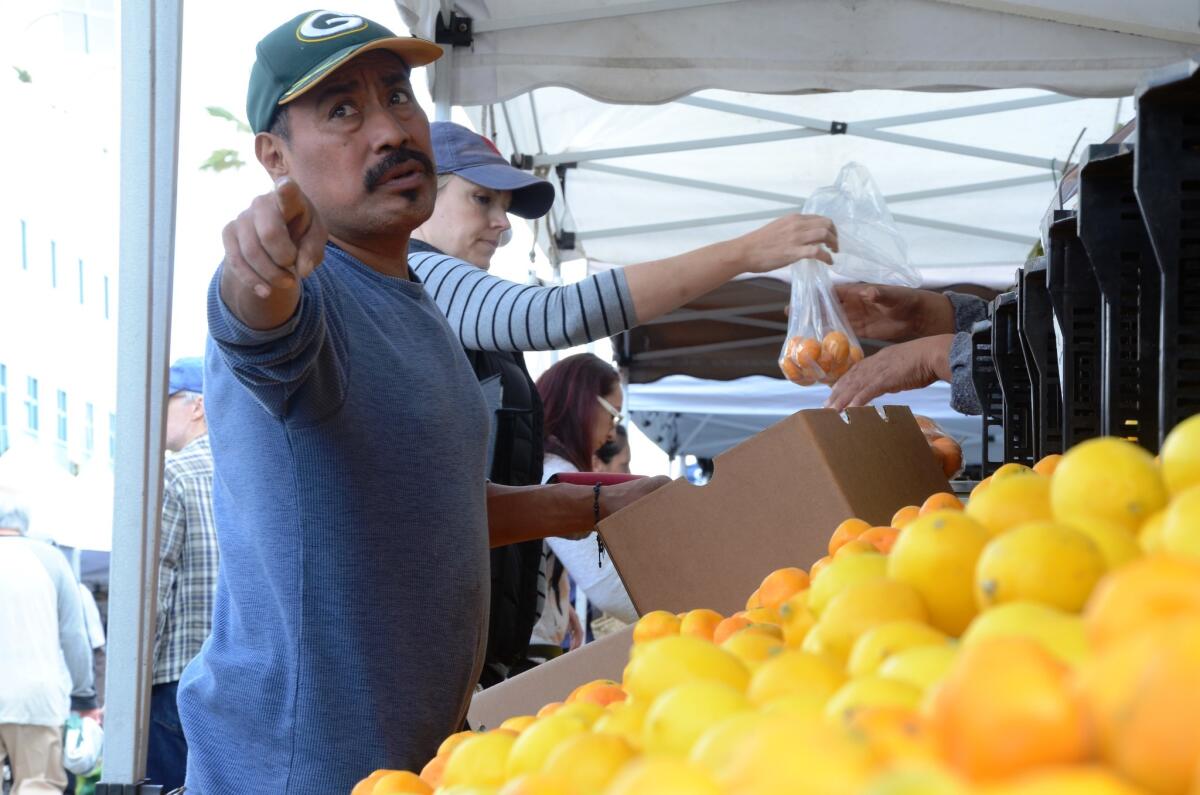
- Share via
Drift in a balloon over northern San Diego County
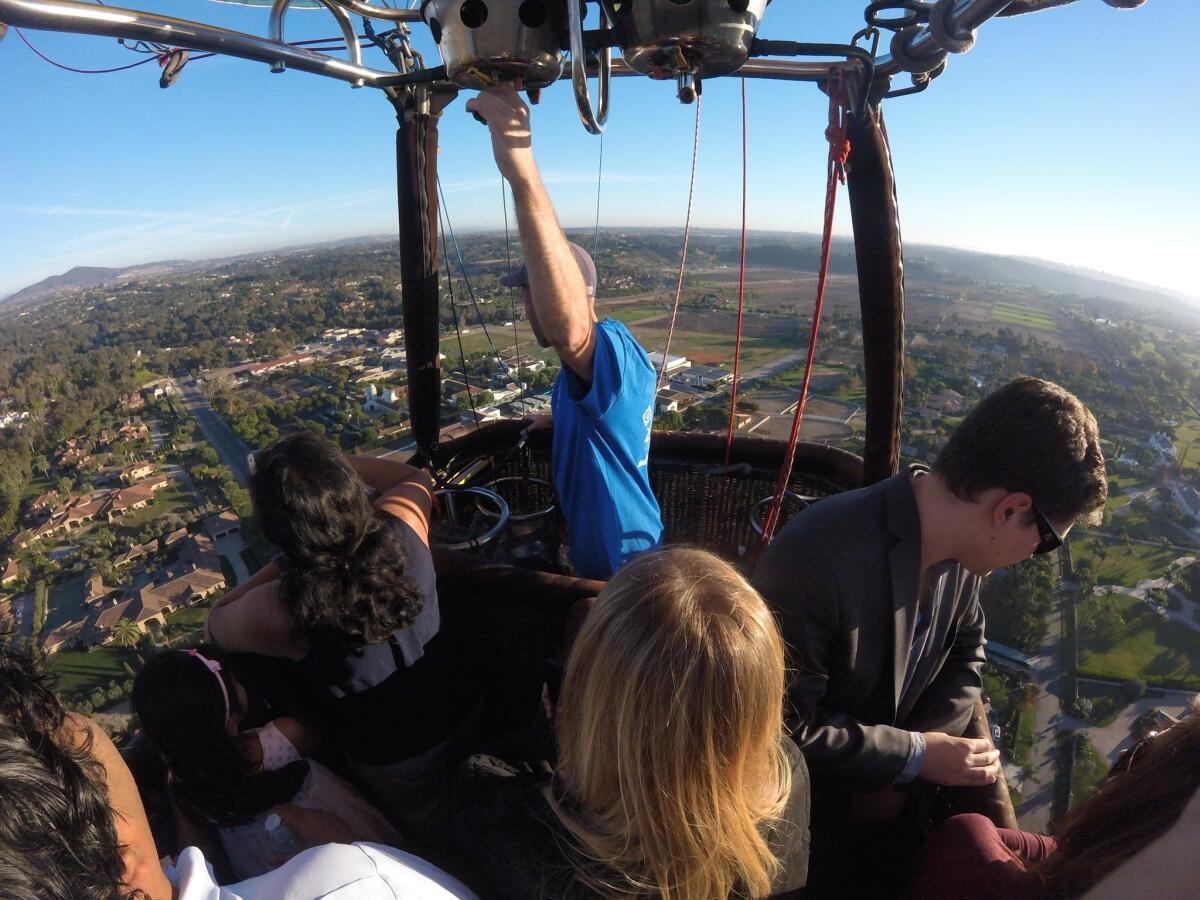
Why: Here’s your chance to climb into a wicker basket and rise 3,000 feet above Fairbanks Ranch, to stand just below a fire-belching burner (which makes your balloon rise), to see sunset from high up, and maybe even to throw shade onto one of Bill Gates’s houses.
What: A balloon ride is a 19th century sort of thrill, and as California’s open spaces get filled in, ballooning options are decreasing. The Napa and Temecula vineyard areas still feature plenty of balloons (which usually launch in early morning, when winds are calmer and temperatures are lower). The Palm Springs and Santa Barbara wine country areas have some too. But balloons are a rare sight along the California coast, so I grabbed a chance to soar above northern San Diego County. Though balloon pilots strive to keep their aircraft above land, the views from on high include miles of ocean and the red tile roofs of countless Mediterranean-style mansions.
Rides typically last 45 to 60 minutes (depending on which way the wind blows), pilots are permitted by the Federal Aviation Administration, and it’s traditional to celebrate afterward with a glass of Champagne. In northern San Diego, it’s often a sunset operation flown by a team that started their day with a flight in Temecula.
My ride in late November, operated by Compass Balloons, featured seven passengers and a pilot. (Minimum age: 5.) We launched near the Vegetable Shop at Chino Farm, (which sells produce to some of the region’s most admired restaurants). We inflated, climbed aboard, drifted over the Morgan Run golf course, and gazed down on Fairbanks Ranch, Rancho Santa Fe, Black Mountain and Carmel Valley. As our round shadow crept across fields, hills and exclusive neighborhoods, pilot Matt Downing pointed out one of Bill Gates’ houses and another that once belonged to philanthropist Joan Kroc. We touched down smoothly about 3 1/2 miles east of where we took off.
I’m glad I did it when I did. Compass Balloons owner Evan Munnelly warns that flights in this area may cease within a year because take-off and landing spaces in the area are vanishing so rapidly.
Where: Though several companies, including Compass, Sky’s the Limit and California Dreamin’, mention Del Mar in promoting their balloon flights, the vessels usually take off and land farther inland. For my Compass Balloons flight, we met in an Encinitas park-and-ride lot (1969 Villa Cardiff Drive, Encinitas), then the crew drove us to the launch spot. Our meeting spot was 97 miles southeast of downtown L.A., 24 miles north of downtown San Diego.
How much: A shared ride (with other passengers in a basket that typically holds eight to 10 people) typically costs $150 to $300 per person.
Info: Besides the San Diego companies above, many balloon companies operate in Napa Valley, Temecula and around Palm Springs.
.
- Share via
Drink dessert over an ocean view at La Jolla’s La Valencia Hotel
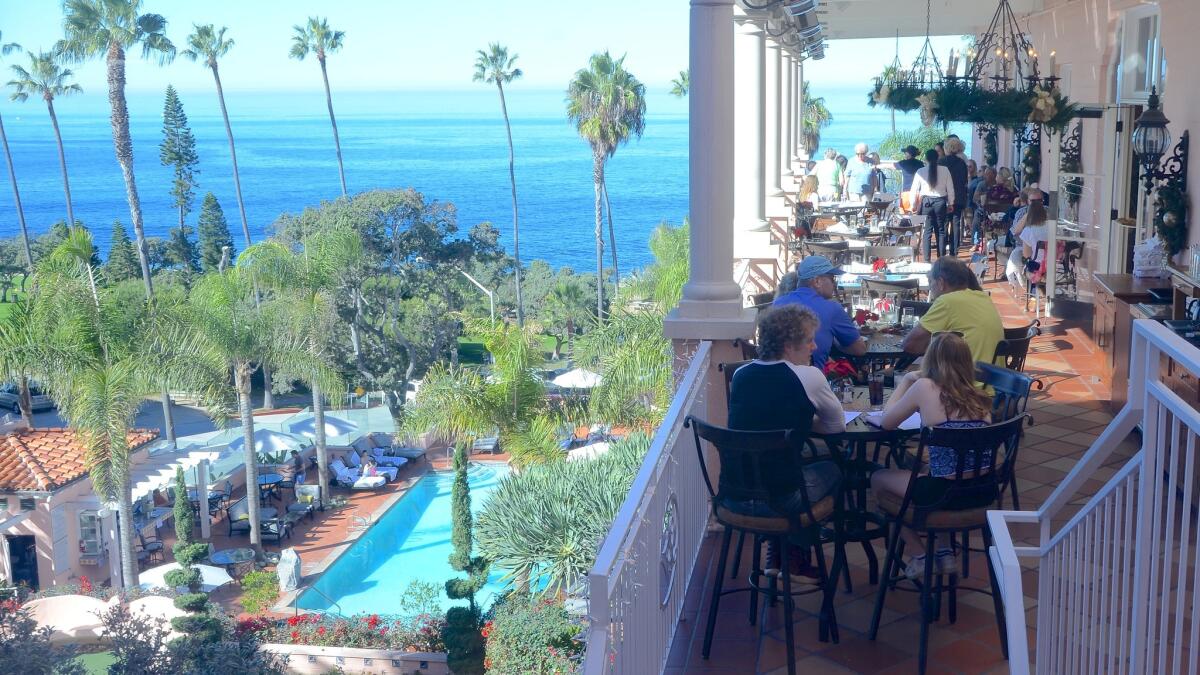
Why: Life can be seriously sweet at this hotel, which was built in 1926 with a big La Jolla Cove view and anchors a neighborhood of ultra-spendy shops and glitzy galleries. Since the days when Gregory Peck hosted other La Jolla Playhouse luminaries in the hotel’s Whaling Bar, La V (as many locals know the place) has offered a frothy concoction known as a Whaler. Picture a milkshake, enlivened by Kahlua, brandy, coffee, whipped cream and various mystery ingredients.
What: The 114-room hotel has long been known for its pink paint job and Spanish Mediterranean style. In the course of ownership changes, expansions and renovations, the Whaling Bar has slipped away. But its frothy legacy remains. Grab one of the 15 or so tables on the terrace of the hotel’s signature restaurant, The Med, order a Whaler for dessert, and don’t plan on operating any heavy machinery for some hours. (If you think you see a Kardashian, it may not be a hallucination; members of the family have been dropping by for years.)
Where: 1132 Prospect St., La Jolla, 112 miles southeast of downtown L.A., 14 miles northwest of downtown San Diego.
How much: A Whaler costs $14. Main dishes in The Med are priced at $15 to $24. (I can vouch for the snapper ceviche.) Rooms for two typically rent for $289 and up.
Info: La Valencia Hotel
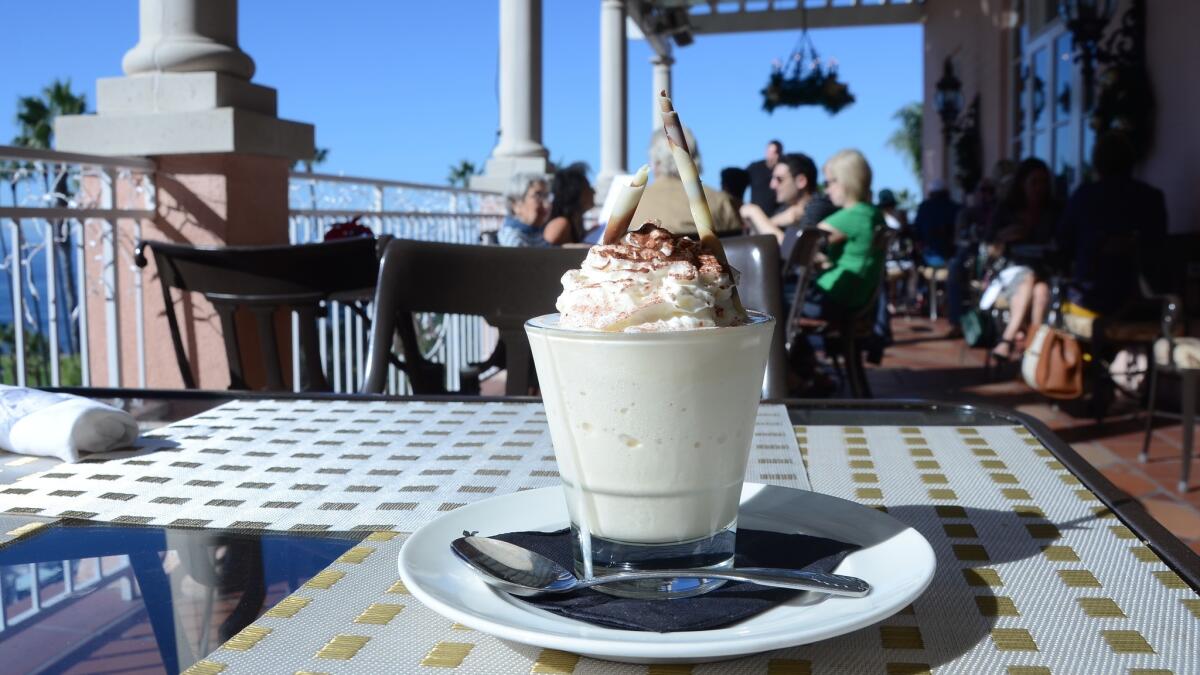
- Share via
Find deep-fried pleasure at a roadside farm stand near Palmdale
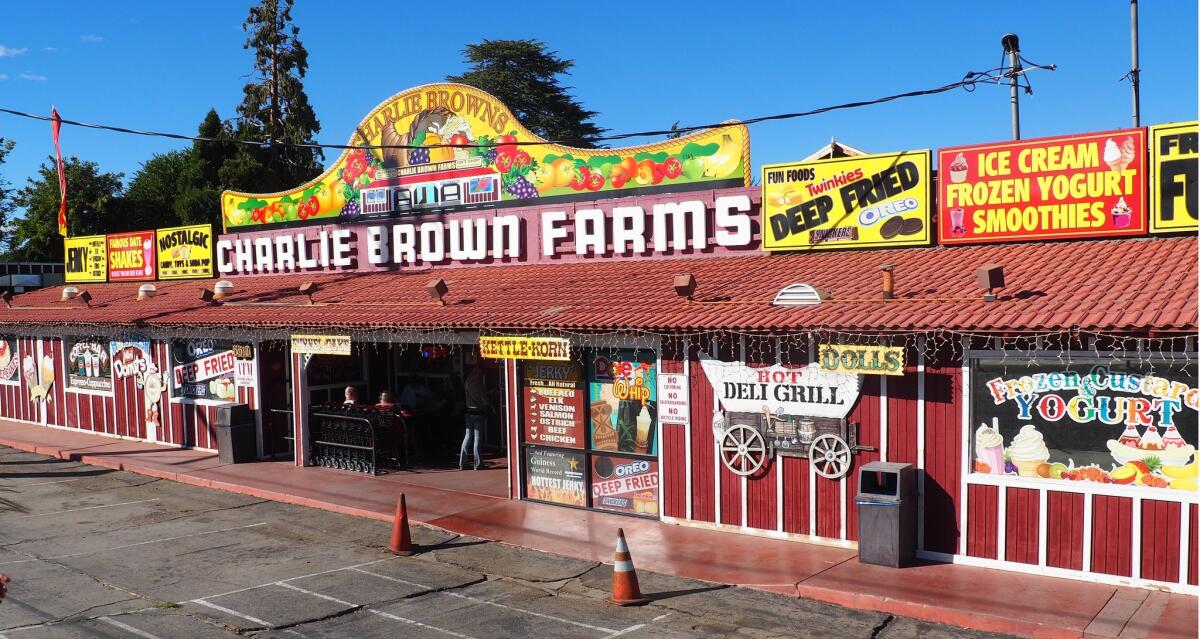
Why: Maybe you’ve finished a hike through the Devil’s Punchbowl and you’re hungry. Or you’re looking for unexpected holiday gifts. Or you’ve been hit by a craving for deep-fried fair food and it’s not fair season. For all these reasons and more, seekers like you end up at Charlie Brown Farms near Palmdale, where all your snack/drunk food fantasies, and your dreams of owning life-size replicas of the “Blues Brothers,” collide and come true.
What: What started as a fruit stand in 1929 is now a six-acre hodgepodge of stores, a restaurant and a snack shop. The main building is a hokey cabin with advertisements for the various tchotchkes and snacks inside. From the road, it’s impossible to miss with signs that scream “collectibles,” “funnel cake,” “smoothies,” “jerky,” “Dole whip.” And just off the side of the building, an enclosed area with dinosaur statues. You may get whiplash trying to take it all in.
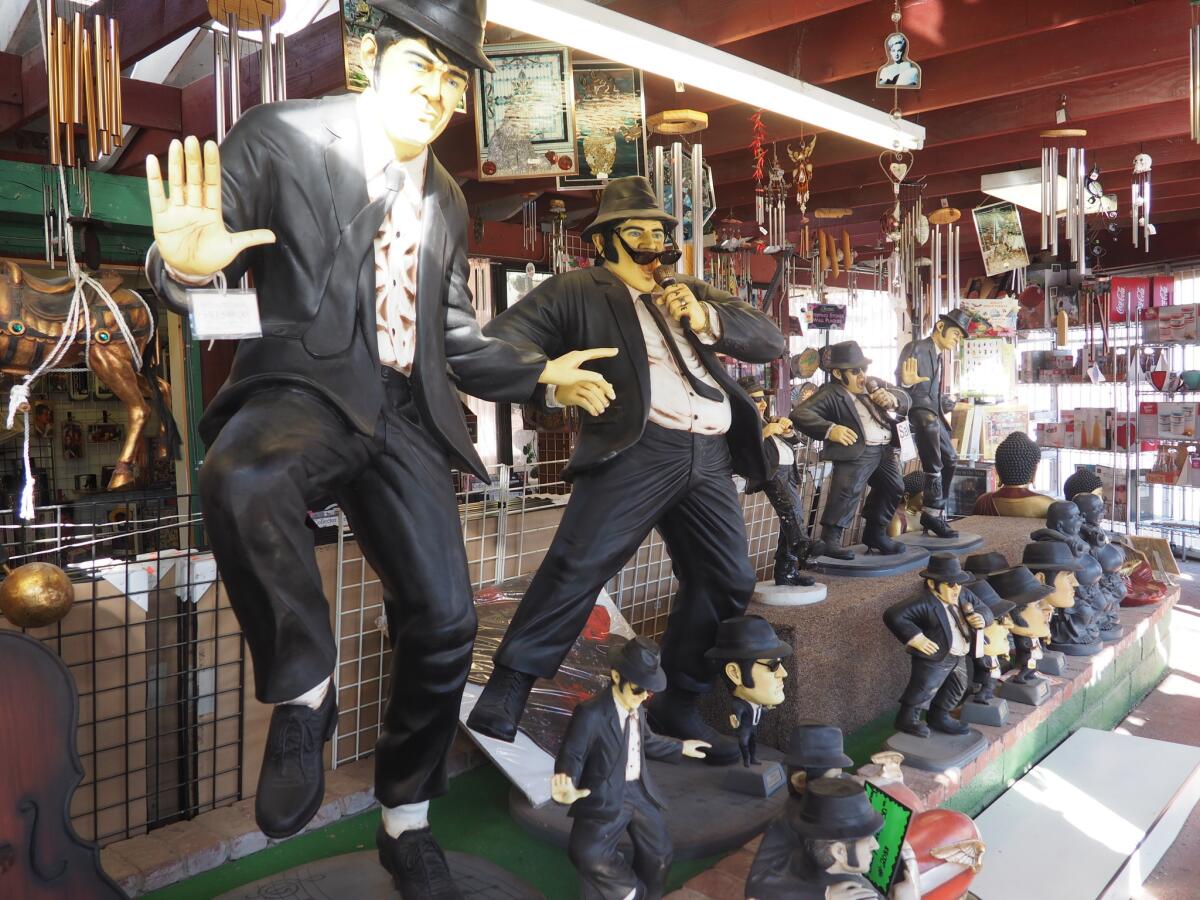
Once through the front door you experience sensory overload. Directly in front of you is a rack of jerky (the store boasts more than 60 kinds, including elk and ostrich).
To the right is a counter where you can order milkshakes, fried candy bars, Texas-style barbecue, funnel cakes, ice cream and a host of other foods any decent doctor would advise you stay away from. To the left, packaged nuts, candy, a room where you can fill your own honey jar, a room devoted to pickles, a room devoted to soda, a fudge counter, and all that food is mixed in with things like raccoon figurines and coffee mugs.
This is also where you can find raw frog legs for that stew recipe you’ve been dying to try. And alligator meat too. But past the fudge counter is where things really start to get weird. There are rooms completely lined with dolls from all over the world. A little creepy, but if you’re in need of a doll (seriously, any doll), this is the place to find it. The life-size “Blues Brothers” statues I mentioned earlier? They’re on the way to the doll rooms.
Out back is a patio with tables and chairs, where you can break open that package of elk jerky or come down from that sugar rush of deep-fried Oreos. You could wander around this place for hours and not see everything. But it’s sure fun to try.
Where: 8317 Pearblossom Highway, Littlerock, a 17-minute drive from downtown Palmdale and about 65 miles northeast of downtown L.A.
How much: Depends on what you’re in the mood for. Barbecue plates start around $11.50, the deep fried Oreos and Snickers are around $4 for each order, the jerky is around $8 a bag depending on the size, and the knick-knacks will range in price. If you’re not a fan of lots of people in tight spaces, plan accordingly.
Info: Charlie Brown Farms
- Share via
Join the elks club near Trinidad’s classic red schoolhouse
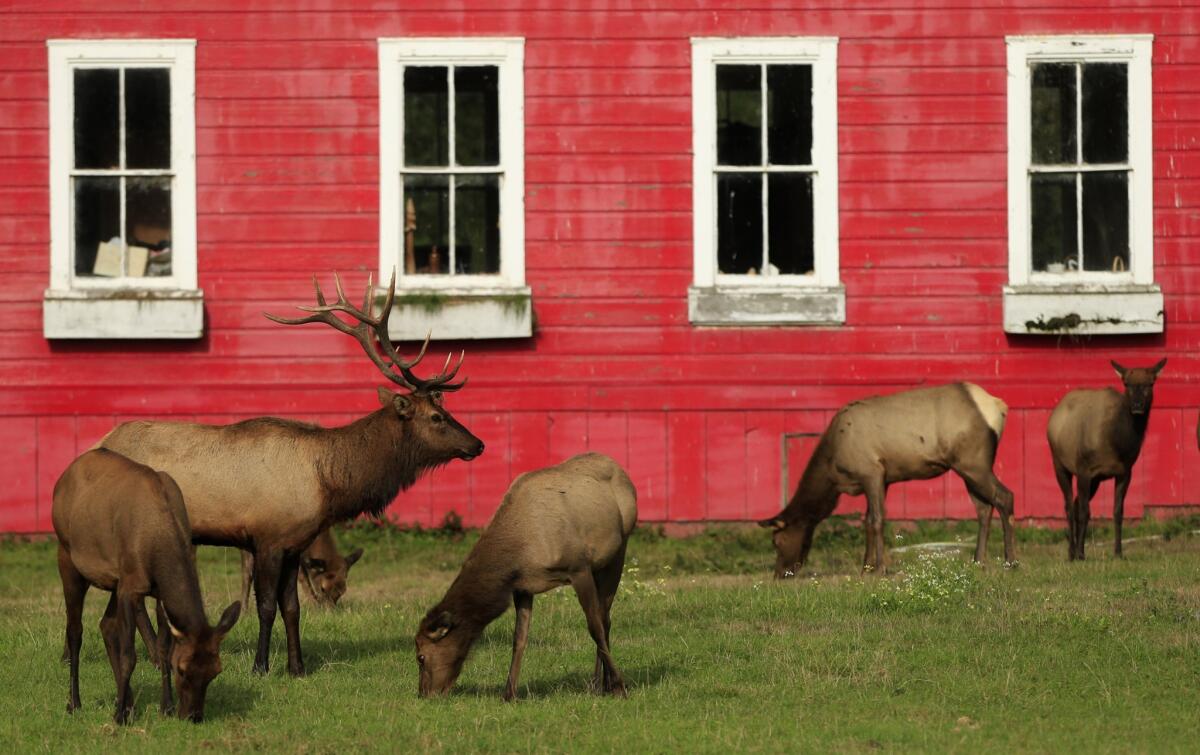
Why: There are several kinds of elk in North America. The Roosevelt elk are the largest, and for years, a bunch of them have been hanging around in the meadow next to the old schoolhouse at the Elk Country RV Resort in Trinidad, which is in Humboldt County.
What: Millions of Roosevelt elk once roamed the Pacific Northwest. By 1907, fewer than 100,000 were left. Now the numbers are bigger. The lucky dozens who hang out near the RV resort seem to have a very good life. The resort, just off Highway 101, amounts to about 200 acres — tall trees, little lake, frequent fog, campsites for RVs and tents, a scenic red barn to go with the scenic red schoolhouse. Half a mile to the north is Stone Lagoon, part of Humboldt Lagoons State Park. Because temperatures along the coast are relatively mild, the elk don’t bother to migrate.
But when you show up to admire them, don’t get too close. Experts calls them “wild and unpredictable animals” for a reason: Sometimes they charge. In February and March, the males typically shed their antlers. In May and June, calves are born. From late August through mid-October comes rutting season, when wildness and unpredictability reaches a peak. And the males can weigh more than 1,000 pounds.
Elk sightings are also common in nearby Prairie Creek Redwoods State Park.
Where: 216 Idlewood Lane, Trinidad, 36 miles north of Eureka, 307 miles north of San Francisco, 680 miles northwest of downtown L.A.
How much: Campsites run $25.50 to $40.80, but you need not sleep there to watch the elk.
Info: Elk Country RV Resort
- Share via
Soak in the view of California’s Grand Canyon in Anza-Borrego Desert State Park
Why: Perched at the end of the rising desert floor, Font’s Point gives
onlookers a majestic view of California’s badlands, several hundred
feet below. Though far flung, Anza-Borrego Desert State Park is an expansive feast of nature well worth the time it takes to get there.
What: Font’s Point is part of a remote and sculptural landscape that was millions of years in the making. The vista’s ridge yields to a maze of sinuous channels, razorback ridges and sandy, sun-baked hills. Bring a chair, a picnic and perhaps some friends. The scene is best at sunrise and sunset when the rock formations glow with honey-dipped hues. Even better is a visit during a full moon. The accumulation of photographers at these times is a testament to the spectacle.
The brackish waters of the Colorado River and the Gulf of California
converged here long ago, making the area a dumping ground for
sediment. Today, the windswept and eroded rock is flush with the
fossils of animals and marine life that inhabited this once verdant
terrain.
Four miles of soft dirt road leads up to Font’s Point, so check the
road conditions before your departure. Depending on the road’s status,
a high clearance or 4WD vehicle may be necessary.
Closer to the park visitor center, the Borrego Palm Canyon Trail is a popular 3-mile round trip that begins with a trailhead at the end of the main campground road.
Where: In the heart of the Borrego Badlands, outside of Borrego
Springs, 168 miles southeast of downtown L.A.
How much: Free until recently. On Nov. 3, the state parks system started collecting a day-use fee of $10 per vehicle on Fridays, Saturdays, Sundays and holidays at the Anza-Borrego visitor center.
Info: Anza-Borrego Desert State Park
- Share via
Rent a Duffy for a glittery tour of Newport Harbor
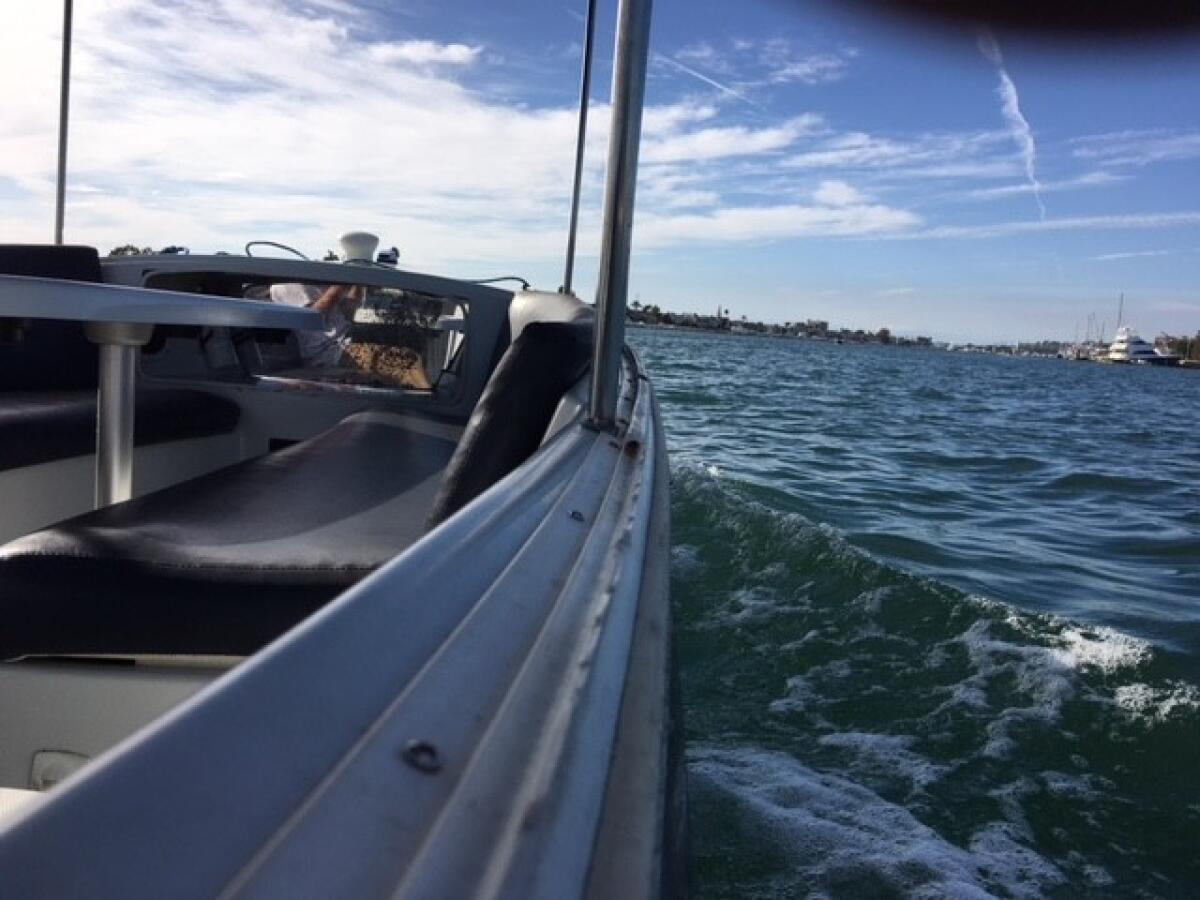
Why: Newport Bay seems made of glitter. Rental boats are plentiful and the harbor is easy to navigate and full of nautical eye candy. Board an electric boat and take a breezy tour.
What: Newport Beach is the Beverly Hills of Orange County. The setting for multiple TV shows, it represents much of the California dream – giant homes and sensational yachts. The harbor, home to 9,000 vessels, is a recreational wonderland.
The Duffy, a popular brand of rental boats, is an excellent way to see it all. Available at a half dozen rental places around the harbor, the slow-moving vessels are as easy to operate as a golf cart.
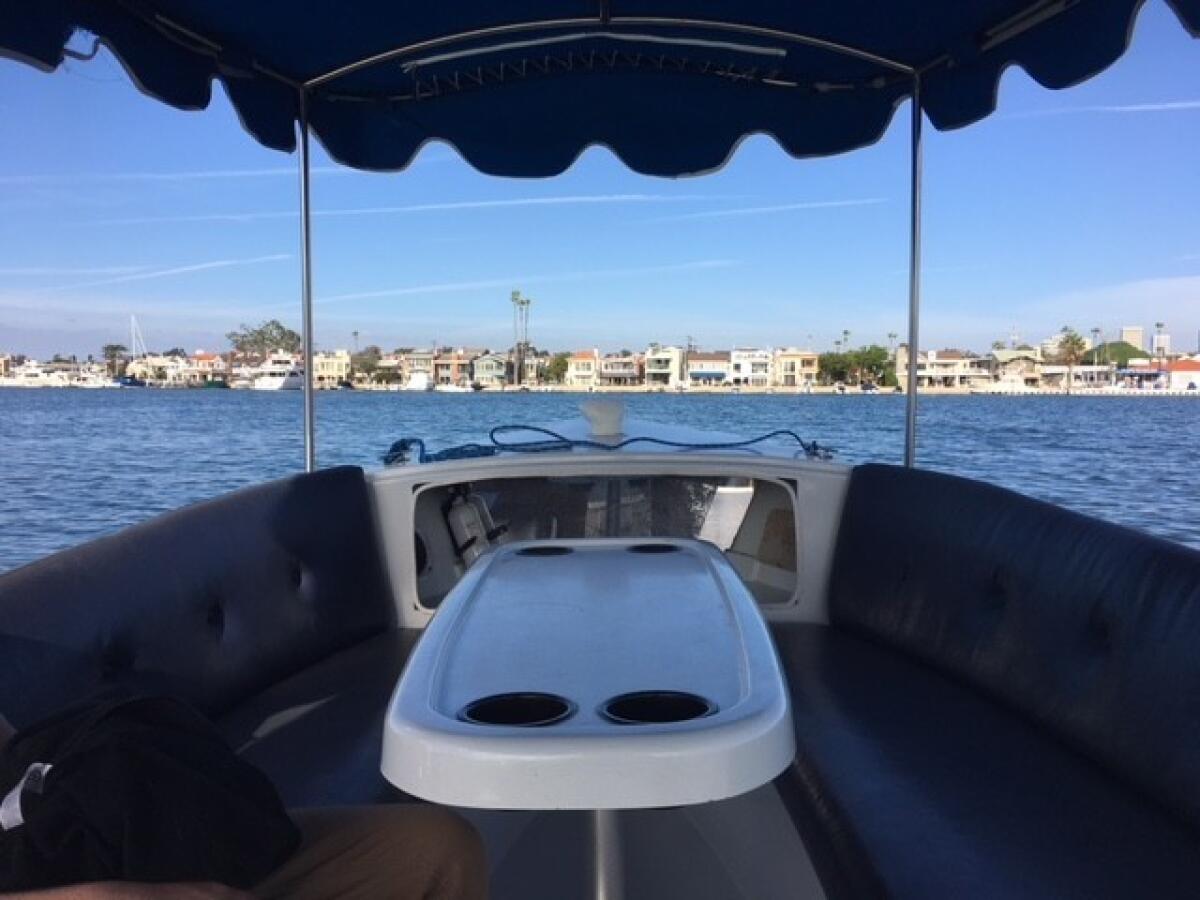
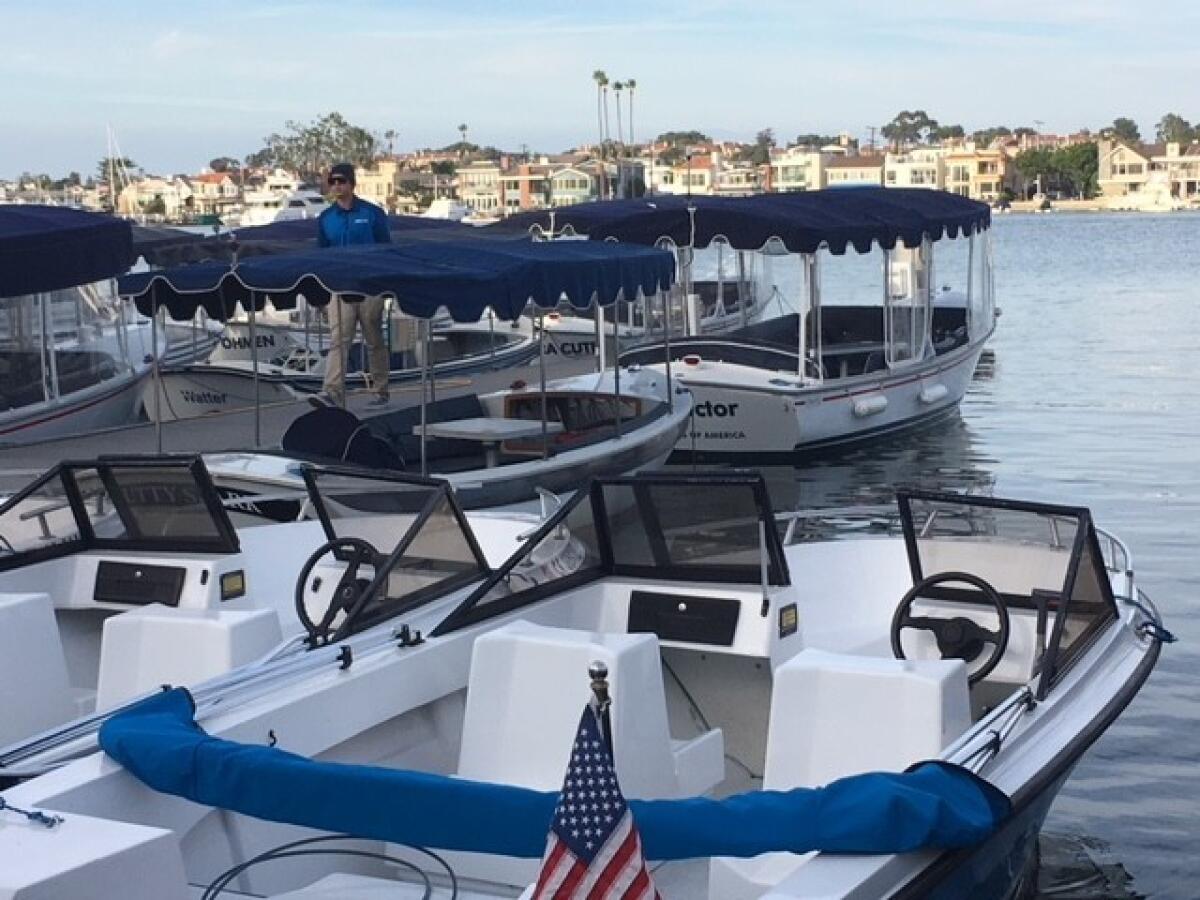
A popular route is around Lido Island, the thumb-shaped isle on the western side of the harbor, where the bridge leaves plenty of space. Note that many of the bridges surrounding neighboring Balboa Island are too low to accommodate the surrey-topped electric boats. A lap around Lido takes about an hour, a typical rental period.
Or, head east past the Fun Zone on Balboa Peninsula, past Balboa Island and toward the mouth of the harbor. You’ll be warned not to go near the outlet, since the electric boats aren’t built to handle bigger waves.
Pontoons, kayaks, paddle boards and powerboats are also available at rental locations around the harbor. Boat Rentals of America, on the peninsula near the Fun Zone, offers walk-up rentals, but recommends reservations for weekends, no matter the time of year.
Where: Newport Beach is in Orange County, 46 miles, or 90 minutes, from downtown L.A.
How much: Duffy electric boats that accommodate up to eight passengers rent for about $85 an hour.
- Share via
Connect with artisans (and beer) at Crafted, a makers’ market in a San Pedro port warehouse
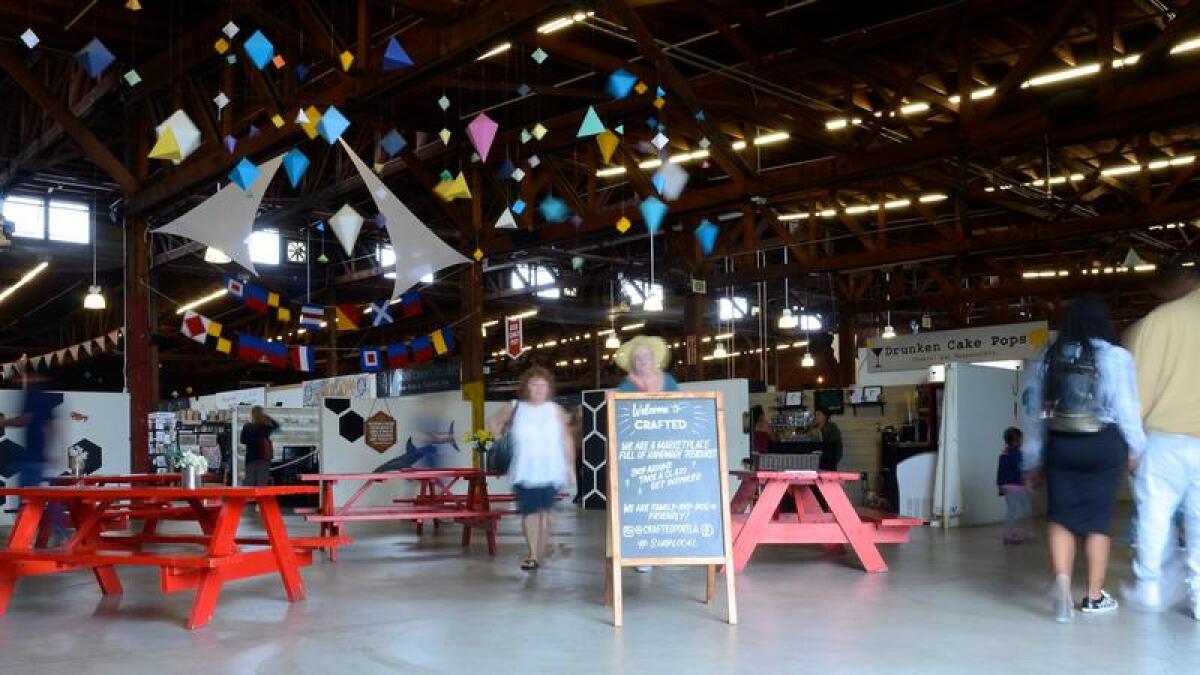
Why: It’s a vintage warehouse down by the port, full of artists, designers and makers, neighbored by a craft brewery. And you’re not done with your holiday shopping yet.
What: Crafted was born five years ago, as the “maker” movement began to bloom nationwide. It’s open Fridays, Saturdays, Sundays and the first Thursday night of every month in the L.A. Port’s Warehouse 10, built in the 1940s. When I stopped by in mid-September, there were about 50 vendors in place, hawking iPhone photo prints, snacks, sculptures, succulents, textiles, vintage reconditioned furniture, soap, you name it. Outside, the San Pedro Festival of the Artists was in full swing-- one of many special events that use picnic tables and patio space between the old warehouses.
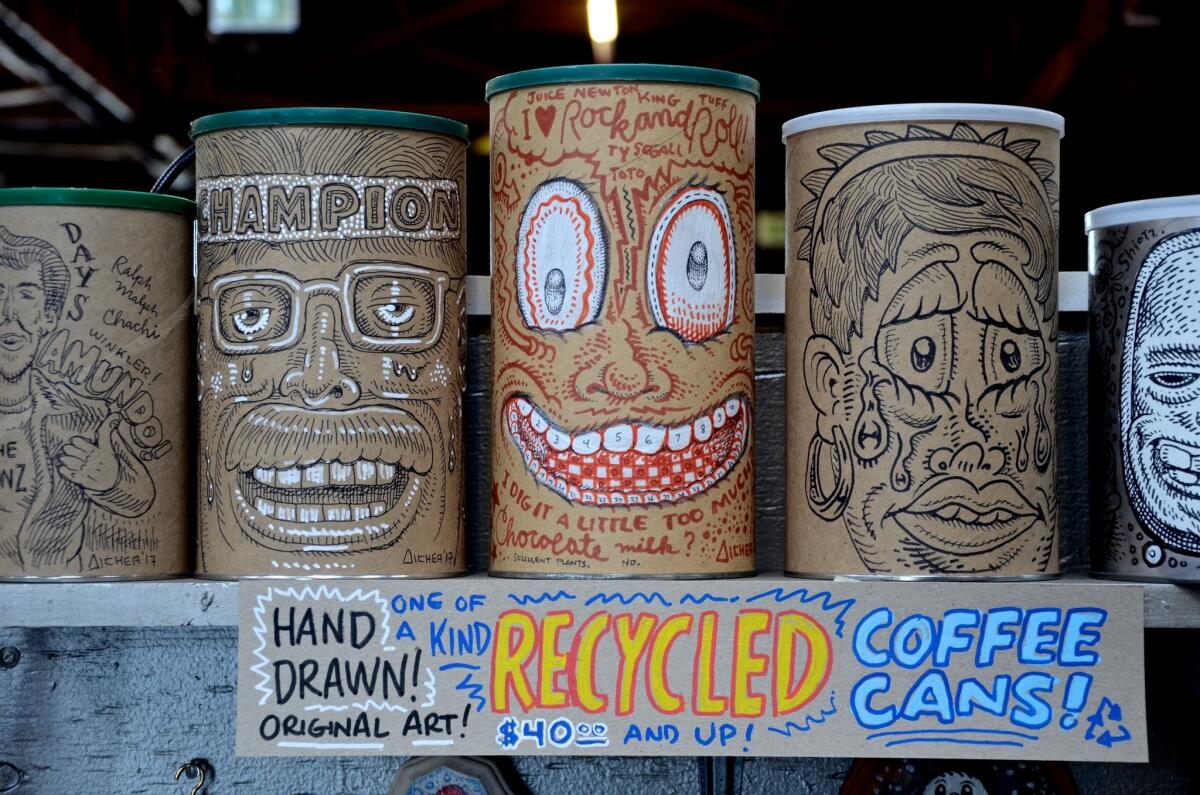
Since 2016, the artisans have been joined by Brouwerij West, a craft beer operation and tasting room that fills about half of Warehouse 9. On weekends, there’s usually a food truck (or two or three) on hand, and often live music.
Coming eventually: a food hall in the other half of Warehouse 9.
Where: Warehouse No.10, 112 E. 22nd St., San Pedro, 26 miles south of downtown L.A.
How much: Parking and admission are free.
Info: Crafted

- Share via
Salute General Grant (the tree) in Kings Canyon National Park
Why: Any way you look at it, General Grant stands tall. First of all, it’s a massive sequoia, one of the largest living things in California. Moreover, the White House has named this “the nation’s Christmas tree.”
What: General Grant is 268 feet high, the base of its trunk is 107 feet around. In 1925, Central Valley resident Charles E. Lee (an officer of the Sanger Chamber of Commerce) asked President Coolidge to have this giant sequoia in the Grant Grove area of Kings Canyon designated the national Christmas tree. In 1926 the president complied. Ever since, the Sanger Chamber has staged an annual Trek to the Tree, drawing hundreds of people each year for a winter program that typically includes songs and prayers. No tinsel, no lights. Just the tree as it has stood for about 2,000 years, and a wreath contributed by park rangers.
This year’s event will be Sunday, Dec. 10, at the base of the tree. and it’s a free admission day in the park. For reservations or information on shuttle buses to the site, contact the Sanger Chamber of Commerce by phone at (559) 875-4575 or by e-mail at sangerchamber@gmail.com.
Whether you reach General Grant in holiday season or not, you can impress the other tree-lovers by pointing out that in 1956, Congress gave General Grant another distinction, naming it the nation’s only living national shrine in honor of the men and women of the Armed Forces.
And if you really love the idea of big trees with high ranks, make a bonus stop at the General Sherman Tree in Sequoia National Park. It’s bigger, about 275 feet high. In fact, it might be the world’s largest living thing, depending on how you quantify coral reefs, fungus networks and redwoods.
Where: General Grant stands along a 0.8-mile paved loop trail from the General Grant Grove parking lot in Kings Canyon National Park. The grove is 245 miles north of downtown L.A. And it’s more than 6,000 feet above sea level, so snow is common in winter. Be sure to check weather and road conditions before driving into the area.
How much: Admission to Kings Canyon and Sequoia National Parks (which operator jointly, as if they were single unit) is $30 per car for up to seven days.
- Share via
Ski in the morning in the San Bernardino Mountains, surf in the evening, using these slopes as your launch point
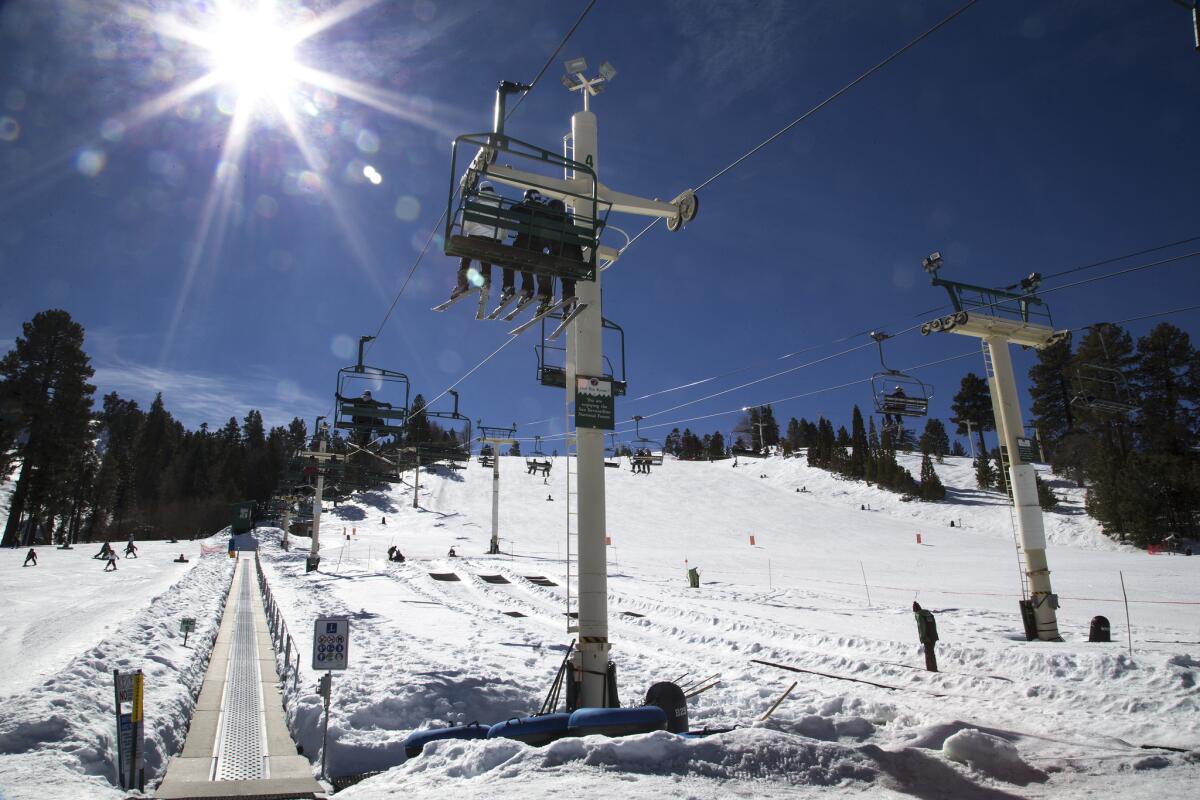
Why: SoCal offers the chance to ski and surf on the same day. This would be the snowy part of such a mountains-to-the-beaches day.
What: Bear Mountain and Snow Summit are two slices of the same cake. Two miles apart, the sister resorts are the crown jewels of the town of Big Bear, a couple of hours from the bustle of the big city.
Big Bear is three hours away from downtown Los Angeles, and a world apart from the strip malls and gas stations that muck up much of Southern California. Spring, summer or fall, this alpine lake resort town offers plenty of activities, including boating, hiking and zip-lining.
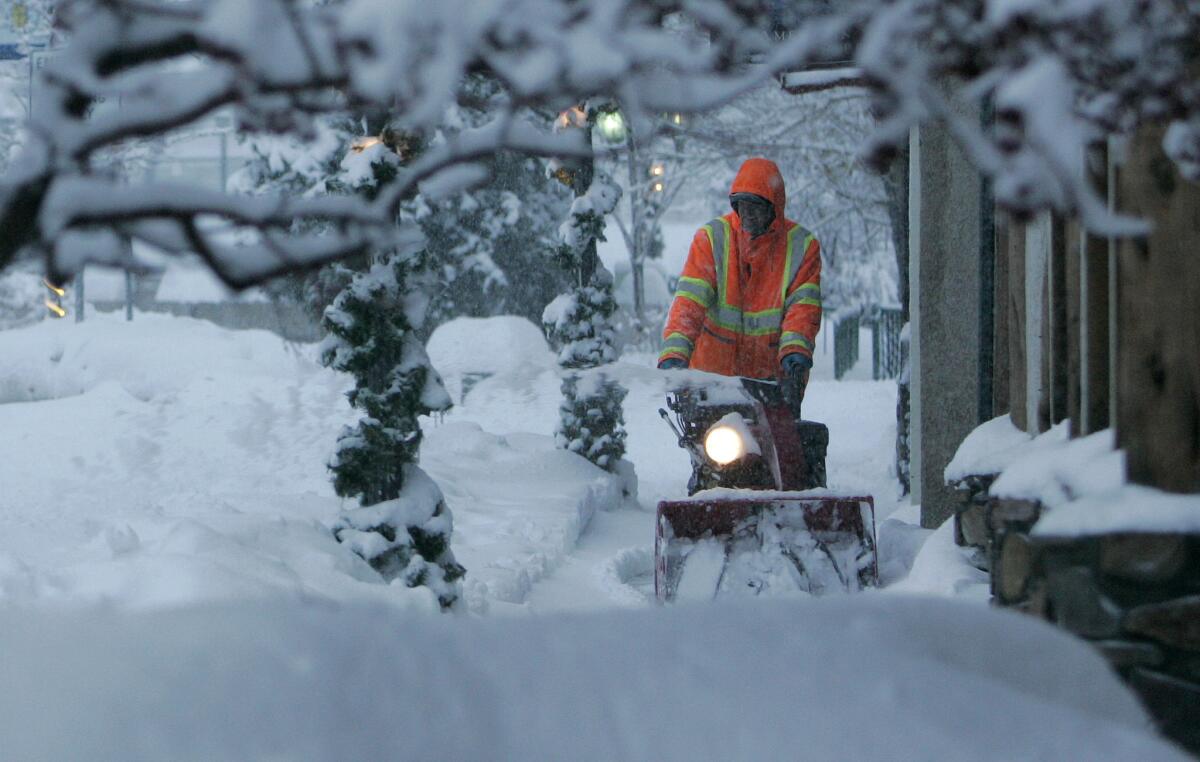
But in winter, its twin ski resorts really come alive. If you think of Southern California as all palm trees and bikinis, visit Big Bear after a winter storm, when the place is buried in several feet of snow and looks like a Christmas card.
In what they offer, the two resorts are very similar, though Summit has the better terrain park. Lift tickets are good for both resorts, and buses run between the two resorts all day. Combined, the resorts offer 27 lifts and four high-speed chairs serving almost 60 runs.
The resorts are just a few minutes from the village, where restaurants, shops and a movie theater await visitors.
The resorts have begun making snow and opened Dec. 8.
As with all mountain visits, note that conditions can change quickly, and chains are usually required on the twisty roads during any significant snow fall.
Where: Big Bear Lake is in the San Bernardino Mountains, in San Bernardino County. It is 97 miles east of Los Angeles.
How much: Advance purchase lift tickets start around $75.
- Share via
See the Klamath River flow into the Pacific from this dramatic overlook in Redwood National Park
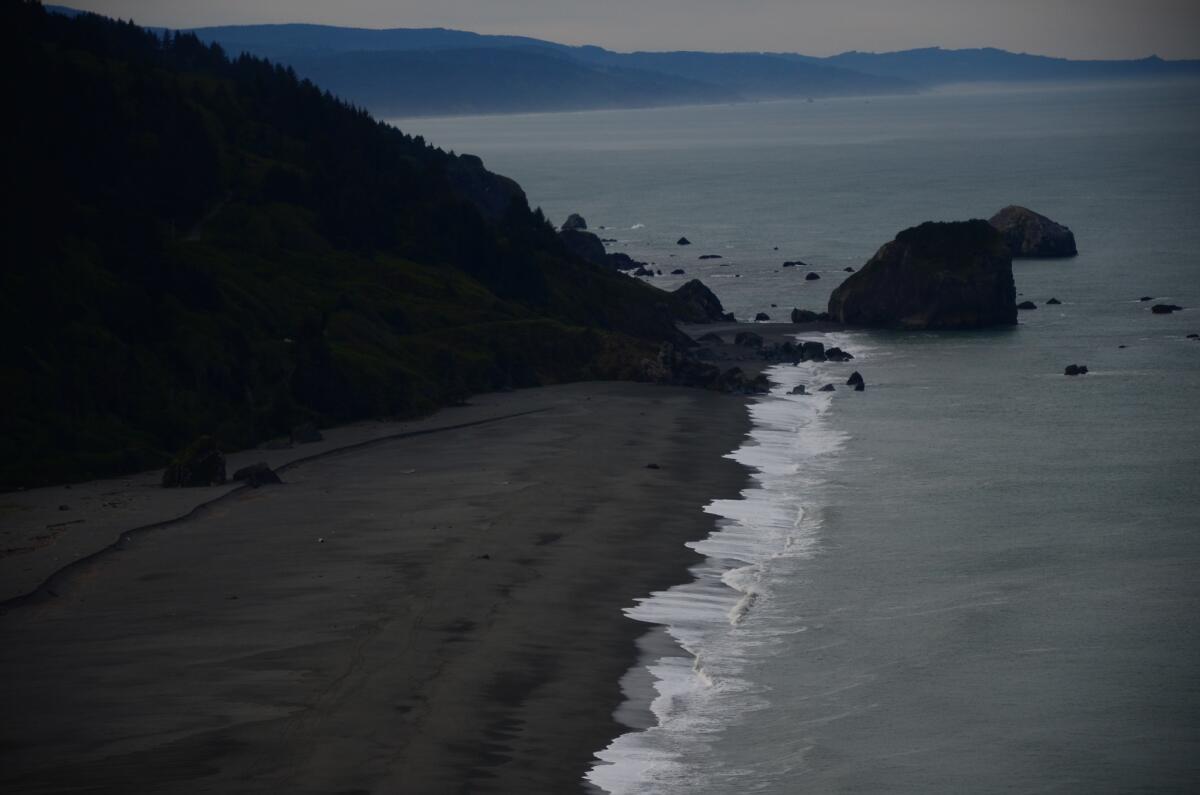
Why: Rugged coast. Big sand spit. Half-forgotten road. Blufftop perch. Despite all these assets, this dramatic corner of Northern California doesn’t get that many visitors. So you’ll probably have it to yourself.
What: Your gateway to the Klamath River Overlook is Requa, a hamlet -- the memory of a town, really -- along the Highway 101 south of Crescent City in Del Norte County. Its main landmark is the Historic Requa Inn, a rustic riverside lodging and restaurant that dates to 1914. If you can work out a way to eat dinner and spend a night there, do it. But don’t stop there. Continue west 1.5 miles (no RVs!) on ramshackle Requa Road (which becomes Patrick J. Murphy Memorial Road on some maps) until there’s no more road, and no more land. That will put you at the Klamath River Overlook. Drink it in. And if it’s May or June, scan the ocean for gray whales. Rangers say they often linger to feed in the waters spilling from river to sea
This bluff is part of Redwood National and State Parks and it includes a modest picnic area. There’s a steep Lower Overlook Trail that will take you about a quarter-mile down the slope, exposing further views. There’s also a Coastal Trail to the north -- follow it for 2.7 miles and you’ll reach Hidden Beach.
But the wide view from the picnic tables may well be plenty for you. There’s something mesmerizing about it -- maybe it’s the moving water. There’s also a good chance of a stiff, cold breeze or fog, just about any time. Bring layers.
Where: Klamath River Overlook, 61 miles north of Arcata, 339 miles north of San Francisco, 713 miles northwest of downtown L.A.
How much: No entry fee.
Info: Redwood National and State Parks
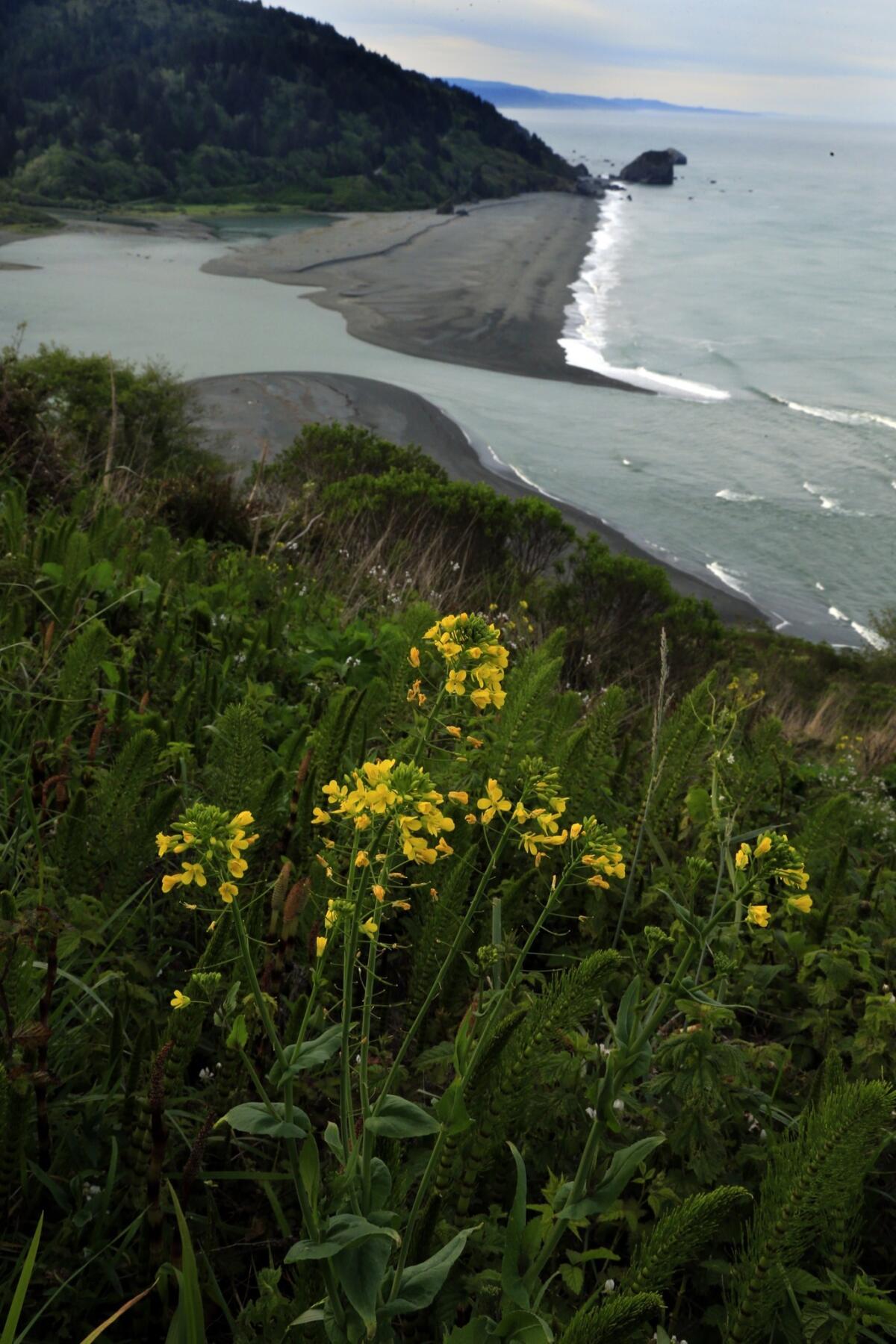
- Share via
Pile the kids in the car, head to Riverside and catch a drive-in movie while you still can
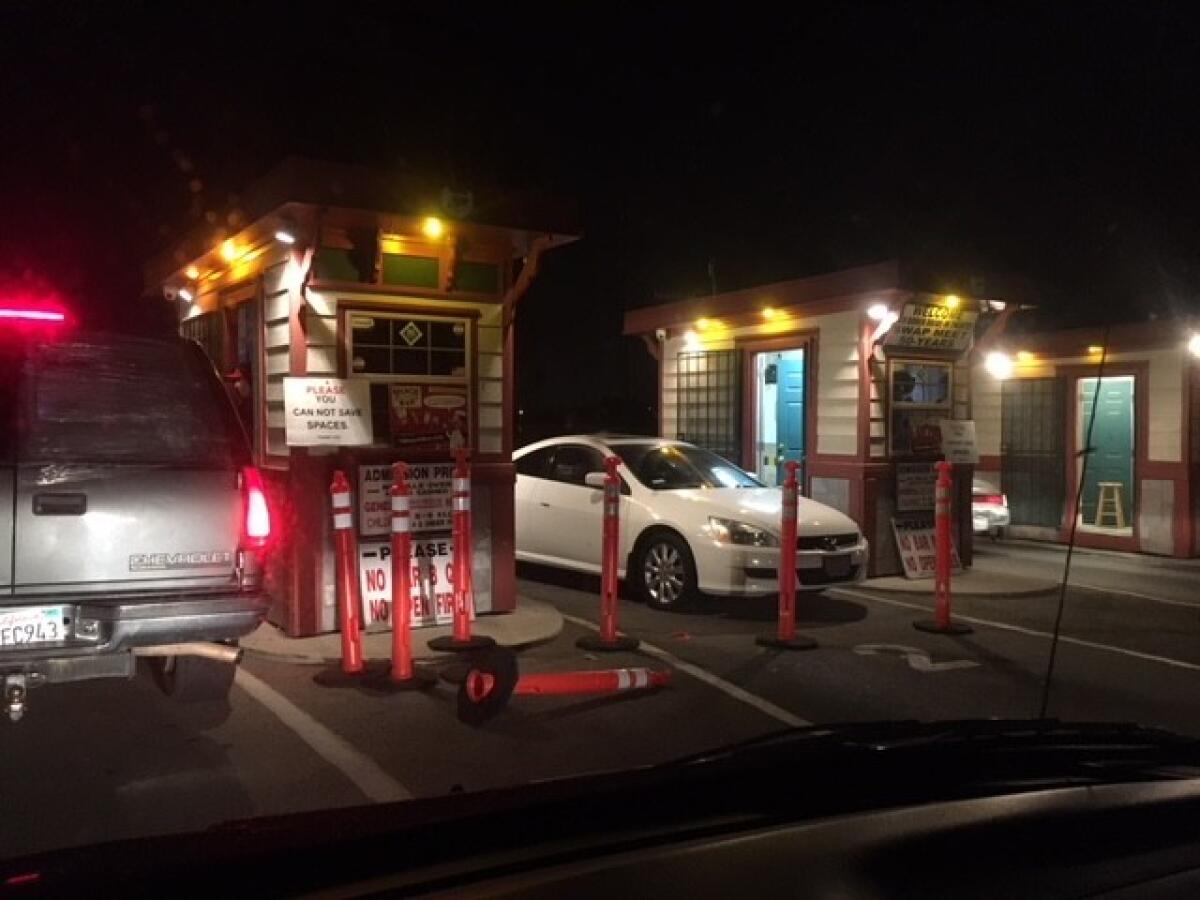
Why: What could be more of a California experience than a Hollywood double-feature viewed from the comfort of your car?
What: In the 1950s, drive-in movies were a staple of American pop culture. These days, they are a novelty. One of the last remaining hot spots lives on at the Van Buren Drive-In in Riverside.
Put the kids in their PJs and pack up the lawn chairs for a fine family getaway at the Van Buren. Opened in 1964 on the site of former orange groves, the three-screen drive-in remains a vibrant local hangout at half the price of your local multiplex. You can even bring your own food.
On weekends, arrive 45 minutes before show time to ensure a decent spot, especially if you’re going to sit outside in your lawn chairs. By showtime, the three lots serving the three screens resemble tailgate parties, with families wrapped in blankets and settled in for a double feature.

SUVs or pickups often pull in with the tail hatch facing the screen, so kids with blankets or sleeping bags can turn the experience into a slumber party.
There’s the traditional snack bar, and prices are fair, at least by movie theater standards. But waits can be 20 to 30 minutes on weekends. Check here for express pickup.
Keep in mind that you’re experiencing a rare phenomenon these days. Once numbering 4,000 across the country, drive-ins are now down to 400 or so. Catch one while you can — not just for the sense of nostalgia, but for a memorable evening at a very fair price.
Where: 3035 Van Buren Blvd., Riverside, 55 miles southeast of downtown L.A. Plan on a drive of 90 minutes to two hours in evening traffic.
How much: Admission is $9 per person; children ages 5 to 9, $1. Major credit cards and debit cards accepted. Open seven days a week. No pets.
- Share via
Taste-test the Thomas Keller restaurant empire in Yountville, Napa Valley
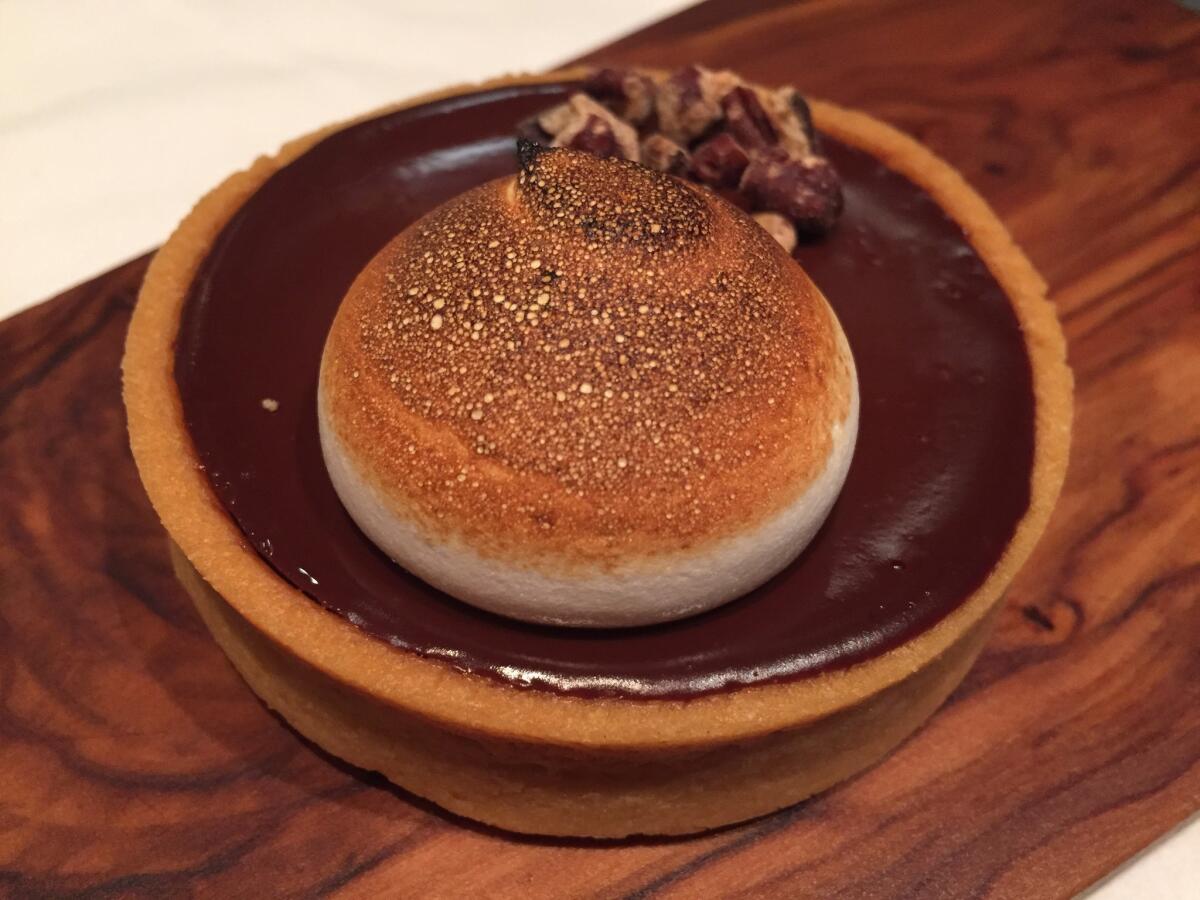
Why: Yountville is a sleepy, genteel little town in the heart of Napa Valley, population about 3,000. And Thomas Keller, one of this nation’s most admired chefs, has three restaurants in Yountville, on the same street. Or four. Or five, depending on how you count.
What: Keller, raised and trained in Florida and New York and renowned for his high standards, has also cooked in acclaimed kitchens in France and Los Angeles, and he has operations in New York and Las Vegas as well. (His Bouchon in Beverly Hills is scheduled to close Dec. 31.) But since he opened the French Laundry in 1994, Yountville has been the seat of his California empire. With three Michelin stars and a nine-course chef’s menu, The French Laundry may be the most celebrated restaurant in the state, and it’s surely one of the priciest.
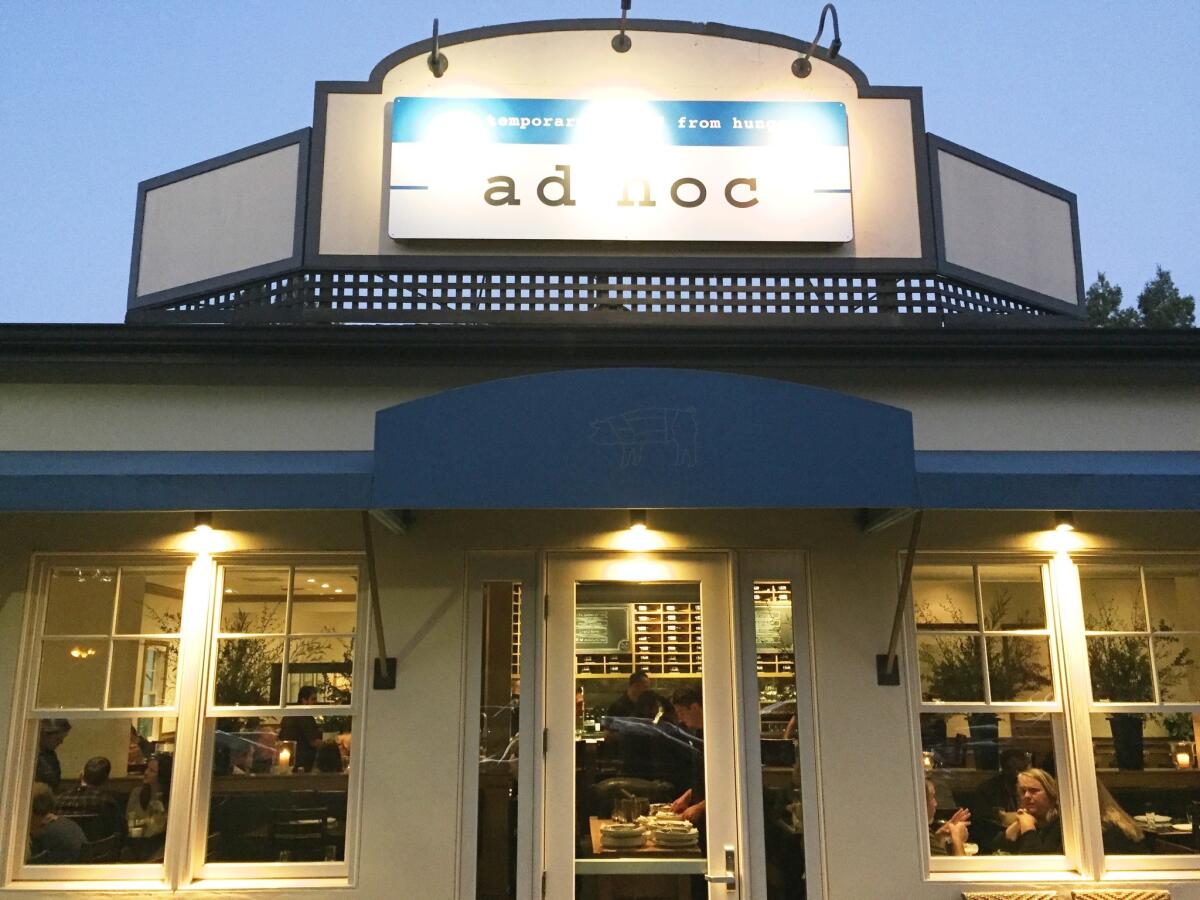
But the chef has give us options. Bouchon opened in 1998, offering French bistro fare. The Bouchon Bakery followed in 2003. In 2006 came Ad Hoc, devoted to American comfort food in a casual setting. (Its humble-brag slogan: “for temporary relief from hunger.”) Ad Hoc’s menu changes daily to take advantage of fresh ingredients, but it’s all built around the chef’s choice for a four-course family-style meal, which includes favorites like pot roast and barbecue. I came before 6 p.m. on buttermilk fried chicken night (a Monday), and found myself in a happily clamorous dining room, surrounded by families, confronting more food than I could eat. (I enjoyed the casual feeling, and I liked the chicken well enough. But I actually enjoyed the salad and cheese courses more — livelier flavors.)
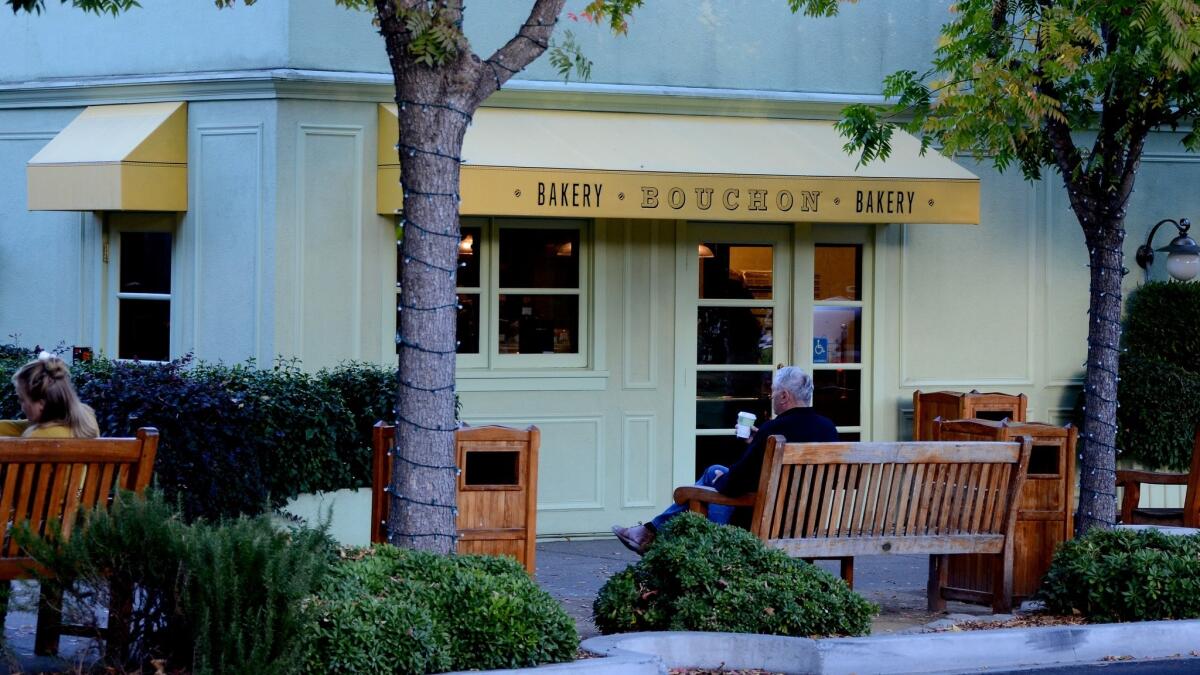
Either before or after eating in Yountville, stroll Washington Street. At 6640 you’ll find the French Laundry, fronted by an unassuming, two-story, stone-walled building with minimalist kitchen addition and its gardens across the street. You can even peek through the kitchen window, a long slit that reveals the team laboring fiercely over that evening’s dishes. Next, at 6534 Washington, you pause by Bouchon (French bistro fare) and the yellow awning of Bouchon Bakery (6528 Washington), whose snacks are the most affordable way to sample Keller’s empire.
A few blocks farther south at 6476 Washington, you reach Ad Hoc, which has nine seats at the bar in addition to its many tables (open Thursday through Monday). And behind Ad Hoc, neighbored by picnic tables, is Addendum, an auxiliary space that serves box lunches to go on Thursdays, Fridays and Saturdays.
Where: Ad Hoc, 6476 Washington St., Yountville, Ca., 55 miles north of San Francisco’s Ferry Building, 411 miles northwest of downtown L.A.
How much: The nine-course dinner at the French Laundry: $310-$325 each. The four-course dinner at Ad Hoc: $55.A box lunch from Ad Hoc Addendum: $16.50.
Info: Thomas Keller Restaurant Group, Yountville Chamber of Commerce
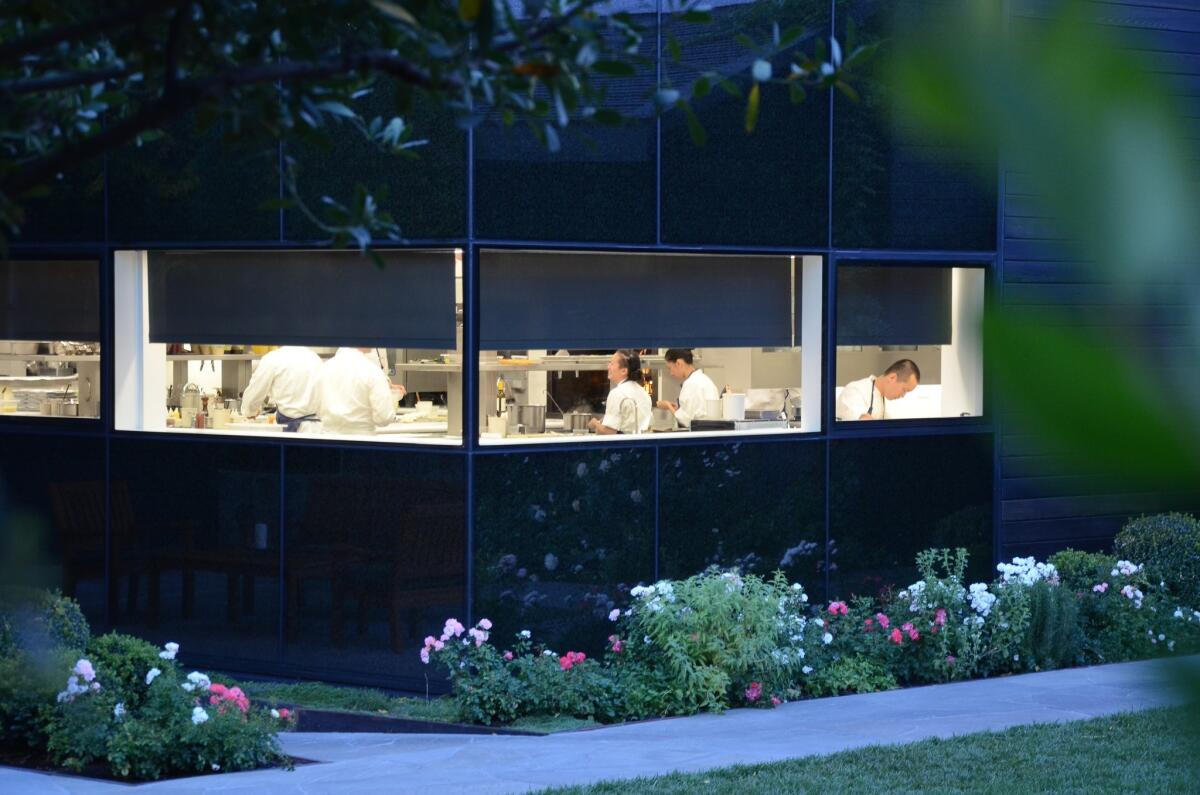
- Share via
Storm a Tuscan castle in Napa Valley
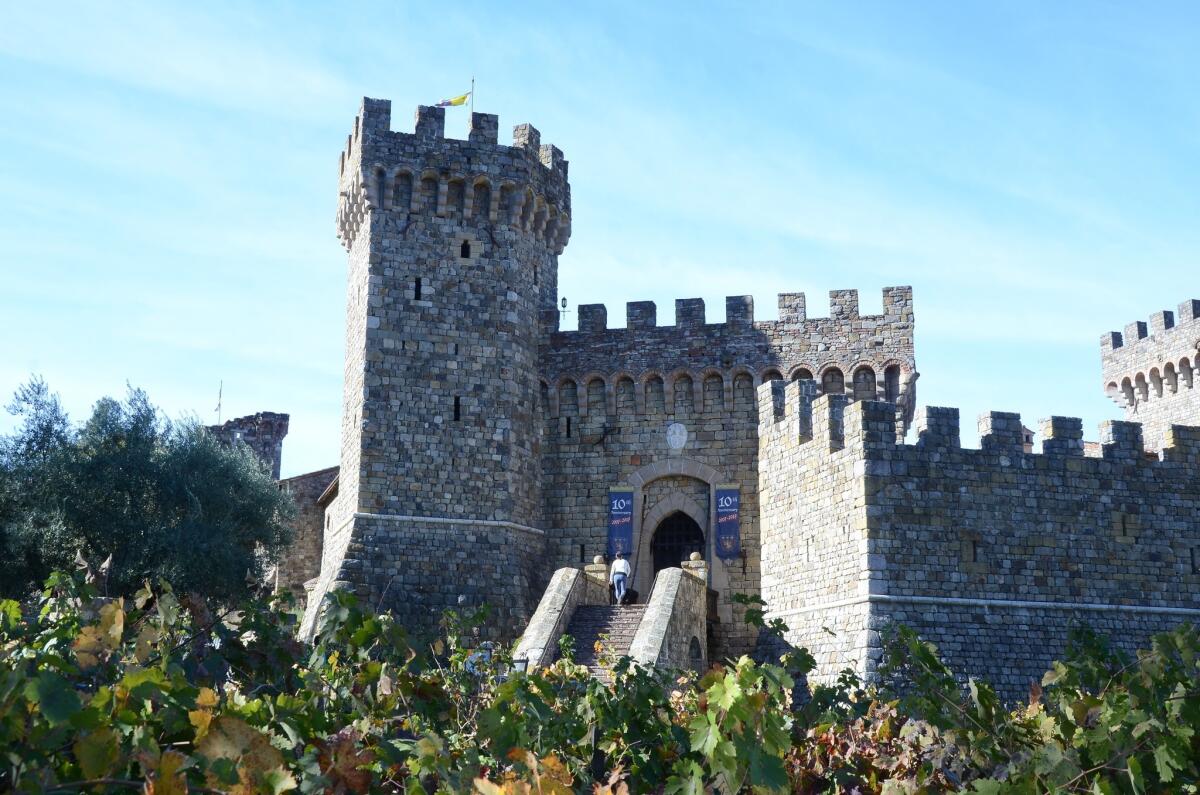
Why: Napa Valley has close to 500 wineries. Castello di Amorosa is the only one housed in a 107-room castle that was built in accordance with 13th century Tuscan aspirations.
What: Owner/designer Dario Sattui completed this spectacle, a 15-year project, in 2007. Besides its five towers and the barrel-vaulted retail and tasting area (which never seems to end), it’s got a great hall and chapel, each with evocative murals. There’s said to be a torture chamber below. Depending on your mood, you might expect a “Da Vinci Code” villain to round a corner at any moment, or Orson Welles in mid-soliloquy. Or one of the Monty Python guys, clopping coconuts together.
Not surprisingly -- given the Tuscan blueprint of the place -- the Castello di Amorosa wines are made in the Italian style. The winery suffered no damage in the wine country fires of October.
Where: 4045 St. Helena Hwy., Calistoga, Calif., 70 miles north of San Francisco’s Ferry Buidling, 425 miles northwest of L.A. City Hall.
How much: Adult admission (which includes wine-tasting) begins at $25. For children the rate is $15-$20 (and there’s grape juice to taste). Tours (which include rooms you can’t reach just wandering around) cost $40-$95.
Info: Castello di Amorosa
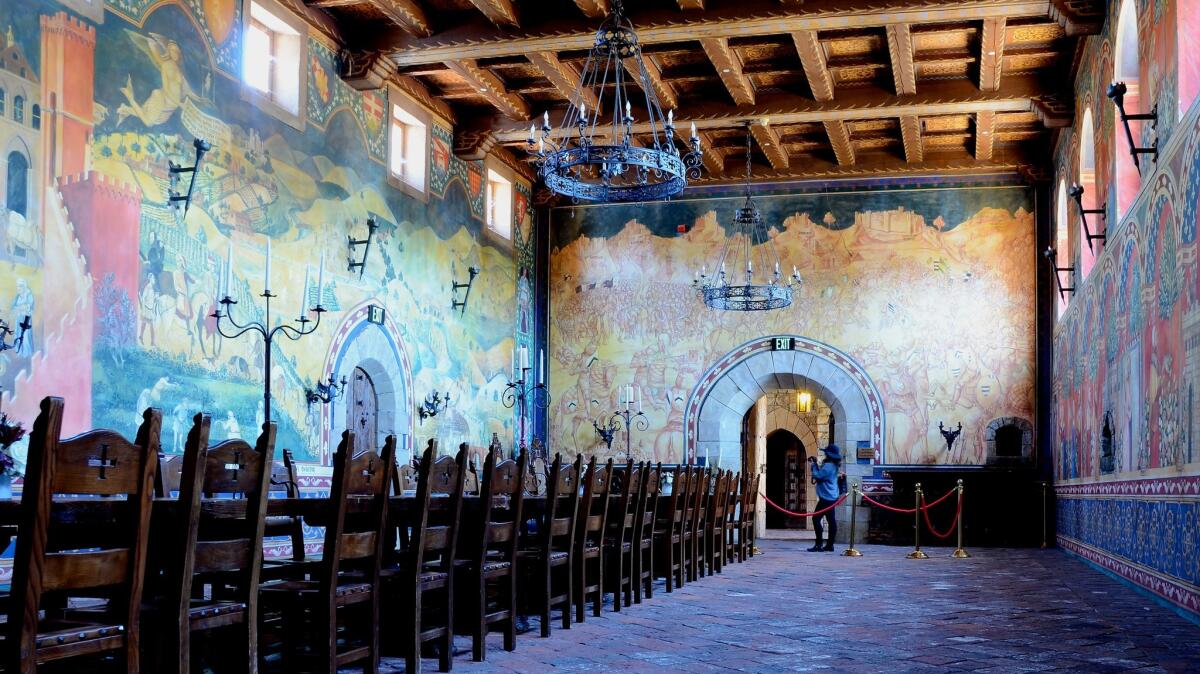
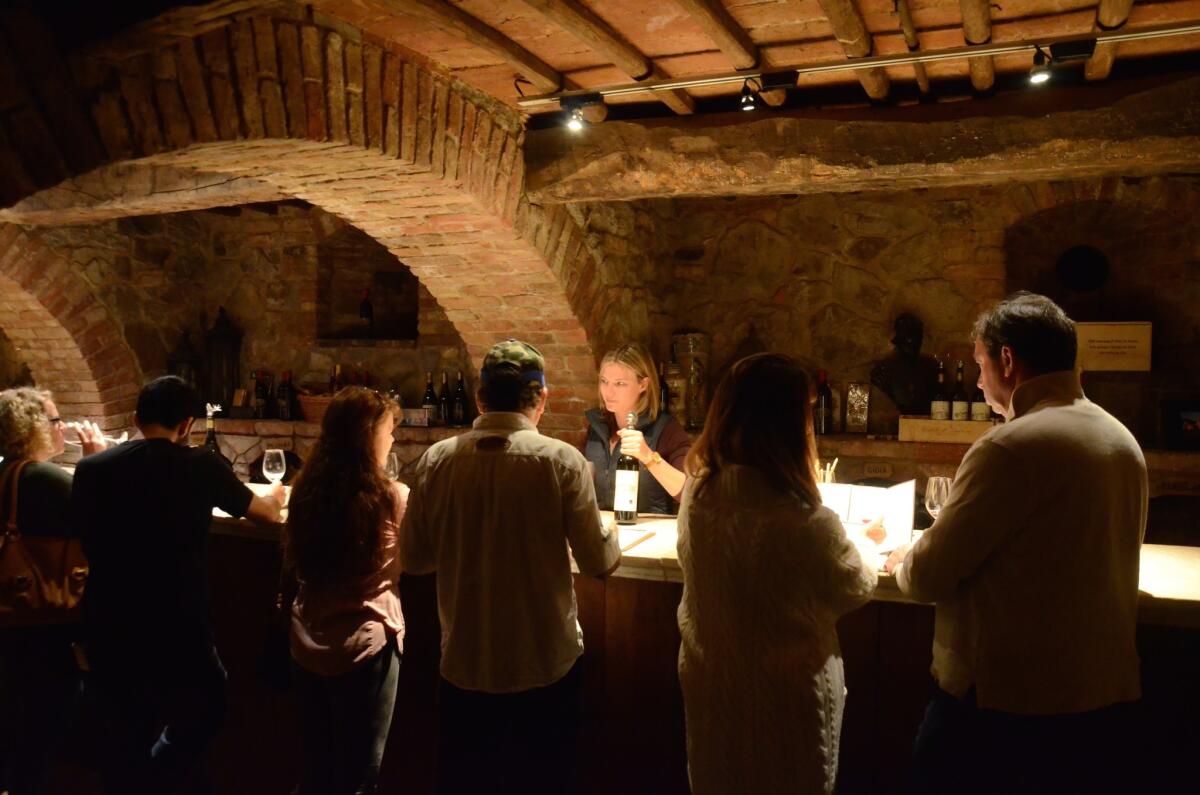
- Share via
Soak in Calistoga spring water
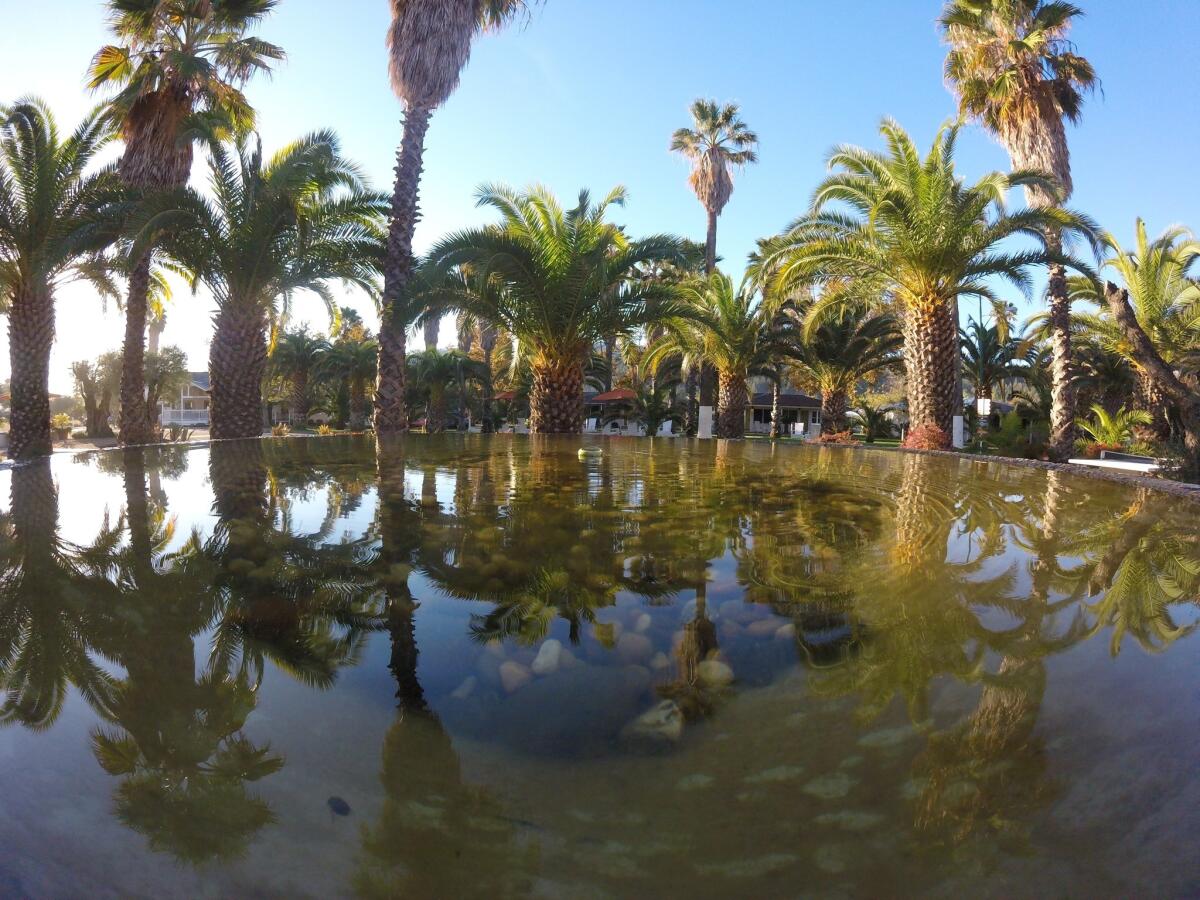
Why: Calistoga is the answer to the question of what to do in the Napa Valley when you’ve had enough wine. It’s a little, old resort town full of hot springs, so between wine-tasting excursions (and maybe the occasional bike ride) you can float listlessly in a steaming pool, untroubled by the faint scent of sulfur because you can feel the stress evaporating from your body.
What: Samuel Brannan, a brash, controversial figure who became one of California’s first millionaires in the Gold Rush, founded Calistoga in the 1860s, counting on the area’s springs to draw tourists from San Fancisco. (In fact, he built a rail route from Vallejo to Calistoga, and the current Napa Valley Wine Train rolls on the Napa-St. Helena portion of that old route.) It was a clever impulse. The town (population: about 5,300) lives on as a resort escape, with hideaways like Calistoga Ranch, Dr. Wilkinson’s and Indian Springs (perhaps the oldest continuously operating pool and spa facility in the state) all relying heavily on their hot springs.
Though the Napa/Sonoma wildfires of October drew near, they never reached the town of Calistoga, and it remains handsome as ever. In early November, I spent a night and stepped from the chilly morning air into the Olympic-sized, 102-degree, steam-cloaked pool at the 17-acre Indian Springs resort. It was pleasant. In 2015, the resort added a restaurant (Sam’s Social Club, which has fascinating, colorful mural over the counter) and grew from about 40 rooms to 115. Many of the interiors still have that just-upgraded, ready-for-the-magazine-photographer look.
Where: Indian Springs, 1712 Lincoln Ave., Calistoga, 73 miles north of San Francisco’s Ferry Building, 427 miles northwest of downtown L.A.
How much: In winter, Indian Springs rooms for two usually start at about $239 per night.
Info: Visit Calistoga, Indian Springs

- Share via
Board the Napa Valley Wine Train, recall discord and disaster, then roll in splendor past miles of vineyards
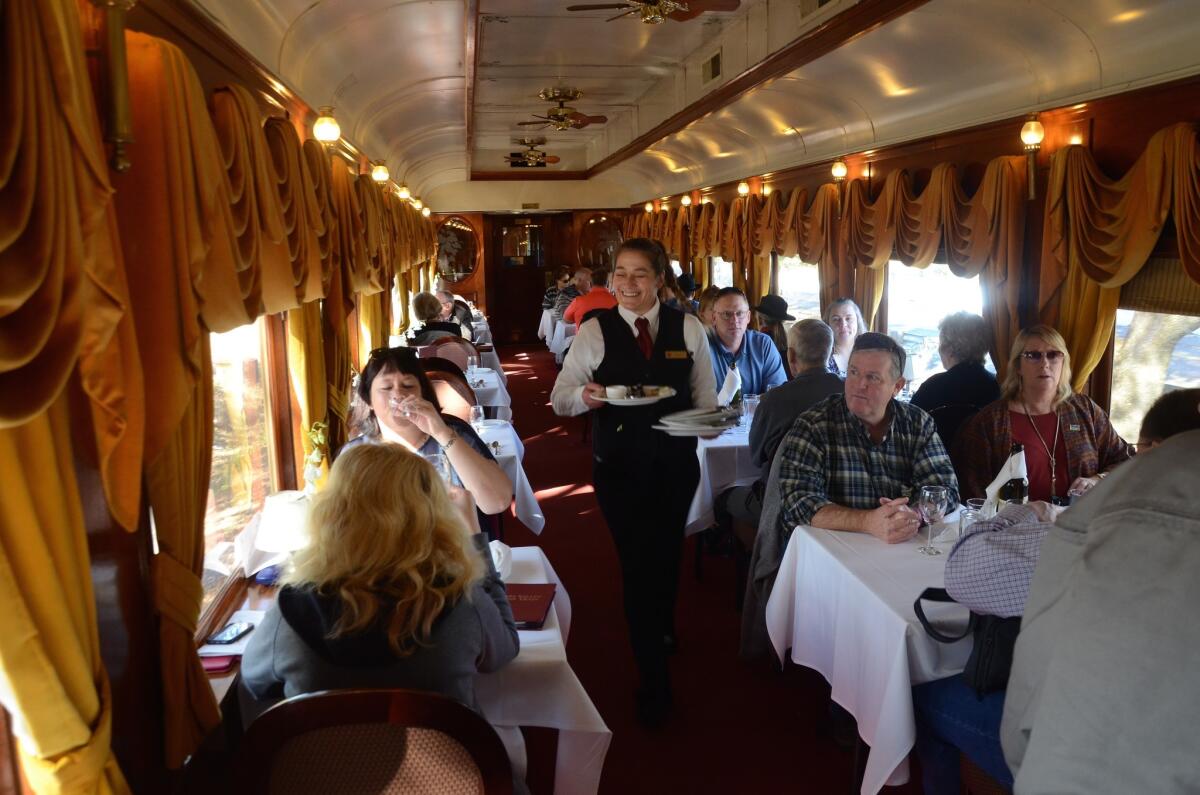
Why: If you’re going to fully appreciate this valley and its globally admired vineyards, it’s better that you’re not driving. And on the Napa Valley Wine Train, you have the chance to dine in style while the miles and wineries roll past.
What: The train covers about 18 miles, running north alongside Highway 29 from the city of Napa through Yountville and Oakville to St. Helena. Along the way, depending on what you sign up for, you may stop to taste at one to three wineries, eat a three-course meal on board, and be back where you started in three to six hours. It’s expensive but so very comfortable.
And it’s got complicated history. The rail route, first laid in the 1860s, had fallen idle by the 1980s. To get the new wine train rolling in 1989, its owners had to outmaneuver many Napa locals who feared a tourist invasion would ruin the affluent community’s character. Skip forward now to 2015, when the train’s management drew a storm of criticism for ejecting a group of guests, mostly African American, who were accused of being too loud.
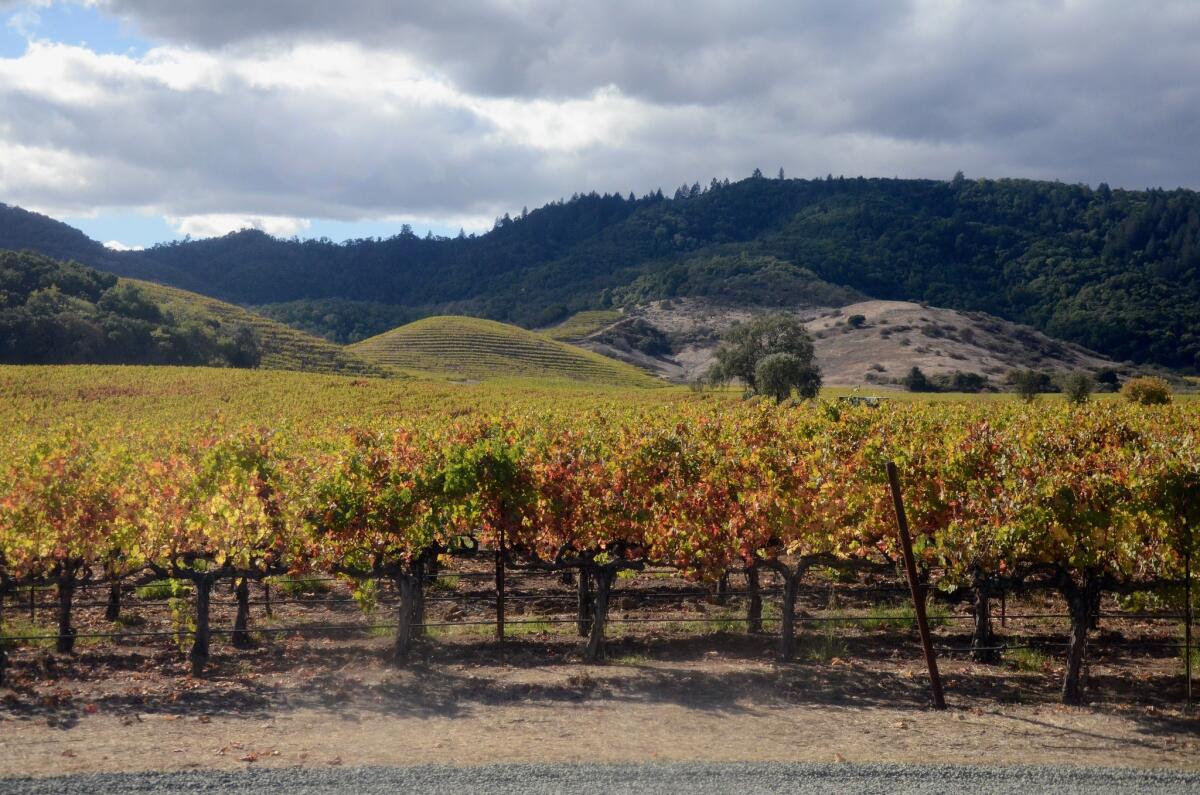
In late 2015, new owners took over the train. Then wildfires flared in October. They missed the train track, Highway 29 and the wineries along the route, but killed at least 41 people and destroyed thousands of homes and scores of businesses in Napa and Sonoma counties.
By the time I showed up in early November, almost none of the damage was visible from the train. Napa was still in the early stages of recovery and the train was about half-full — unusual for the time of year. As for my journey, it was a sunny day, the countryside was gorgeous, the meal pleasant. The distant, fire-blackened hills to the east were barely discernible beyond the green and red vineyard rows, the shade trees and the nearby slopes.
Where: McKinstry Street Station, 1275 McKinstry St., Napa, 46 miles north of San Francisco, 402 miles northwest of downtown L.A.
How much: Most day trips run $206-$329 per person, which includes lunch and wine-tasting.
Info: Napa Valley Wine Train
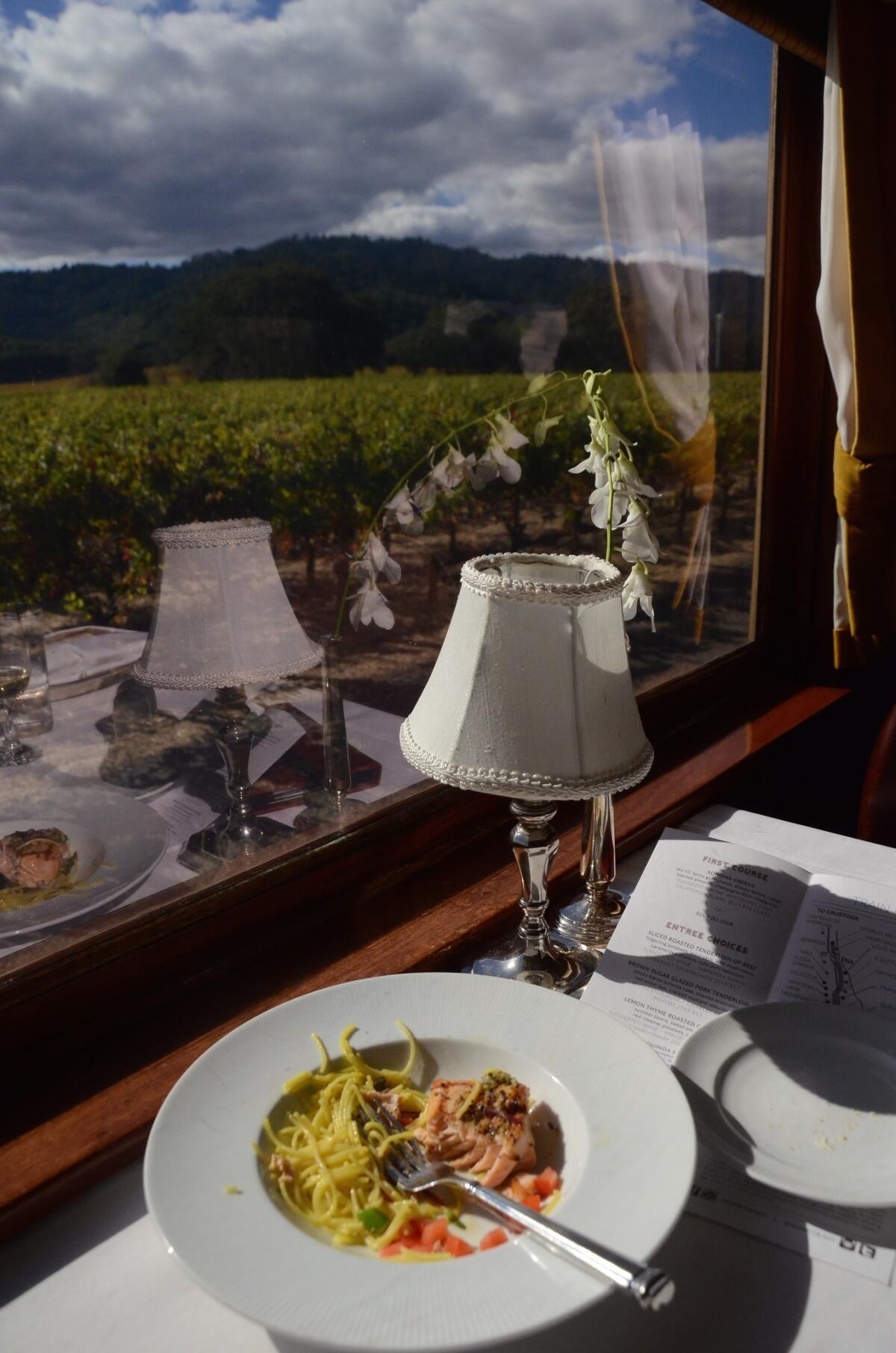

- Share via
Taste China (Live) in San Francisco
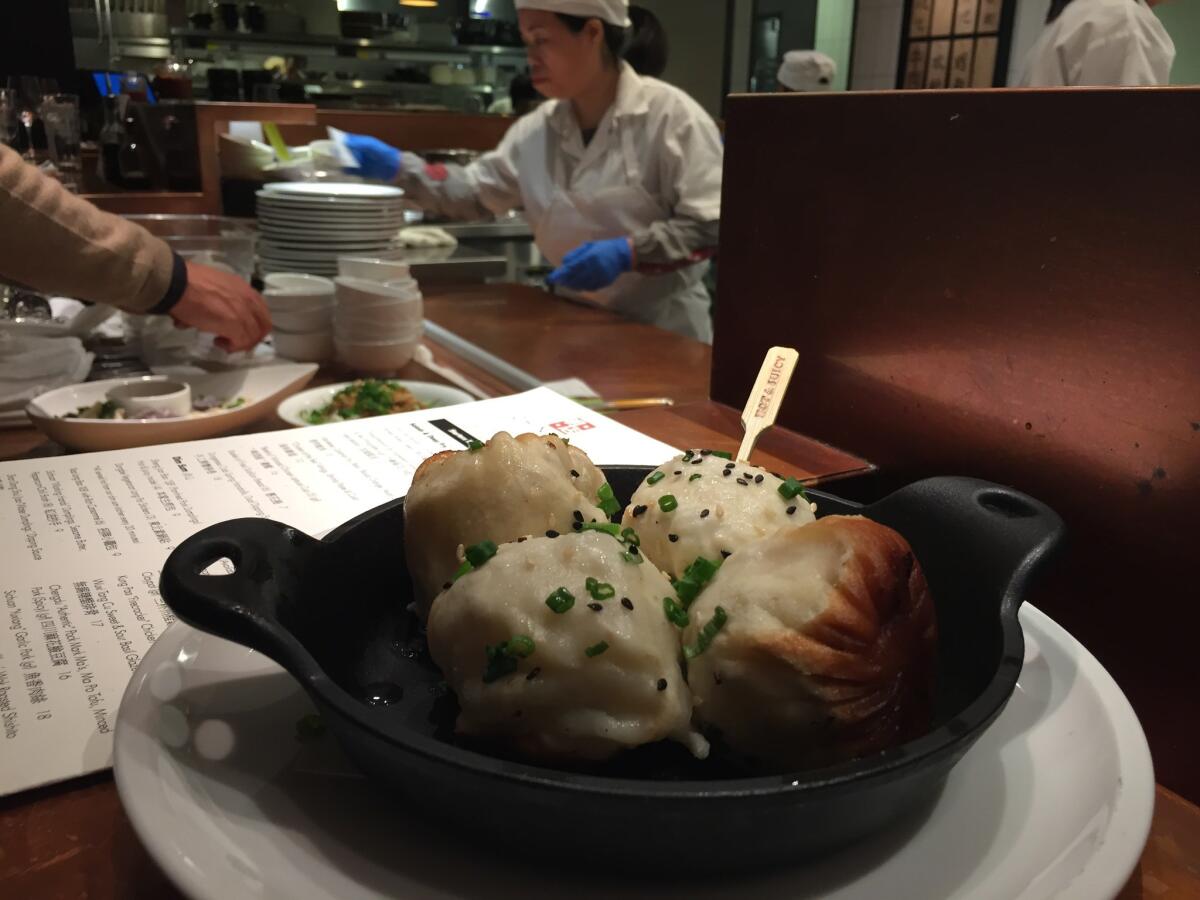
Why: Nobody likes to say so, but a lot of San Francisco’s Chinatown looks tired these days. And many of the area’s best Chinese restaurants are scattered among the outer suburbs where so many affluent Chinese American families live. So it’s a happy surprise to see China Live bring new energy and higher style to the neighborhood with a combination of design-intensive eating and shopping options. Its mission: “to demystify Chinese ingredients and recipes while educating guests on the rich history and influence.”
What: China Live opened in March 2017, near the frontier between Chinatown and North Beach. The main downstairs space, the Market Restaurant and Bar, is full of long wood tables under a semi-raw concrete ceiling. Picture an Apple Store with steaming, edible merchandise, neighbored by open cooking areas, beckoning counters, a bar and adjacent retail rooms stocked with artisan teas, kitchen tools, condiments, shapely candles, jewelry and such. The restaurant’s menu is mostly based on sharing small dishes, so you might wind up with a medley dinner of fire-roasted sweet white corn, Dungenes crab spring rolls and Sheng Jian Bao (SJB) pan-fried pork dumplings.
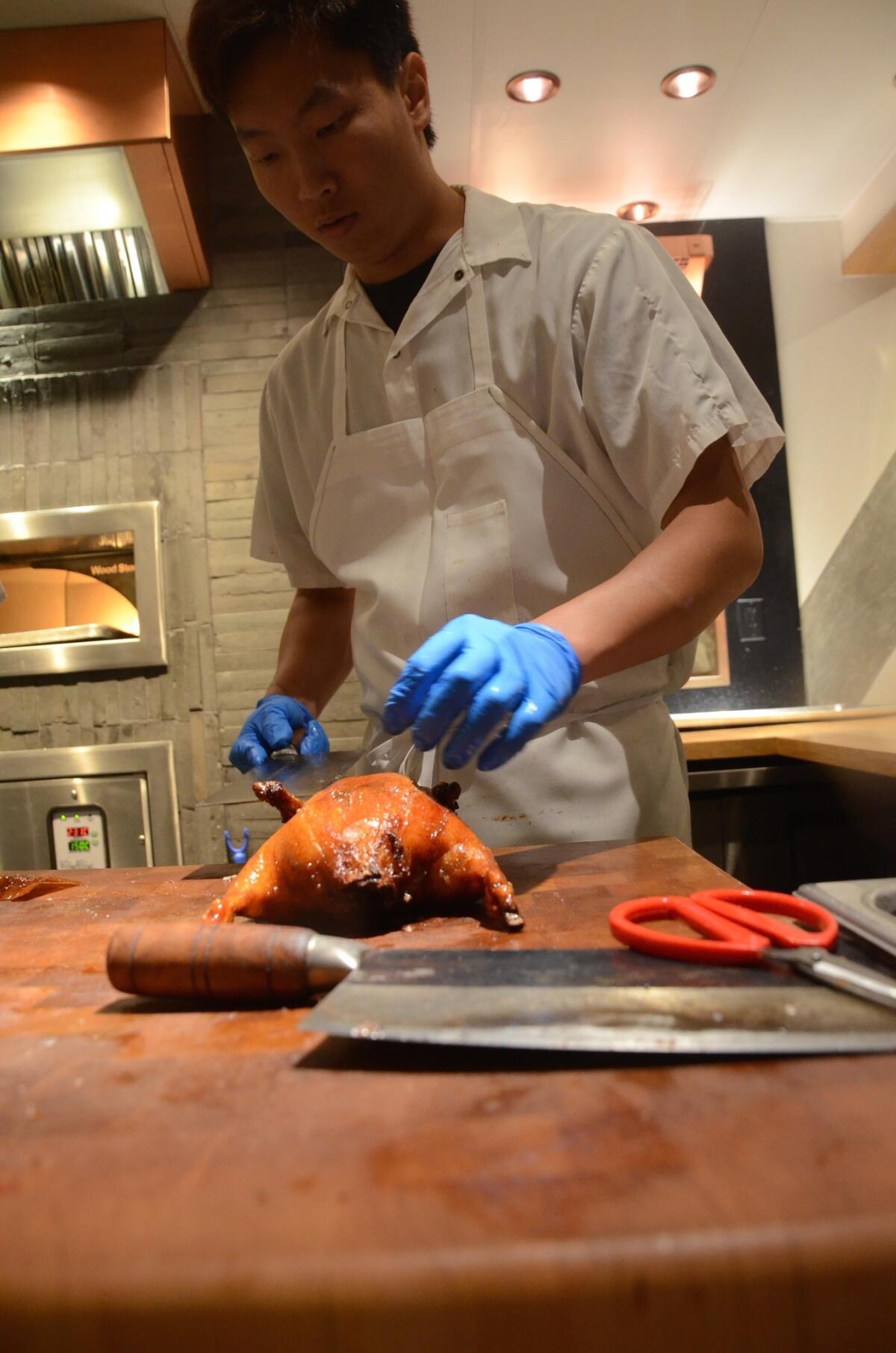
Near the entrance is the casual Oolong Cafe. Upstairs waits a more exclusive restaurant offering private, pricey dining in elegant rooms befitting a royal in hiding. It’s called Eight Tables by George Chen (dinner only; tasting menu: $225). There are also a pair of bars upstairs, including the Gold Mountain Lounge and one called Cold Drinks -- one of those hip hideaways that seeks to be popular by maintaining quasi-secrecy.
Where: 644 Broadway, San Francisco, 380 miles northwest of downtown L.A..
How much: Together, the three dishes above cost about $40. Most cocktails $13-$15.
Info: China Live

- Share via
See, sniff and taste Napa Valley’s bounty at the Oxbow Public Market
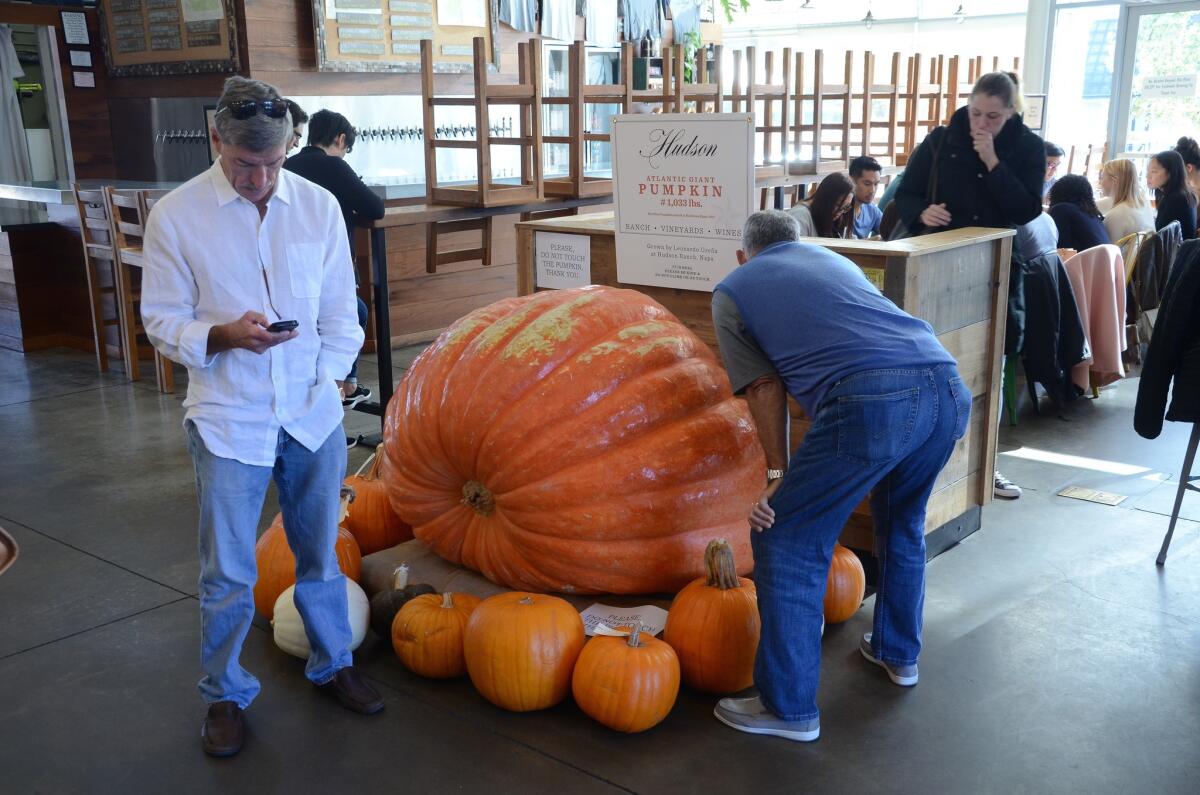
Why: This market and food hall, set above a fetching bend in the Napa River, is a short stroll from downtown Napa, a block from the headquarters of the popular Napa Valley Wine Train, a block from the COPIA center for wine and food education. Much smaller than San Francisco’s food-centric Ferry Building but placed near the starting point of many popular Napa adventures, this foodie acre (about two-thirds the size of a football field) is a point of convergence for locals and tourists and a one-stop reminder that this wine country does more than make wine.
What: The Oxbow Public Market opened in 2007, just in time to suffer from a national recession, the closure of COPIA (since rethought and reopened by the Culinary Institute of America) and construction-related disruptions of local traffic. Now those troubles are in the rear-view mirror, and a stroll around the marketplace introduces you to plenty of wine products but also duck tacos (at C Casa); American comfort food (Gott’s Roadside); local seafood (Hog Island Oyster Co.); and assorted local fruits and vegetables (Hudson Greens & Goods).
On my early November visit, Hudson was showing off a 1,033-pound pumpkin. There were also plenty of signs thanking the first-responders for their work fighting that region’s wildfires in October. (Though many homes and about two dozen wineries were lost or damaged in those fires, the vast majority of the area’s 500 wineries had reopened by Nov. 8.)
Besides browsing at the market, you can also rent a bike at the automatic Spinway stand just outside and pedal seven miles along the Napa River to Kennedy Park and back; or just toodle down 1st Street in downtown Napa, where the new, 183-room Archer Hotel is expected to open in December.
Where: 610-644 1st St., Napa, 46 miles north of the San Francisco Ferry building, 401 miles northwest of downtown L.A.
How much: C Casa tacos run $4.75-$9. Spinway bike rentals start at $9 per hour.
Info: Oxbow Public Market

- Share via
Read the walls on Angel Island, the West Coast ‘Ellis Island’ where Asian immigrants waited and waited from 1910 to 1940
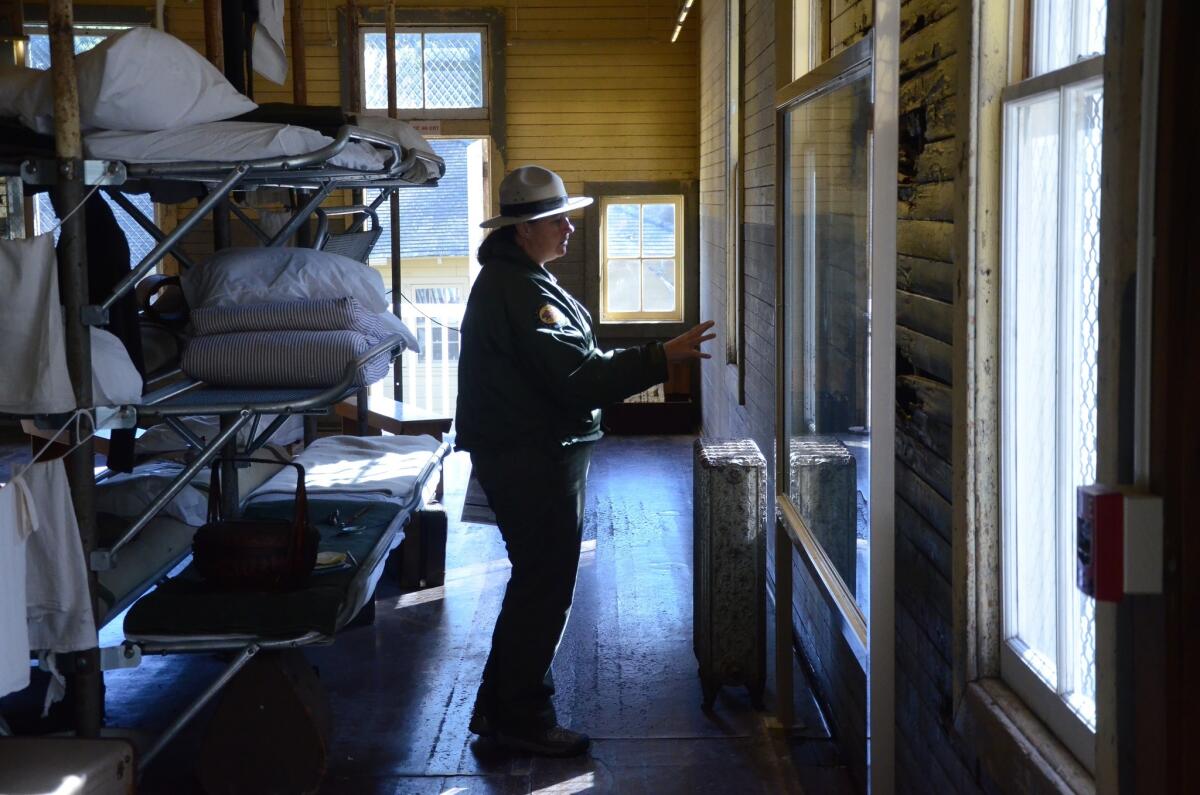
Why: It’s a handsome, green island in San Francisco Bay, popular with sailors, cyclists and hikers, just south of high-toned Tiburon. And from 1910 through 1940, it was something like a western Ellis Island, processing about half a million immigrants, including most of the 175,000 Chinese immigrants who arrived during those years. But those were not happy years.
What: While immigration agents at Ellis Island were admitting most European arrivals within a few hours, the objective on Angel Island was “to exclude new arrivals.” Especially the Chinese, who were routinely held for weeks or months in crowded, dirty conditions. Historians say most eventually gained admission by claiming family connections to U.S. citizens -- but only after lengthy interrogations and often denials and later appeals.
The old Immigration Station barracks, a mile’s hike from Angel Island’s main dock, joined the state park system in 1963 and was bolstered by a restoration and upgrade in 2009. If you arrive during the 20-22 hours per week that the Immigration Station is open, rangers can point you to the poetry etched (in Chinese characters) on the wooden barracks walls by immigrants as they waited in dire conditions, sleeping three deep on bunk beds. More than 120 poems were carved into the walls.
“Sadness kills the person in the wooden building,” says one.
“Once you start to see it, you’ll see it everywhere,” said state parks interpreter Casey Dexter-Lee. Of roughly 200,000 annual visitors to the island, Dexter-Lee said, about one in ten gets to the Immigration Station,
To get there on a weekend day under the current ferry schedule, take the 9:40am Blue&Gold ferry from San Francisco’s Pier 41 to Angel island, arriving 10:05. Hike or ride a rental bike to the Immigration Station. (The well-signed, mile-long walking route includes 144 stairsteps.) Get lunch at the Cove Cafe. There’s a 4 p.m. ferry back to Pier 41. (Or if you’re in hurry, there’s one at 12:30 p.m.)
Where: The island is just south of Tiburon (in Marin County), 5 miles north of Alcatraz, 6 miles north of San Francisco’s Pier 41, about 390 miles northwest of downtown L.A.. The Immigration Station is open Wednesdays through Sunday, 11 a.m.-3 p.m., staying open to 4 p.m. on weekends from May through October. For details on planning a tour or holiday scheduling, send an email to: tours.angelisland@parks.ca.gov
How much: The Blue&Gold Ferry from Pier 41 charges $9.75 each way for travel between San Francisco and Angel Island. Admission to the Immigration Station is $5 per adult; guided tours are $7.
Info: Angel Island State Park
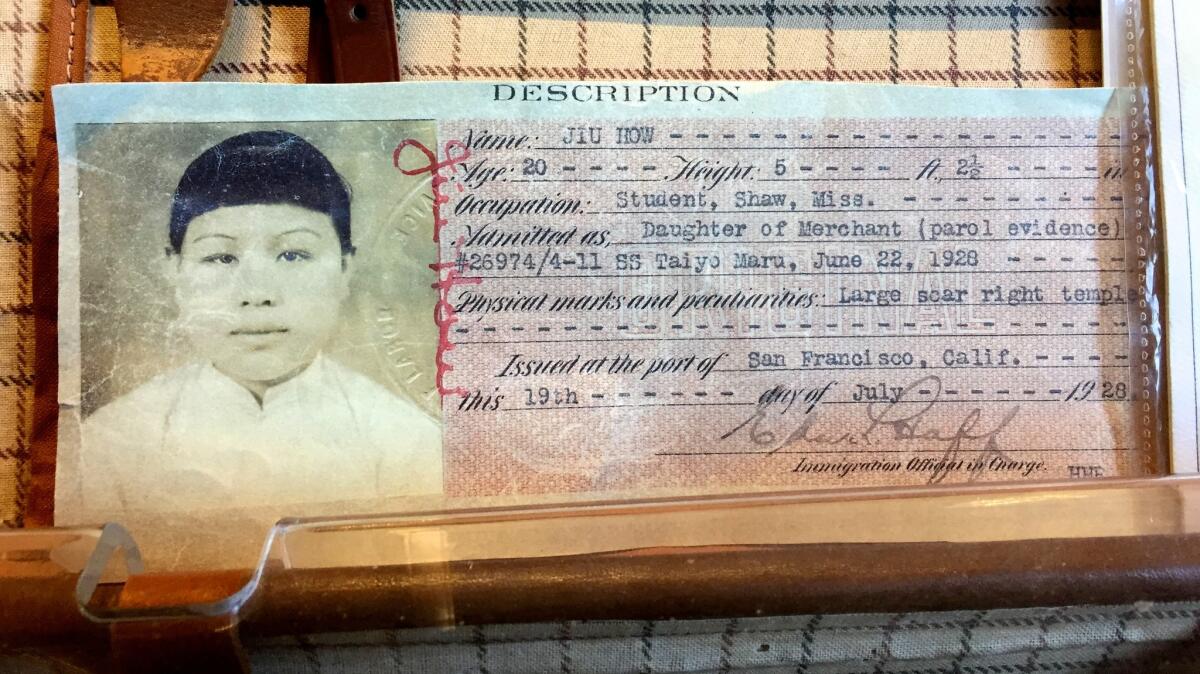
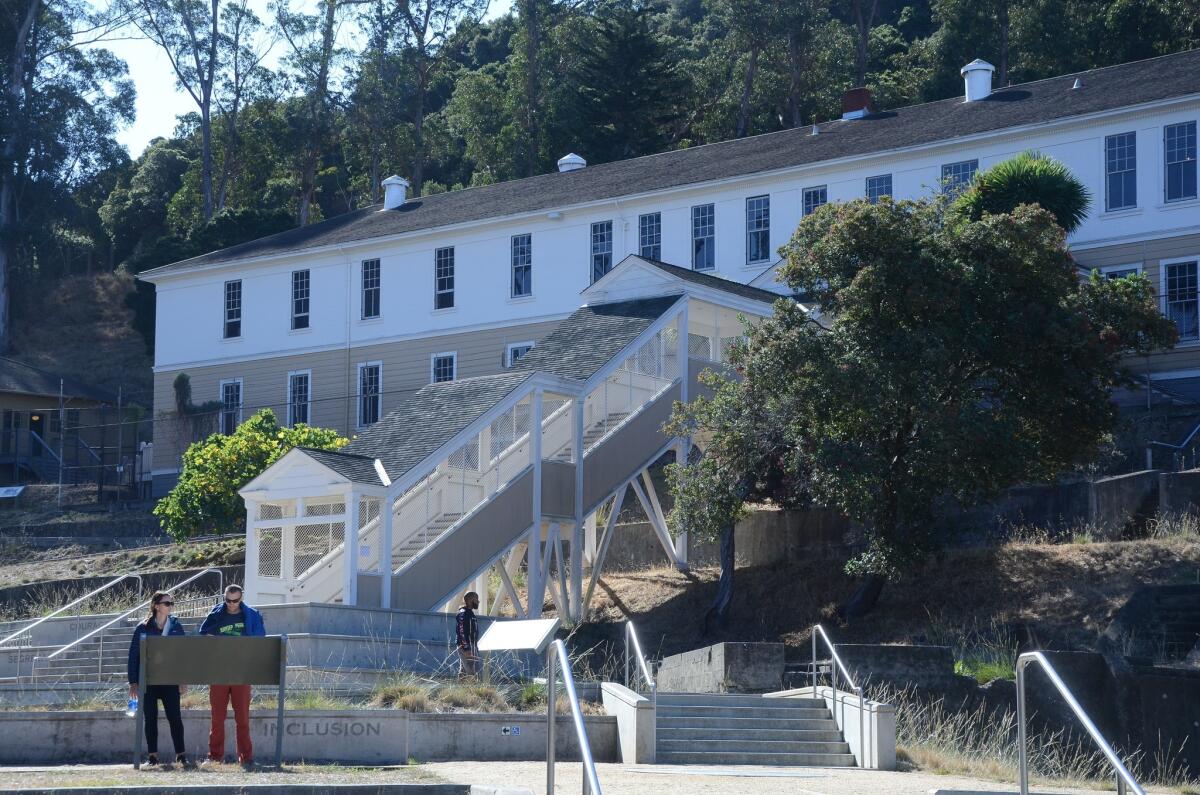
- Share via
Check out the heavy metal at this resilient roadhouse an hour outside L.A.
Why: Newcomb’s Ranch belongs in any roadhouse hall of fame. It’s a rough-hewn old place dating to 1939 that has survived rock slides, arson fires and snows that reached to the roof. That it still exists is a bit of a miracle. That this mountain hangout is only an hour or so from downtown L.A. is also a dash of good fortune. It might be the quickest way to feel a million miles away.
What: On weekends, Newcomb’s Ranch is more than a restaurant/bar, it’s a showroom of L.A.’s best and most dazzling motorcycles. Most of the action takes place in the parking lot, where the owners of the heavy metal — bikes and sports cars — line up their trophies. The vibe is casual and family-friendly.
Inside, you’ll find a restaurant that is better that it has to be, given the lack of any competition on this remote, wiggly highway in the Angeles National Forest.
In winter, look for the fireplace in the main dining room, across from the pool table. The rest of the year, stay outside, where the real show is. The patio tables are plentiful, and the staff moves quickly through breakfast and lunch. (Newcomb’s closes at 4 p.m.)
The menu is basic. The best value is a half-sandwich-soup combo for $7.99. The Ortega burger ($12.49) is an after-market version of the basic cheeseburger, but with bacon and mild Ortega peppers. The chicken tenders ($11.99) are enough to feed two, and arrive crispy and hot.
Newcomb’s is also popular with the hiking and camping crowd. Ten minutes up the road is Buckhorn, a first-come, first-serve Alpine campground dotted with redwoods. Even closer, two miles up the road, is Horse Flats Camp Ground, which is more arid but with some fascinating rock formations.
But it’s those blingy bikes you probably came to ogle, in the shadow of a sturdy old roadhouse that never quits.
Where: Angeles Crest Highway, 41 miles northeast of downtown L.A. Open Thursday-Friday, 9 a.m. to 4 p.m.; Saturday-Sunday, 7 a.m.-4 p.m. Closed the rest of the week.
How much: Meals from about $7.
Info: Newcomb’s Ranch
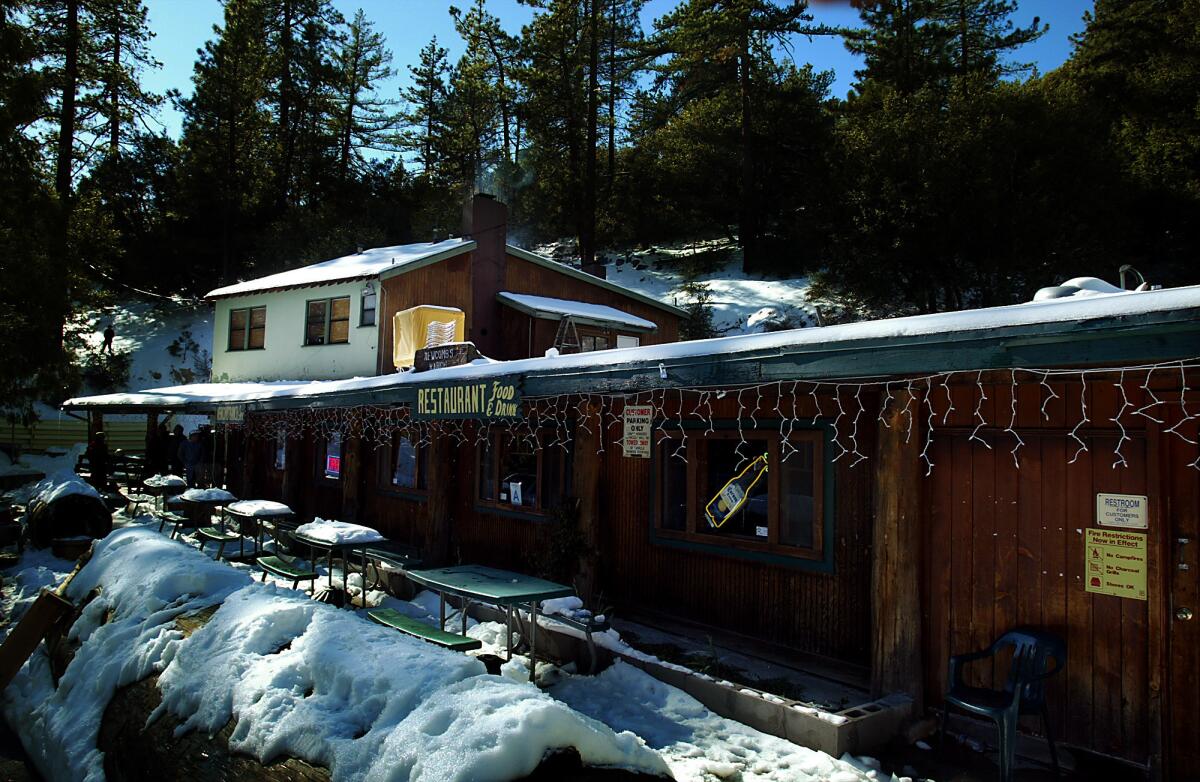
- Share via
Nurse a spiked cappuccino at Tosca Cafe in San Francisco
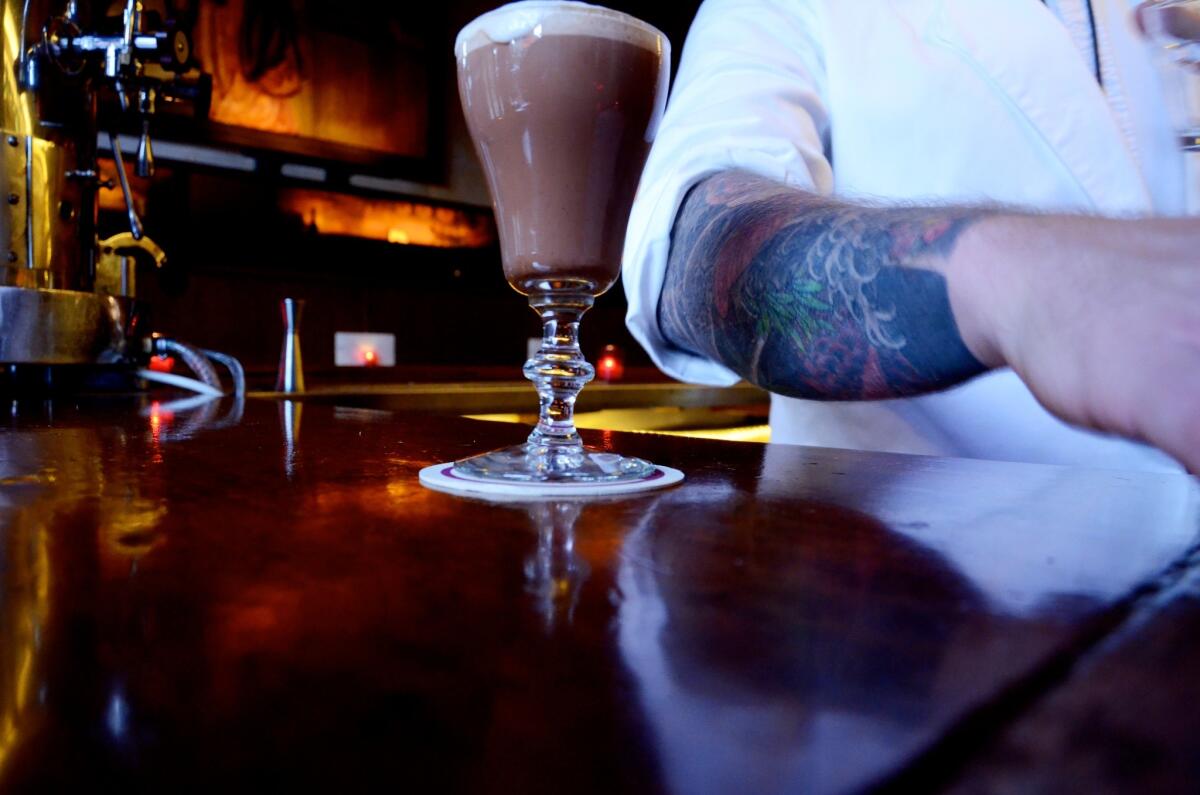
Why: In an Italian American neighborhood full of dim, old bars and moody Italian cafes, this might be the most stylish of them all. If you’re a cocktail person, order the House Cappuccino, watch the barkeeper make it in the gleaming silver espresso machine up front, and prepare for a pleasant little jolt.
What: That warm jolt is bourbon, Armagnac, chocolate ganache and assorted secret ingredients. Like the atmosphere in deep, dark Tosca, the House Cappuccino goes back some decades. The place opened in 1919. My bartender told me the house used to quietly spike drinks for North Beach regulars during Prohibition, when Tosca had to pretend it was just a cafe.

In any event, this space has changed and it hasn’t. New owners brought in celebrated chef April Bloomfield — and built her new a new kitchen — in 2013 and reintroduced Tosca to the world as a place for great food to match its noir charm. The floor is still checkerboard. The juke box still includes Sam Cooke, Dolly Parton, Nina Simone, Frank Sinatra and the “Anvil Chorus” from “Il Trovatore.”) On the menu is wild Italian arugula, grilled polenta and Berkshire pork chops.
Where: 242 Columbus Ave., San Francisco, 389 miles northwest of downtown L.A. Open 5 p.m. to 2 a.m. daily.
How much: $12 for the House Cappuccino. Main dishes $18-$31.
Info: Tosca Cafe
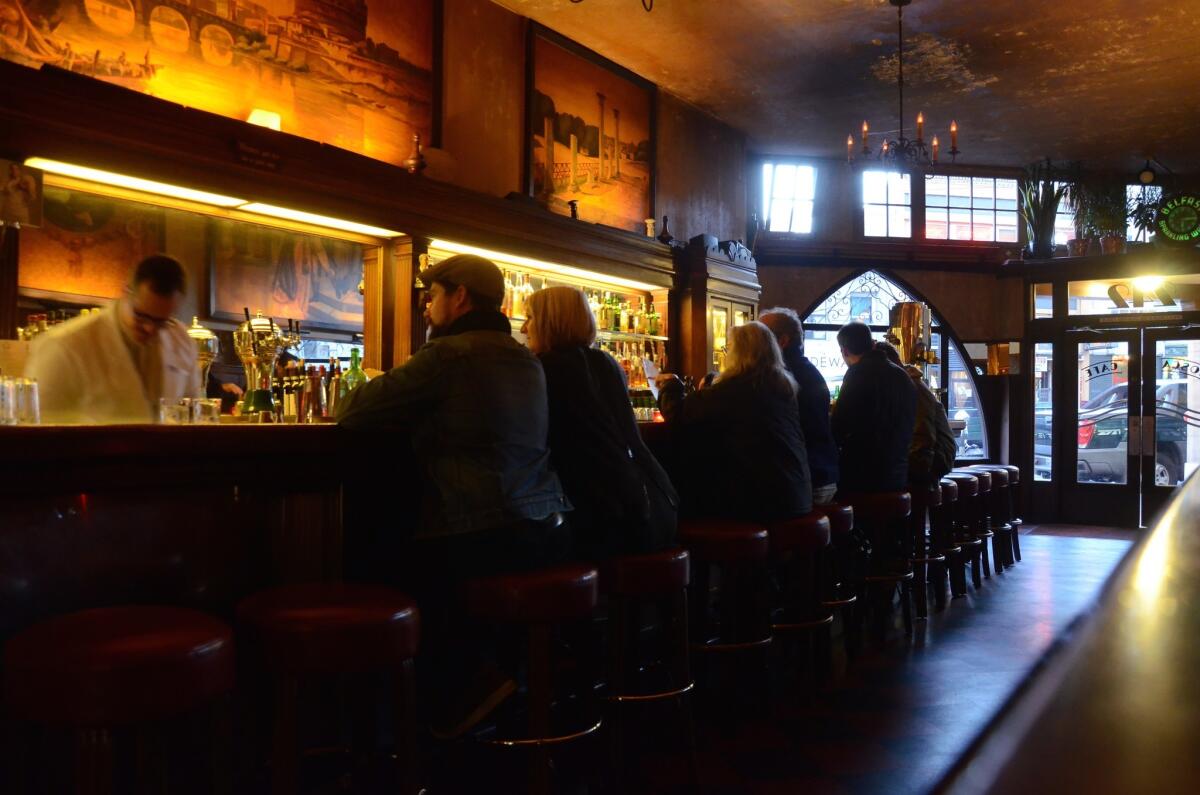
- Share via
Mourn the ‘60s and paw through old books and records on Telegraph Avenue in Berkeley

Why: Telegraph Avenue might not be tidy. And the sign that says “Drug Free Zone” is not especially convincing. But this neighborhood next to the UC Berkeley campus is knee-deep in revolutionary memories and recycled pop culture riches — especially used books and old records.
What: You could start by browsing Moe’s, the bookshop at 2476 Telegraph Ave. founded in 1959 by the late Moe Moskowitz and his wife, Barbara. It’s got new, used and rare books on four levels — the rarest are locked up on the top level.
Then move down a few doors to the new and used books and music at the Mad Monk Center for Anachronistic Media at 2454 Telegraph. (“No digital media!” proclaims its website.)
Or cross the street and dive into Rasputin Music and Movies (which shares ownership with Mad Monk) at 2401 Telegraph. Or try Amoeba (yet more music and movies) at 2455 Telegraph. If you don’t wind up buying that 1971 John Fahey album you never knew you needed, or that quirky biography of W. Eugene Smith you never knew existed — well, you’ve failed to catch the spirit here.
Also, if you’re a student of the ‘60s, you might need a quick stroll through People’s Park (half a block away at 2556 Haste St.), where many lost souls remain. But there will be no browsing at Cody’s bookshop (a gathering place on Telegraph from the 1960s to 2006) or debriefing at Cafe Mediterraneum (1957-2016).
You can, however, linger a minute to inspect history of the Free Speech Movement as portrayed in a great mural (“A People’s History of Telegraph Avenue”) at Telegraph and Haste. And if your burrito at Han’s Bistro (2498 Telegraph) is like mine was, it will be massive and flavorful.
Where: The corner of Telegraph Avenue and Haste Street is three blocks south of the UC Berkeleycampus, 380 miles northwest of downtown L.A.
How much: Free. About $6 for the burrito.
Info: SFGate’s neighborhood profile of Telegraph Avenue
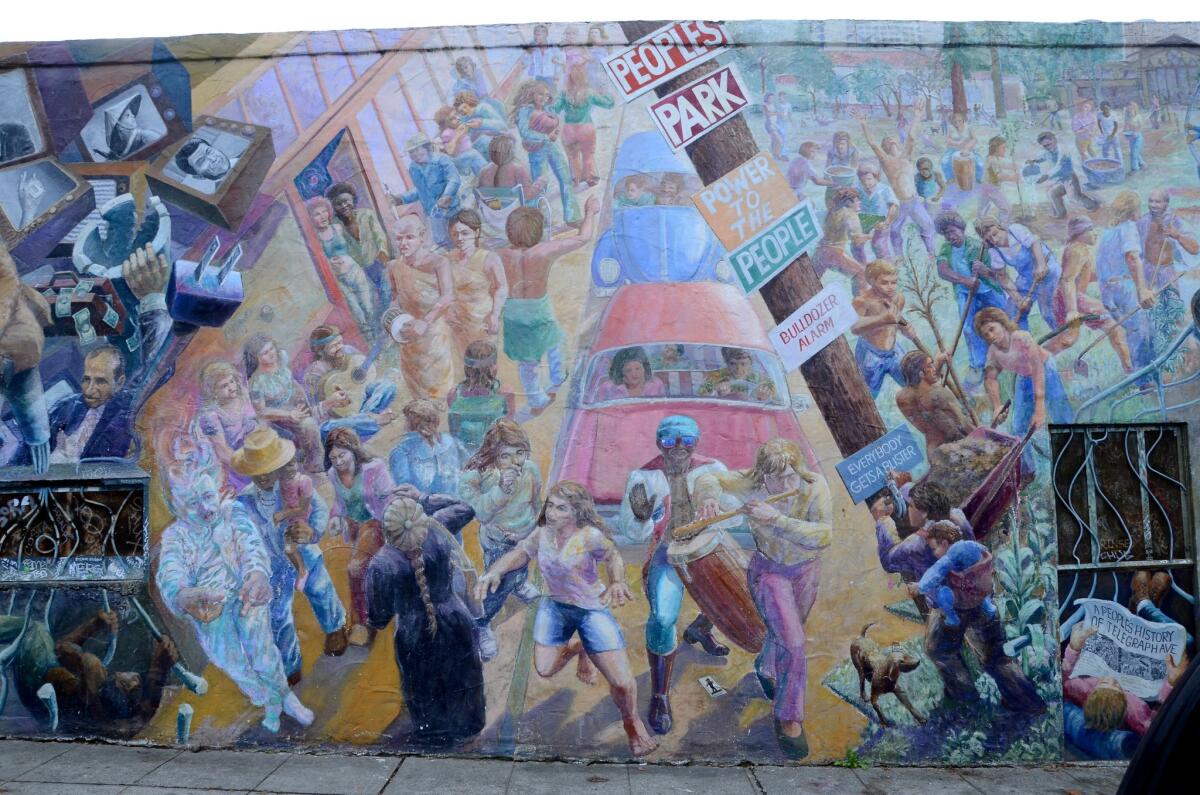
- Share via
Cruise the canals of Long Beach, with a gondolier to guide your way

Why: For more than a century, and with mixed results, Southern California developers have been trying to create versions of Venice, Italy. In Long Beach, it has actually worked. Year-round, singing gondoliers guide their vessels through the upscale Naples neighborhood. Late in the year, the scene becomes a holiday mirror of water and lights.
What: Gondola Getaway operates one-hour voyages out of the Belmont Shore area seven days a week. Some of the gondoliers sing, others bring along recorded music. Either way, it is a romantic escape, and popular for birthdays and anniversaries. Groups and couples get separate boats, meaning they won’t be placed with strangers.
The gondolas are not pushed with a pole, as many assume. The vessels are rowed, using techniques learned in Italy.
This time of year, the lights go up, drawing even more crowds. Nights can be frosty but the canals themselves often provide protection from the winds. Still, dress in layers. High heels are discouraged. Blankets are provided.
Appetizer plates such as meats and cheeses can be arranged in advance, or passengers are allowed to bring their own. No beverages are provided, so it’s BYOB for wine or other refreshments.
Reservations are taken by phone and fill up quickly in summers and around the holidays. Have a second or third option available on dates, as well as credit card and other info.
Where: 5489 E. Ocean Blvd., Long Beach, 28 miles south of downtown L.A.
How much: $100 for first two guests and $30 for each additional passenger up to six. Bigger gondolas and pricing available for groups. Tips usually range from 15% to 25%, and are at the discretion of the passenger.
Info: Gondola Getaway
- Share via
Swing at SFJazz, the house that jazz built in San Francisco
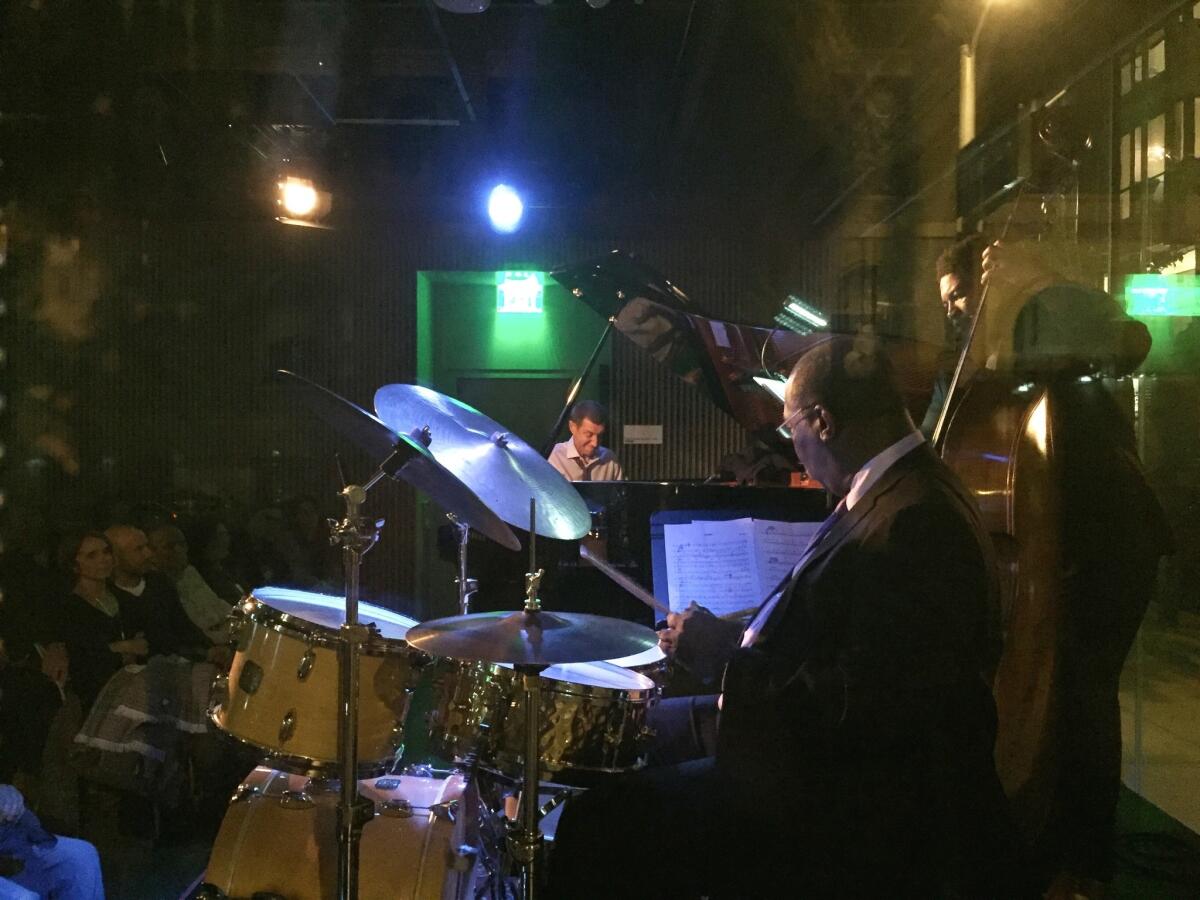
Why: This is a fresh, sleek building in the city’s long-gritty, lately gentrifying Hayes Valley neighborhood, and it’s devoted to jazz appreciation and education, with two performance spaces. The SFJAZZ Center opened in 2013 and calls itself “the first stand-alone structure in the country built specifically for jazz.”
What: Forty years ago, San Francisco had plenty of jazz haunts. Now many have closed (though these remain). So it’s fortunate that SFJazz has come along.
It’s got a 700-seat space (the Robert S. Miner Auditorium) and a 100-seat space (the sidewalk-adjacent Joe Henderson Lab, where I recently saw the Benny Green Trio swing with precision through a night of piano-based bebop). It also presents shows elsewhere around town and gets performers such as Kurt Elling, Christian McBride, Dee Dee Bridgewater, Dianne Reeves, Chris Thile and Brad Mehldau.
And in April, it added a lounge with a small-plates menu, B—Side. So you can make a night of it.
SFJazz is just a few blocks south of the city’s War Memorial Opera House and Davies Symphony Hall. The 2017-2018 season includes more than 300 performances.
Where: 201 Franklin St., 382 miles northwest of downtown L.A. B-Side (b-sidesf.com) is open Wednesday through Sunday nights.
How much: $25-$105
Info: SFJAZZ
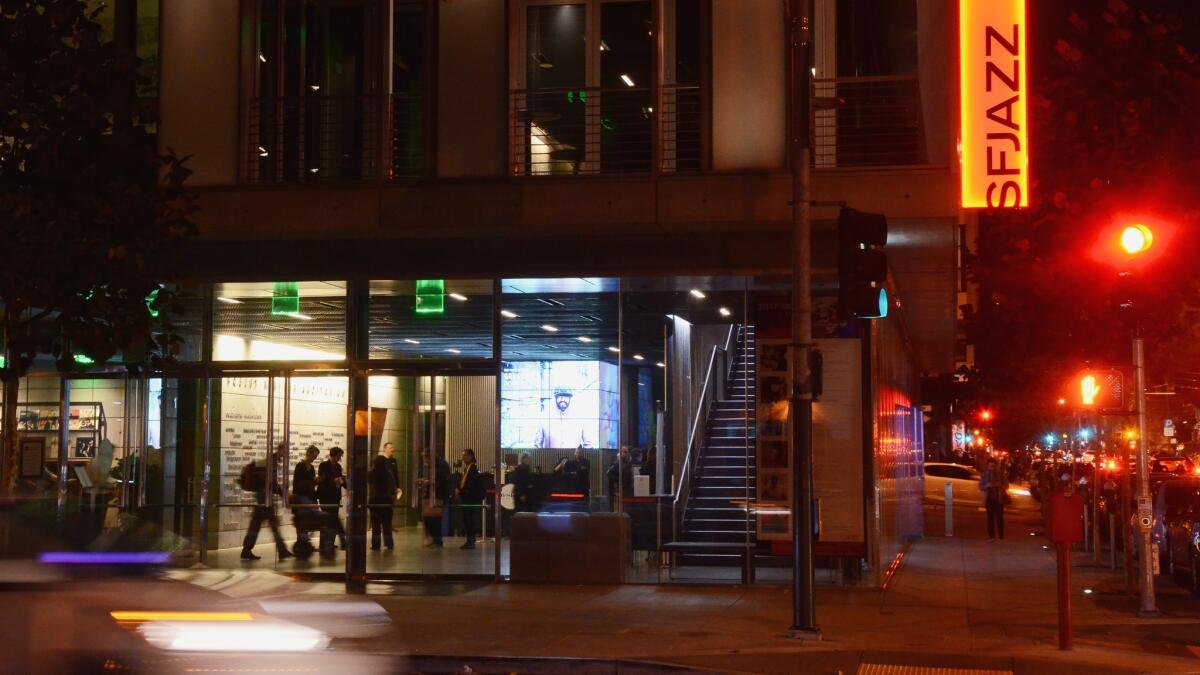
- Share via
Make tracks (with snowshoes) beneath the hefty trees in Sequoia National Park
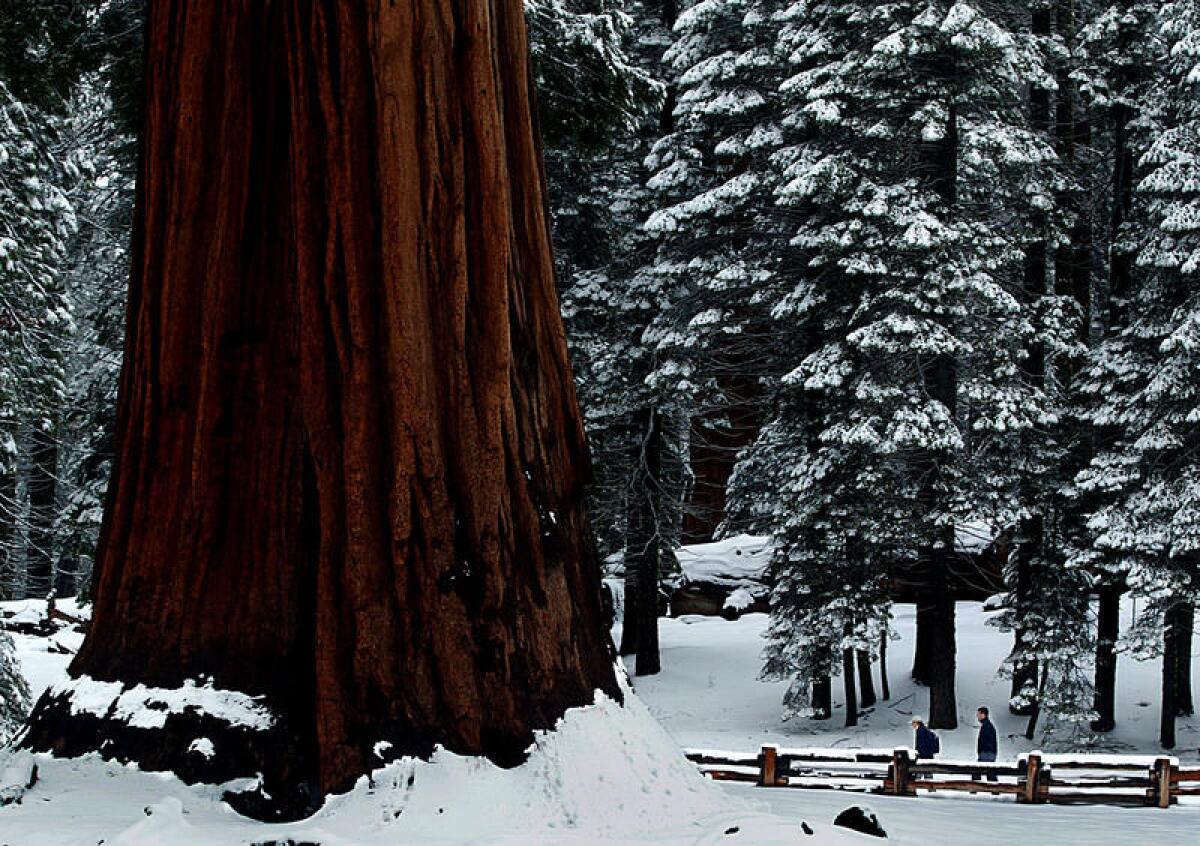
Why: Big trees, long walks, granite rocks and scampering marmots are fine any time. But a dusting of snow -- and the challenge of hiking in snowshoes -- gives the landscape a new feel.
What: You never know with the weather these days, but Sequoia, 5,000 to 8,200 feet above sea level, has gotten plenty of snow over the years. Rangers lead 1-mile snowshoeing walks in the Giant Forest area on weekends when conditions are right. (They’ll even provide free snow shoes -- the old-fashioned kind, made of wood and sinew.)
At some point, odds are good you’ll be reminded that the sequoias all around you are generally thicker than the tall redwoods on the coast. So even if the redwoods are taller, the sequoias can still lay claim to the title “world’s largest trees.” You can’t beat a hike at their feet with snow all around.
If you’d rather hike on your own, you can rent snowshoes at Lodgepole Market, about 2 miles from Wuksachi Lodge, or bring your own. Last time I tried it, our group stayed inside the park at the Wuksachi Lodge, which opened in 1999. The lodge often offers overnight-and-showshoe-rental packages in winter. Don’t go out without a trail map.
Cross-country skis are also available. Sequoia’s sibling park, Kings Canyon, also offers similar programs, along with overnight stays at the John Muir Lodge (buit in 1998).
Where: Wuksachi Lodge, 64740 Wuksachi Way, Sequoia National Park, 227 miles north of downtown L.A.
How much: The going rates for adult snowshoe rental in Sequoia are $14.50 for half a day, $18 for a full day. For children’s snowshoes, the rates are $8 and $12.
Info: Sequoia and Kings Canyon National Parks
- Share via
Hum (or rap) along with a musical at the grand old Pantages Theatre in Hollywood
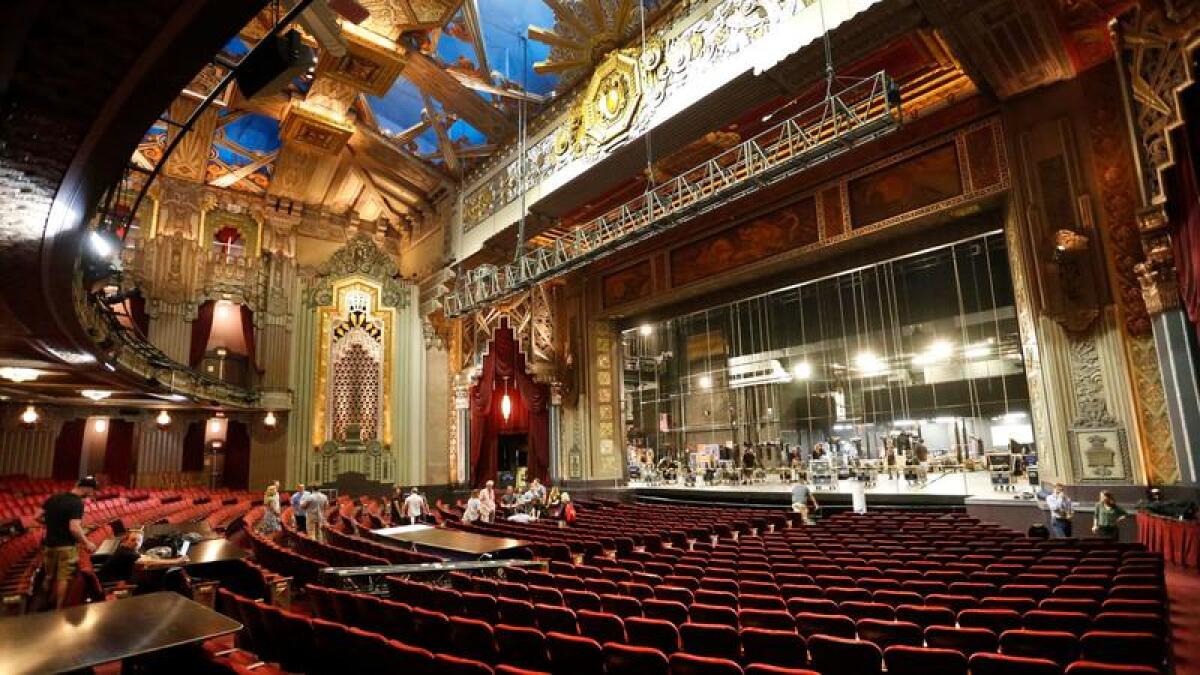
Why: Long before any show starts in this Art Deco gem, the drama begins.
What: The Hollywood Pantages Theatre opened on Hollywood Boulevard in 1930. Through the decades it has hosted movies, vaudeville shows, the Academy Awards (in the 1950s) and, for the last 40 years, live theater. “The Lion King,” “Wicked,” “The Book of Mormon,” “Hamilton” — all played here.
Since its last major renovation, in 2000, the 2,703-seat venue has been steeped in Art Deco details. The lobby alone is almost worth the price of admission, with grand chandeliers, star patterns in the ceiling and dramatic stairways at either end.
Outside, notice the sordid neon splendor of the Frolic Room bar’s sign next door (and possibly the beery scent of the Frolic Room itself). The storied corner of Hollywood and Vine is about 100 feet to the west and the Hollywood/Vine Metro stop is almost as close.
Where: 6233 Hollywood Boulevard, 6 miles northwest of downtown L.A.
How much: That varies widely. For the production of “Stomp” that’s due in April, 2018, seats are as low as $47. During the August-December run of “Hamilton” in 2017, resale prices often began above $300 per seat.
Info: Pantages Theater
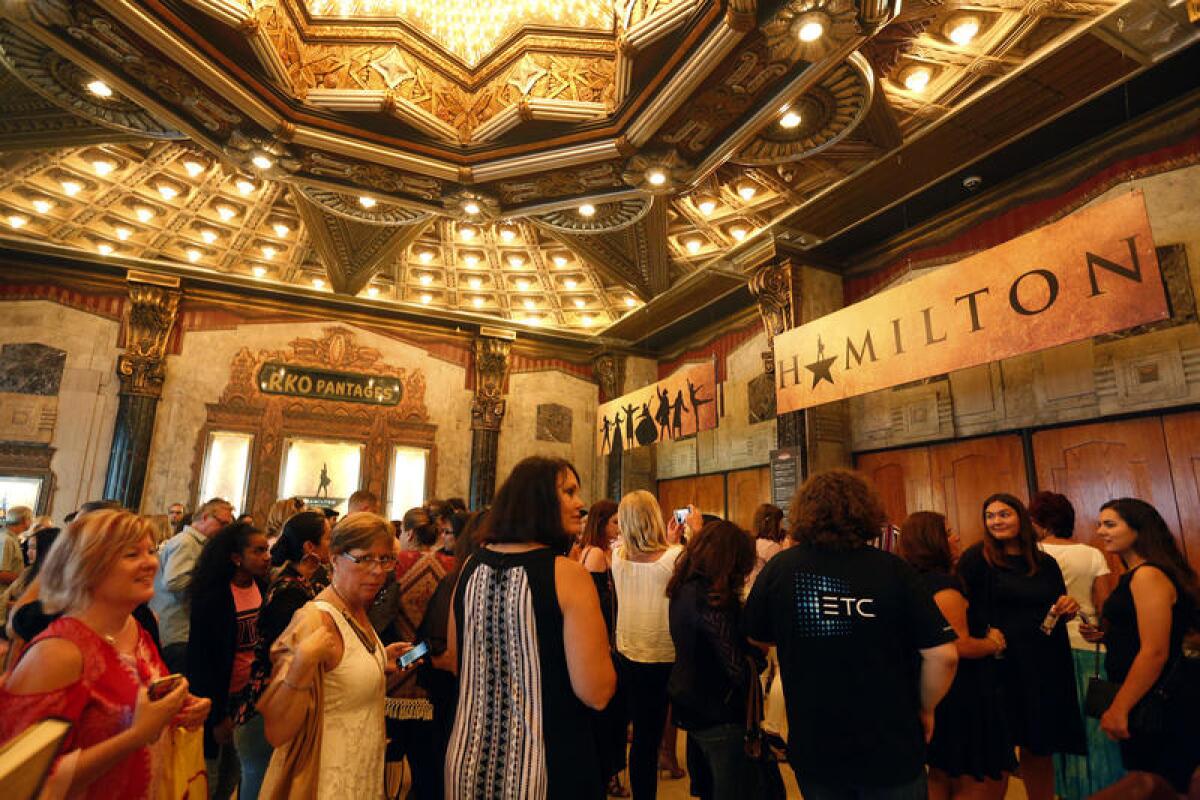
- Share via
Stake out Union Square and see San Francisco on parade
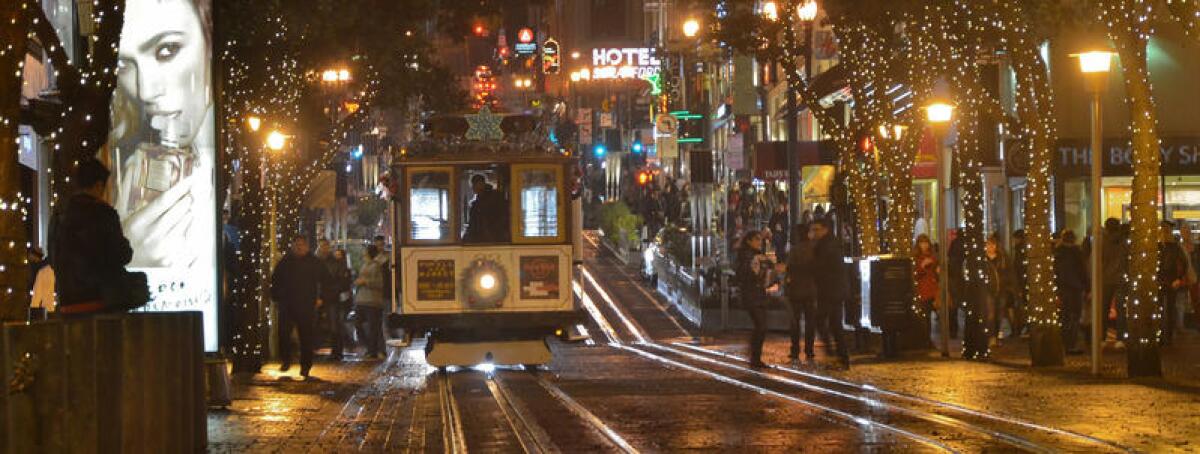
Why: High-end shoppers, scruffy buskers, baristas on break, kids, codgers, cops, robbers, jaywalkers and fast-talkers -- everybody shows up in Union Square sooner or later. Bring a hot drink, find a comfortable seat and drink it all in.
What: Union Square, which fills a single square block, is the epicenter of San Francisco tourism. It’s surrounded by a shopping district in which Macy’s vies with five other department stores (and dominates them all when it comes to holiday displays); the Westin St. Francis Hotel tends to high-dollar travelers and the Kimpton Sir Frances Drake tends to only-slightly-less-high-dollar travelers.
The square’s 2.6 acres (once a site of sand dunes) were set aside in about 1850, and its name came from the pro-Union demonstrators who massed there during the Civil War. After various updates through the years, the space has less grass than it once did, but more heart-shaped artworks (one at each corner) and more seats. and there’s a pricey parking garage underneath.
If you’re in the square after dark, there’s a good chance you’ll hear a street musician or even an entire band -- probably stationed at the busy northwest corner, close to the passing cable cars.
In winter the square puts up a massive Christmas tree and menorah, holiday lights and a skating rink (Nov. 1, 2017, through Jan. 15, 2018). In other seasons, you might find an art show, a free concert or a big tent signifying a private party to which you aren’t invited. No worries -- all those neighboring shops and department stores will be happy to have you.
Where: In the rectangle surrounded by Powell, Post Stockton and Geary streets, three blocks north of the Powell St. BART station and the Powell/Market cable car turnaround. It’s 381 miles northwest of downtown L.A.
How much: Free. Or $8,897 if your company wants to throw one of those private parties.
Info: Union Square
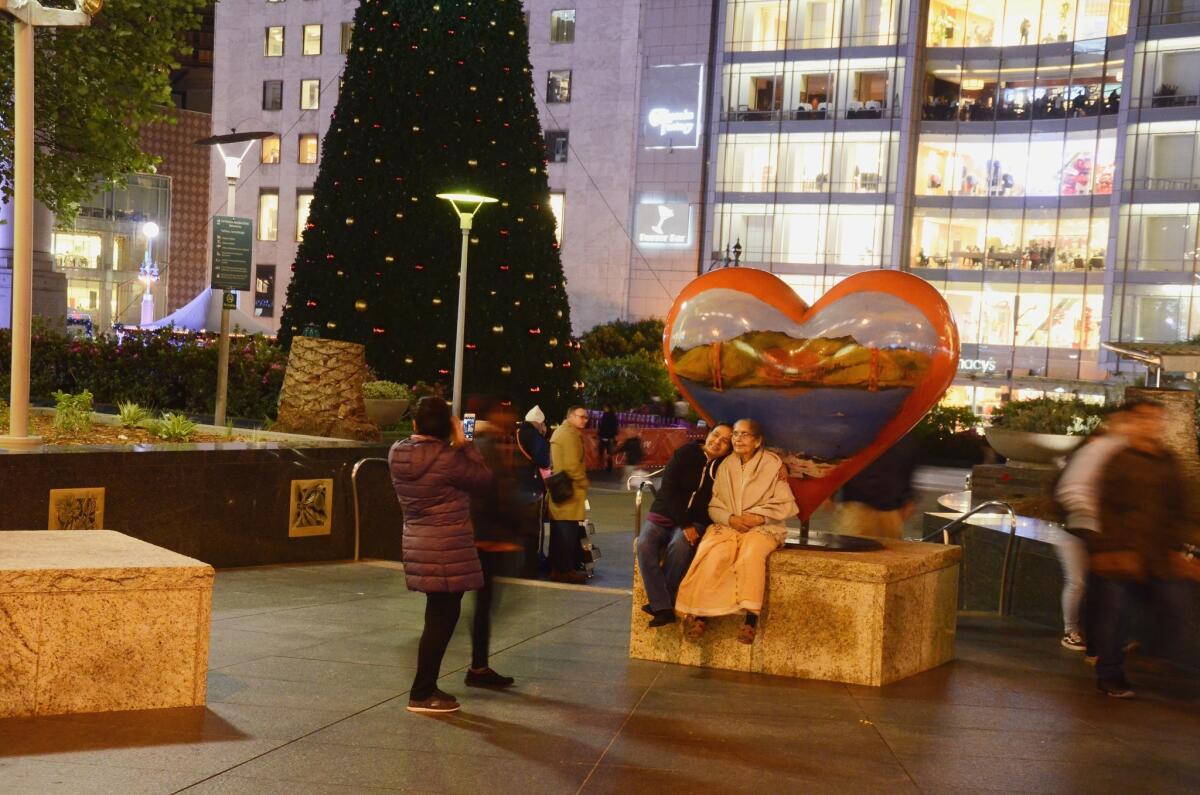
- Share via
Feast on tofu in O.C.’s Little Saigon for a new view of what bean curd can do
Why: The people at Dong Phuong Tofu know their way around the soybean. In their headquarters in Westminster — a.k.a. Orange County’s Little Saigon — they make and sell a wide variety of tofu products, which play a starring role in Vietnamese cuisine. The inventory is so fresh that items are often warm on the shelves.
What: Dong Phuong’s top man, Tony Dang, started making tofu at the age of 7 in his native Vietnam. In 1991, he opened Dong Phuong Tofu in Westminster, selling to stores and restaurants across the Southland. Today the reach is nationwide — but thanks to the small grocery outlet next to the tofu-making facility, locals can still get the goods straight from the factory floor.
Besides the company’s own products, the store offers other specialty Asian items. Lining the shelves are Dong Phuong soy milk, tofu pudding and white tofu cake (in plain, mushroom onion and lemongrass chili varieties), packaged and ready to take home. Or try the tofu cake fried up and offered cafeteria style in the store. The tofu pudding, served with fresh ginger syrup or coconut milk, is especially alluring.
As you savor the silky smooth texture and freshness, remember that all tofu products at Dong Phuong Tofu are made with non-GMO soybeans.
Where: 15022 Moran Street, Westminster, 32 miles southeast of downtown L.A. Open daily, 7 a.m. to 8 p.m.
How much: From $1 for fried tofu to $3.50 for pandan-flavored tofu pudding.
Info: No website. You’ll need to call (714) 894-7002 or show up in person.
- Share via
Visit historic Malibu Pier for a meal that may surprise you
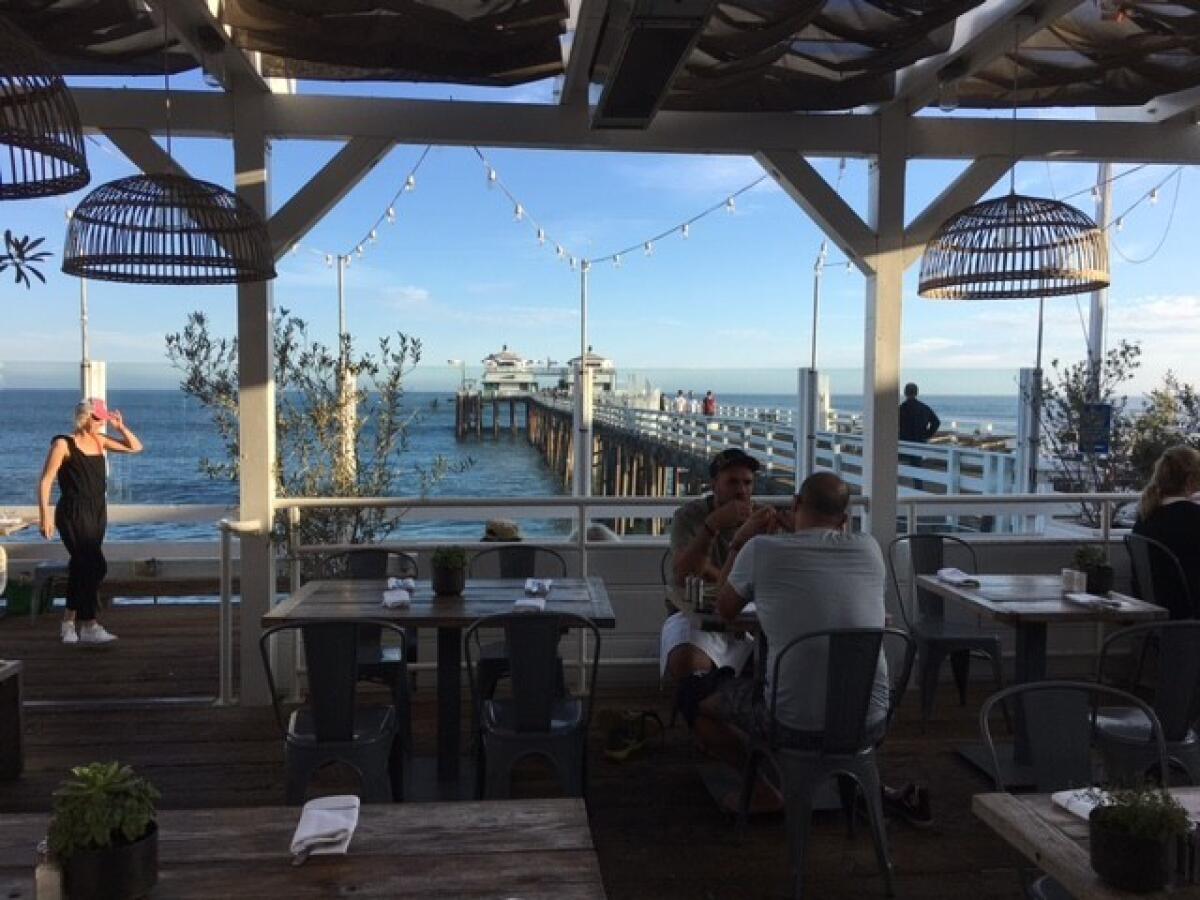
Why: The Malibu Pier is just what you’d expect from this small, wealthy, health-conscious community: No cotton candy, no amusement rides. Instead, it offers first-rate food in a setting that lets the surfers and sunsets entertain you.
What: The pier’s history goes back to 1905, when it was used to ship hides and produce from the surrounding ranches. It’s been knocked around plenty in all the years since, but like a prize fighter it keeps bouncing back.
The landmark pier was closed as recently as the 1990s, and reopened relatively recently, in 2008. Repairs are ongoing.

But the pier remains a camera-ready view spot on any visit to Malibu. Its most recent restaurant tenant is Malibu Farm, which runs full-service dining and bar at the base, and counter service at the end of the pier.
As with anything in Malibu, it is hardly bargain rate. Yogurt and granola breakfast will run you $10 and burgers lean toward 20 bucks.
Yet, unlike most pier food, which runs to corn dogs and popcorn, what you’ll get here is a carefully curated, healthy meal made with fresh local ingredients. Standout menu items include spaghetti squash lasagna and veggie paella.
Don’t rush inside, because the best tables are outside along the rails on the right side, where you’ll enjoy that hazy, bluish Malibu view. The bar faces the wrong way – toward the highway -- but offers up a pretty good selection of wines and craft beers.
It all makes for a memorable meal on this rustic, breezy, sun-splashed old pier.
Open daily, 6:30 a.m. to sunset.
Where: 23000 Pacific Coast Highway, Malibu, in Los Angeles County, 28 miles west of downtown L.A.
How much: Free
Info: Malibu Pier; Malibu Farm
- Share via
Ride the subway in L.A.

Why: While you were stuck in traffic, Los Angeles passed its Peak Automotive moment. So if you’re alert to where the L.A. Metro Rail system’s subways and light-rail cars can take you, you’re probably saving time, finding fun and recognizing the story of a great urban transformation. Take the Red Line from the San Fernando Valley to Hollywood and miss the crunch on the 101. Take the Gold Line from Chinatown to Pasadena and miss the crunch on the 110. Take the Expo Line from downtown L.A. to Santa Monica and miss the crunch on the 10. Whatever route you take, you’ll be joining a great urban transformation.
What: In 1993, the Metro people -- formally, the L.A. County Metropolitan Transportation Authority -- opened their first subway segment, a few miles of the Red Line between downtown and Hollywood. Now there are 93 light-rail and subway stations along 105 miles of track, including the beach-friendly Expo Line Santa Monica segment that opened in 2016. Bikes are allowed on Metro Rail trains any time (with a few rules, of course).
And there’s more coming. Between now and 2024, the Purple Line is scheduled to reach 9 miles west from Hollywood to Westwood, making for easy access to LACMA and UCLA in a zone often plagued by dismal traffic.
Where: As this map shows, much of Los Angeles County
How much: Standard fares on the Metro Rail system are $1.75 per ride or $7 per day or $25 per week.
Info: L.A. Metro

- Share via
Roll strikes, saddle up and wage paintball war at Camp Pendleton, whether you’re a Marine or not
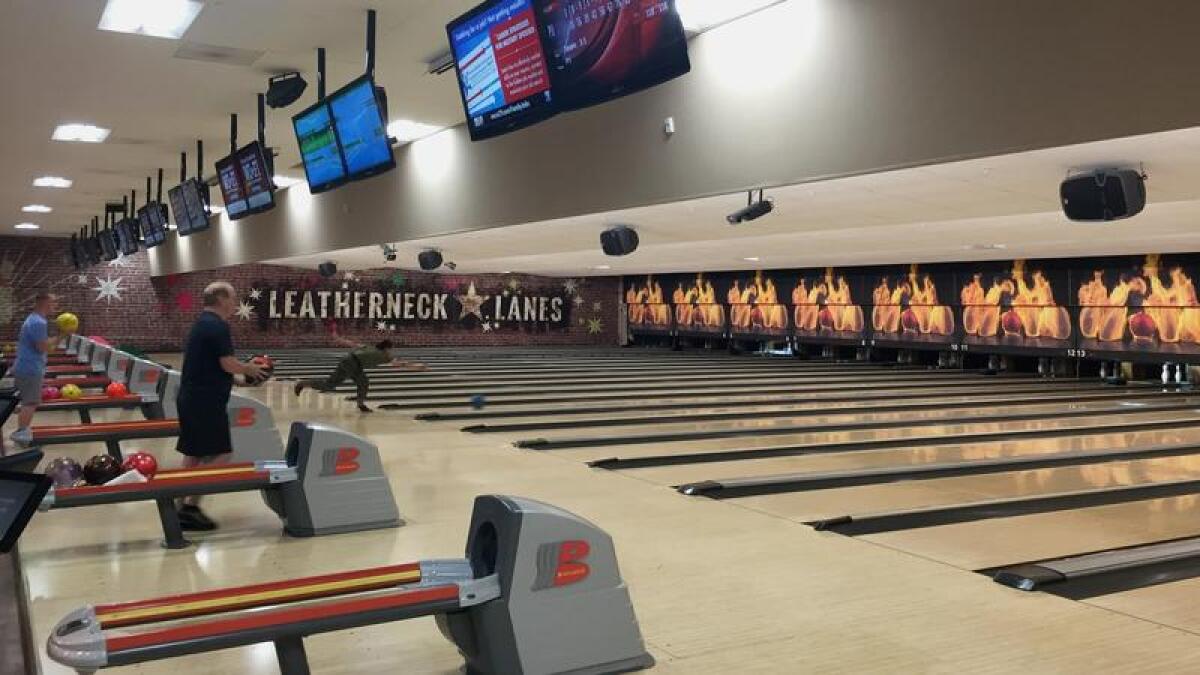
Why: From the wilds of western Fallbrook to the shores of Oceanside, this is the biggest Marine base on the West Coast. And it’s yours. As a civilian, you can bowl at Leatherneck Lanes, ride a horse from Stepp Stables, hunt, fish, golf and suit up for weekend paintball combat for ages 10 and up.
What: Camp Pendleton goes back to 1942. Most civilian Californians think of it as a vast forbidden zone that separates San Diego and Orange counties. And it does cover about 195 square miles of bush-covered coastal hills (and a few lakes). But with just a little advance planning, you can make parts of it your playground. What surprised me most was the chance to fight mock battles (using paintball gear) every Friday, Saturday and Sunday.
The paintball/Airsoft/Splatmaster territory covers more than 30 acres, including “two close-combat action houses with 15+ rooms, a village marketplace, and real military tanks and vehicles,” according to a promotional website.
But I didn’t have a platoon to play with, so I bowled. Leatherback Lanes is open daily with 40 lanes, a restaurant and rack after rack of balls, carefully sorted by color and weight. Taking advantage of midday discounts on a recent Wednesday, I paid a mere $2 to bowl a game in rental shoes.
To get on base, civilians are asked to fill out a form at least seven days in advance. But first-timers can often gain get in on shorter notice, so long as you call ahead and bring ID.
Where: The main entrance to Camp Pendleton is along Interstate 5 at the edge of Oceanside. Once you’re past the gate, the main road, Vandegrift Boulevard, will carry to you straight to both paintball and bowling.
How much: Bowling at Leatherback Lanes is $3-$6 per game, and it’s usually $3 to rent shoes. The paintball civilian Alpha package includes gun and mask rental and 200 rounds for $44.
Info: Camp Pendleton Base Access
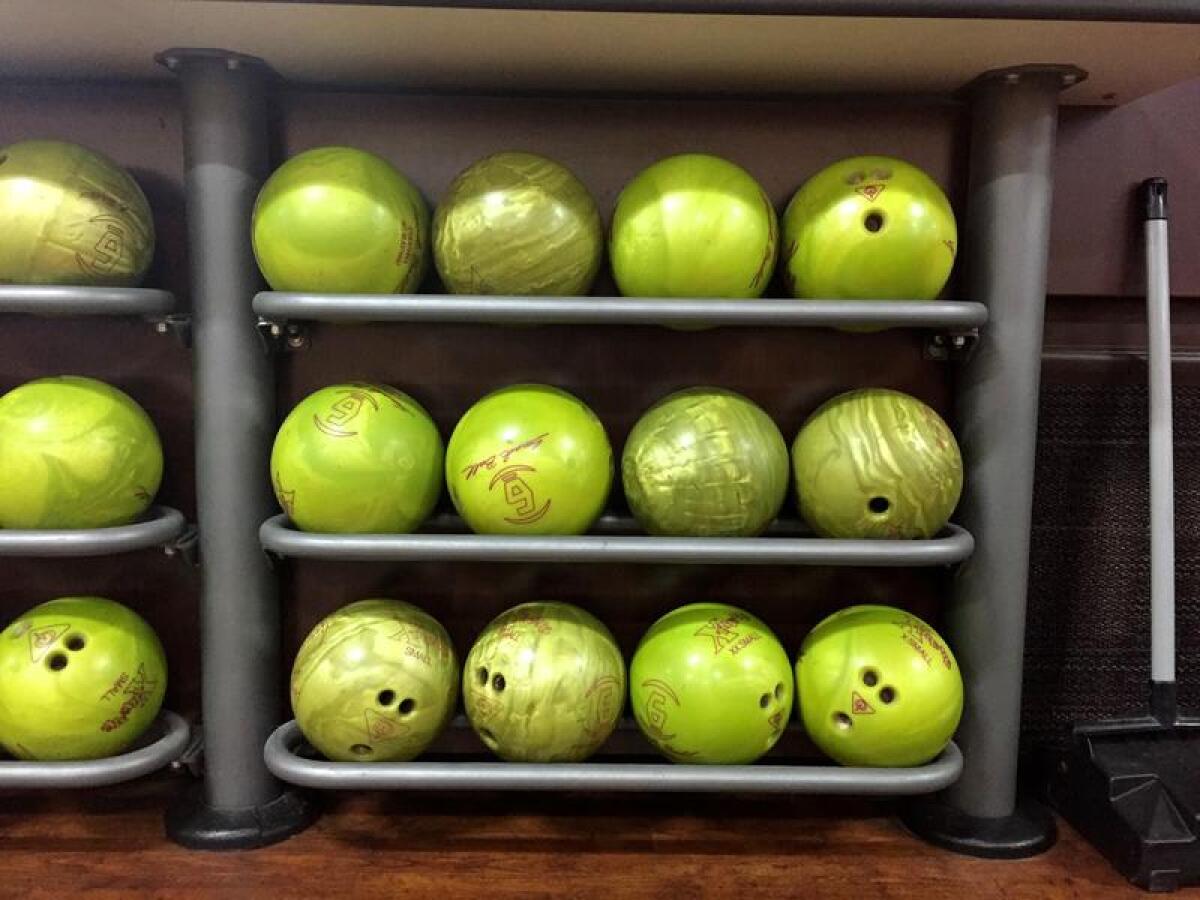
- Share via
Search the Santa Cruz Beach Boardwalk for vampires
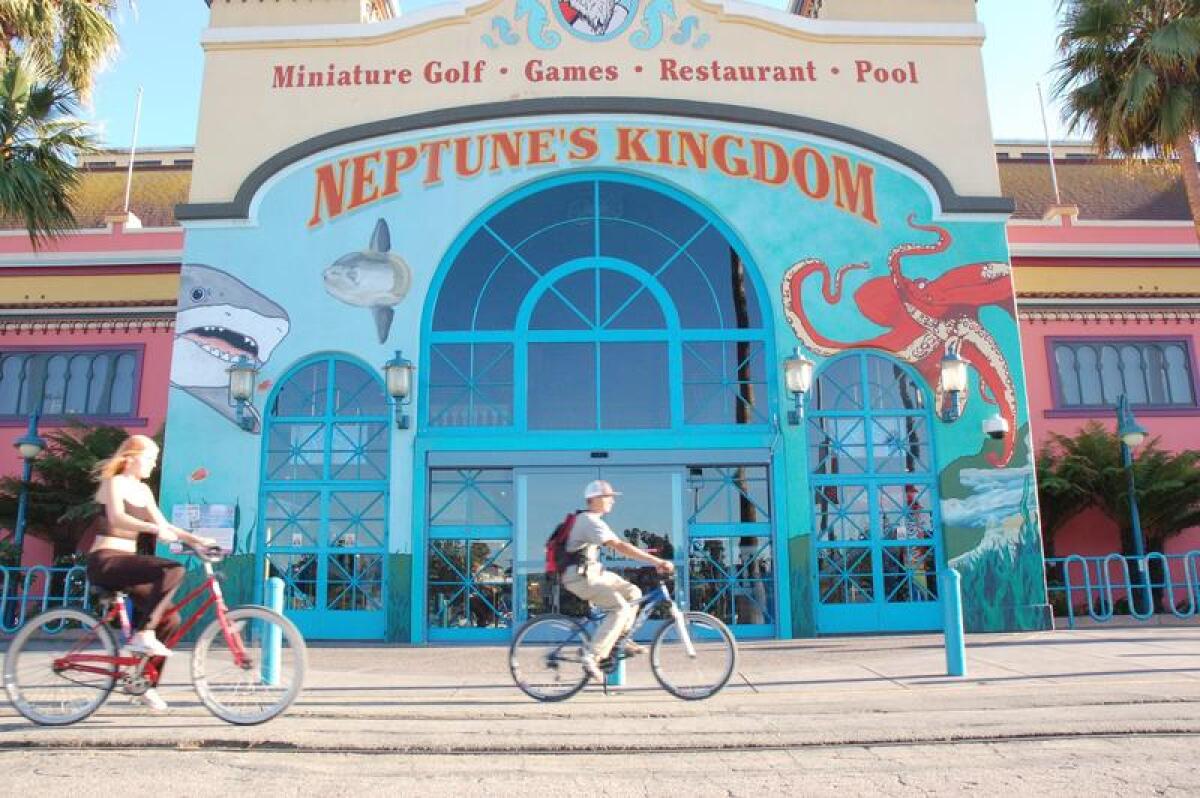
Why: The Santa Cruz Boardwalk is a throwback to the days when amusement parks peppered the beaches of California. Now only a few are left, often in barely recognizable form (Belmont Park in San Diego, for instance). But Santa Cruz, whose first casino opened in 1904, still has some gritty magic going on.
What: The boardwalk’s attractions include the wooden Giant Dipper roller coaster (opened in 1924); about three dozen rides and attractions; assorted games; wacky snack food; and a carousel from 1911. It’s all arrayed along a mile of sandy beachfront, with the Santa Cruz Municipal Wharf (whose pilings are beloved by sea lions) about 1,000 feet to the west.
Some consider this boardwalk the oldest amusement part in the state. The coaster and carousel were declared national historic landmarks in 1987, the same year that the film “The Lost Boys” made splendid and disquieting use of the site as a venue for teenage vampires. These days the movie is a cult favorite; Visit Santa Cruz in 2017 published a “Lost Boys” locations map.
Rides are open daily from Memorial Day through Labor Day and on weekends and holidays the rest of the year. The arcade, miniature golf, laser tag and bowling stay open daily year-round. (Like the rest of Santa Cruz, it gets chilly.)
Where: 400 Beach St., Santa Cruz, 76 miles south of San Francisco, 341 miles northwest of downtown L.A.
How much: An all-day rides wristband costs $36.95. It’s $7 to ride the Giant Dipper.
Info: Santa Cruz Beach Boardwalk
- Share via
Walk in the footsteps of Hawkeye and Trapper John on ‘MASH’ hike in Calabasas
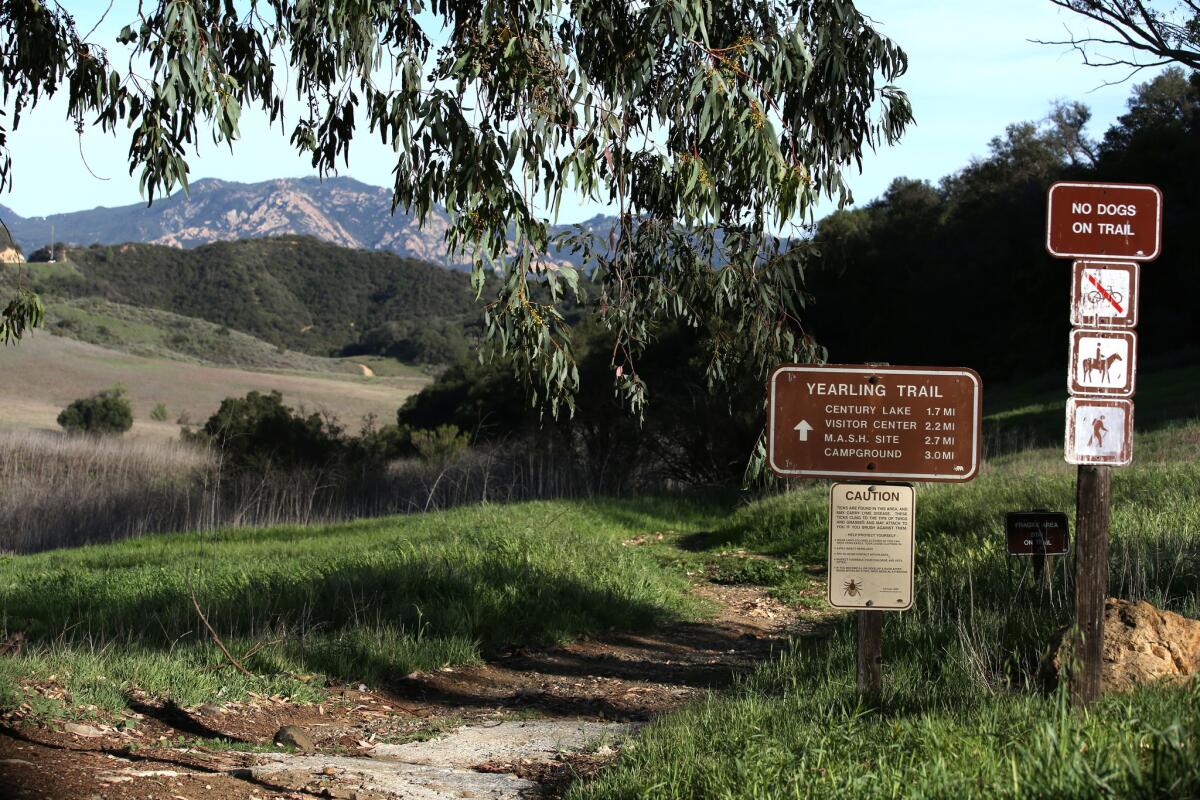
Why: You can almost hear the “MASH” choppers coming over the ridge at Malibu Creek State Park, which features hiking trails to the show’s outdoor site, shady canyons and plentiful creeks and ponds.
What: Malibu Creek State Park, in the Calabasas area north of Los Angeles, offers a vast selection of hiking options, including some that touch TV history and some ranch buildings once owned by Ronald Reagan.
With craggy cliffs, creeks and cool, dark ponds, it invites exploration, and probably appeals more to children than most trail systems do. Along the way, look for bundles of mistletoe hanging from the sycamores.
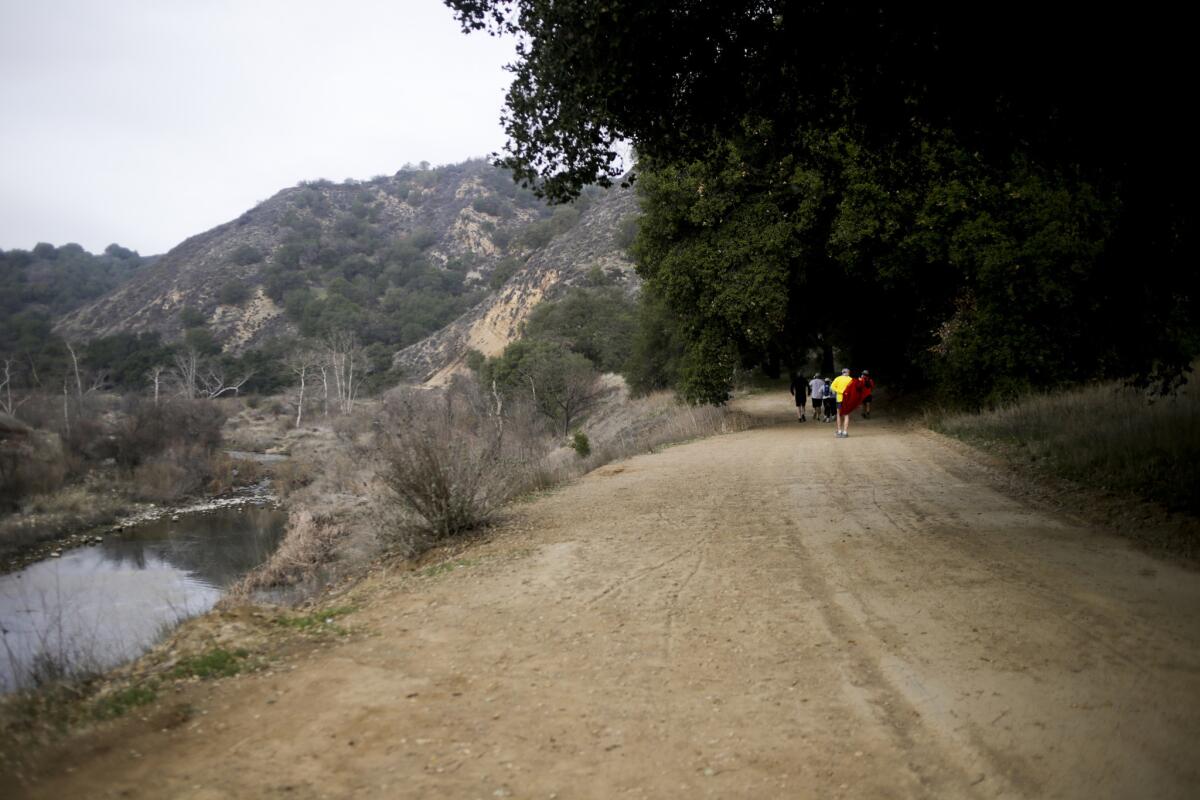
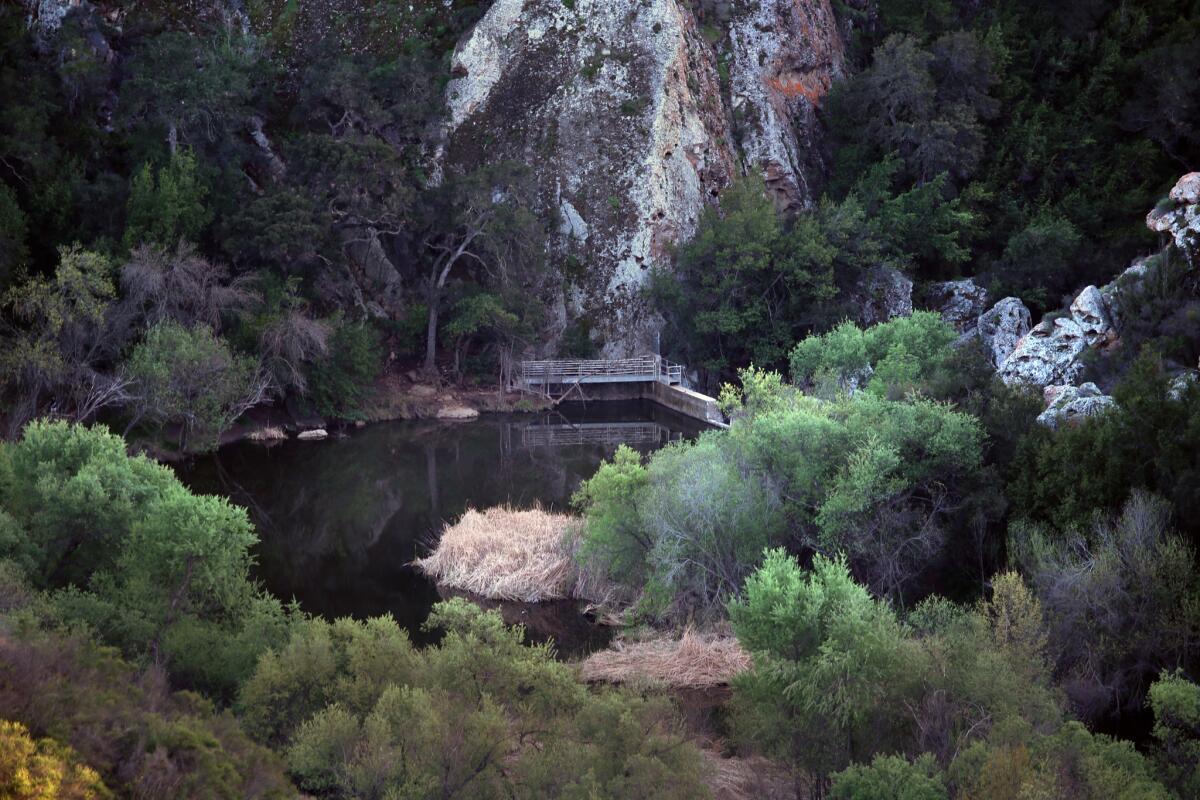
For a solid workout, take Crags Road, and walk into a shady valley toward Forest Trail. On the left, the reservoir. Continue on to the filming site for “MASH” (1972-1983). The distance from parking lot to the TV site is about two miles, much of it uphill.
Once there, explore the remnants of one of television’s most popular shows, including an old jeep and an ambulance, in a setting that stood in for the show’s Korean War exteriors.
On the way back, veer to the right for a tour of Malibu Creek’s water features. The dark ponds are lush and shady and a huge relief from the afternoon heat. It’s a wonderful location for a game of hide and seek, or just a picnic and a nap.
As if that’s not enough, Malibu Creek is also the site of SoCal’s toughest trail run. Bulldog, a fire road located entirely inside the park, climbs nearly 1,800 feet over almost 4 torturous miles. The entrance to Bulldog is off the main trail in the park, Crags Road, just past the “MASH” site.
The park has a rich history, and was once a busy center of Chumash life. The park was also used to film “Planet of the Apes,” and much of the land was donated by Bob Hope, Ronald Reagan and 20th Century Fox.
Where: 1925 Las Virgenes Road, Calabasas, Calif., 34 miles west of downtown L.A., in Los Angeles County. From the 101, exit on Las Virgenes Road, head south to the park entrance just past Mulholland Drive.
How much: Parking $9 for three hours, $12 all day. Note: No dogs on trails.
Info: Malibu Creek State Park
- Share via
Line up at Kogi BBQ, Korean-Mexican queen of L.A. food truck culture
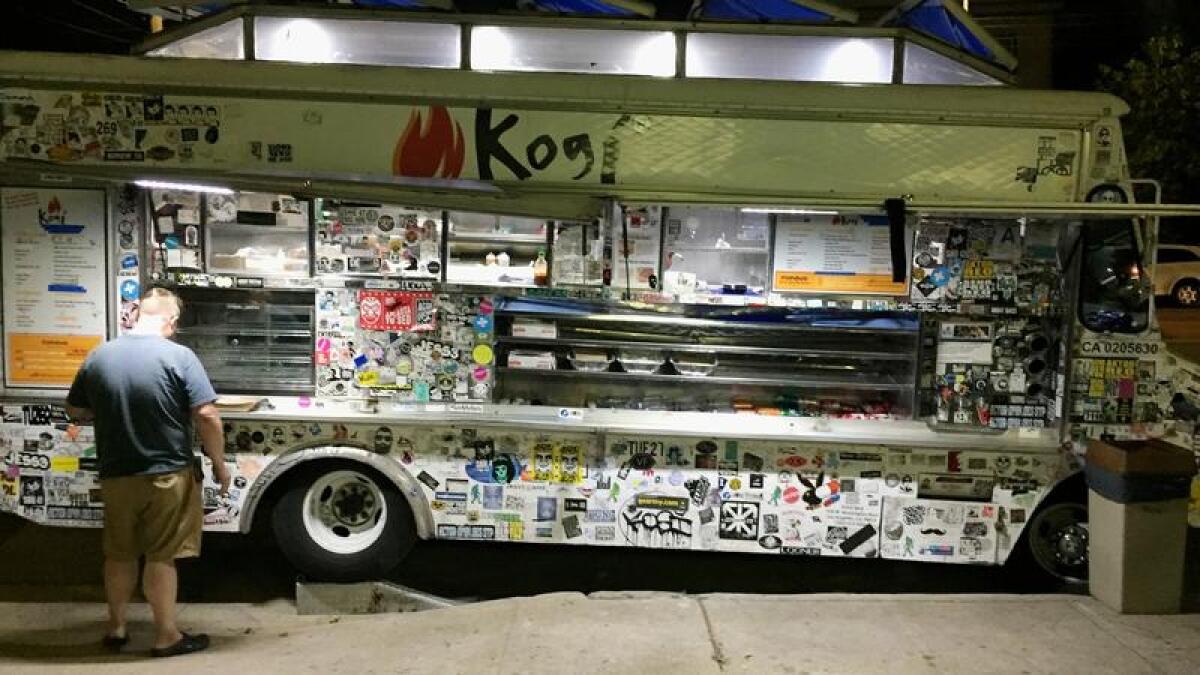
Why: The food, a spicy marriage of Korean and Mexican cuisine, tastes great. And the backstory is the stuff that contemporary California is made of: Young buddies hatch a scheme, rig up a truck, start tweeting and build an empire by fusing Korean, Mexican and web cultures. Now co-founder Roy Choi is one of the city’s most famous chefs.
What: Born in 2008, the Kogi empire now includes three trucks (code names Roja, Verde and Naranja, which roam the coast, the valleys and Orange County); three taco stands; and three Chego! restaurants. The blackjack quesadilla is a potent introduction to the Kogi way: flour tortilla, pork bellies, Korean chili paste, cheddar cheese, Jalapenos and a host of supporting ingredients.
As Times restaurant critic Jonathan Gold writes in his latest list of 101 favorite L.A. restaurants, Kogi “is cheap, unbelievably delicious and unmistakably from Los Angeles, food that makes you feel plugged into the rhythms of the city just by eating it.” Accordingly, in October when L.A.’s Eric Garcetti made the traditional mayoral World Series wager with his Houston counterpart, he offered up Kogi BBQ and Golden Road brew if the Astros should win.
Where: The trucks keep moving. A Twitter feed, @kogibbq, keeps 152,000 followers in the loop.
How much: $8 for a Blackjack quesadilla, $2.50 for a spicy pork taco.
Info: Kogi BBQ
- Share via
Test your luck or raid the buffet at Pechanga, the biggest Indian casino in California
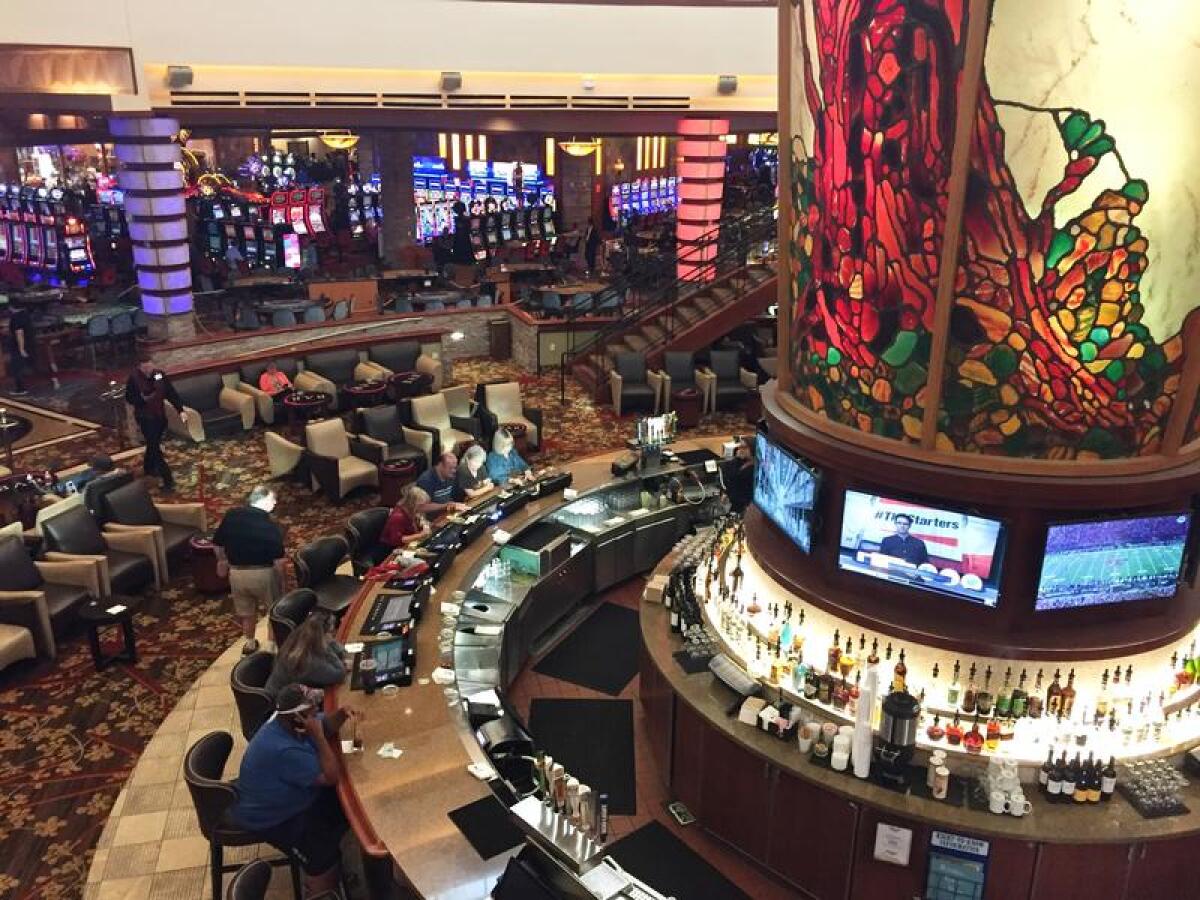
Why: Because the Pechanga casino, by some measures the largest Indian gambling resort in California, will give you that Vegas sensation without requiring a drive into Nevada. Or because the Pechanga resort is a milestone in the long, dysfunctional relationship between California’s native peoples and its colonizers.
What: You name a game, they offer it. They bring in performers such as Smokey Robinson, Ali Wong and the Brian Setzer Orchestra. They call bingo in a vast upstairs room full of blue and green fiber optic lights. It’s Vegas -- except that you’re in Riverside County, among the rock-studded hills, wine country and Temecula suburbs. And in the display windows along the casino walls, you see baskets, pots, bows, arrows, arrowheads and harsh old photos -- reminders that this is a reservation where life was hard.
You probably won’t quintuple your money (as I did in 20 seconds at the slots). But you will be reminded just how much the world has changed since 1884, when Helen Hunt Jackson decried Indian suffering in her novel “Ramona;” and since 1987, when the nearby Cabazon and Morongo bands of Mission Indians won the U.S. Supreme Court decision that effectively launched casino gaming on California tribal lands.
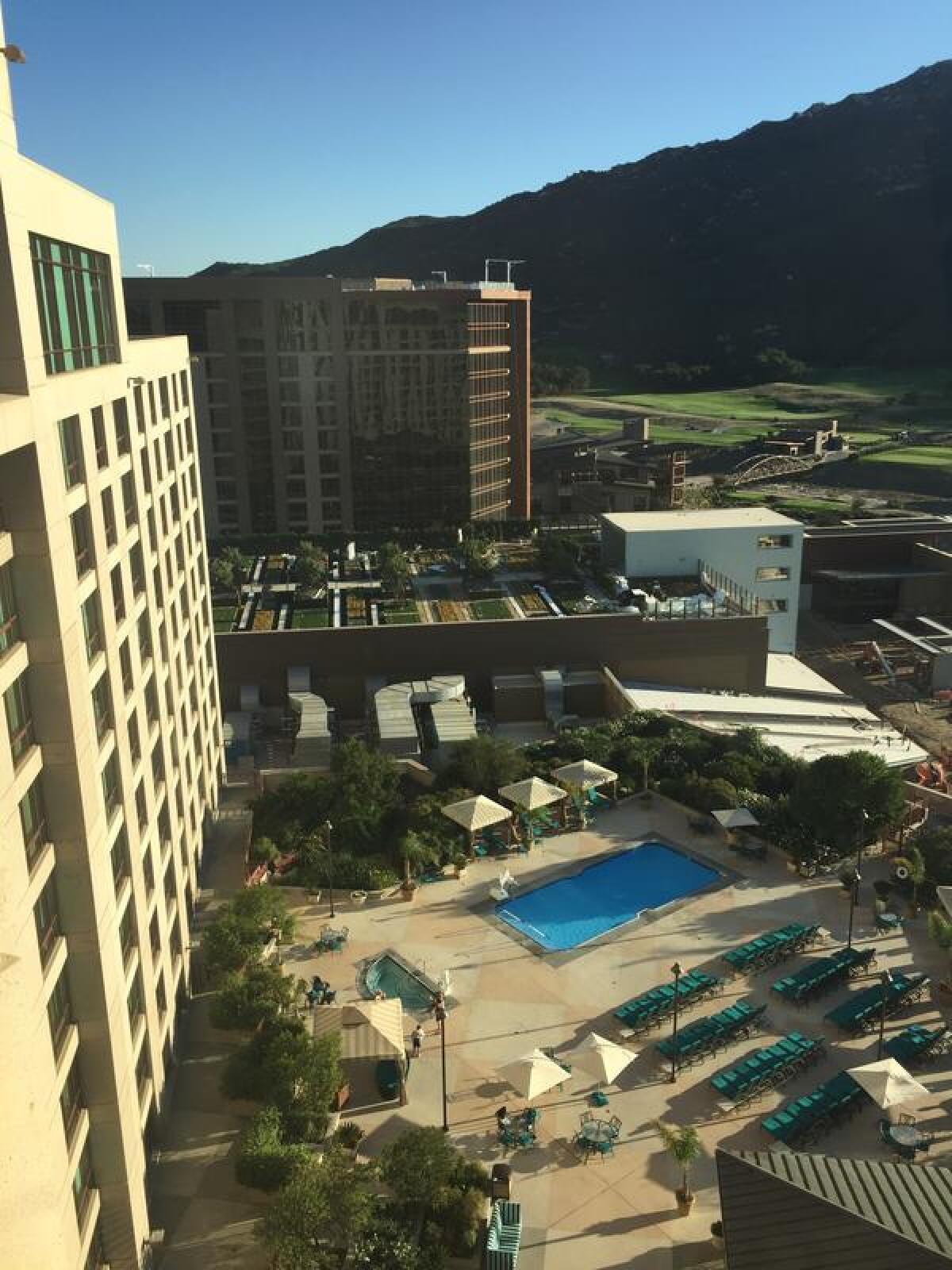
That precedent is why the Pechanga resort stands today, lights blinking, bells ringing. It has about 4,300 slot machines, more than 154 tables games, that 700-seat bingo room upstairs, a golf course, more than a dozen bars and restaurants and 522 hotel rooms. And an additional 568 rooms and a new spa and pool complex are due to open in late 2017 or early 2018.
Though poverty and poor health remain challenges in the state’s native communities, Indian casinos (including the Morongo Casino outside Palm Springs) rake in an estimated gross of $7.9 billion yearly in California and northern Nevada.
Where: 45000 Pechanga Pkwy., Temecula, 90 miles southeast of downtown L.A.
How much: The buffet dinner (prime rib, pizza, pasta, Spanish rice, oysters, Chinese broccoli, smoked salmon, grilled quail, collard greens, etc.) is $26.99-$32.99, depending on the day. Rooms for two typically start at $169 on weekday nights, about twice as much on weekends.
Info: Pechanga Resort & Casino

- Share via
Gobble pie while autumn colors the San Diego County mountain town of Julian
Why: Because who says pie isn’t a meal? Apparently many of us can eat pie all day long, especially when visiting the apple-centric and scenic hamlet of Julian.
What: This might be a small spot in the mountains of San Diego County, but there’s a lot going on. You could explore mining history (gold was found here in the 1870s and Eagle Mining Co. offers tours); take an apple or pear orchard tour; hike and picnic amid the pines and manzanitas; or shop collectibles and crafts as you stroll past historic homes and old-time stores. But for some of us, Julian is fundamentally a chance for a dessert tour.
In the early 1900s, growers found Julian a fine place for apple trees. Today, it’s all about the products made with apples – especially the pie.
Walking the compact downtown, it’s hard to pass up delectable scents wafting from the bakeries. Among our favorites: the apple mountain berry crumb with cinnamon ice cream at Julian Pie Co. and the sugared pie crust cookie (which reminded my spouse of the ones his mother made) at Apple Alley, a homespun bakery and cafe.
Where: About 4,200 feet up in back-country San Diego County, 138 miles southeast of downtown L.A. The town is reachable from north and south by State Route 79 or from the vast Anza-Borrego Desert (to the east) on State Route 78.
How much: How hungry are you? Whole pies (fresh or frozen) range from about $15 to $25.
Info: Julian Chamber of Commerce

- Share via
Slow down at Tassajara, a Zen retreat in the Santa Lucia Mountains
Why: Mindfulness is hard, monkey-mind the bane of modern life. Constant interruptions from work, families and phones keep us from our true selves, or so the mystics say. But what about – wait, hold on a second, oh yeah – just completing a thought without distraction? Some getaways promise peace and quiet. Tassajara, the famed Zen center located deep inside the Santa Lucia Mountains, delivers. Its zendo, cottages, baths and trails are a tonic for what ails us.
What: From late April or May through September, visitors join students and monks who live year-round at the end of a 14-mile dirt road that rises out of the Carmel Valley, snakes along a precipitous ridge line and drops into a beautiful sycamore- and oak-clad canyon. It’s Shangri-La with a California twist. Reservations are made through the San Francisco Zen Center, and while the atmosphere may seem a little forbidding (no cell coverage, limited electricity, a modest dress code, no pets), the staff is friendly and hospitable. The 2018 season will be April 26-Sept. 9.
Accommodations range from cottages of river stone to clapboard cabins, from a yurt to a dormitory with communal dining. (Tassajara is famed for its breads and lavish vegetarian fare.)
Time slows inside the canyon as the sun clocks from east to west. Guests wander shady paths from the meditation hall to the swimming pool, from a spacious yoga studio to the Japanese-style bath house. Daily Zen services, instruction and occasional lectures are open to everyone. Special retreats – classes on creative expression, spirituality, ecology and yes, mindfulness – are offered throughout the summer season.
Where: Tassajara is located at the end of the Tassajara Road, which begins in Jamesburg, located off G16, the county route running between Carmel and Highway 101. Four-wheel-drive vehicles are recommended, and a shuttle van is also available for guests who don’t want to make the hourlong drive.
How much: Most rooms for two run $251-$446; rates vary by day of the week and occupancy. There are also dorm rooms and cabins that accommodate up to six guests. The day use rate is $34 per adult.
- Share via
Live out your L.A. Midcentury Modern fantasy in an iconic Case Study house
Why: Now you can immerse yourself in the Midcentury Modern house that famed photographer Julius Shulman vaulted to icon status, a symbol of 1960s sophistication. His alluring black-and-white photo shows two well-dressed young women lounging in a glass-walled living room while the house appears to precariously perch on the edge of a mountain.
What: Pass through the front door of architect Pierre Koenig’s Stahl House — also known as Case Study House No. 22 — and prepare to gasp. Before you is a dazzling view that sweeps uninterrupted across the Los Angeles basin, from downtown L.A. to Santa Monica Bay and, on a clear day, beyond to Catalina Island. Laid out immediately at your feet is a courtyard consisting of a sleek, angular pool surrounded by smooth concrete. This is the first “room” you enter.
Wandering around the rest of the site doesn’t take long. It’s a small two-bedroom/two-bathroom. What does take time is absorbing the visuals of the place. The structure is post-and-beam but built with steel (instead of wood), glass and concrete. Because most of the walls are windows, it makes for jaw-dropping panoramic views and light-filled rooms. My suggestion is as soon as you finish exploring the place, take a seat somewhere and just gaze for as long as you possibly can. Then exhale. It’s tranquil up there.
Koenig, the man behind this transparent home, was a Northern California boy who studied architecture at USC. On his way up to modernist stardom, he met with Clarence “Buck” Stahl, a family man who had made an international-style model of a house he wanted built on his West Hollywood hillside property. Koenig was natural fit for the job with his predilection for affordable, industrial materials. He was also a risk-taker — willing to take on a site some considered unbuildable. In 1960, the home was completed. Today, it’s considered a masterpiece of Midcentury Modern design.
Tours take place three times a day: mid-afternoon, late afternoon and evening. The owners allow only a small number of guests per visit. A docent is there to answer questions and inform.
Where: 1635 Woods Drive, Los Angeles, about 200 yards north of the Chateau Marmont Hotel on Sunset Boulevard, about 10 miles northwest of downtown L.A.
How much: Tickets run $35-$90 depending on what time of day you attend a tour and with how many people. Demand is high, so schedule your tour at least eight weeks in advance, especially during the summer months. Also, be ready for some stiff restrictions on photography.
Info: Stahl House
- Share via
Eat well on the edge of Malibu, with a pelican’s view of the coast
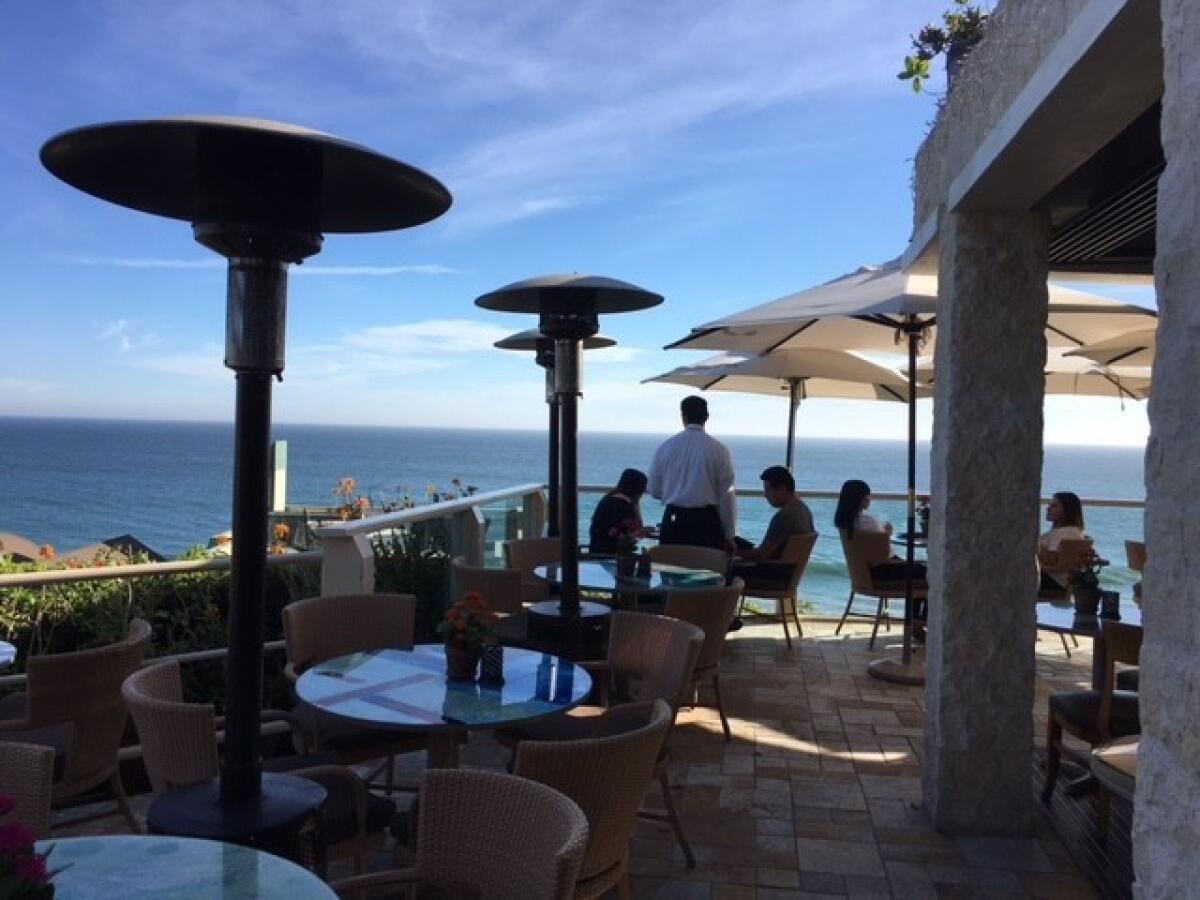
Why: It’s amazing how few L.A.-area restaurants celebrate the outdoors. Geoffrey’s in Malibu does. There’s hardly a bad table in this special occasion venue, where the ocean is almost as close as your wine glass.
What: A little fancy, yet hardly stuffy, Geoffrey’s has long been a go-to Malibu restaurant for anniversaries, proposals, birthdays and wedding showers.
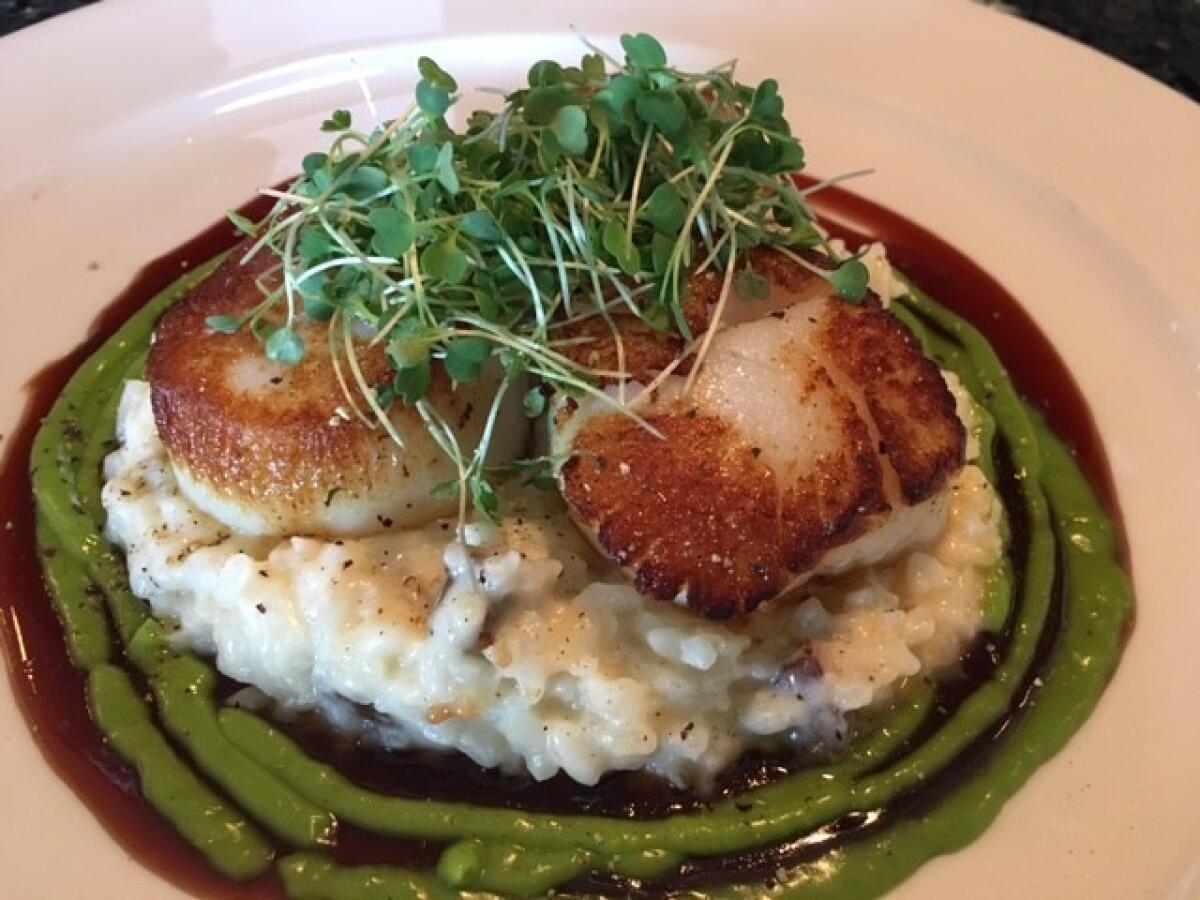
The patio restaurant is super busy in summer and over the holidays, making a warm November day an excellent time to go for a leisurely lunch – it stays open through the afternoon, with a brief pause from 3:30 to 4 p.m., as it resets for dinner. But linger at your table; this isn’t a place to rush you out.
At dinner, gas pits light up the night. On this cinematic stretch of the northern Malibu coastline, in the afterglow of a California sunset, with the fire dancing nearby, there’s hardly a more romantic getaway.
The cool Pacific chills the evening, so bring a jacket or sweater. If you forget, your server will offer a blanket. It makes the restaurant open to the elements and cozy at the same time.
What to order? Geoffrey’s offers a modest but interesting menu, served in satisfying portions: paella, steaks, seafood. The kitchen is quick, and scallops come out sizzling -- big and round as your coffee cup, on a bed of foie gras risotto. The crème brulee, big enough for two, arrives over a chocolate hazelnut base.
Where: 27400 Pacific Coast Highway, Malibu, Calif., about 35 miles west of downtown L.A.
How much: Lunches from about $15, but most $25-$30. Dinners from $28, but most entrees around $40.
Info: Geoffrey’s
- Share via
Peer back into history and into the mind of genius at Casa del Herrero in Montecito

Why: If you need to be convinced that the delight is in the details, a visit to Casa del Herrero in Montecito will make a believer out of you. If you’re already a believer, you’ll be in your element.
What: Casa del Herrero (House of the Blacksmith), a 1925 home designated a National Historic Landmark in 2009, lets you peek into California, Spanish and Moorish homes and history. George and Carrie Steedman (pronounced sted-man) of St. Louis decamped to build their Spanish Colonial Revival dream house on 11 acres. If its design looks familiar, it’s because architect George Washington Smith designed nearly six dozen homes and some commercial buildings in the area. Their collaboration was like genius squared.
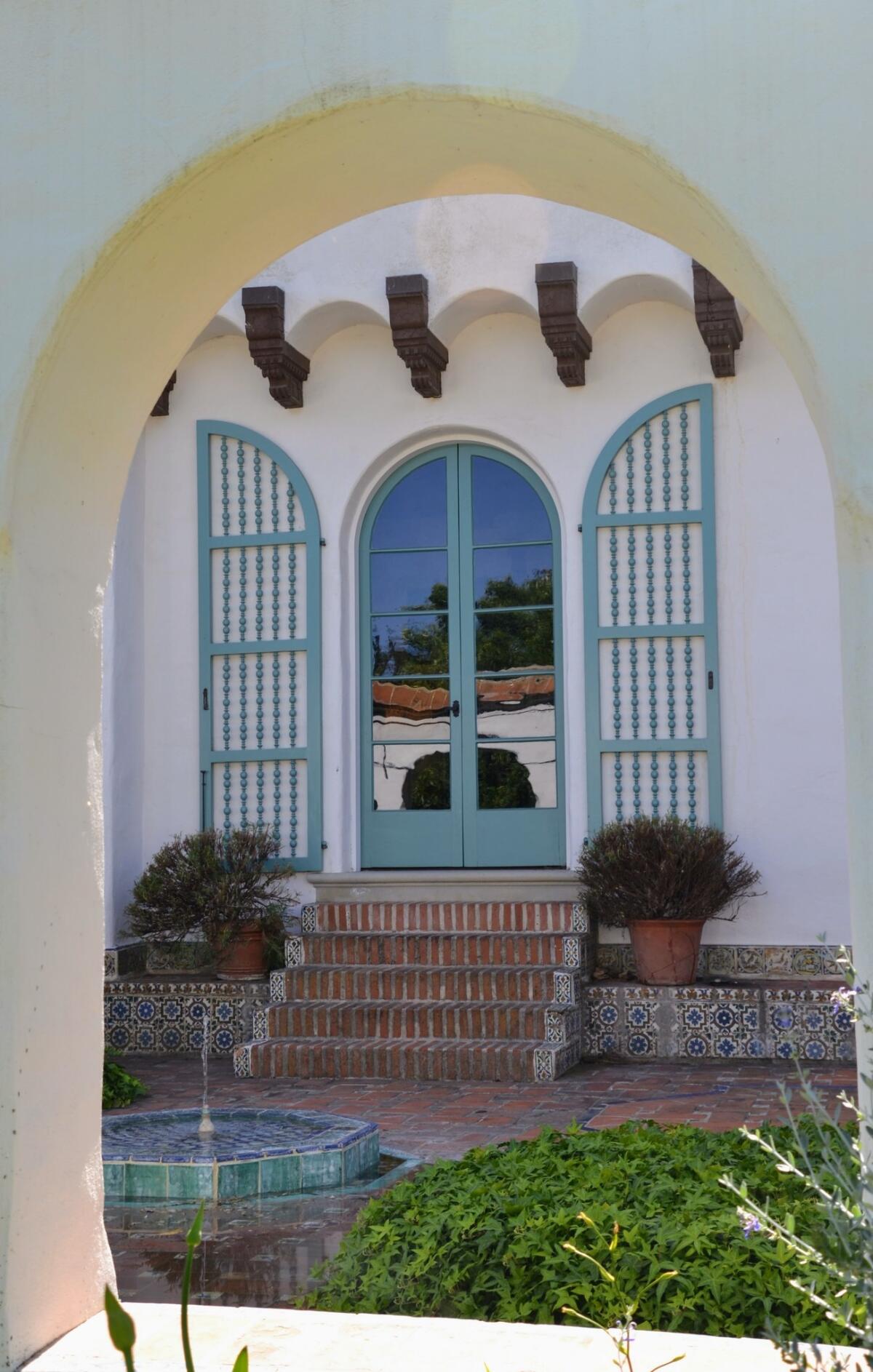
The courtyard entrance, where a Spanish-tiled fountain gurgles, brings visitors to the front of a house that looks disappointingly plain. Not to worry. Open the door and you’re transported to southern Spain and its Moorish influences. The rooms reflect an Iberian shopping spree that filled the house with 13th and 17th century furnishings, tapestries and more.
Not all the objects could be used for their original purpose, so parchment pages from a 15th century Gregorian chant choir book became lampshades; a door designed for a sacristy in a small town outside of Seville, Spain, goes to a linen closet.
The living room adheres to the notions of entertaining not in the 1920s but in Spain: Chairs line the walls, and tables in the middle are used for refreshments. It is no wonder the Steedmans did much of their entertaining outside.
The gardens — the outdoor rooms, really — reflect a panoply of influences, some European, some Californian, some practical and some aesthetic, and they provided ample floral fodder for Carrie Steedman, whose more than 300 flower-designing ribbons hang in an area her husband set aside for her in his workshop.
George Steedman’s genius is most evident in that workshop, his version of a man cave. His fortune came from manufacture of munitions in World War I, and his abilities with metal translated into the creation of numerous touches, including finials he copied, then cast here; silver chargers used in table settings that he created and engraved; a barbecue grill that could be disassembled and reassembled for easy transport to the back grounds for a cookout. House of the Blacksmith indeed.
How much: $25 a person; children 10 and older are allowed. Tours by reservation (which can be done online) at 10 a.m. and 2 p.m. Wednesdays and Saturdays.
Where: 1387 E. Valley Road, Montecito, about 95 miles northwest of downtown Los Angeles.
Info: Casa del Herrero
- Share via
Pay respects to Liz Taylor, Walt Disney at this glitzy graveyard to the stars in Glendale
Why: This is one of the grand cemeteries in the world -- in setting, in scope, in star power. Step inside Forest Lawn Glendale and honor the memories of Elizabeth Taylor, Walt Disney and Jimmy Stewart, among dozens of other famous names.
What: California in spirit, with wide lanes and sunny vistas, Forest Lawn Glendale is a far cry from the grim graveyards seen in most places.
The 300-acre cemetery dates to 1917 when Hubert Eaton took it over in hopes of celebrating eternal life. It hosts funerals, art shows and weddings. Ronald Reagan married Jane Wyman in one of its chapels.
Grab a map from the info booth as you enter the lush and hilly cemetery. Out of respect for privacy, the map will not guide you to the stars’ graves, but other resources offer maps.

Still, finding celebrity resting places in the expansive cemetery is a bit of a scavenger hunt.
From the front gate, follow signs to the wonderfully gothic Great Mausoleum, where Elizabeth Taylor is buried and honored by a giant angel at the end of the hallway. L. Frank Baum, of “Wizard of Oz,” fame is buried to the west of the Great Mausoleum, with a hefty tombstone.
Michael Jackson? He rests in a private section not open to the public.
But Jimmy and Gloria Stewart are marked by humble graves that are open to public viewing – though not easy to find.
As you face the Wee Kirk O’ the Heather chapel, they reside up the hill to your left: space 2, lot 8, small markers near the statue of a man holding an arrow.
Clustered at the Freedom Mausoleum, you’ll spot the graves of Walt Disney, Spencer Tracy, Errol Flynn, George Burns and Nat “King” Cole.
Where: 1712 S. Glendale Ave., Glendale, Calif., about 15 minutes from downtown Los Angeles, in Los Angeles County.
How much: Free
Info: Forest Lawn Glendale, (323) 254-3131
- Share via
Buy the body-outline beach towel of your nightmares at the L.A. County coroner’s gift shop
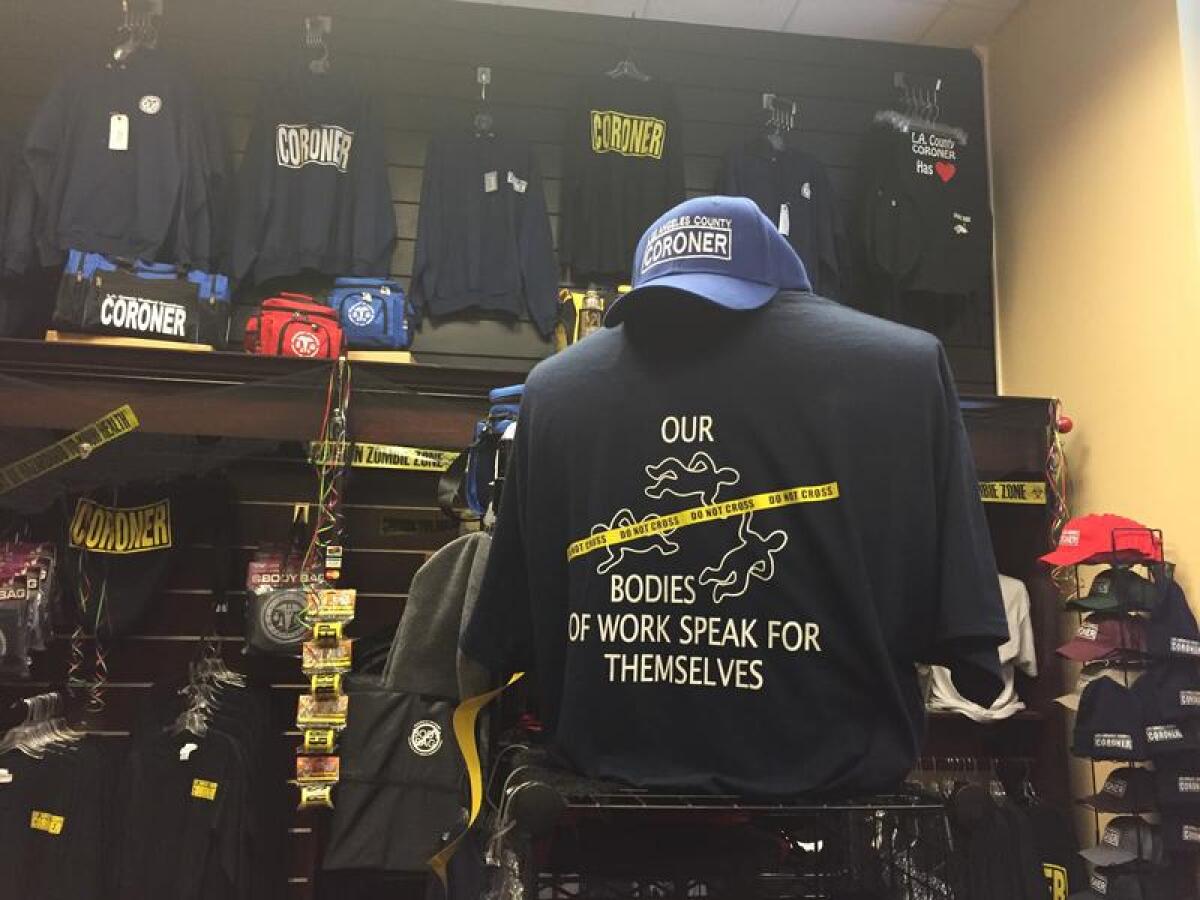
Why: If death is inevitable, capitalism is inexhaustible and Los Angeles is Los Angeles, it should be no surprise that the L.A. County coroner has a gift shop. And let’s face it, you’re curious.
What: The Skeletons in the Closet gift store opened in 1993 (at about the time homicides in the city were reaching historic highs). Nowadays the homicide rate is far lower, but the retail continues. Beach towels (with body outlines), barbecue aprons, mugs, office supplies, lanyards and more (see below) -- this shop has you covered, so to speak. The goods are gathered just off the lobby of the coroner’s headquarters in Lincoln Heights, a 1909 red-brick building that once served as a hospital.
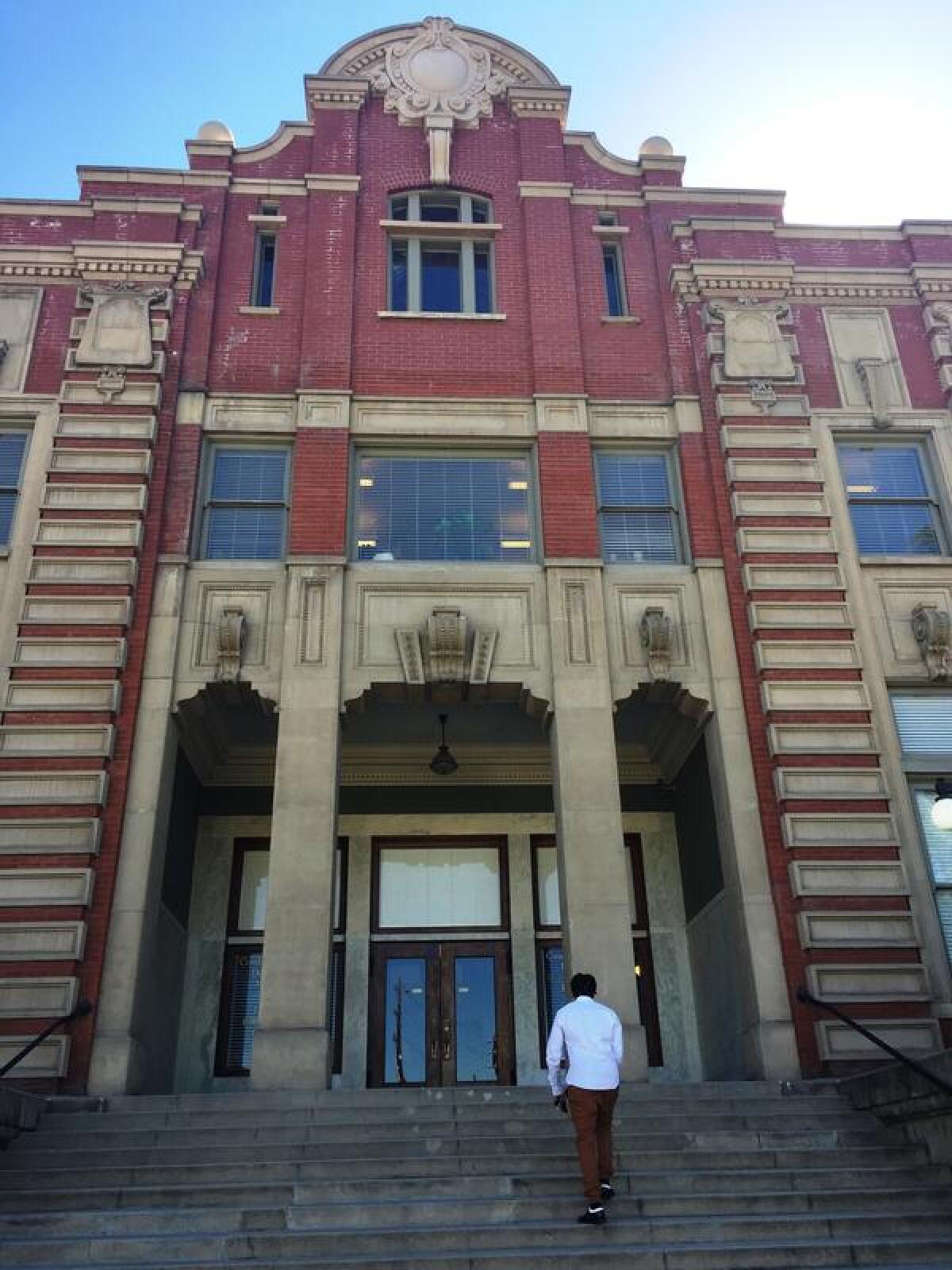
At least one other city has a coroner’s gift shop. Still, this is a rare inventory in arguable taste. (For the weeks leading up to Halloween, body bags are offered.) For the record, the shop’s management says the store exists “to promote how fragile life is and create awareness and responsibility toward one’s actions.”
Speaking of which: On your way into and out of the shop, remember to be quiet and respectful: Many of the building’s visitors are there in connection with the death of a family member.
Where: 1104 N. Mission Road, Los Angeles, one block northwest of the L.A. County-USC Medical Center, 2 miles east of downtown L.A. Open Monday-Friday, 8:30 a.m.- 4 p.m.
How much: Baseball caps, $15. Mugs, $12.95-$15. Lunch coolers, $21. Beach towels, $35. Welcome mats, $30. License plate frames, $20. Key chains, $4-$5. Lately, the shop has added anatomy models too -- “more educational stuff,” said manager Edna Pereyda.
Info: L.A. County medical examiner-coroner

- Share via
View carpets of gold at Antelope Valley’s California Poppy Reserve in Lancaster
Why: Vast meadows of orange poppies were once a common sight in the California springtime, inspiring Spanish conquistadors to call the San Gabriel foothills the “Land of Fire.” The Antelope Valley Poppy Reserve is one of the last remaining places in the state to experience a large-scale—and predictably magnificent—display. Wildflower season at the reserve typically begins in mid-February and lasts until May.
What: The Antelope Valley California Poppy Reserve is a beautiful showcase of the state’s beloved golden flower. In good years, bright orange covers the earth as far as the eye can see. Legends of these sunny blooms are woven into the myths of native tribes, Spanish conquistadors and 49ers.
Not surprisingly, the California poppy became a state flower in 1903. Around this time, residents cherished the springtime tradition of picnics among poppy fields, much like cherry blossom gazing in Japan. Today, the flowers have few open places to create such spectacles. Peak bloom falls around California Poppy Day on April 6, but the timing, intensity, and duration of poppy blooms vary from season to season, depending on the season’s temperatures and rainfall.
The park, which has 8 miles of gentle trails to explore, is open from sunrise to sunset. Be sure to call the wildflower hotline (661-724-1180) before you make the trek—not only are wildflower blooms difficult to predict, strong winds are common in the area, which can cause the blooms to close.
Where: 15101 Lancaster Road in Lancaster, 70 miles north of downtown L.A.
How much: $10 per vehicle.
- Share via
Roll into the soul of skateboarding at Venice Beach
Why: With its oceanfront setting, gritty pedigree and a vibe like no other, this skate park rules—for shredder and spectator alike.
What: The Golden State is home to nearly 450 skateboard parks. Some are vast, like the 68,000-square foot Lake Cunningham Regional Skate Park in San Jose. Others offer monstrous terrain, like the eye-popping, stomach-dropping MegaRamp at Woodward West in Tehachapi. But for those seeking the soul of skateboarding: Venice.
This 18,000-square foot concrete playground, built on a rise of sand in the heart of Venice Beach, attracts skate-travelers from around the world. The park’s compact design—including two bowls, a street area and a classic, 1970s-style snake run—offers something for every level.
But it’s the spirit that sets this spot apart. Though the surrounding neighborhoods gave birth to some of skateboarding’s most influential and aggressive scenes -- including the surf-styled Z-boys of the 1970s and the frenetic street skaters of the 1980s -- the skatepark has a welcoming, communal vibe. Local rippers patiently give way to wide-eyed newcomers.
Spectators are often an afterthought at skate parks. At Venice, they are part of the fun. (But stay behind the guardrail and keep alert for flying boards.) Established pros frequently put on a show, along with pint-sized rippers and their silver-haired counterparts. Wheelchair skaters often roll here as well, inspiring cheers and awe all around.
Where: 1800 Ocean Front Walk, Venice, about 15 miles west of downtown L.A.
How much: Free. Donations to Venice Skatepark Foundation, which maintains the park, are appreciated.
Info: Venice Skate Park
- Share via
Catch a wave at Rincon, a surf spot so good the Beach Boys sang about it

Why: Consider the tyranny of too much clothing. Or study the topography of clouds. Rustic Rincon Beach invites such reflection. It also lures surfers near and far for long runs on legendary, well-formed waves.
What: Just off the 101, near Carpinteria, Rincon is a worthy escape whether you surf or not.
Don’t be put off by the gated community that’s front and center as you arrive. Take a right into Rincon Beach Park, which features well-kept picnic areas lining the bluff and a set of wooden stairs leading to the beach. Or hang a left instead to the spot where the surfers congregate at three subsections of Rincon: Indicator, Rivermouth and the Cove.
Rincon is scenic and secluded, with vistas, a surf hut and plentiful parking. Surfers tend to use the parking lot to the left, and picnickers and swimmers park in the right lot. (Except for bathrooms, there are no services here.)
Beyond anything else, Rincon is a surfer destination, with world-class surf breaks so good they were mentioned in the Beach Boys classic “Surfin’ Safari.” From sunup to sunset, sleek waves deliver long rides on a consistent basis.
Of course, those kinds of conditions attract the masses and plenty of competition for the best waves. Come on a Tuesday when crowds are generally at their thinnest.
Where: Rincon is three miles south of Carpinteria, 88 miles northwest of downtown L.A., on the Ventura/Santa Barbara county line. Take the Bates Road exit off the 101, and head west to the parking lots.
How much: Free
Info: Rincon Beach

- Share via
Honor the 16th president at the Lincoln Memorial Shrine in Redlands
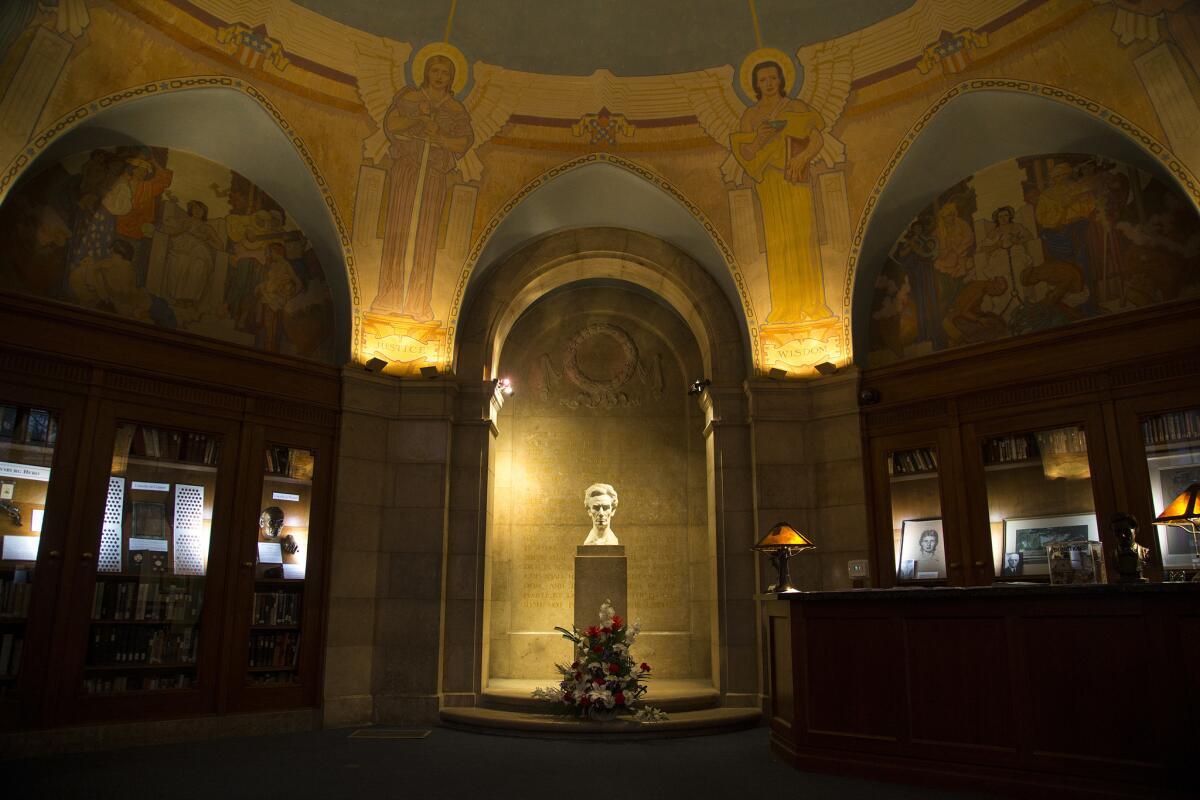
Why: The museum and research center is the only memorial dedicated to Abraham Lincoln west of the Mississippi River.
What: The shrine was presented to Redlands in 1932 by civic leader and philanthropist Robert Watchorn and his wife, Alma, as a tribute to Lincoln and a memorial to their son who had died years earlier from injuries suffered in World War I.
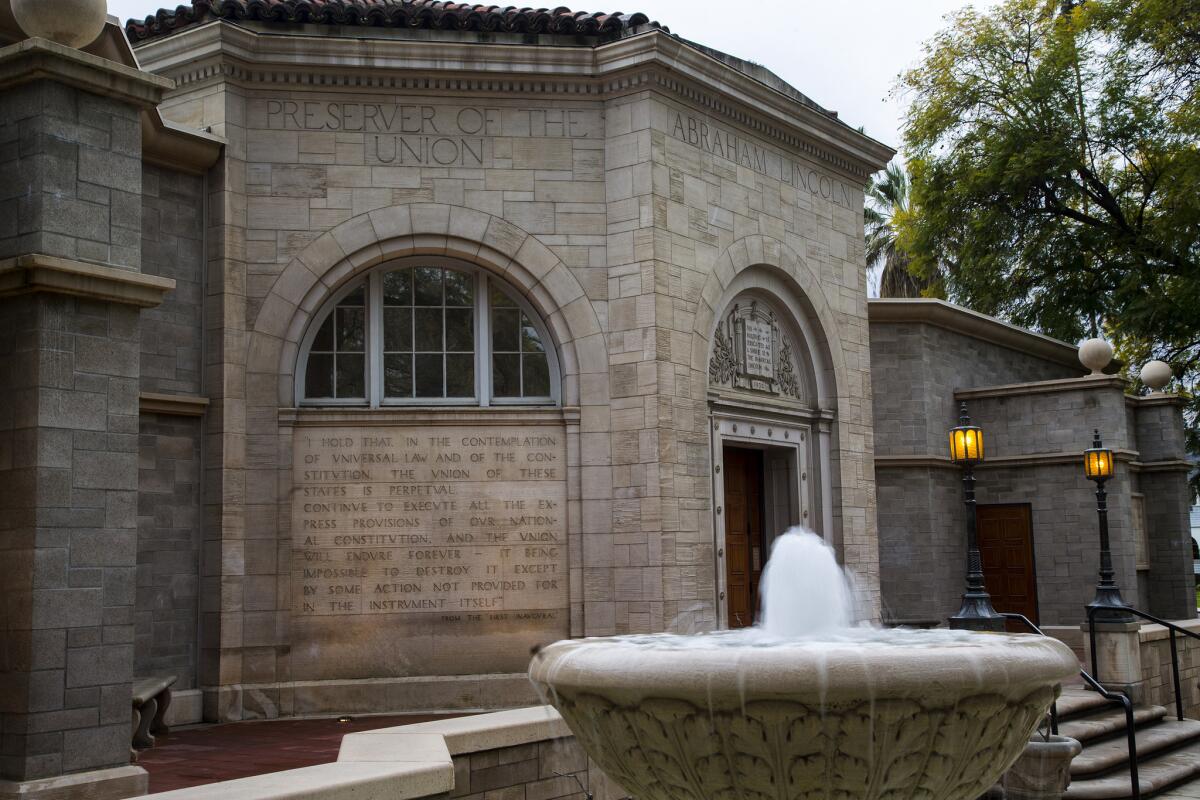
Step into the dimly lighted rotunda, where a handsome white marble bust of Lincoln will command your attention. Then gaze at the dome, which is adorned with allegorical figures — perhaps the “better angels of our nature” — painted on canvas. Under each is a word — Loyalty, Strength, Justice, Wisdom, Patience, Tolerance, Courage and Faith — attributes ascribed to Lincoln.
Two small galleries complete the shrine. One, to the left, contains exhibits on camp life, military prisons and other aspects of the Civil War. The one to the right houses an exhibit on Lincoln’s life. This gallery also displays a 1945 painting by Norman Rockwell, “Thoughts on Peace on Lincoln’s Birthday,” which depicts a World War II veteran seeking guidance from a biography of Lincoln.
The shrine’s core collection of books, manuscripts and artifacts, donated by Watchorn, has grown to include thousands of volumes on Lincoln and the Civil War.
Where: 125 W. Vine St., Redlands, 63 miles east of downtown L.A.
How much: Free. Open 1-5 p.m. Tuesdays-Sundays.
Info: Lincoln Memorial Shrine
- Share via
Eat at Buck’s, the Silicon Valley crossroads of flapjacks and the information age
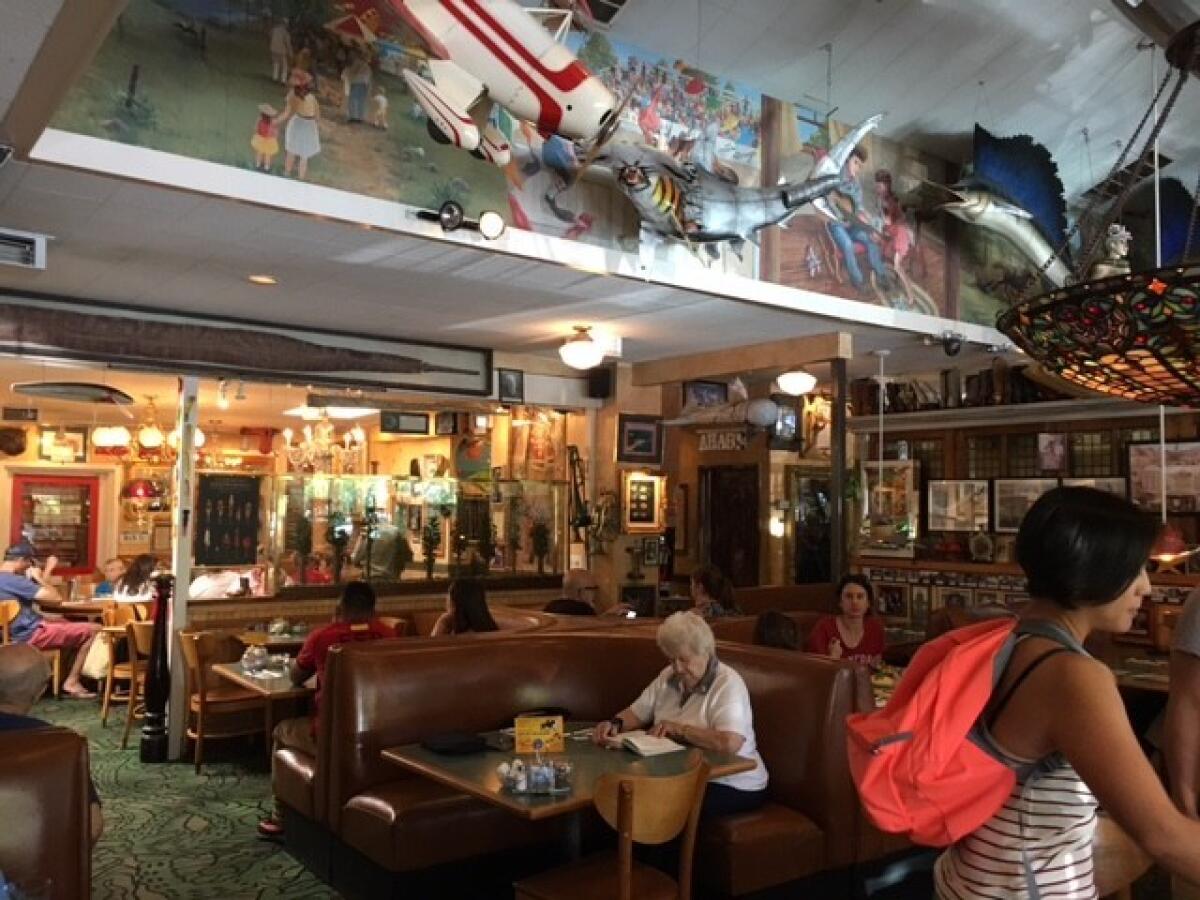
Why: Who’d have guessed that the future would be figured out at a strip mall? Yet here’s Buck’s of Woodside. Elon Musk hangs out here, and PayPal was formed at that little booth in the corner. Think of it as an incubator of the digital future. It also serves a pretty mean omelet.
What: Buck’s benefits from its Silicon Valley location and address in the town of Woodside, a forested and hilly enclave where rich investors are plentiful.
The diner draws clusters of visionaries for breakfast, lunch and dinner, though morning is prime time for digital deal-making.

Location is just part of its success. Its whimsical décor captures America’s pioneering spirit, and reminds us that invention is a form of child’s play.
The walls and ceiling feature vintage Cracker Jack toys (dating to 1905), space suits, 11-foot airships and model cities built of Gummy Bears.
Owner/founder Jamis MacNiven’s displays give the place the feel of a children’s museum, and are a huge part of the reason his restaurant draws such a family crowd on weekends, when youth soccer teams can be seen using Buck’s as a relaxing post-game pit stop.
During the week, the restaurant draws more of a business crowd, often filling the roomy dining area by 8 a.m. Outside, hitching posts are provided to locals who arrive on horseback.
They come for the fresh and generous portions. But mostly, I think they come for ambience, lore and the sense that great things happen here.
Where: 3062 Woodside Road, Woodside, in San Mateo County, about 360 miles northwest of downtown L.A.
How much: Items start at about $8, but expect $15-$20 for breakfast, lunch or dinner.
Info: Buck’s of Woodside
- Share via
Try the best fish taco you’ve ever had -- smoked and flavored with bits of apple -- in downtown Cayucos
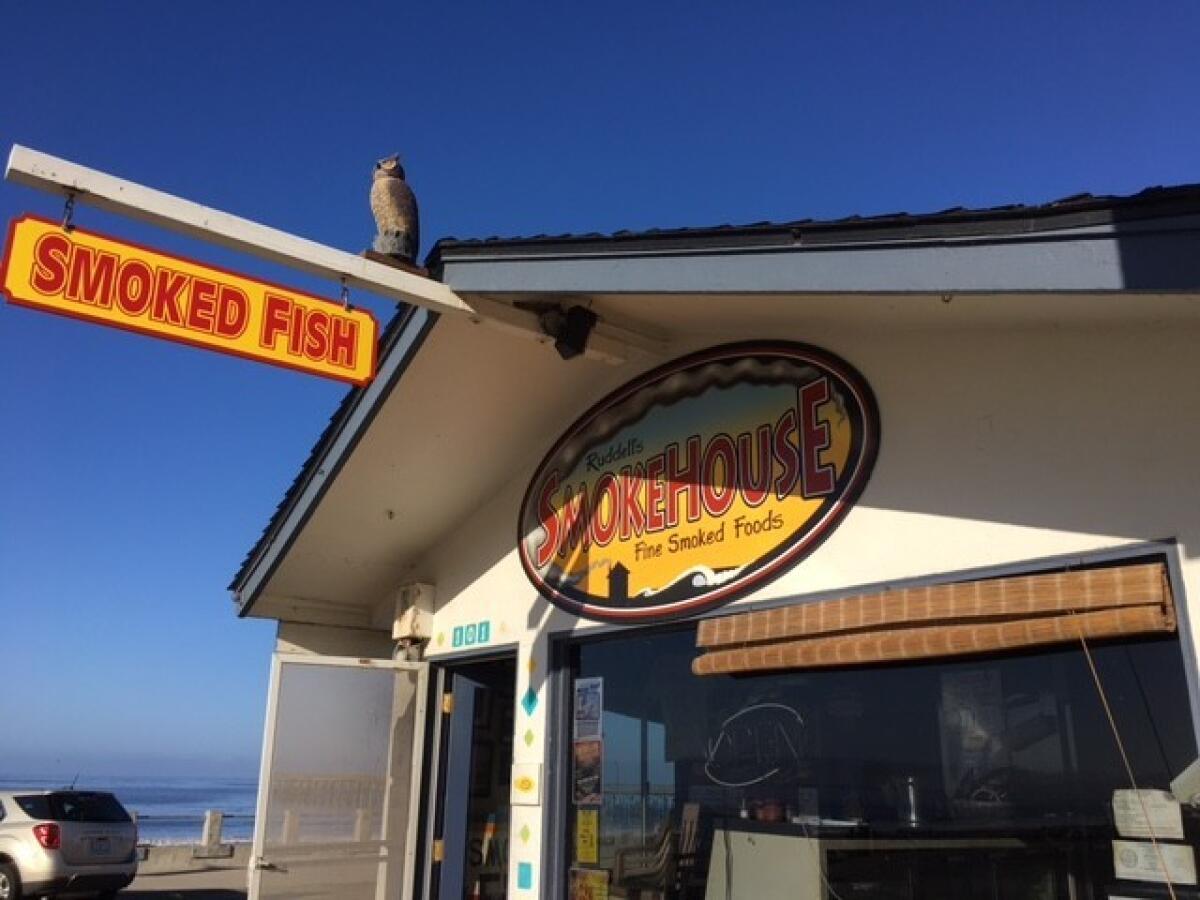
Why: Best fish taco ever. Yes, ever.
What: OK, admittedly, I haven’t tried every fish taco stand in the state, or even Los Angeles, though I’ve tried. That’s a bucket list all its own.
But in Cayucos, just north of Morro Bay, rests a beloved little taco stand that elevates the art by smoking its fish, and serving it chilled with chunks of apple. Sure, you fish taco purists will scoff. Don’t knock it till you try it -- and try it and try it some more.
Ruddell’s Smokehouse keeps it simple. It offers albacore, ahi, salmon, shrimp, pork loin and chicken, all smoked, in tacos or sandwiches, out of a seaside shack just south of the pier. The tacos come on a tortilla so large it weighs about as much as a burrito, with the apple, red-leaf lettuce, celery, carrots and green onion.
There are several salads, but that’s pretty much the menu, though you can also purchase the smoked albacore and salmon by the pound, $18.99 and $20.99 respectively. A whole smoked chicken is a very reasonable $9.
Another memorable find in tiny and appealing Cayucos is the fine breakfast burrito ($7.99) at the Cayucos Deli, adjacent to the mini-mart gas station at the center of town. It too, is a local favorite, with good reason.
Where: Ruddell’s Smokehouse, 101 D St., Cayucos, San Luis Obispo County, about 210 miles northwest of downtown L.A.
How much: Smoked tacos from $5. Albacore is $6.
Info: Ruddell’s Smokehouse, (805) 995-5028
- Share via
Seek safe harbor, stay overnight at Pigeon Point lighthouse and hostel in Pescadero
Why: Though technology has overtaken them, there is something romantic and reassuring about lighthouses. About 20 still dot the California coast. One of the most fetching is Pigeon Point’s, a 115-foot tower that includes a hostel, on a thumb of land halfway between Santa Cruz and Half Moon Bay.
What: Pigeon Point Light Station has been protecting ships since the 1870s. Though mostly for show in an era of satellite-guided navigation, it provides back-up beacons on dishwater-dark days and murky nights along this stretch of skyscraper seas and rocky coastline.
The hostel here makes it a terrific weekend escape that could include whale-watching or exploring and hiking along Highway 1. Accommodations include separate-sex or coed bunkrooms and private rooms for individuals, couples or families.
Or plan a long daytime stop on your road trip to the Bay Area. Gray, blue and humpback whales are all visible from the viewing area on the point (bring binoculars) and 50 species of migratory and native birds use this as their hostel too.
Tide pools are a short walk north from the complex, located on a series of jagged bluffs on this photogenic stretch of coastal highway.
Though the lighthouse itself is closed to tours, its original lens is on display at ground level. The Fresnel lens is like a giant piece of jewelry, with 1,008 brass-framed lenses and prisms that once beamed out the light to ships 24 miles away.
Where: 210 Pigeon Point Road, off Highway 1, in Pescadero, Calif., in San Mateo County, about 390 miles northwest of downtown L.A.
How much: The grounds are free and open to the public from 8 a.m. to sunset. The hostel, run by Hostelling International, charges from $28 for bunks and $82 for double rooms, not including membership fees ($28 annually and $3 daily). Reservations: (650) 879-0633
- Share via
Hitch your horse at Jocko’s in Nipomo for a juicy slab of beef seared over red oak

Why: You want history? There used to be a caged monkey behind the bar. But forget history. Concentrate on that insanely large slab of beef they just snow-shoveled off the grill and rushed to your table at the famed Jocko’s, in no-frills Nipomo, Calif.
What: Jocko’s is a Central Coast institution with cinderblock walls and local ranch brands burned into the paneling. Yep, this is farm country all right, a little dusty and proudly working class.
“Come in an monkey ’round,” the sign outside says, a nod to its former mascot.
The restaurant is named for Ralph “Jocko” Knotts, one of the original owner’s sons.
“Jocko was the second licensed driver in Nipomo, he was also ‘Justice of the Peace,’” a history of the restaurant states.
Now you understand Nipomo.
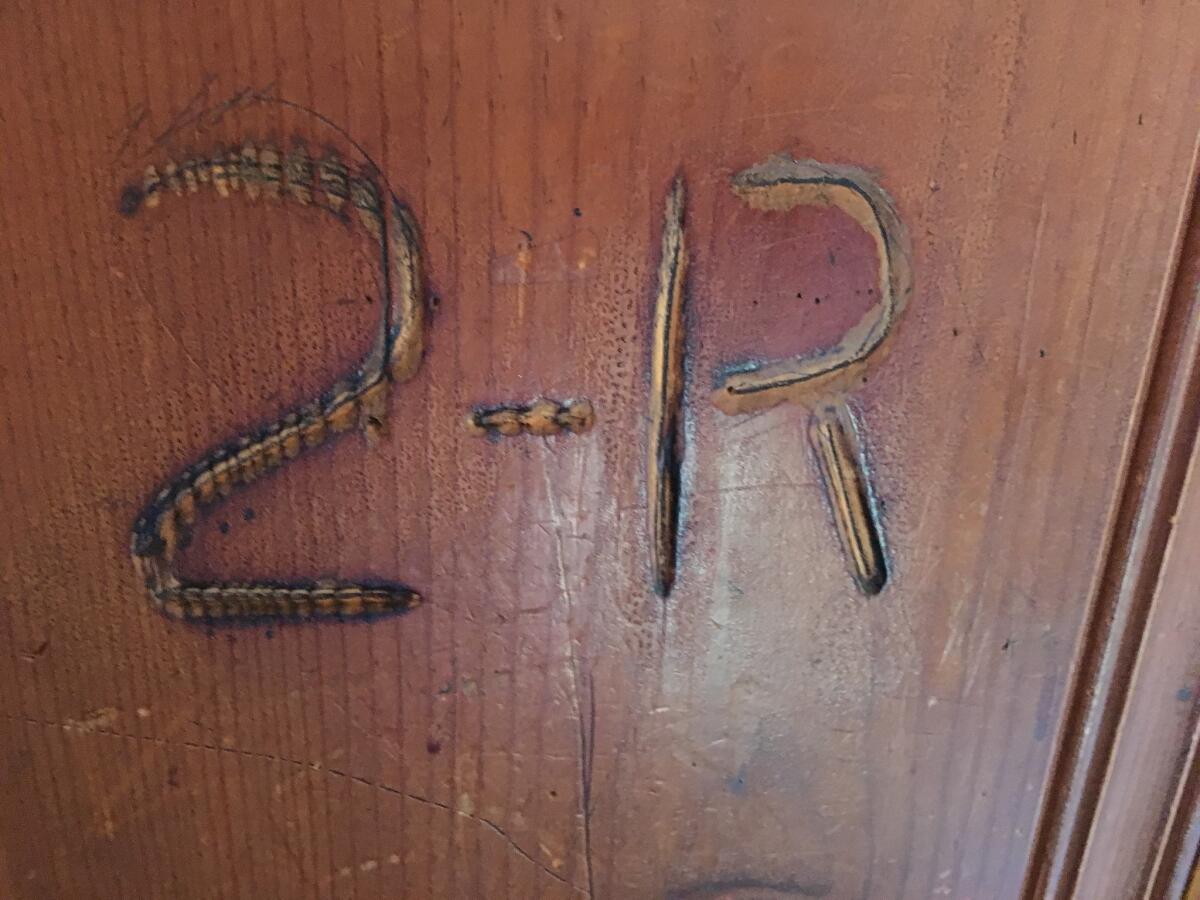
Over the years, the restaurant has changed locations and names, but for decades has drawn substantial crowds to its Santa Maria-style steakhouse, particularly on weekends.
Still colorful, and with customers lining up early – expect a short wait, even with a reservation – Jocko’s is renowned for its top-line beef charred over red oak.
Lunches and dinners come with salad and sides, on plates dominated by your steak, with just the right amount of fire applied to the outside, as if branded. For an additional $10, you can have your steak cut extra thick.
Request a table by the window if you can, overlooking the fire pits, and order the Spencer, a specialty rib-eye on the bone ($32). On Wednesday, don’t discount the roast turkey special, a local favorite.
Whatever you order, be prepared for a first-rate meal served at country prices, by a waitress who actually fusses over you a bit.
Where: 125 N. Thompson Ave., Nipomo, in San Luis Obispo County, 177 miles northwest of downtown L.A. on the 101.
How much: Complete dinners range from $20 to $33
Info: Jocko’s
- Share via
Watch some strings being pulled at L.A.’s Bob Baker Marionette Theater
Why: The Bob Baker Marionette Theater is an icon of family entertainment in Los Angeles, beloved for its charming retro performances. As the longest-running puppet theater of its kind in the U.S., the venue has stood the test of time.
What: Founded by Bob Baker and Alton Wood in 1963, the theater is housed in an unassuming building on the edge of downtown L.A. Not much has changed in the last 50 years. Coffee-can stage lights illuminate handmade puppets that dance and sing to a vintage soundtrack on a carpeted stage. Catch a seasonal production — “Halloween Spooktacular” is playing through Nov. 5 — to witness the company’s unique brand of whimsy, complete with vampire lovebirds, dancing skeletons and a glow-in-the-dark alien takeover. After the show, join the cast in the adjoining salon for complimentary ice cream.
Baker served as a puppeteer and animator for hundreds of Hollywood movies and TV productions. He also made puppets for clients around the globe and was a rare mentor in a fading profession.
In 2009, the theater was designated a Los Angeles Historic-Cultural Landmark. Though the troupe and building faced uncertainty after Baker’s death in 2014 at 90, the puppeteers have reorganized as a nonprofit venture, and a capital campaign is underway to renovate the theater. After remodeling begins, probably in late December, the company plans to perform throughout 2018 at other venues around Los Angeles.
Where: 1345 W. 1st St. in downtown Los Angeles.
How much: Show tickets are $15. Children under 2 are free.
Info: Bob Baker Marionette Theater
- Share via
Spoon a piece of pie, and other country classics, at the landmark Duarte’s Tavern in Pescadero
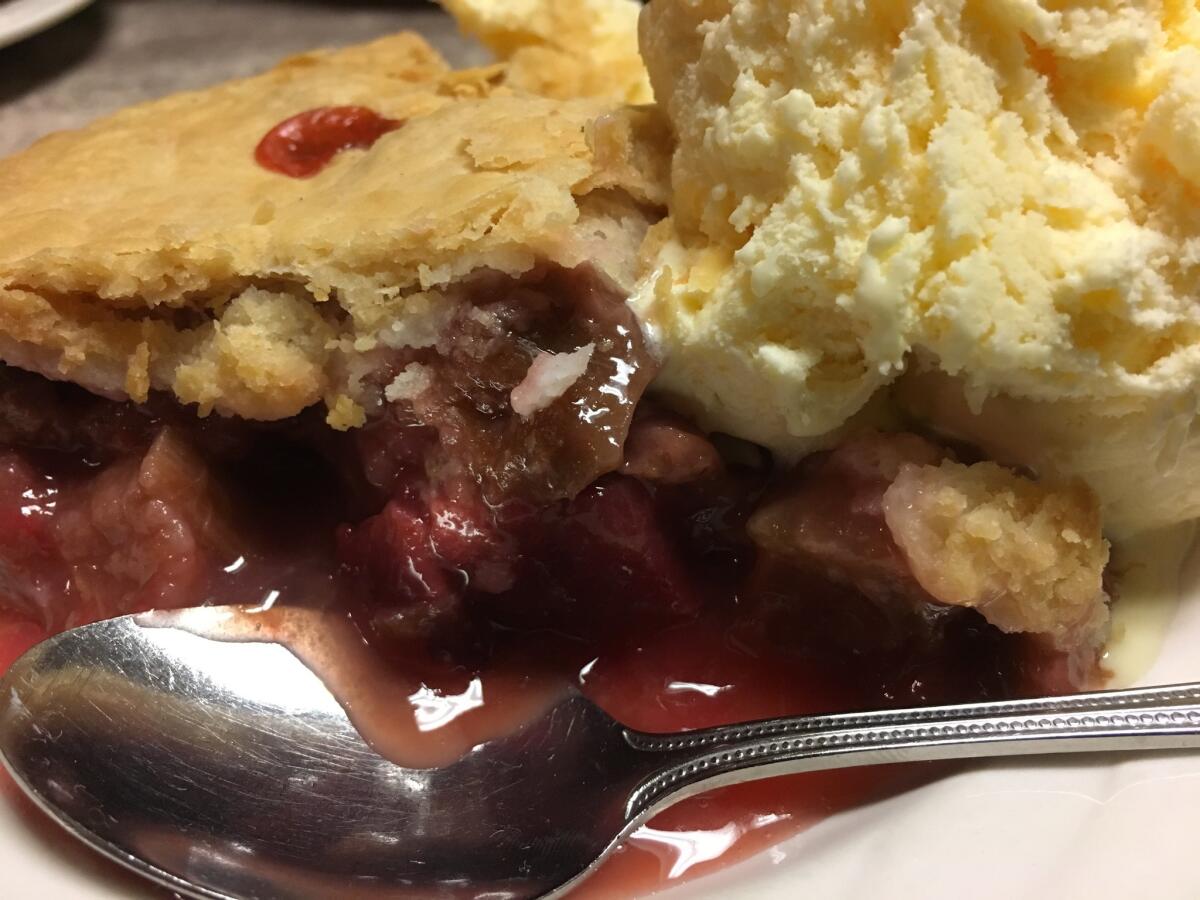
Why: Admit it. Sometimes you don’t want to be around other people. All you crave is a country road and an epic piece of pie. For all that, come to Duarte’s Tavern in tiny Pescadero, near Half Moon Bay, for a simple yet memorable dinner and a frosty drink. Make this rustic jewel your hamlet, your hideout, your Walden Pond.
What: Duarte’s (pronounced Doo-arts) has been serving up generous plates of no-nonsense, straight-from-the-garden food for almost 125 years. Since 1894, when the founder tapped a keg of cheap whisky to today, when it serves up to 10,000 customers a month, this farm country landmark has delivered memorable meals at affordable prices.
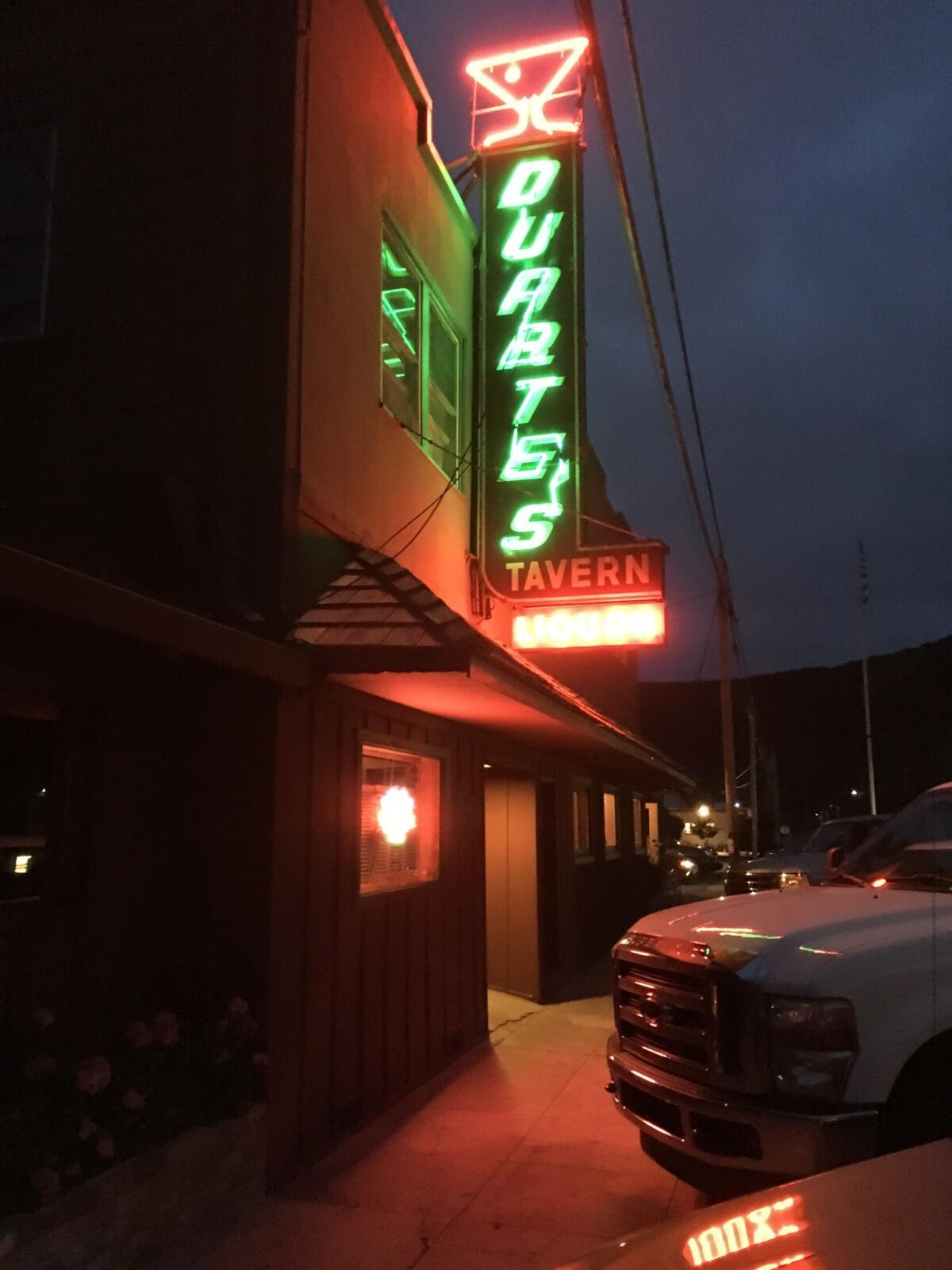
The glow-stick exterior dominates the little town of Pescadero, in rolling, sparsely populated farm country two miles from the coast. Inside, you’ll realize that the Duarte family was ahead of their time, with a reliance on locally sourced vegetables, beef and fish.
There’s no ego to the dishes: Pork chops and fresh applesauce is a headliner, as is the snapper and chips. The soups arrive robust and steamy, hours from the restaurant’s own garden out back.
The tavern/restaurant is still run by the fourth generation of the Portuguese family that founded it. In 2003, it won a James Beard Award for its faithfulness to classic country cooking and a body of work that spans three centuries.
Oh, and there’s pie. Good Lord, is there pie. The olallieberry is the best known, but I’m a sucker for the difficult-to-find rhubarb-strawberry. Best piece of pie I’ve ever had.
In fact, I’d recommend you and your date order the cream of artichoke soup, split a steak or crab melt and then treat yourself to one of these decadent desserts, ala mode, and spilling off the plate.
Where: 202 Stage Road, Pescadero, Calif., in San Mateo County, 375 miles from Los Angeles.
How much: Burgers and sandwiches start at $8; entrees are around $20.
Info: Duarte’s Tavern
- Share via
Plot your Palm Springs high jinks under the coolest roof in California
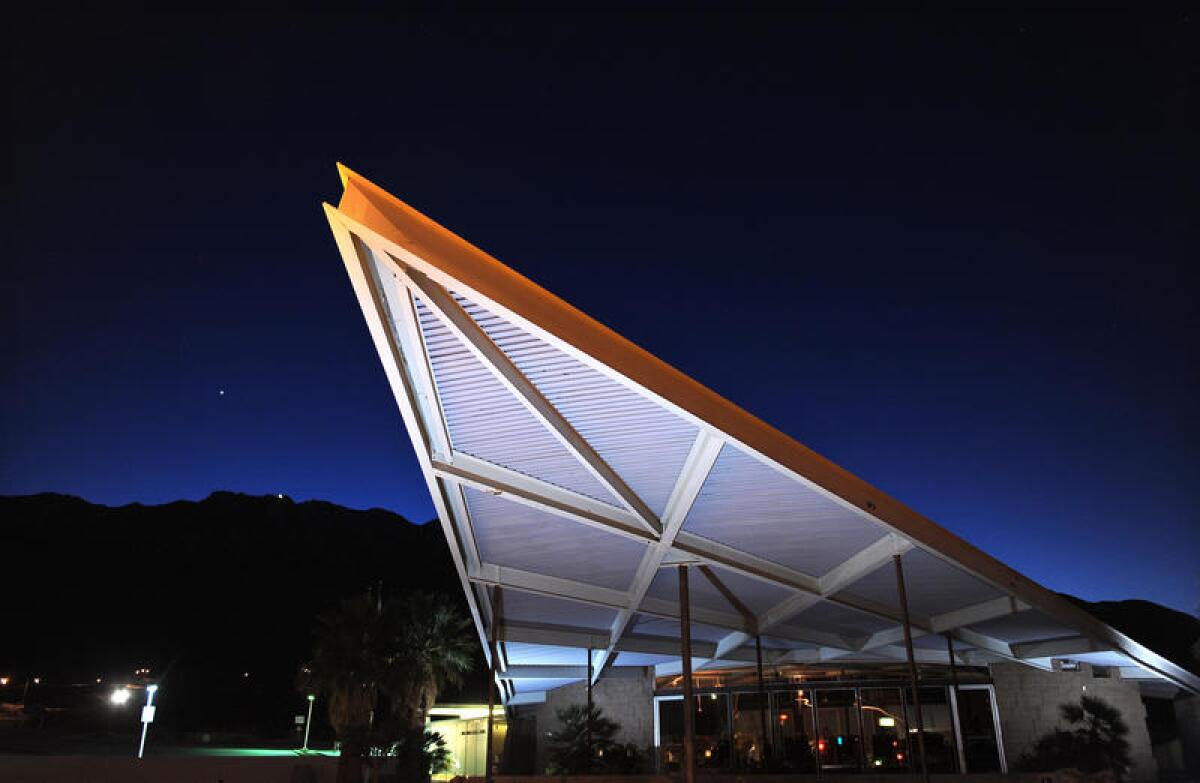
Why: It’s sleek. It’s vintage. And if you’re arriving via the San Gorgonio Pass like most Angelenos, it’s the beginning of Palm Springs.
What: When architects Albert Frey and Robson Chambers designed this building in 1965, the streamlined mid-century look was so big that even gas stations were doing it. Indeed, the Tramway Gas Station sat under this great tilting zooming top for decades, until (like a lot of Palm Springs) the building fell into idleness and blight in the 1970s and 1980s.
Then a few mavens of Desert Modernism effected a rescue — a story repeated on properties all over the Coachella Valley over the last 25 years. Now this hyperbolic paraboloid roof (apparently that’s the technical term) looks sharp enough to poke a hole in the Jolly Green Giant, and this corner is site of the Palm Springs Visitors Center. It’s a fine spot to stop, collect brochures, learn more about Modernism Week, cadge restaurant recommendations and plot details of your weekend.
Where: 2901 N. Palm Canyon Drive (a.k.a. Highway 111), Palm Springs, 109 miles east of downtown L.A.
How much: Free.
Info: Palm Springs Visitors Center
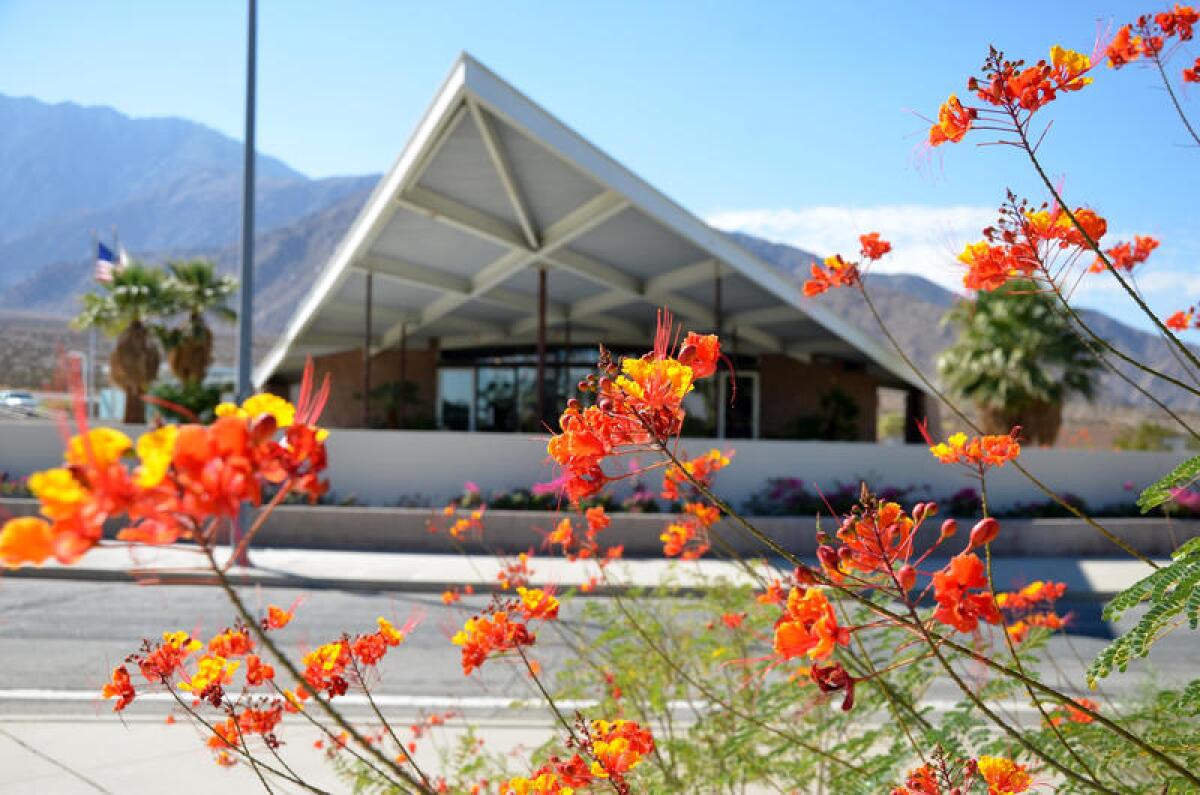
- Share via
Step out to the Battery Point Lighthouse in northernmost California -- if the tide is right
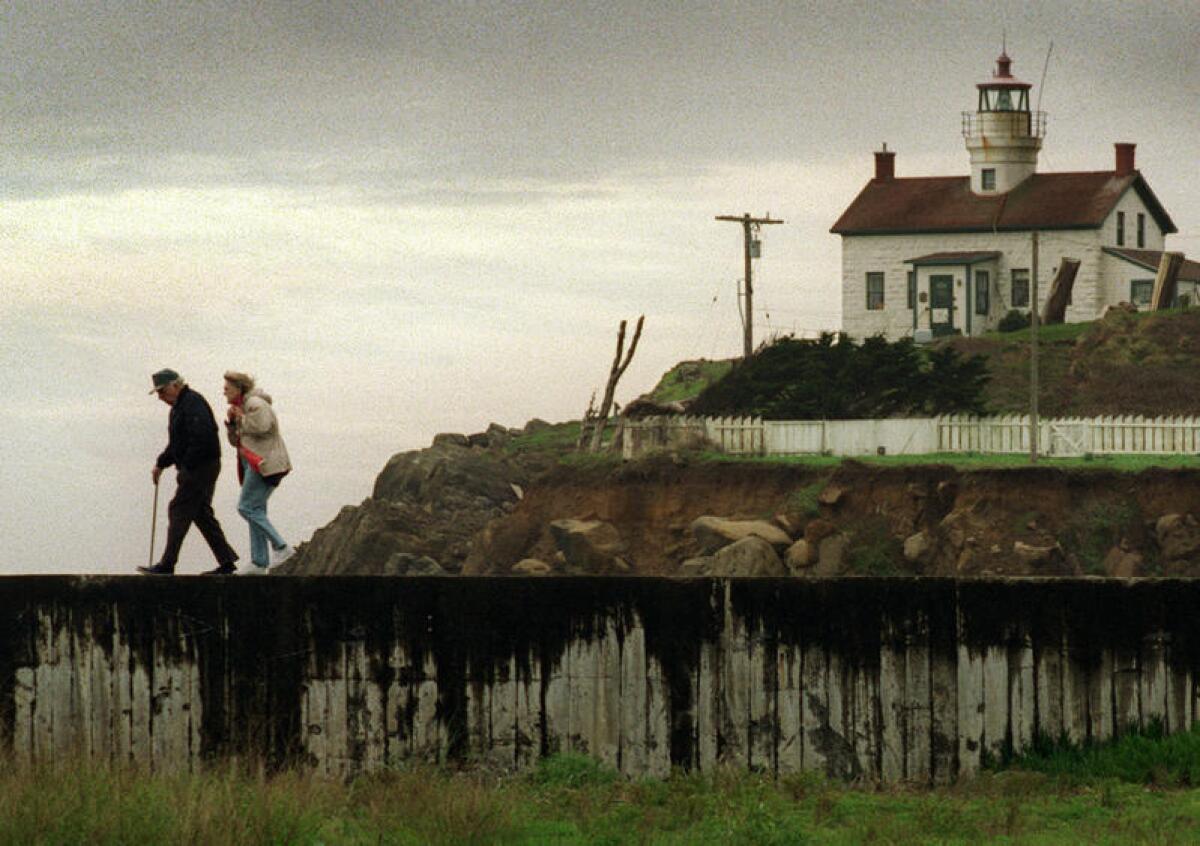
Why: No matter which way you travel, California begins and ends with a Cape Cod-style lighthouse from the 1850s. One is the Old Point Loma Lighthouse in San Diego. The other, about 900 miles to the north, is the Battery Point Lighthouse in Crescent City. And because the building stands 200 feet offshore on a tiny island, you can only get there at low tide.
What: The Battery Point Lighthouse (now also a museum) turned its light on in 1856, two years after California’s first lighthouse opened at Alcatraz. It was automated in 1953 and survived the 1964 tsunami that devastated Crescent City. It’s now managed by the Del Norte County Historical Society.
When the tide is low (consult the web or call [707] 464-3089 to check), you can walk to the lighthouse across the sand, rocks and a cement driveway. The building is open 10 a.m.-4 p.m. daily from April through September, weekends only the rest of the year. Inside, don’t miss the banjo-shaped clock. “It’s still working and it’s original,” said volunteer lighthouse keeper Harvey Lee. “We have to wind it once a week.”
(By the way, there is another lonely old lighthouse built on a rock six miles offshore, a few miles north of Crescent City -- the St. George Reef Light. For a while there were helicopter tours, but state officials banned those trips.)
Where: About 200 feet south of the corner of Battery Street and Lighthouse Way, Crescent City, 777 miles northwest of downtown Los Angeles, 373 miles north of San Francisco, 21 miles south of the Oregon border.
How much: Recommended donation $5.
Info: Battery Point Lighthouse

- Share via
Inspect art, ‘Irises’ and the skyline from the Getty Center’s commanding Brentwood hilltop
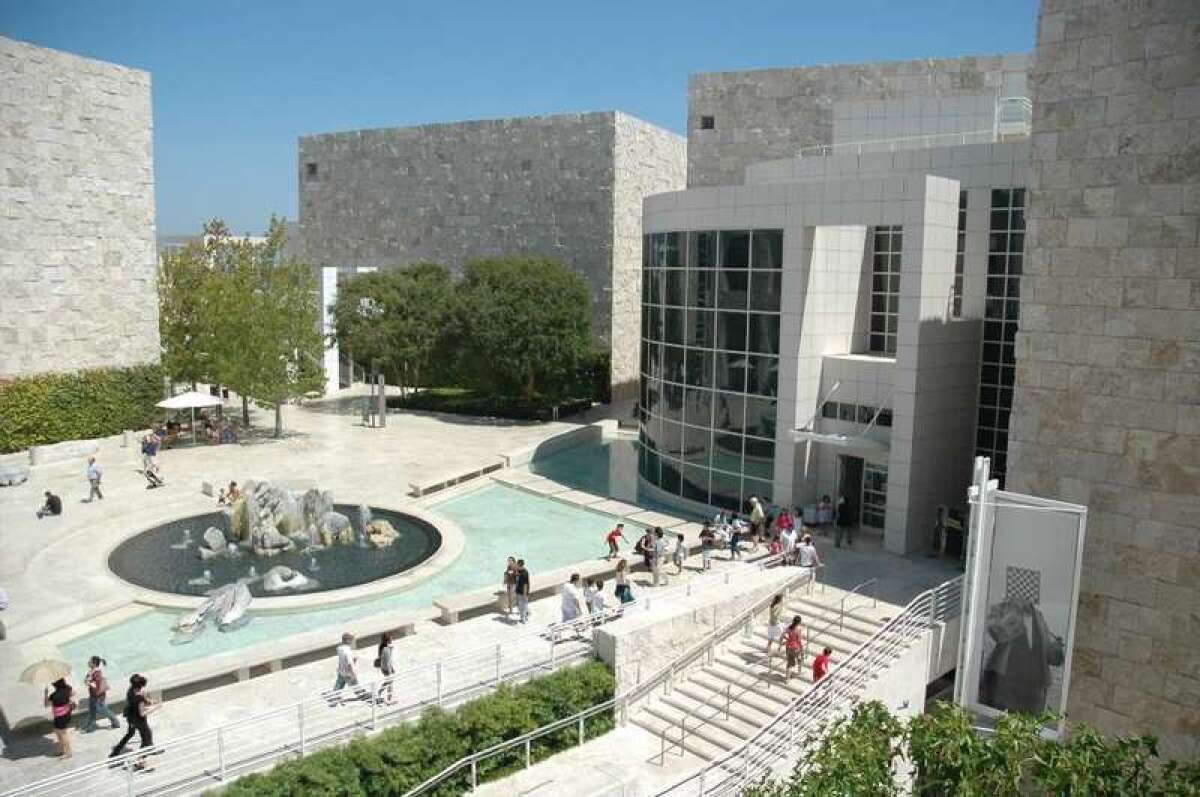
Why: This is the world’s wealthiest art institution, with a 110-acre campus overlooking the Pacific and a $6.3-billion endowment. Because it’s young as museums go, it doesn’t have the world’s greatest collection yet. But every year the curators spend tens of millions more, adding European paintings, sculptures, photographs and other marvels to this hilltop haven of shiny white buildings.
What: The Getty Center, backed by billions from late oil man J. Paul Getty, was born as a museum in 1954, but didn’t move to this location until 1997. Once you’ve parked or been dropped off, take the monorail up the hill and head for the West Pavilion, which houses photography below and Impressionists above.
Many visitors head straight for the center’s Impressionist standout, Van Gogh’s “Irises,” and you should get there eventually. But don’t miss newer works — especially the vast Pacific Standard Time: LA/LA project (which explores Latin American and Latino art with local connections, through January 2018) and the David Hockney show (up through Nov. 26, 2017). The photography holdings are remarkable too.
Also, be sure to check out the cactus garden that seems to float in the sky with the coast of Santa Monica in the distance. Kids will love rolling around on the sloping lawns. Eventually, you’ll want to eat. Unpack a picnic lunch on the lawn near the Central Garden, buy a bite at one of the center’s two cafes or splurge on lunch, dinner or Sunday brunch upstairs at The Restaurant.
(If antiquities are what speeds your pulse, set aside another day to head north to the other Getty location, the Getty Villa in Pacific Palisades, which specializes in Greek, Roman and Etruscan art from 6500 BC to A.D. 400.)
Where: Getty Center, 1200 Getty Center Dr., Los Angeles, 16 miles west of downtown L.A.
How much: Admission is free. Parking is $15, or $10 after 3 p.m. Museum closed Mondays.
Info: Getty Center
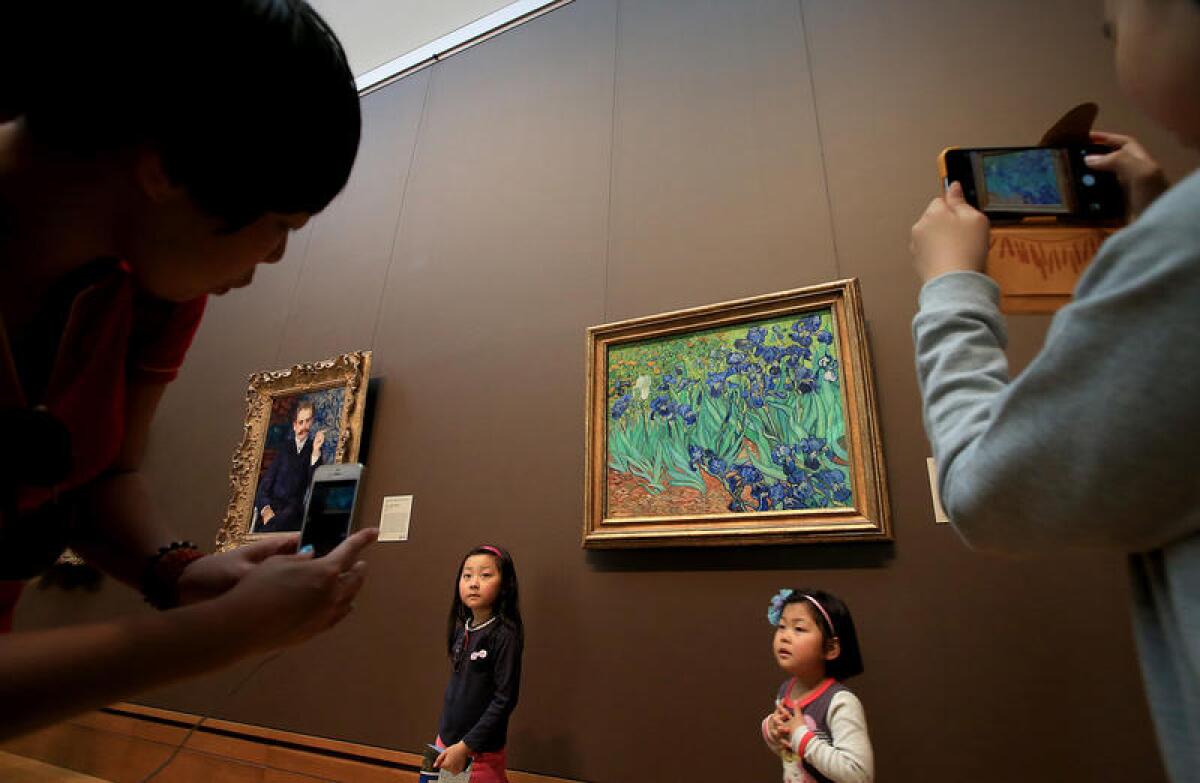
- Share via
Tiptoe through downtown L.A.’s Bradbury Building like Harrison Ford in the first ‘Blade Runner’
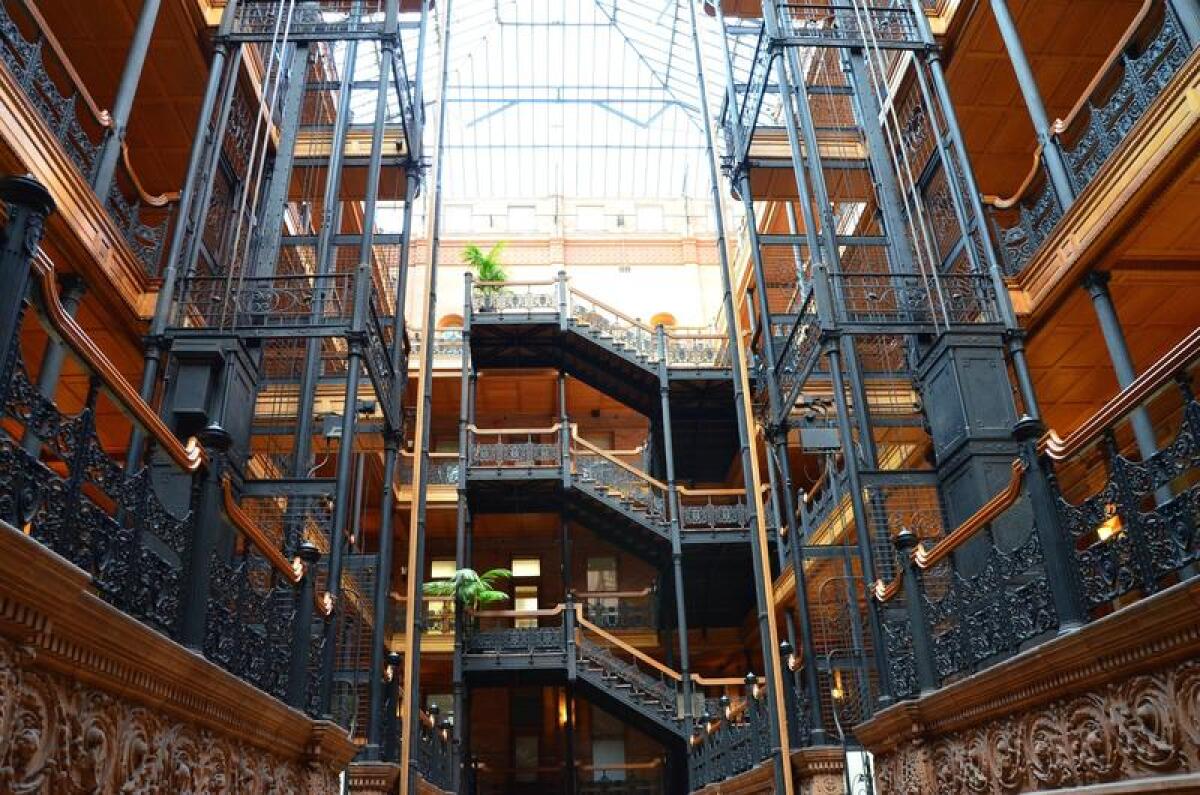
Why: Some buildings have gravitas. This one has that, plus magic. Maybe it’s the filigree of the ironwork, the skylight over the five-story atrium, the terra cotta walls. Maybe it’s the supposed occult influences on the designer.
Or maybe it’s that movie. For several fraught moments in the first “Blade Runner” film (1982), Harrison Ford ducks and scuttles through this building as spotlights rake the atrium. In an enduring cinematic vision of L.A. as dystopia, this was some of the spookiest stuff.
What: The Bradbury Building, completed in 1893 and dramatically restored about 100 years later, seems to be the oldest remaining commercial building in downtown L.A. The Bradbury rents out office space (several private investigators are tenants), and film shoots and other events have been frequent through the years. Last December, the Da Camera Society brought in the Boston Camerata for two chamber music performances.
Some people credit architect Sumner Hunt for the building’s glories; others say it’s because construction supervisor George H. Wyman was inspired by an 1888 science fiction novel. Either way, if you’re walking on Broadway near Grand Central Market, you’d be a fool not to step into the Bradbury lobby. The guard won’t let you walk more than a few steps up the stairs or ride the cage elevators, but it’s still a thrill.
On your way out, don’t miss the towering Anthony Quinn mural across 3rd Street. See the floor tiles beneath Quinn’s feet? They match those inside the Bradbury Building.
Where: 304 S. Broadway, downtown L.A.
How much: Free to stroll through. For a cup of fancy joe in the building’s Blue Bottle Coffee shop, it’s $3.75 and up.
Info: Bradbury Building
- Share via
Succumb to the magic of Descanso Gardens’ Enchanted: Forest of Light in La Cañada-Flintridge
Why: If the light has faded from your holidays, Descanso Gardens’ Enchanted: Forest of Light, an emerging annual tradition, may flip the switch back on.
What: In the evenings from Nov. 19-Jan. 7, you can take a mile-long stroll through the gardens in La Cañada-Flintridge, where different kinds of lighting bring a new dimension to the 160-acre grounds.
The event debuted in 2016. It’s easy to call Enchanted a holiday light display, but that’s not quite right. There are no symbols of the season, no elves, no jolly St. Nicks. It’s more the suggestion of the ethereal that charms.
As you walk the pathways (wear comfortable shoes, please), you may begin to wonder: Do the giant redwoods shimmer blue and green because they’re illuminated that way or because they’ve been drenched with a kind of liquid fairy dust? Do the maples in the Japanese garden glow red because their natural charm has been enhanced by electrical means or because they’ve perpetually donned their autumnal best for the occasion?
You can fortify yourself before with an on-site dinner of American fare at Maple restaurant. (You’ll need Enchanted tickets to eat at Maple during the run of the show.) Then spend at least an hour wandering, letting yourself succumb to the illusion--and remembering the pleasure of those days when you believed that “magic” was always a plausible answer.
Where: 1418 Descanso Drive, La Cañada Flintridge, 13 miles northeast of downtown Los Angeles
How much: Tickets, which are timed and go on sale to the public Oct. 16 at 10 a.m., cost $28-$30. (Descanso members, for whom tickets were available beginning Oct. 2, pay $23-25.) Children younger than 2 are admitted free but must have a ticket.
Info: Enchanted: Forest of Light

- Share via
Pretend you live on a Hollywood hilltop in Frank Lloyd Wright’s Hollyhock House

Why: Frank Lloyd Wright, the cantankerous genius architect best known for his buildings in Illinois, Pennsylvania, Arizona, Tokyo and beyond, did some interesting things in California, too. This hilltop home -- officially, the Aline Barnsdall Hollyhock House -- is one of them. And unlike many Wright homes, it’s open for tours.
What: The house, Wright’s first Los Angeles commission, was completed in 1921 for an artsy oil heiress named Aline Barnsdall. Wright called the style “California Romanza,” but it looks a lot like a Mayan mansion with a prime view of the Hollywood Hills and Griffith Park. Inspect that view closely, and you’ll notice, 1.4 miles due north, the patterned concrete blocks of another Wright project, the Ennis House, now privately owned.
In any event, Wright’s client didn’t care for it much. In 1927 she donated 11 acres, including the home and some neighboring structures, to the City of Los Angeles. Today the compound serves as Barnsdall Art Park, busy with classes for youths and adults (and Friday-night wine-tasting in summer months). Hollyhock House, reopened in 2015 after years of fundraising and restoration, is neighbored by an art gallery, studio and theater space, the slopes planted with olive trees. The home’s former garage now serves a visitor center and gift shop.
The home is open for self-guided tours on Thursdays through Sundays, 11 a.m. to 4 p.m. (Last ticket sold at 3:30 p.m.) It is wheelchair-accessible, but there’s no air-conditioning, so when interior temperatures reach 90 degrees, they close.
Where: Barnsdall Art Park, 4800 Hollywood Blvd., five miles northwest of downtown Los Angeles.
How much: Tickets are $7 for adults, $3 for seniors and students, free for children under 12 with a paying adult at the visitor center (Visa and Mastercard only). No advance reservations and no photography inside. For $70, you can get a private, docent-led tour on certain mornings.
Info: Barnsdall Art Park
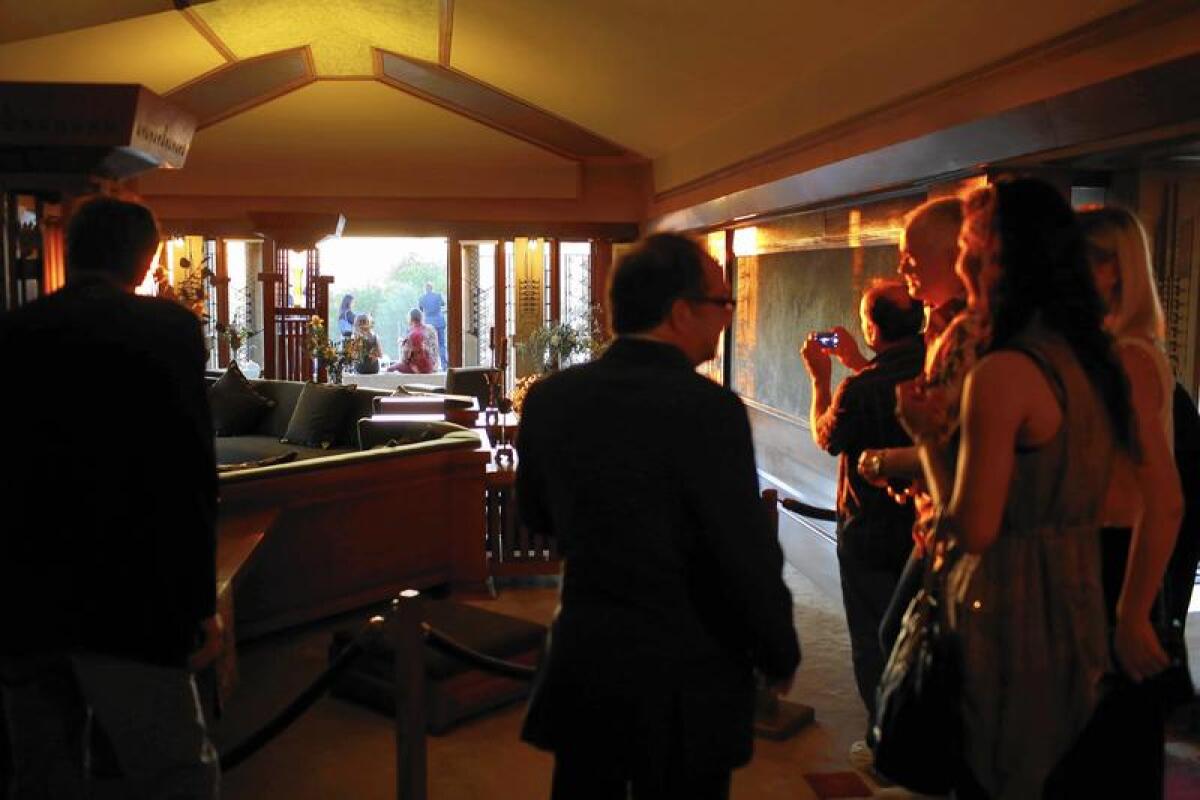
- Share via
Raise your gaze inside the Wayfarers’ Chapel, a glass-walled wonder on the Palos Verdes Peninsula
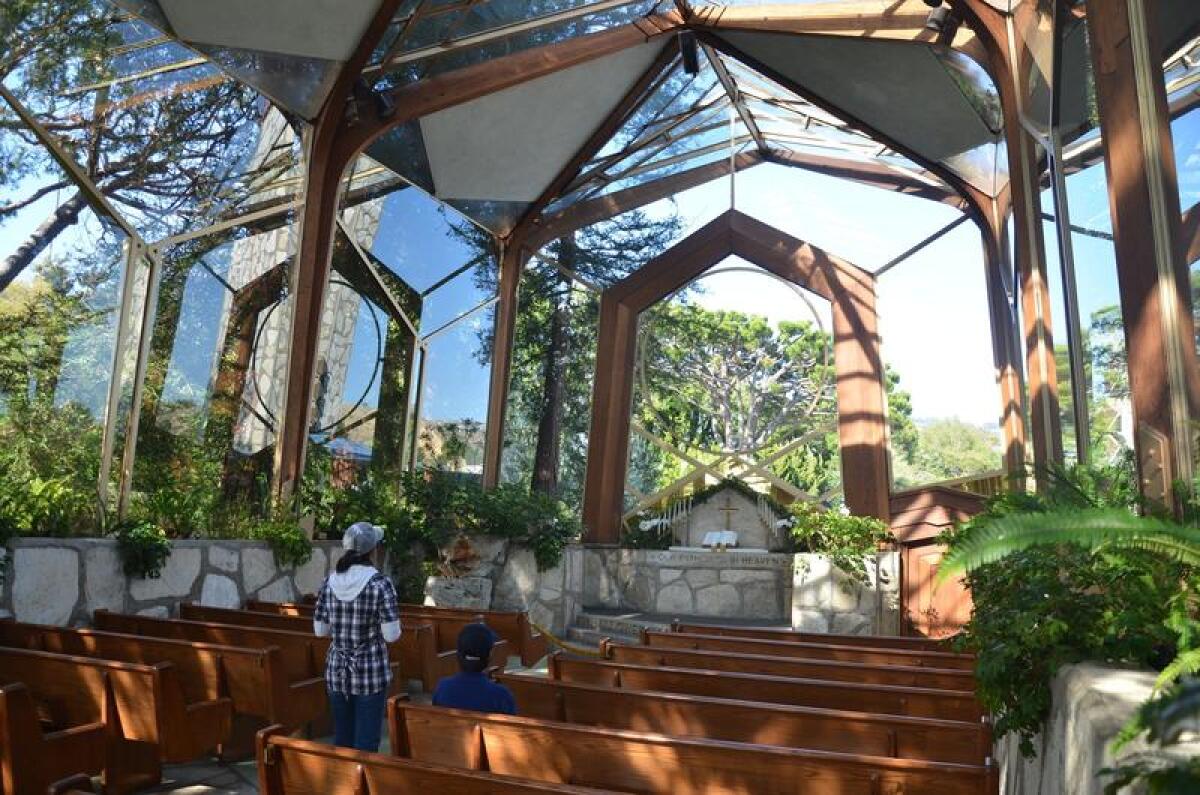
Why: This building merges church and nature in a rare way.
What: Designed by Lloyd Wright for the Swedenborgian Church and opened in 1951, this chapel’s glass walls and ceiling effect make the surrounding redwoods a part of its architecture. The result is a “tree chapel” that blurs distinctions between inside and outside, spirituality and nature. Many architects call this style Modern Organic. Whatever language you prefer, it’s nice to see the sky from inside the sanctuary. The locally quarried stone adds an earthy touch. And the road you ride in on across the lush slopes of the Palos Verdes Peninsula — that isn’t bad either.
Also, once you’re inside, there’s more than one way to look up. In 2017, yoga (gentle and Kundalini) was offered on Tuesday and Wednesday nights from May through September; check the chapel website to see if that continues in 2018.
The chapel is open daily from 9 a.m. to 5 p.m.; the visitor center, 10 a.m. to 5 p.m. Because the site is heavily booked with weddings, baptisms and memorials at 10 a.m., 12 p.m., 2 p.m. and so on (especially on weekends), the best time to get a look inside is to show up at 9 a.m., 11 a.m., 1 p.m. or 3 p.m. — the odd hours. You’ll have up to 30 minutes. Drones are banned.
Where: 5575 Palos Verdes Drive South, Rancho Palos Verdes, 31 miles south of downtown L.A.
How much: No set fee to visit. Donations encouraged. Want to book a Saturday afternoon wedding in 2018? That’ll be $3,900, if there’s a day still open.
Info: Wayfarers Chapel
- Share via
Pace the decks of the Queen Mary, Long Beach’s most storied retiree
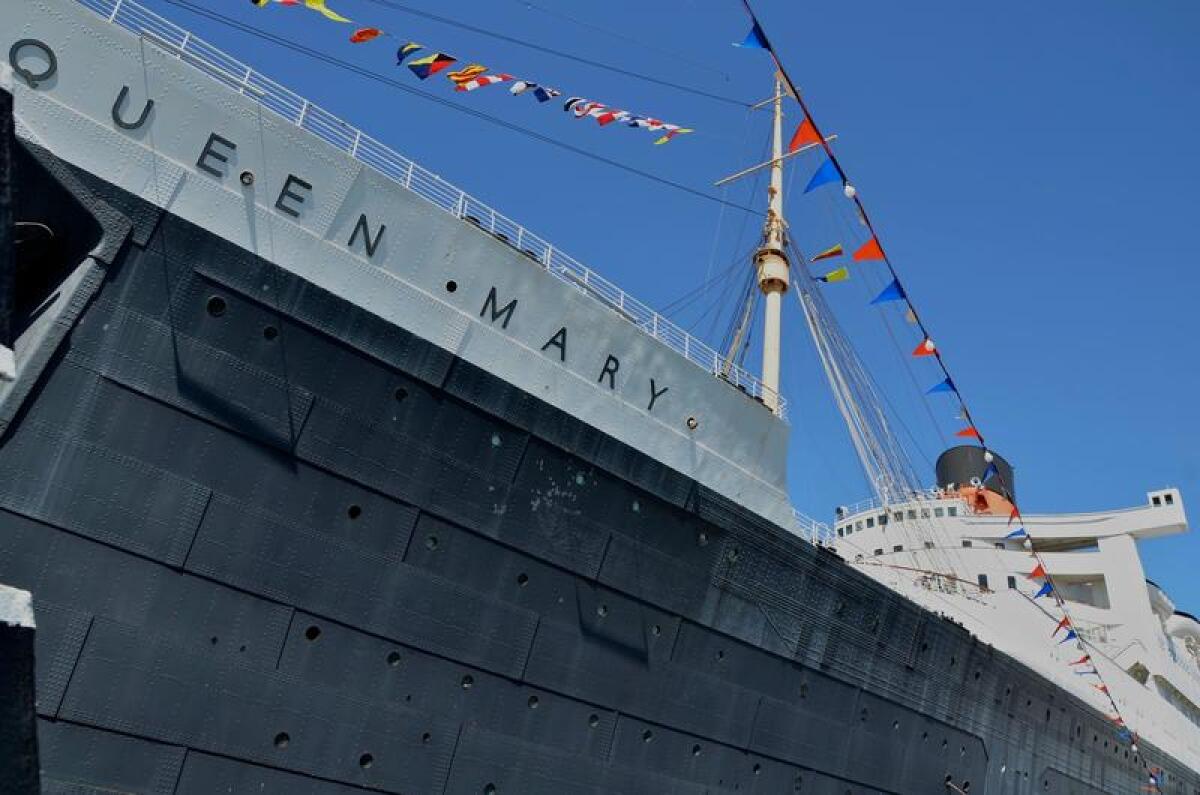
Why: Since her launch in England by the Cunard Line in 1936, the Queen Mary has seen war, peace, Europe, New York, Clark Gable, Winston Churchill and, more recently, Ships & Giggles Comedy Night in Long Beach. In early December, it will be 50 years since the grand old lady arrived to begin her retirement years in Long Beach Harbor as a floating hotel, restaurant and special-events venue. Since she needs as much as $289 million in work, there’s no telling how much longer this retirement will last.
What: The ship is more than 1,000 feet long, with 12 decks and three smokestacks. Converted into a troop ship and painted gray during World War II, the Queen Mary could carry up to 16,683 soldiers and sailors. She resumed civilian service after the war, but before long the rise of air travel largely destroyed demand for transatlantic passenger ships. In late 1967, the ship made her 1,001st (and final) transatlantic voyage and settled into her current location. The City of Long Beach’s plan was to boost tourism.
The years since have been bumpy. The Queen Mary has had success with seasonal attractions like the Dark Harbor program that runs through Nov. 1. But beneath those spooky trappings, the ship is genuinely suffering from extensive structural corrosion. Without dramatic repairs, experts have warned, an internal collapse could come within 10 years.
But there’s no place quite like it on the West Coast, and the ship’s operators have been talking up some ambitious plans. If you’re not ready to spend the night or brave Dark Harbor, the hour-long Glory Days Historical Tour is offered eight times per day, every day.
Where: 1126 Queens Highway, Long Beach, 25 miles south of downtown L.A.
How much: A one-day Passport (which includes self-guided exploration, access to the model ship gallery, a “4-D” theater presentation and the Glory Days Historical Tour or an alternative called Haunted Encounters) costs $27 and up (plus service fees) per adult, $17.50 and up (plus service fees) per child aged 4-11. Parking is $18 a day.
Info: Queen Mary

- Share via
Don a yang mori head towel at Wi Spa in L.A.’s Koreatown
Why: Los Angeles is famous for body-care regimens ranging from the questionable to the overindulgent. The dozens of practical and affordable Korean spas are less known, tucked away in office buildings throughout Koreatown and beyond. Wi Spa is the granddaddy of them all.
What: Wi Spa is a modern bathhouse with roots in the ancient Korean tradition of communal bathing and sweating. For a modest admission price, you have access to a megaplex of relaxation with saunas and baths, hair and nail salons, a gym, a full-service restaurant, TV and lounge areas, sleeping rooms, a manga library, a skin-care boutique, open-air terrace, computer room, kids zone and a coed communal heated room known as jimjilbang (or sometimes jjimjilbang). Stay for an hour or lounge all day — you’ll leave renewed. And you may learn how to fold a towel into a yang mori (lamb’s head) hat.
Spa etiquette can be intimidating, but you won’t have any trouble if you follow two basic rules: Take your shoes off before entering the spa area and wash yourself in a shower before entering a tub or sauna, which includes rinsing after every sweat session. Nudity is required in the gender-segregated floors, but everyone receives a T-shirt and shorts for the jimjilbang. This is the living room of the spa, where patrons of all ages relax together on the heated floors. Here, specialty saunas — including the 231-degree bulgama and the clay ball room — line the walls.
After you sweat it out, try the signature Korean body scrub, called the buff, to experience a no-frills whole body exfoliation well worth the gruff handling. Top off your stay with the shareable patbingsu — a swell of shaved ice covered in condensed milk, sweet red beans, fruit and mochi.
Wi Spa never closes, and makes a great choice for a spa day if you are new to the experience, bringing the kids along, or want a wide range of spa amenities. Other nearby options include Natura Spa; Olympic Spa (women only); and Spa Palace, for a less crowded, smaller version of Wi Spa.
Where: 2700 Wilshire Blvd. in downtown L.A.
How much: $25 admission, waived with a service over $120. Children under 18 get in on Fridays for $15.
Info: Wi Spa
- Share via
Roll past the Santa Monica house that announced Frank Gehry’s talents and annoyed his neighbors
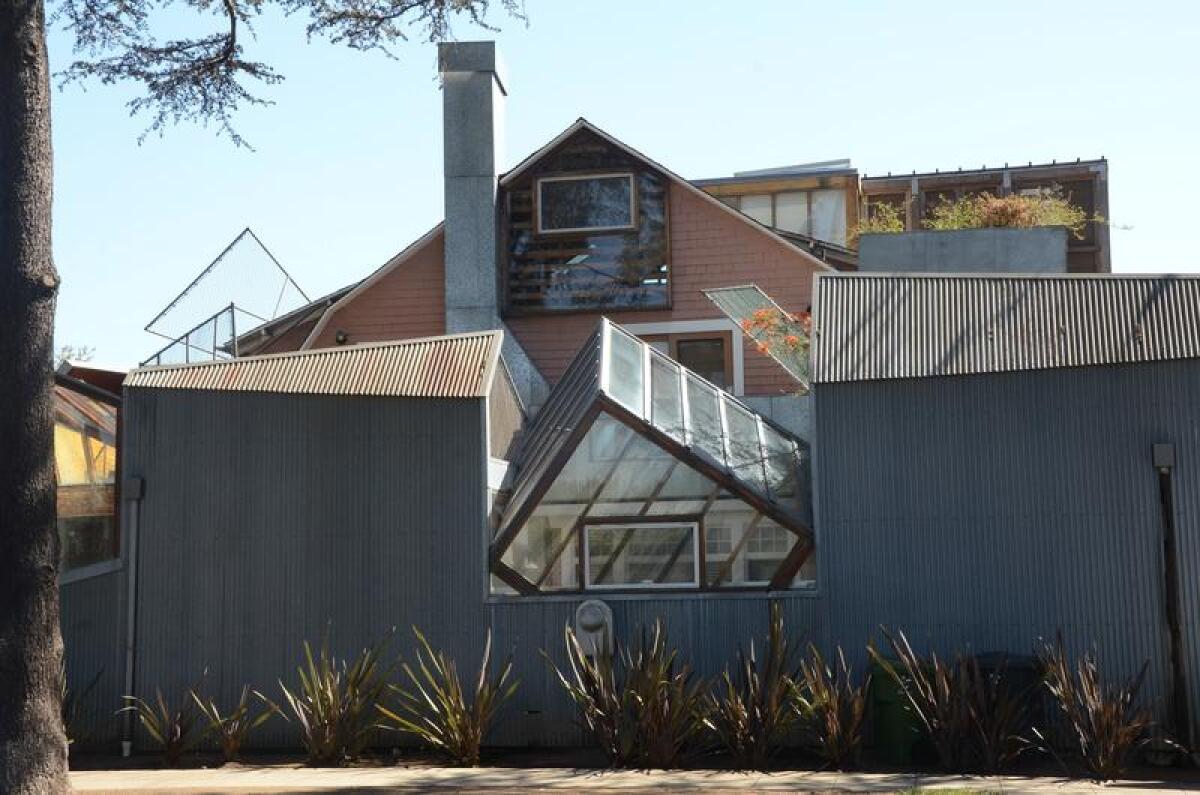
Why: Before Frank Gehry conjured the amazing architecture of Guggenheim Museum Bilbao, Walt Disney Concert Hall and dozens of other high-profile projects, he started experimenting on a standard ‘20s home — his own. Forty years later, that home (which he still owns) is an icon of deconstructivism, and a pilgrimage point for young architects and students of design.
You can’t go closer than the sidewalk — it’s a private home. But you can drive by slowly or park and walk the block.
What: Gehry (whose 89th birthday is Feb. 28, 2018) was still a largely unknown name when he and his wife bought the house at 22nd Street and Washington Avenue in the late 1970s. It was a 1920s Dutch Colonial, two stories on a corner lot, in a middle-class neighborhood that was part single-family homes, part apartment buildings.
Then Gehry went to work. Soon the place had corrugated metal walls, irregular angles, protruding glass cubes, plywood panels, chain-link rectangles — on a block of suburban style and 90-degree angles, it looked like a satellite crash. As the story goes, the neighbors were outraged.
A few decades later, some rough edges have been softened by landscaping and another big renovation in the early 1990s. Zillow thinks just about every house on the block is worth more than $2 million. And Gehry’s name is known around the world. But how long will this Gehry Residence belong to the Gehry family? It’s unclear. The architect has worked for years on a pair of new homes, one in Santa Monica, one in Venice.
Where: 1002 22nd St., Santa Monica, 16 miles west of downtown L.A.
How much: Free (unless you overstay the two-hour parking limit on many of the neighborhood’s streets).
Info: L.A. Conservancy
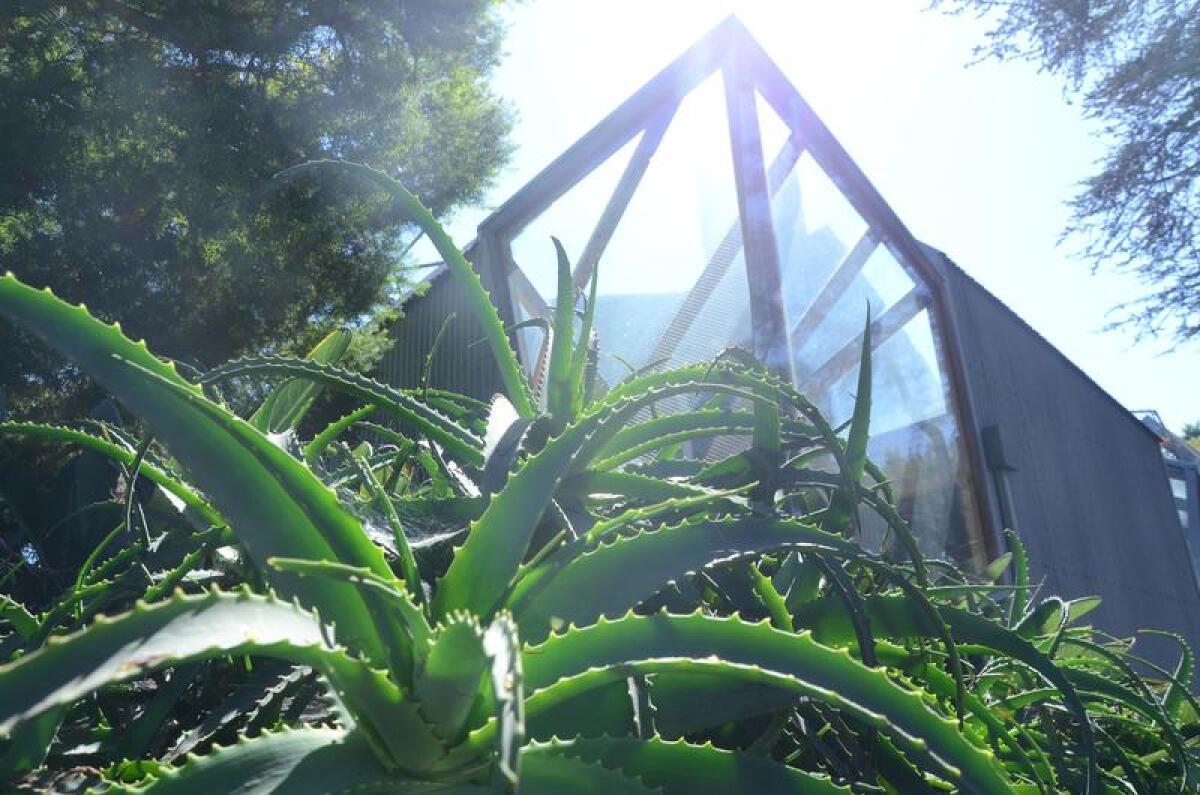
- Share via
Take tea amid wonder and mumbo jumbo in West L.A.’s Museum of Jurassic Technology
Why: Life is full of mysteries, misunderstandings and bald-faced lies. This place too. Its dim rooms, sober tone and perplexing exhibits are designed to mess with your head while reveling in the weird things that happen when we try to explain or collect nature or culture. Confused? Don’t worry. Have a cup of tea upstairs and commune with the doves in the tiny courtyard.
What: This museum is designed to test your credulity and make you gasp. Enjoy the microscopic sculptures, the mice on toast (a cure for bed-wetting?), the trailer-park dioramas, the short films that screen hourly upstairs. Also don’t miss the Soviet space-dog portraits. In awarding museum curator David Wilson one of its “genius” grants in 2001, the MacArthur Foundation called the museum “a provocative commentary on how we organize and archive cultural artifacts,” noting that “fact and fiction are displayed with equal precision and diligence.”
And next door you’ll find a sort of cousin institution — the Center for Land Use Interpretation, which examines human effects on the landscape using keen wit, deadpan tone and extensive photography. CLUI’s current show, unveiled Sept. 22 with seven high-resolution monitors in a single bright room, is “Engaging Scale: The Railroad Landscape as an Analog Macroscope.” It’s about model railroads, real ones and the scenery they inhabit.
(And while you’re investigating offbeat displays, you might also consider also the Velaslavasay Panorama, which is scheduled to reopen in spring 2018 after installation of a new exhibit.)
Where: 9341 Venice Blvd., Culver City, 10 miles west of downtown L.A. (It has a Culver City mailing address, but the museum is actually in the West L.A. neighborhood of Palms.)
How much: Adult admission is $8. For full-time students, unemployed persons and youths age 13-21, it’s $5. The museum is open Thursdays 2 p.m. to 8 p.m., Fridays, Saturdays and Sundays from 12 p.m. to 6 p.m.
Info: Museum of Jurassic Technology
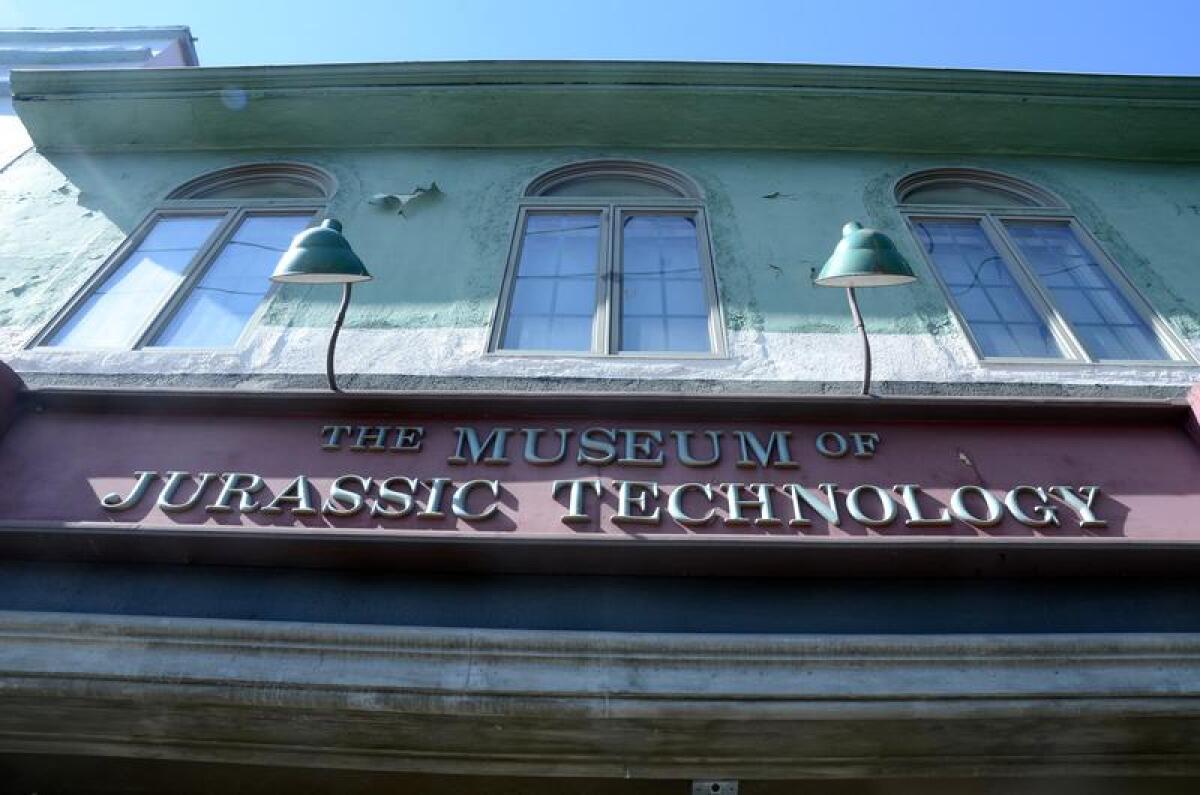
- Share via
Work up a sweat seeing beautiful flowers and plants at San Francisco’s Conservatory of Flowers

Why: There’s a wonderful cognitive dissonance in feeling as though you’re in the tropics and knowing you’re in San Francisco. That’s daily life in Golden Gate Park’s Conservatory of Flowers, where temperatures average 75 to 80 degrees during the day, coupled with a humidity of 70% to 80%. Plus you get a little helping of history with your heat and humidity.
What: Greenhouses once were the playhouses of the rich; this glass-and-wood beauty was supposed to become part of a Santa Clara estate belonging to wealthy businessman James Lick. His death in 1876 ended the idea of a grand greenhouse, and it sat until a group of San Franciscans, including Leland Stanford and Charles Crocker, bought it and donated it to the city. It opened in 1879.
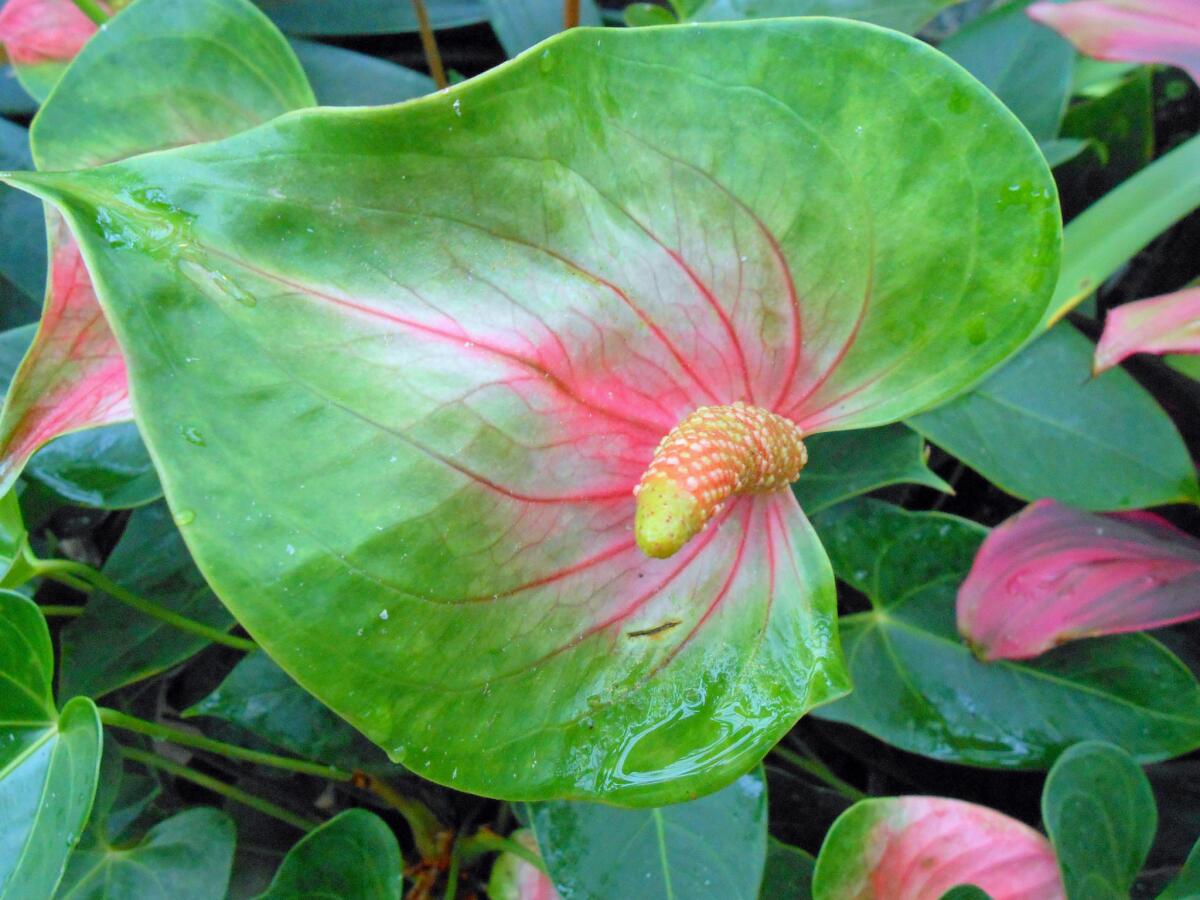
Its life has been no bed of roses. At least one explosion, a fire and a windstorm have damaged it, sometimes closing it for long stretches, although oddly enough, it survived the 1906 earthquake unscathed. Still, in the 1990s, it landed on the World Monuments Fund‘s list of endangered sites. But it was saved, once again, by a fundraising effort.
Today the conservatory is thought to be the largest such structure in the world, and on days when the sun is out, it seems like a gleaming white symbol of tenacity.
Inside, you’ll find the familiar (anthurium, orchids and hibiscus), the exotic (chenille and lipstick plants) and the odd (the Dracula orchid and the corpse flower, which bloomed in June). You can watch a time lapse of the opening of the odiferous corpse flower. Fortunately, you cannot smell it.
The conservatory also has special exhibits (Butterflies and Blooms through Jan. 8) and special events (an Oct. 19 Dracula Orchid Ball — Gala Under Glass) that keep the experience different for repeat visitors.
Where: Golden Gate Park on John F. Kennedy Drive, about 385 miles northwest of downtown Los Angeles
How much: $9 for adults, $6 for seniors 65 and older and youth 12-17, $3 for children 5-11 and free for children 4 and younger. Tickets to the Dracula gala begin at $350. (It’s a fundraiser.)
Info: Conservatory of Flowers
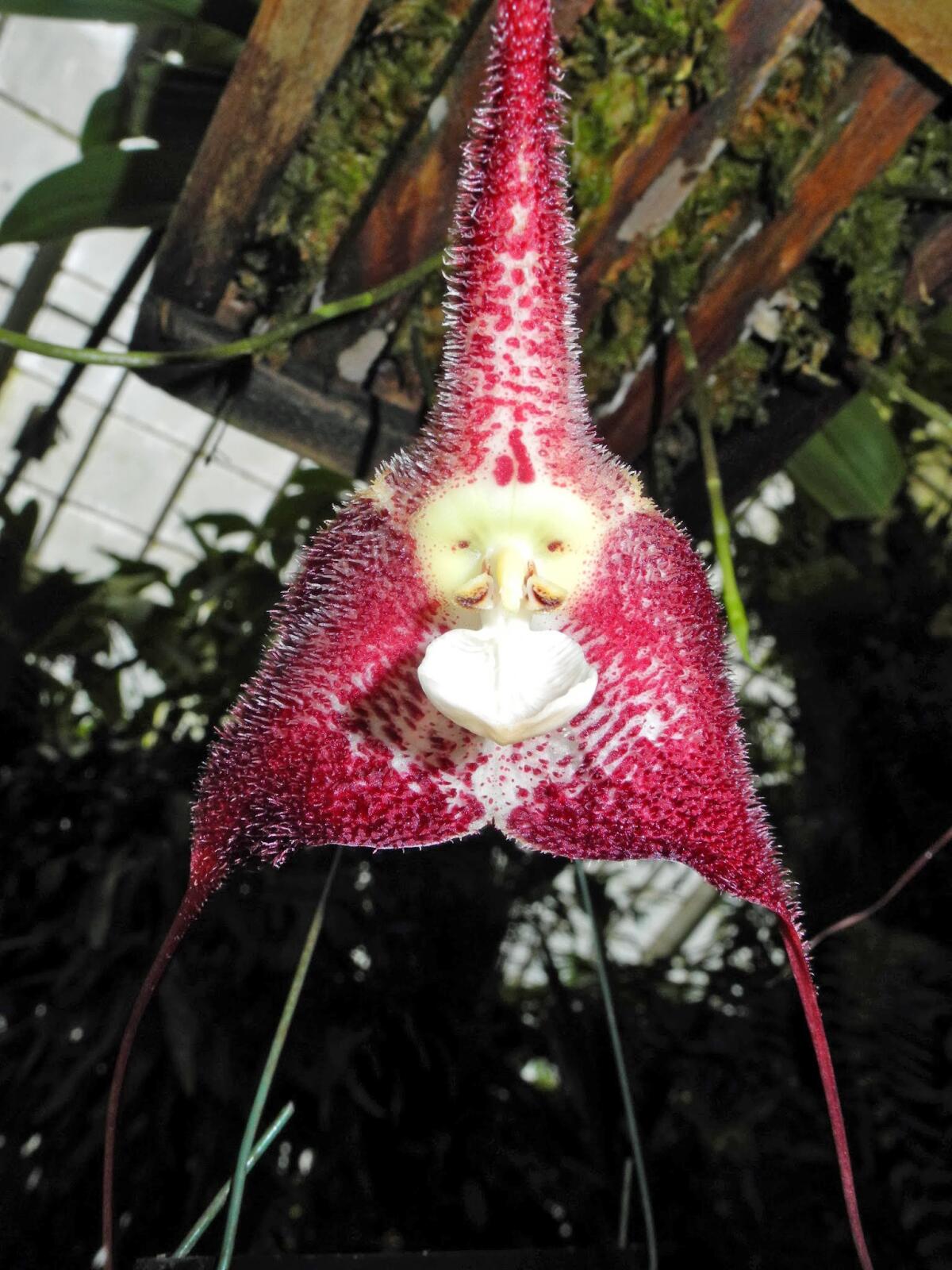
- Share via
Ride the world’s largest collection of roller coasters at Six Flags Magic Mountain in Valencia
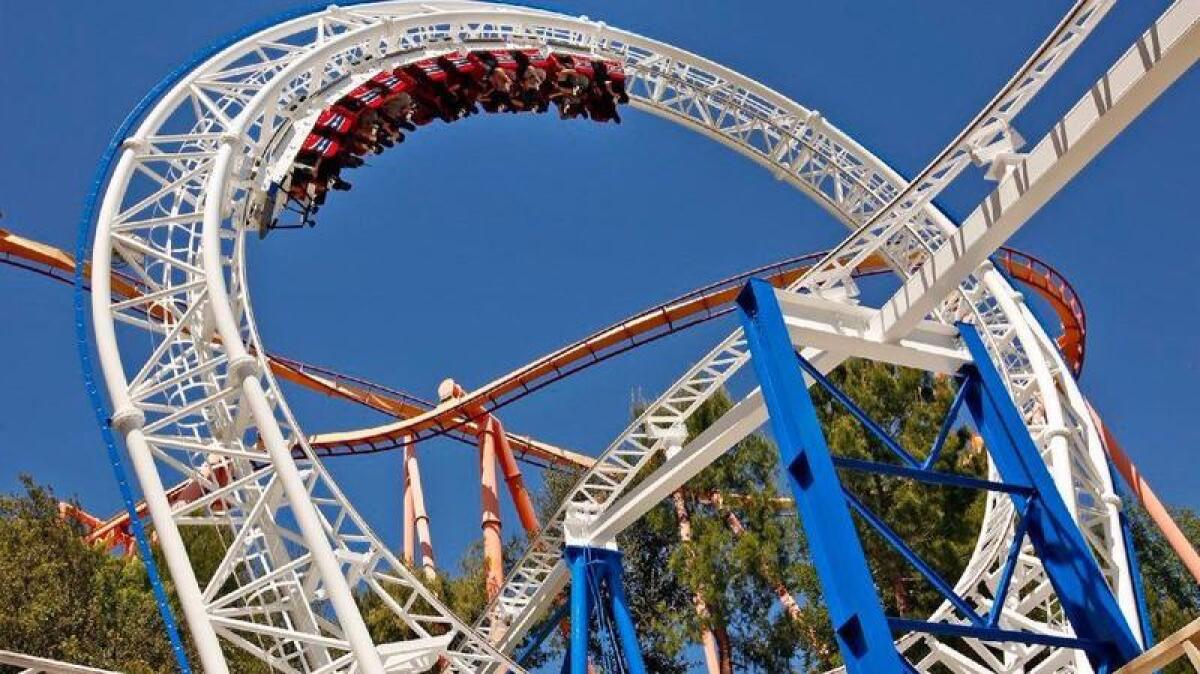
Why: Magic Mountain packs in more screams per hour than all of Southern California’s other theme parks combined.
What: Six Flags Magic Mountain delivers what Disneyland can’t: thrills. It has more coasters than any other amusement park in the world.
The fourth-dimension X2 coaster with rotating seats makes your pulse quicken and palms sweat. Twisted Colossus combines the classic feel of a wooden coaster with the looping thrills of modern steel beasts. Soar like a bird with nothing between you and the ground on the gravity-defying, terrain-hugging Tatsu flying coaster.
This 260-acre amusement park is still home to the world’s first modern vertical looping coaster: Revolution. The ride, opened in 1976 during America’s bicentennial celebration, went on to play starring roles in the films “Rollercoaster” (1977) and “National Lampoon’s Vacation” (1983).
Where: 26101 Magic Mountain Parkway, Valencia, 34.8 miles northwest of downtown L.A.
How much: Daily tickets for adults cost $50.99 online and $84.99 at the park. Annual passes run $269.99 per year. The park is currently running a buy-a-day, get-a-year sale (through Oct. 31).
Info: Six Flags Magic Mountain
- Share via
Surf Southern California, even if you need a lesson
Why: Because it’s an irreproducible thrill to balance a board on a rolling wave. Because it’s an excuse to get in the water. And because surfing underpins so much of California popular culture.
What: Blame the three Hawaiian princes who introduced surfing to California in the 1880s. Or blame the Beach Boys for deciding to sing about it in the early 1960s. Either way, the word got out about this sport, which can be fatal or, in the best of circumstances, not so hard.
I admired it from afar until the other day, when I signed on for a 90-minute, one-on-one lesson at beginner-friendly Mission Beach in San Diego. Instructor Adam Wiegand took me through the basics, launched me into a few waves, then went ashore and hollered instructions at me, the 56-year-old rookie. It wasn’t pretty, but I got up a few times and spent some precious seconds gliding with the tide. This means it’s not that hard.
It does help to start on a day of 1-2-foot waves, using a 10-foot-long foam board — that’s about the size of an aircraft carrier. We did need to be careful of stingrays on the sandy bottom (no stings, thankfully) and we had the happy distraction of a dolphin swim-by.
Where: Classes like this are offered up and down the coast, and the citizen critics of yelp have evaluated more than a dozen in Santa Monica alone. I used Surfari Surf School, 3740 Mission Blvd, San Diego, 116 miles southeast of downtown L.A.
How much: Surfing instruction rates vary widely. At Surfari, I paid $85 for a 90-minute one-on-one session (and an added hour of board and wet suit rental, if I’d had the energy). For a group lesson (three to five people), the rate is $55 per person.
Info: Surfari Surf School
- Share via
Climb the Balboa Park tower that authorities kept closed for 80 years
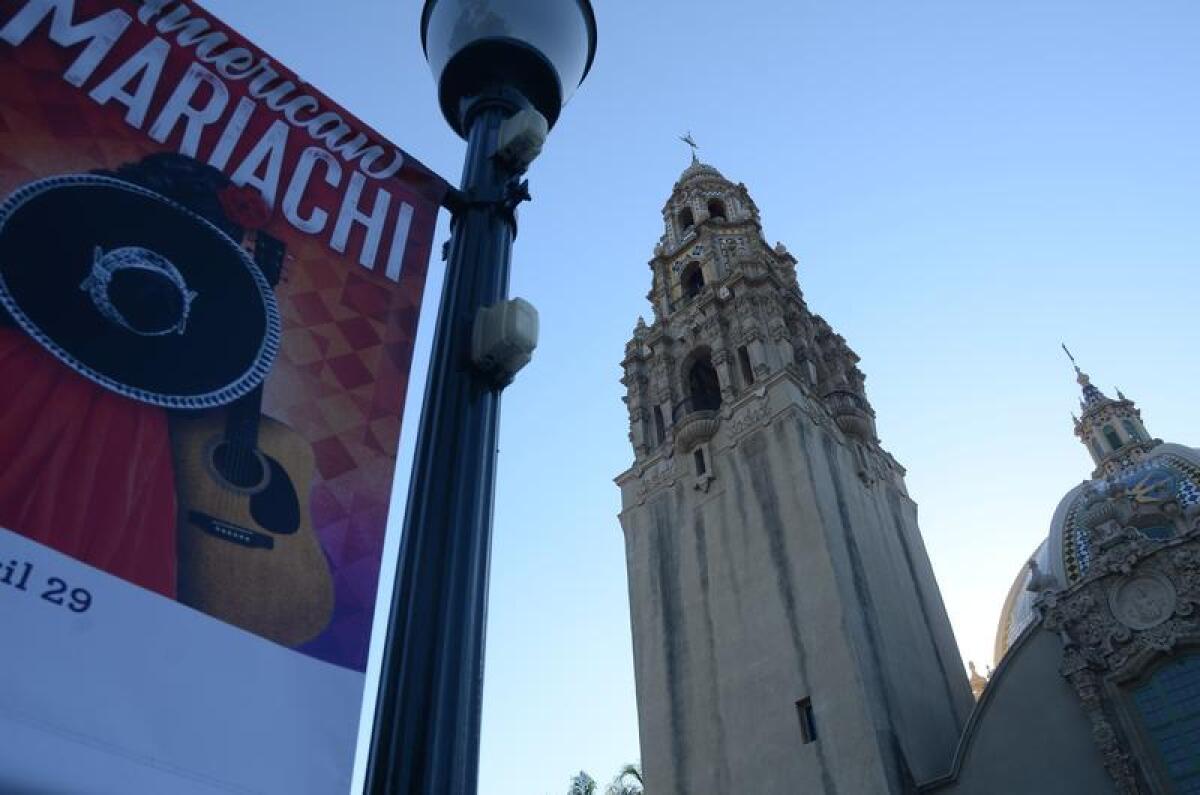
Why: The California Tower, built to conjure Spanish Colonial daydreams for a world expo in 1915, was closed to visitors in 1935. But it reopened in 2015 and as you surmount its 157 steps, you’ll hear how Balboa Park has grown from a temporary fairground into one of the nation’s foremost urban parks. You’ll also get a bird’s-eye view of the signature tiled dome that’s also part of the California Tower.
What: The tower and dome are both part of the Museum of Man, one of 17 cultural organizations in the park. If you sign up to climb the tower, your guide will remind you how the 1,200-acre park began as a venue for the Panama-California Exposition of 1915, San Diego’s underdog effort to compete with San Francisco’s Panama-Pacific International Exposition the same year. San Francisco’s expo was fancier, but when those parties were over, San Diego set aside more acreage, preserved more buildings and may have reaped more long-term benefits.
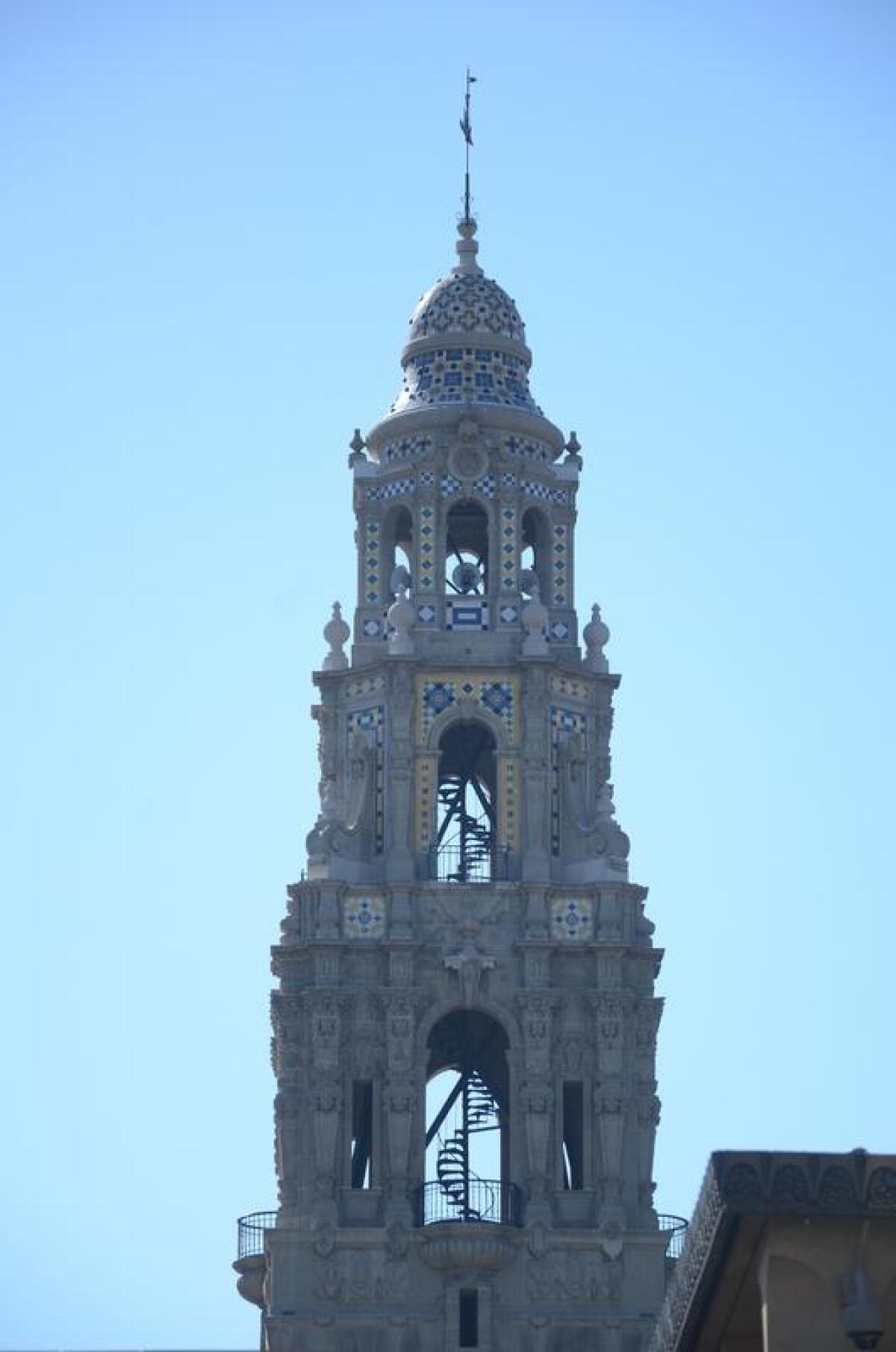
Anyway, the tour lasts about 40 minutes. It’s fun to climb the narrow spiral staircase (and a tad disappointing to learn that the highest levels of the tower are off-limits). The observation deck, about 100 feet above the ground floor, looks out on the redwood lattice of the Botanical Building; the not-so-native trees shading the not-so-native animals of the zoo; the curlicued Spanish Colonial Revival facades of the Prado; the roofs of the Old Globe; and the Cabrillo Bridge, also built for the long-ago expo.
Within a short walk of the tower, you’ll find the Fleet Science Center, the Museum of Photographic Arts, the San Diego Natural History Museum, the San Diego History Center, the San Diego Museum of Art, the Japanese Friendship Garden and more. In fact, it you haven’t given Balboa Park at least half a day, you’ve probably fouled up your San Diego vacation.
Where: 1350 El Prado, San Diego, 123 miles southeast of downtown L.A.
How much: Tower tour tickets (which also include museum admission) cost $22.50 per adult, $18 for students over 12, $10 for students and children age 6-12. Open to children 6 and older. (Frugal family option: Flop down on the grass by the park lily pond and listen to the musicians that play there for tips.)
Info: Museum of Man, Balboa Park
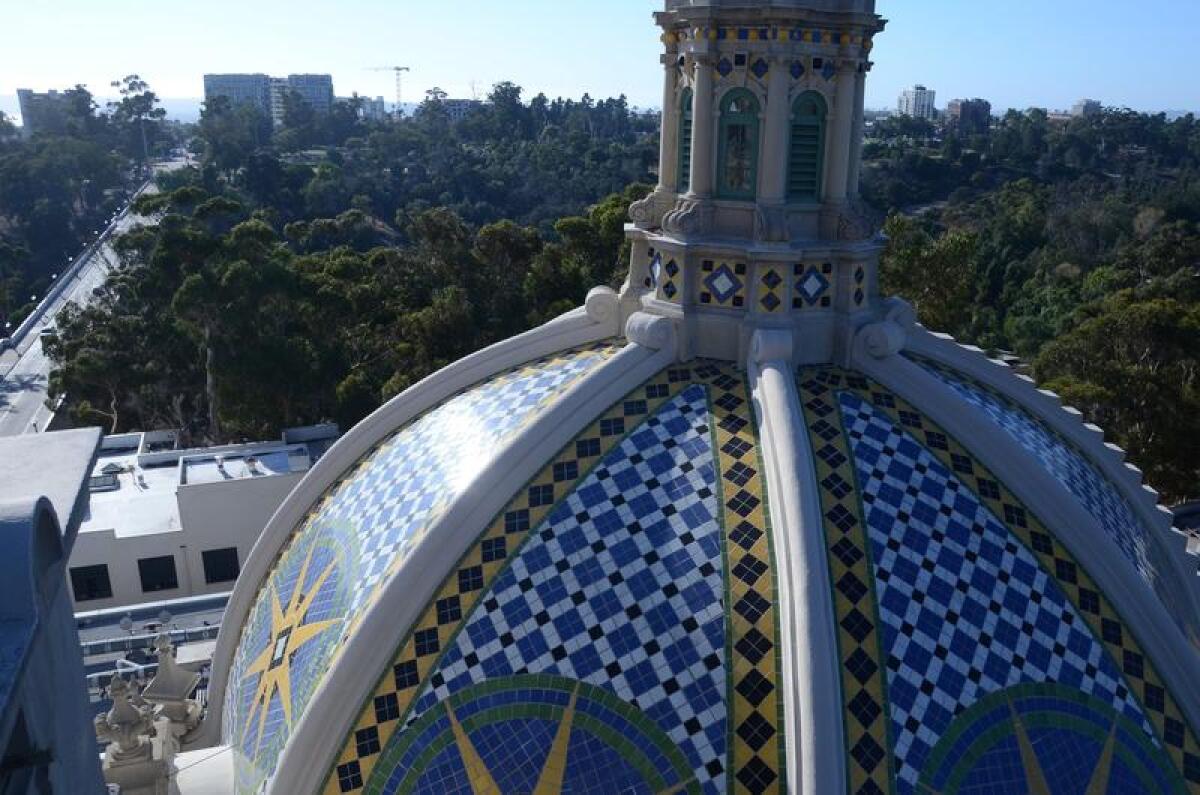
- Share via
Watch gliders fly and architecture soar on a La Jolla clifftop
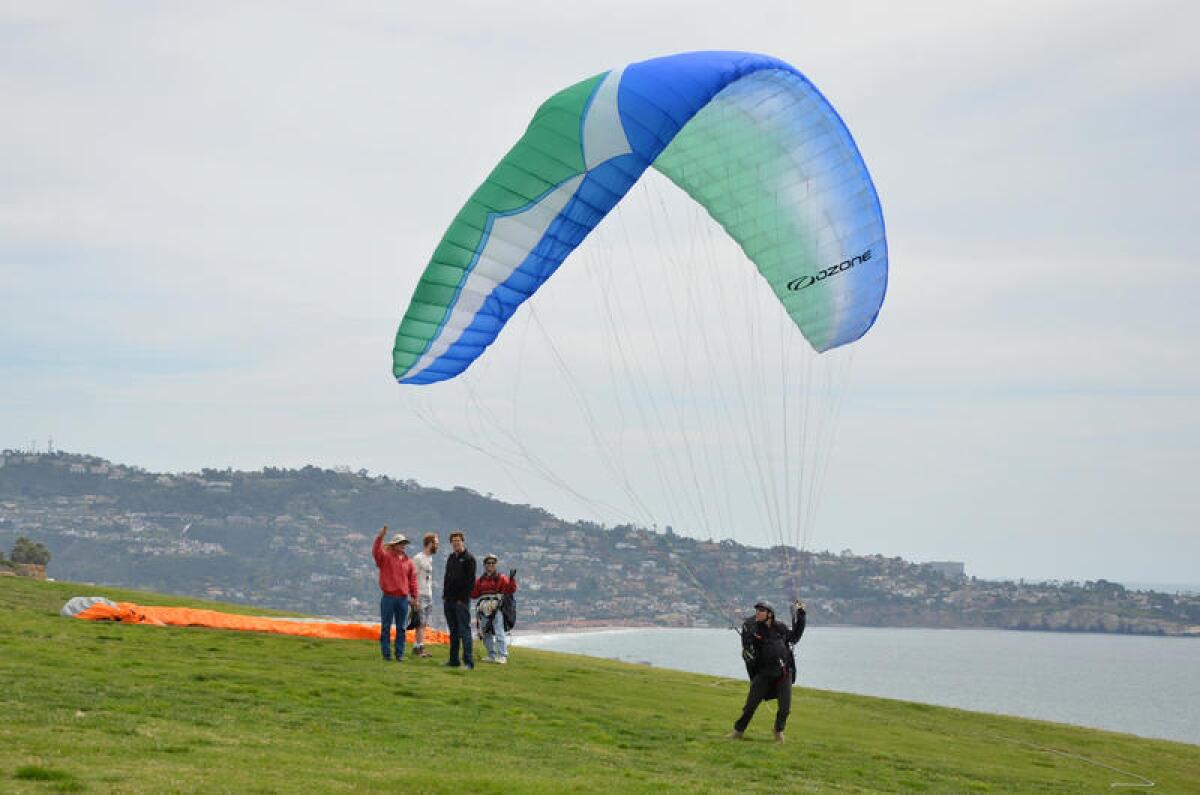
Why: This is the place to see grown men and women jump off a perfectly good cliff, then rise on the updraft.
What: The Torrey Pines Gliderport sits between the UCSD campus and the sea, sending skyward a steady stream of paraglider pilots and the occasional model airplane. And just down the road you find another set of planes -- the stark, symmetrical, concrete surfaces of the Salk Institute for Biological Studies, designed by Louis I. Kahn in 1965 and hailed in a 2017 survey of architects as one of California’s 25 must-see buildings. (There are weekday tours.)
Of course the Pacific view is great from around here. (That’s Black’s Beach below.) Grab lunch at the Cliffhanger Cafe, settle in at a picnic table and watch the action.
By the way, the flight history here is thicker than you’d think. Sail planes were taking off here as early as the 1920s. In 1930, Charles Lindbergh himself glided on these winds. Hang gliders came along in the 1970s, then paragliders. Tandem paraglider flights are big these days because they allow a rookie to go aloft with an instructor.
Where: The glider port, cafe and their dirt parking lot are about 500 yards west of the Salk Institute at the end of Torrey Pines Scenic Drive. That’s 108 miles southeast of downtown L.A.
How much: Watching the take-offs and landings is free. Most soups, salads and sandwiches at the Cliffhanger Cafe run $7-$9.
Info: Torrey Pines Glider Port, Salk Institute
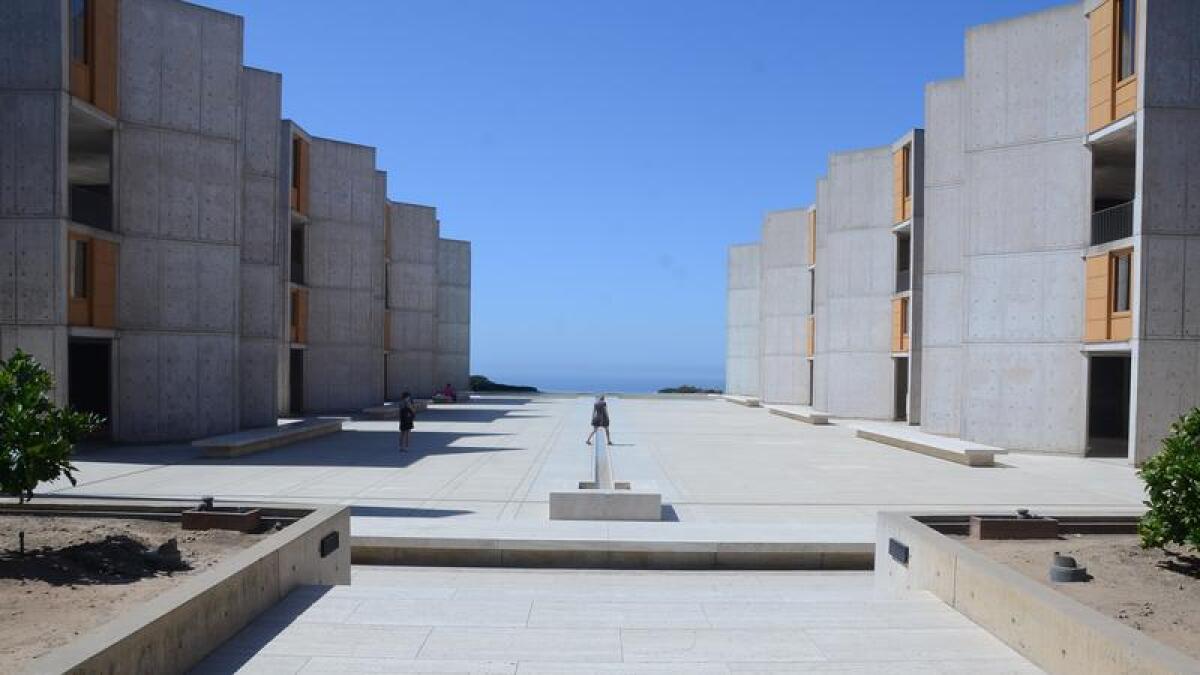
- Share via
Stroll the strange beach at the Mexican border

Why: Because the California shoreline where the U.S. and Mexico meet is like no place else. A tall fence runs into the ocean and shore birds perch on it. A second fence runs parallel. Border Patrol agents circulate in SUVs and on ATVs, making sure nobody climbs over or swims around. Antennas reach skyward. Cellphones lose bearings. Through the fence, you might glimpse Mexican families romping on the beach.
What: Border Field State Park’s 418 acres include the beach, views of a few rocky offshore islands and Monument Mesa, which has shaded picnic tables and a broad view of the wetlands, scrub and several horse stables on the U.S. side. The Mexican side features a bull ring, a lighthouse and several hillside developments. Authorities don’t recommend swimming on the U.S. side (no lifeguard; low water quality after rains). But you can ride horses, which is rare on California beaches.
In dry weather between 9:30 a.m. and 6 p.m., the flood-prone road into the park is usually open, allowing you to drive almost all the way to the beach. When the road’s gate is closed, it’s about a 1.5-mile walk to the beach and a few yards farther to the mesa, which includes Friendship Park.
What’s Friendship Park? It might be this border’s strangest feature of all: an enclosed segment of fence where Mexicans and Americans can meet and converse (no hand-offs, no filming) through openings in the metal barrier, as a U.S. Border Patrol agent looks on. The area is open 10 a.m to 2 p.m. on Saturdays and Sundays.
If you want to drive into Mexico via San Ysidro, stay on I-5, bring a passport and buy Mexican insurance first. Or consider taking the San Diego Trolley’s Blue Line, which runs from downtown San Diego to San Ysidro, the busiest border crossing in the Western Hemisphere. Then you can cross and return on foot (which is usually faster than driving). Expect a lot of cellphone shops, money-changers and vendors of Mexican insurance.The beach is prettier.
Where: 1500 Monument Rd., San Diego, 16 miles south of downtown San Diego, 140 miles southeast of downtown L.A.
How much: If you drive into the state park, the cost is $5 per car. The San Diego Trolley fare from downtown San Diego to San Ysidro is $2.50 each way.
Info: Border Field State Park, Friendship Park
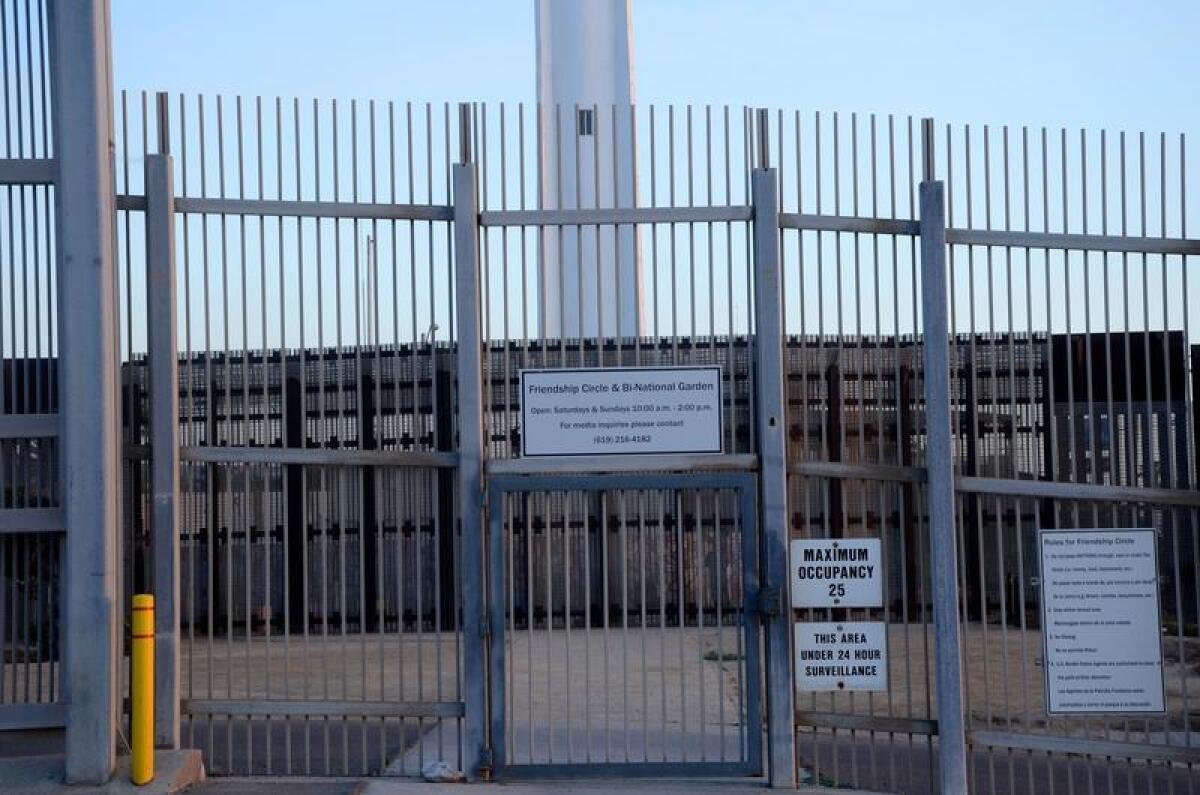
- Share via
Gape at the light show on San Francisco’s Bay Bridge, which now outshines the Golden Gate after dark
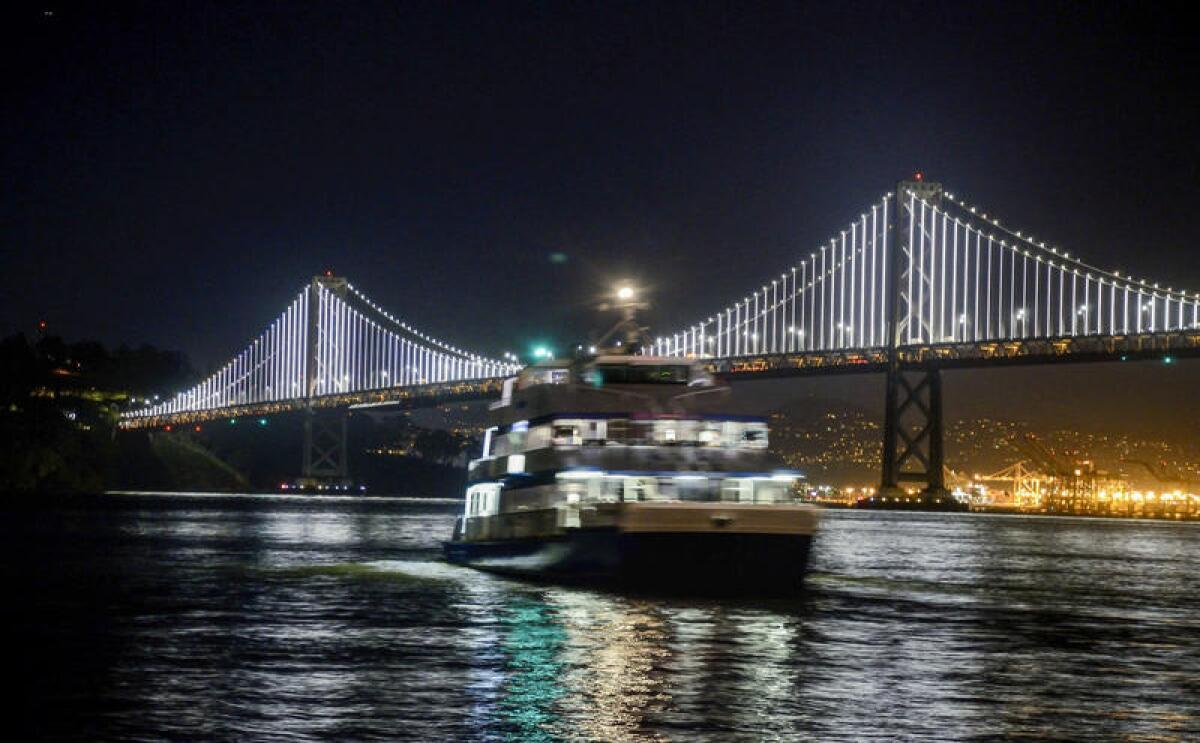
Why: After eight decades as the unsung older sibling to the Golden Gate, San Francisco’s Bay Bridge stands every night in a spotlight of its own. Some 25,000 of them, in fact. Admire it after dark, from land or sea.
What: The Bay Bridge, opened in 1936 and largely renewed after years of still-ongoing seismic retrofitting and replacements, now offers LED light displays nightly. Artist Leo Villareal, who conceived the twinkling spectacle, calls it The Bay Lights. The work was first displayed from 2013 to 2015, then returned as a permanent feature in January 2016. About 25,000 programmed white lights are involved — but you can’t see them from the bridge itself.
Instead, you can see them from across the water — perhaps the Ferry Building, or almost anywhere along the Embarcadero (including the long boardwalk of Pier 7). Or you could admire them from aboard a ferry.
You can ride from the Ferry Building to Oakland’s Jack London Square (via Alameda) in 30 to 35 minutes
As you watch the lights dance on the vertical cables toward the west end of the bridge, remember that the Bay Bridge is really more a sequence of bridges, connecting San Francisco to Oakland by way of Yerba Buena Island, with about a quarter-million cars crossing daily. Better yet, remember that the beloved 19th century San Francisco eccentric Emperor Norton called for just such a bridge back in 1872. Some people want to name the span for him. (Its formal name now is the San Francisco-Oakland Bay Bridge.)
Where: The Bay Bridge, which runs about 4.5 miles between San Francisco and Oakland, is 412 miles northeast of downtown L.A.
How much: It’s free to look at the bridge, of course. To look from an Oakland-San Francisco ferry is a $6.80 fare per adult each way.
Info: San Francisco Travel
- Share via
Swim and picnic near the arch at Treasure Island Beach in Laguna
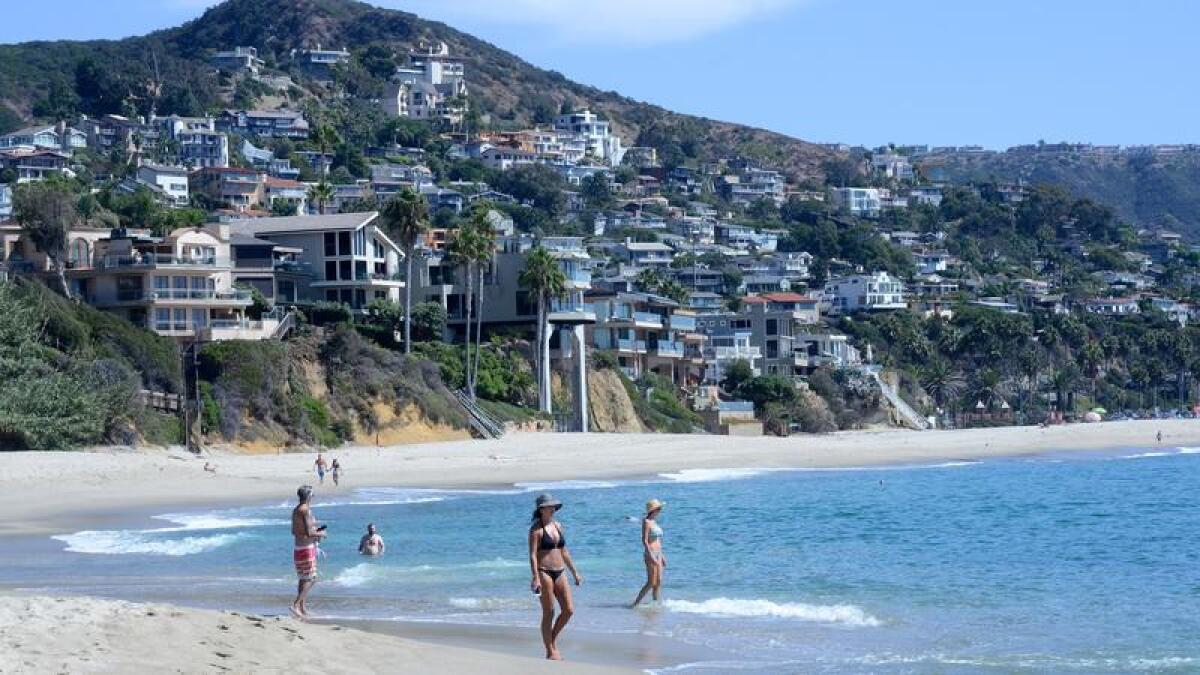
Why: This handsome beach, which neighbors the Montage Resort, includes sandstone cliffs and a prime parking area that fills up fast.
What: Treasure Island isn’t an island. But it is a beach and city park in Laguna Beach. It’s sometimes overlooked because it wraps around the exclusive Montage resort (most rooms cost $800 a night or more). But Treasure Island has a shaded parking structure (whose roughly 30 spaces fill up early ever day), a pleasant bluff-top path alongside the resort’s immaculate landscaping, public benches, picnic spots with 180-degree ocean views, tide pools and white-sand shores that include a dramatic sandstone arch.
About the name: In the 1930s, this beach was used as shooting location for a movie version of Robert Louis Stevenson’s novel “Treasure Island.” Later, Lucille Ball and Desi Arnaz used the spot in their 1954 vacation road-trip movie, “The Long, Long Trailer.” The Montage site once held a trailer park.
The last time I was there, on a weekday in late September, I scored one of those coveted parking spots. We picnicked on a bench atop the bluff, clowned around under the arch, then spotted a seal (or maybe it was a sea lion) in the shallows by the rocks. You won’t find a tidier beach or bluff top. Look north and you’ll spot Victoria Beach and the eccentric 1920s “pirate tower” that rises from the shoreline there. (Be warned, however, that PCH is always busy and parking is always in short supply in Laguna Beach. Street parking is probably your best bet.)
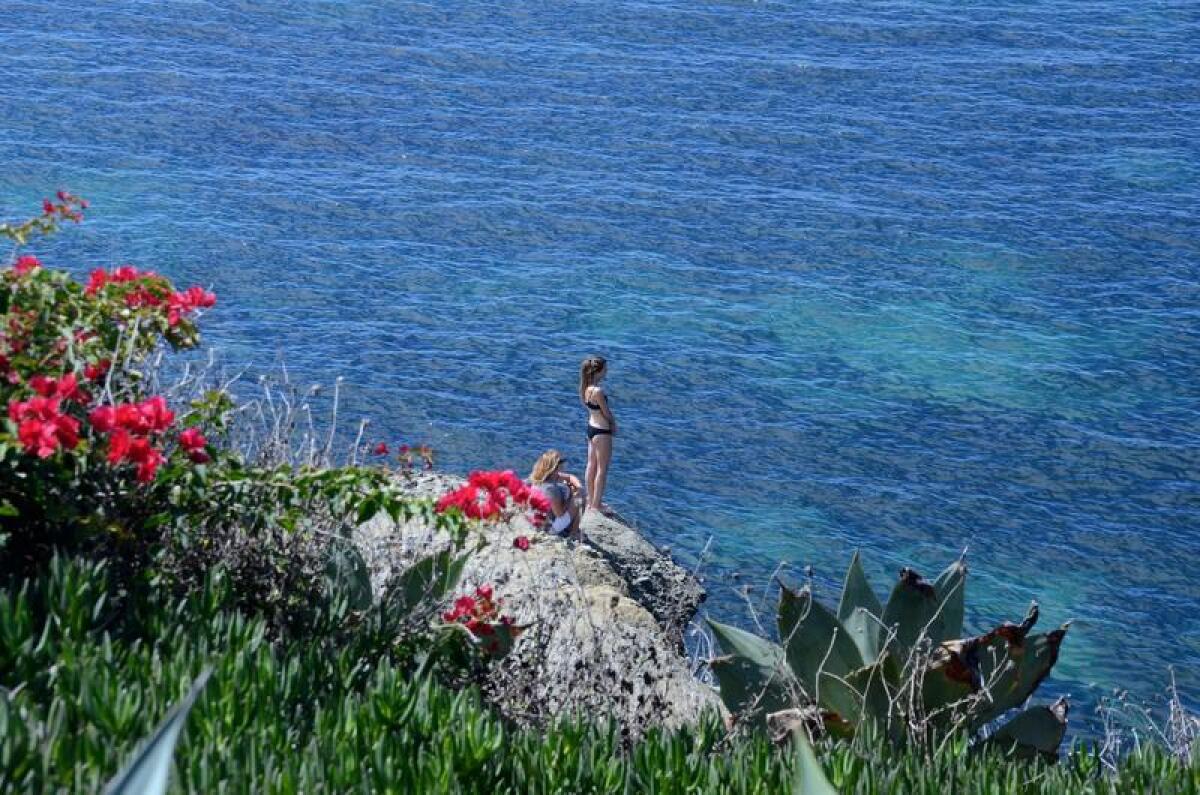
If you want to be sure your beach day includes a marine mammal, stop off at the Pacific Marine Mammal Center, 5 miles north of Treasure Island Park on Laguna Canyon Road. Workers and docents there help rehabilitate seals, sea lions, elephant seals and other critters in several little pools. The visibility and photo opportunities are limited because of the chain-link cages around the outdoor pools but it’s fun to watch feeding, and your voluntary contribution might feed the next malnourished seal to wash up on Laguna shores. There’s no charge to visit.
Where: Pacific Coast Highway and Wesley Drive, Laguna Beach, 52 miles southeast of downtown L.A.
How much: Parking at Treasure Island Park is $4.50 for three hours.
Info: Visit Laguna Beach
- Share via
Goof off where Navy recruits once sweated at San Diego’s Liberty Station
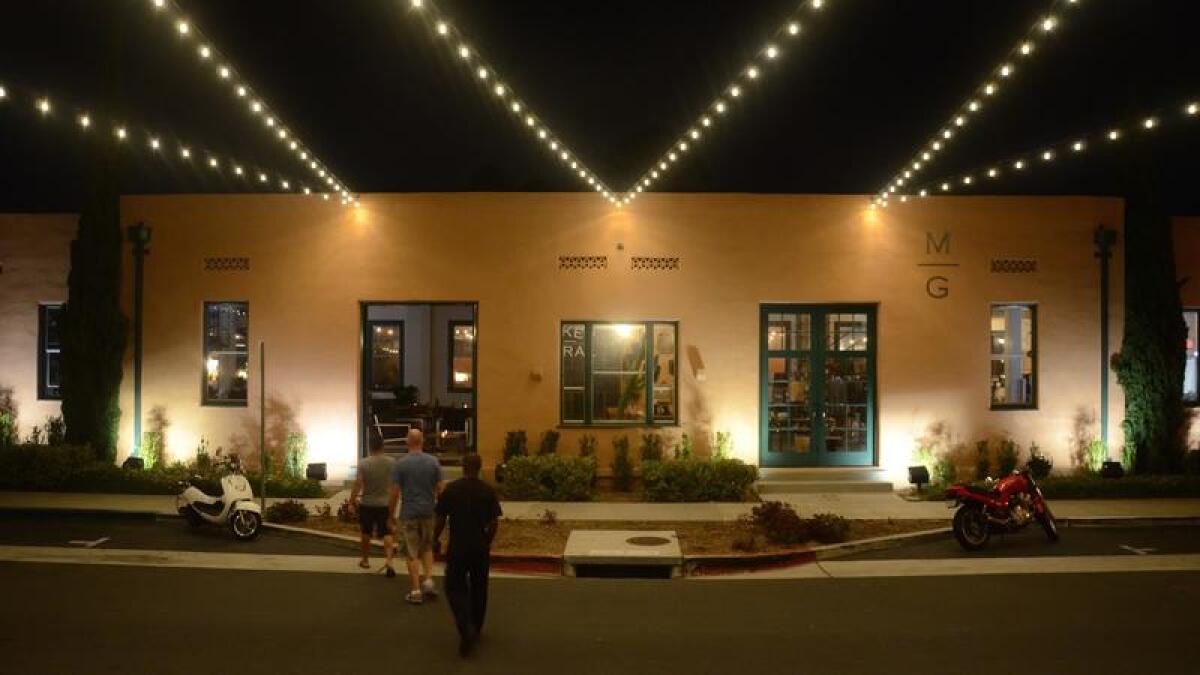
Why: Boot camp becomes a playground. What’s not to like?
What: Built as a Navy training center in the 1920s, shut down in 1997 and converted to civilian uses, Liberty Station’s stately, sprawling Spanish Colonial Revival grounds now house dozens of restaurants, shops and many sports and arts groups, with acres of lawn to boot. While Old Town and Balboa Park grab tourists in vast numbers, Liberty Station draws more locals. (It’s got grocery and hardware stores.) And it underlines the Navy’s strong role in the local history and economy. The compound’s Public Market is a modest food hall, neighbored by the immodestly large indoor-outdoor space of Stone Brewing World Bistro & Gardens, which has taken over the old mess hall.
If you’d rather consume culture than ale, IPA or Imperial Stout, the complex’s Arts District houses dozens of art and dance studios, a few galleries and minor museums, and sundry special events, including free outdoor movies on summer Saturday nights. The complex also includes a Courtyard by Marriott, a Homewood Suites by Hilton and the nine-hole Sail Ho golf course, also known as the Loma Club.
Where: Liberty Public Market, 2820 Historic Decatur Road,
San Diego, a mile west of Lindbergh Field, three miles west of downtown San Diego, 125 miles southeast of downtown L.A.
How much: Mole-braised beef at Stone Brewing, $26. Bowl of chili at the Corvette Diner, $6.50. Nine holes of golf at the Loma Club on a weekend: $16 per adult nonmember.
Info: Liberty Station
- Share via
Pay Pebble Beach. Then play Pebble Beach.

Why: There is no publicly accessible golf course in the country with the history, spectacular coastal vistas, memorable holes and overall experience of Pebble Beach Golf Links.
What: Pebble Beach will host the U.S. Open championship for the sixth time in 2019 and is an annual stop on the PGA Tour for a reason: It’s a course of almost unimaginable beauty and variety. As magnificent as it appears on television, it’s beyond that in person. Noted golf course architect Tom Doak wrote in “The Confidential Guide to Golf Courses,” considered by many the bible of critiques of the world’s courses: “Your first time around, it’s probably as thrilling a course to play as any in the world.” No argument here. (The neighboring courses aren’t bad, either.)
The only catch is that to be assured of a tee time, you need to book at least two nights at one of three Pebble Beach resorts. You can also show up first thing and put your name on a stand-by list, or you can try to make a tee time 24 hours in advance, but both those options are dicey, particularly during the busy season from April through November.
Where: 1700 17-Mile Drive, Pebble Beach, 5 miles southwest of Monterey, 325 miles northwest of downtown L.A.
How much: $495 to $525, depending on time of year. Caddies, highly recommended, will run about an additional $150. As for rooms at the resorts, the Lodge at Pebble Beach starts at $840. The Inn at Spanish Bay, $720. Fairway One at the Lodge, $915. Casa Palmero, $1,000.
Info: Pebble Beach Golf Links
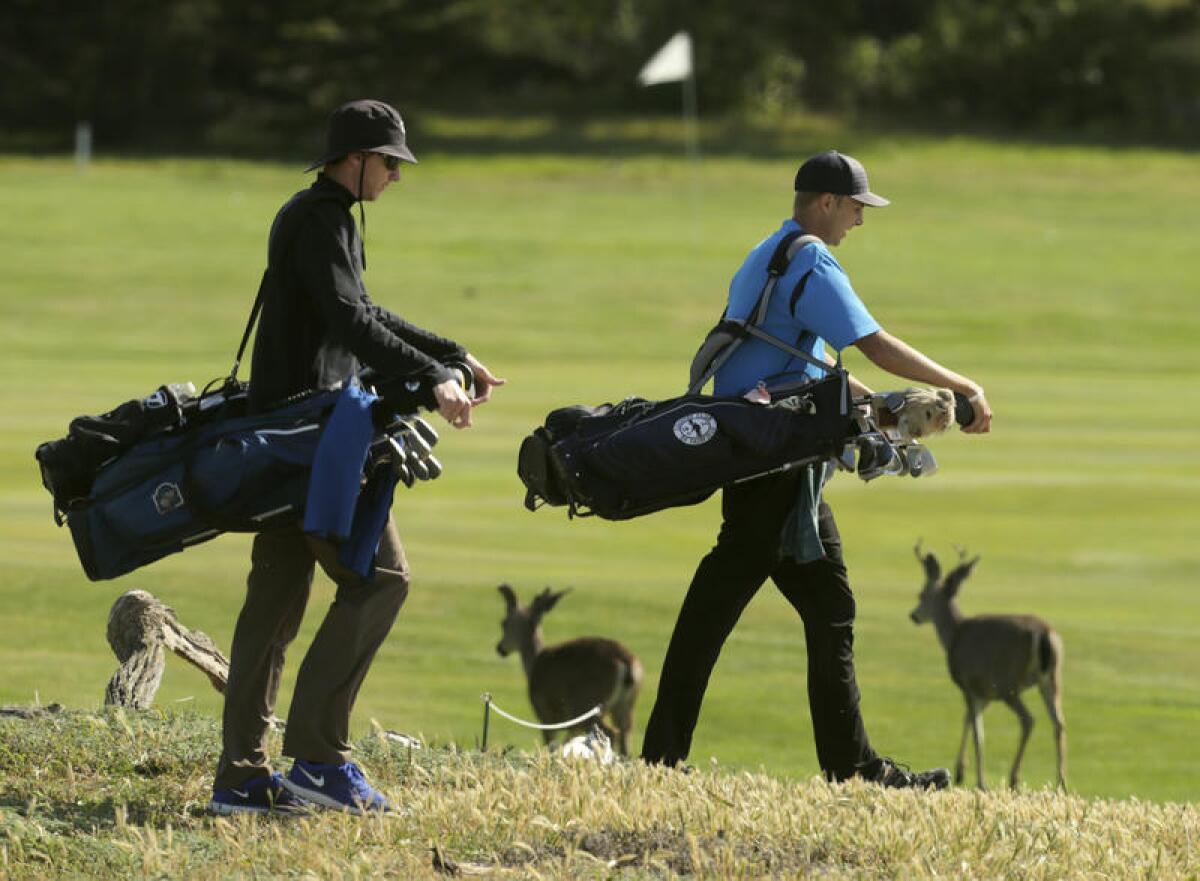
- Share via
Disappear into downtown L.A.’s Last Bookstore

Why: This bookseller has taken a dead bank building on an iffy downtown block and turned it into a bold retreat for readers and bohemians.
What: The Last Bookstore opened elsewhere downtown in 2005, as booksellers were faltering across the land. And then-owner Josh Spencer defied conventional wisdom a second time by moving his business to this far larger space in 2011. It beckons readers with a ground floor full of new and used books, including graphic novels and an annex for art and rare books.
The store also buys, sells and trades used vinyl, CDs and DVDs. The 25-foot white columns, circa 1915, suggest you may be sifting through the ruins of a lost civilization. The suspended artworks hint at acts of magic in progress. The stage gets used often for readings and live music.
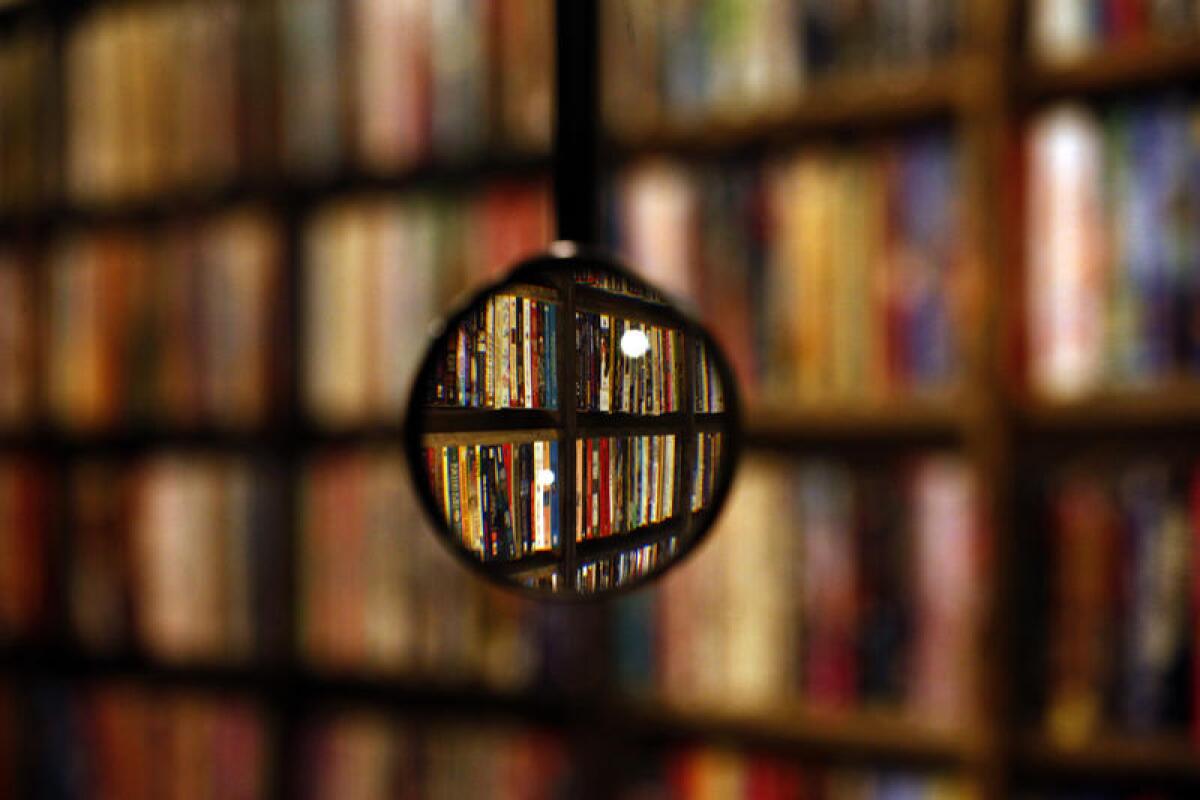
And then there’s the upstairs, including the Horror Vault and the Labyrinth. In that warren of irregularly shaped rooms, used books are arranged by subject, but also arrayed sculpturally. There’s a tunnel, and a circle you can peek through. Around the periphery, studio spaces harbor artists and artisans. You step inside, and before you know it, an hour is gone.
That said, this isn’t actually the last bookstore downtown — at least not yet. Caravan Book Store, small but stalwart for decades, carries on peddling old and rare books about six blocks northwest at 550 Grand Ave., next door to the Millennium Biltmore Hotel.
Where: 453 S. Spring St. in downtown L.A.
How much: Most used paperbacks are $5-$9.
Info: The Last Bookstore
